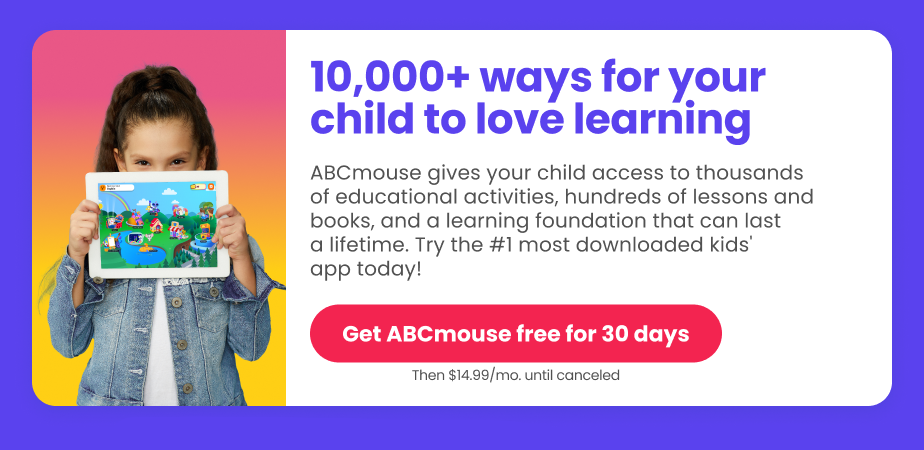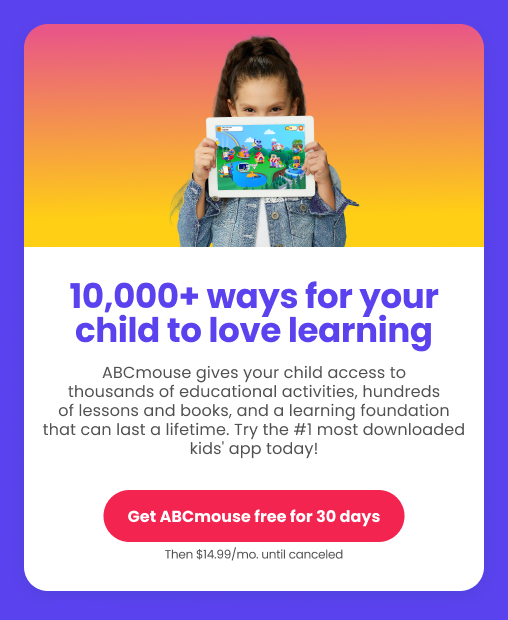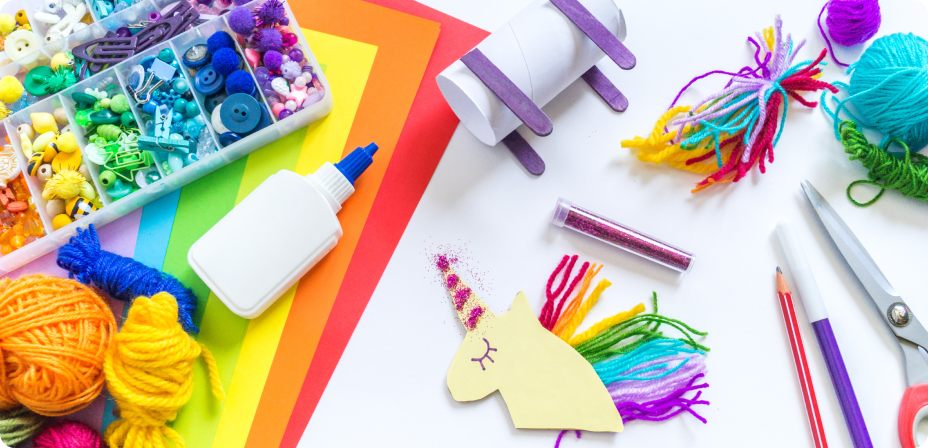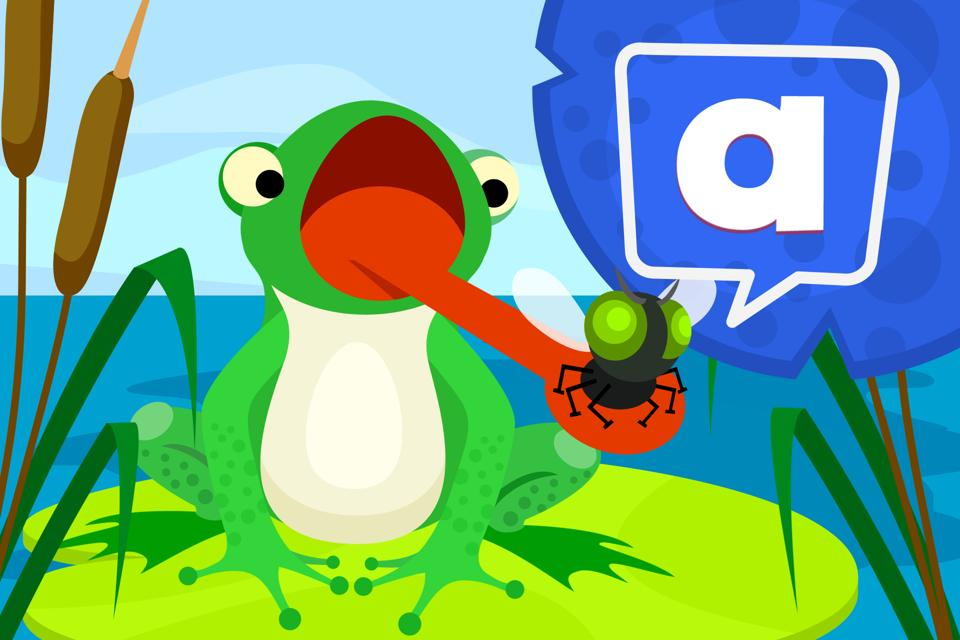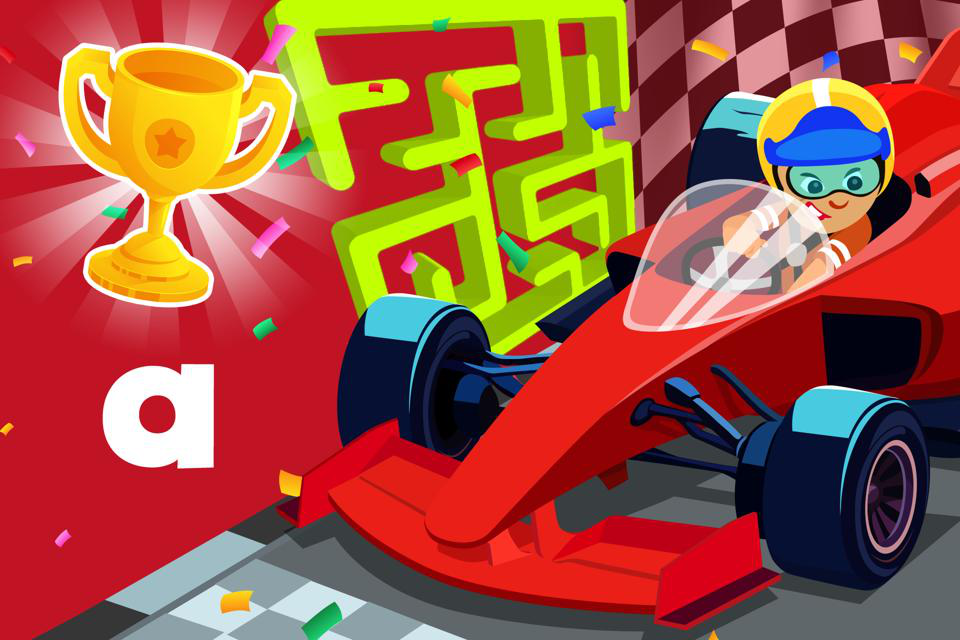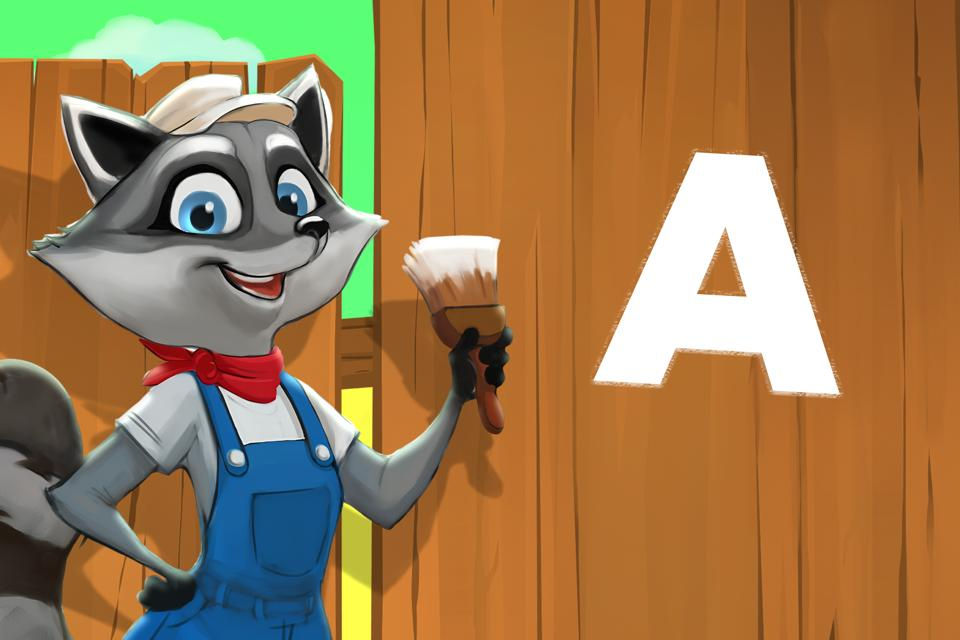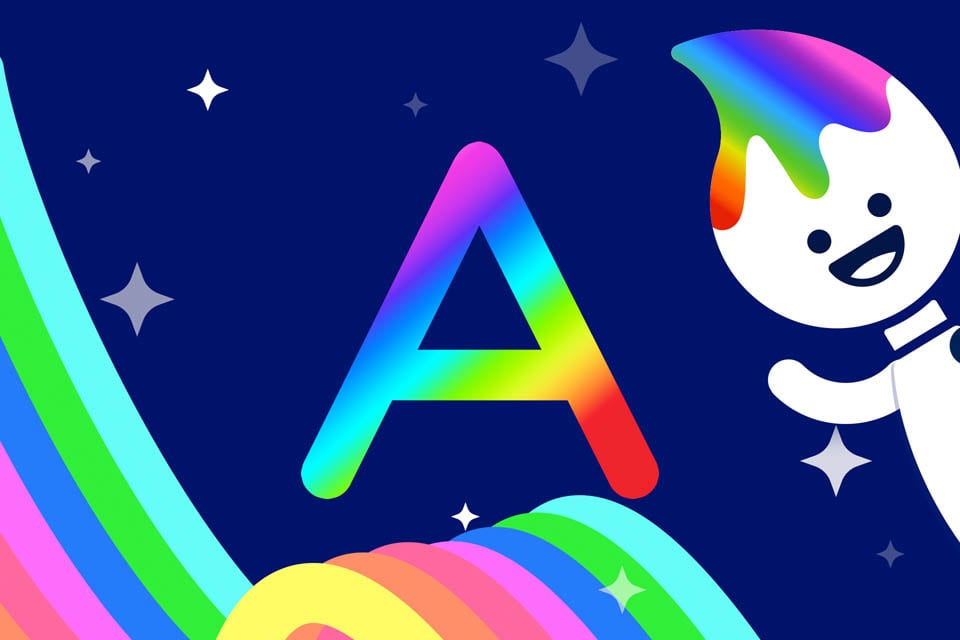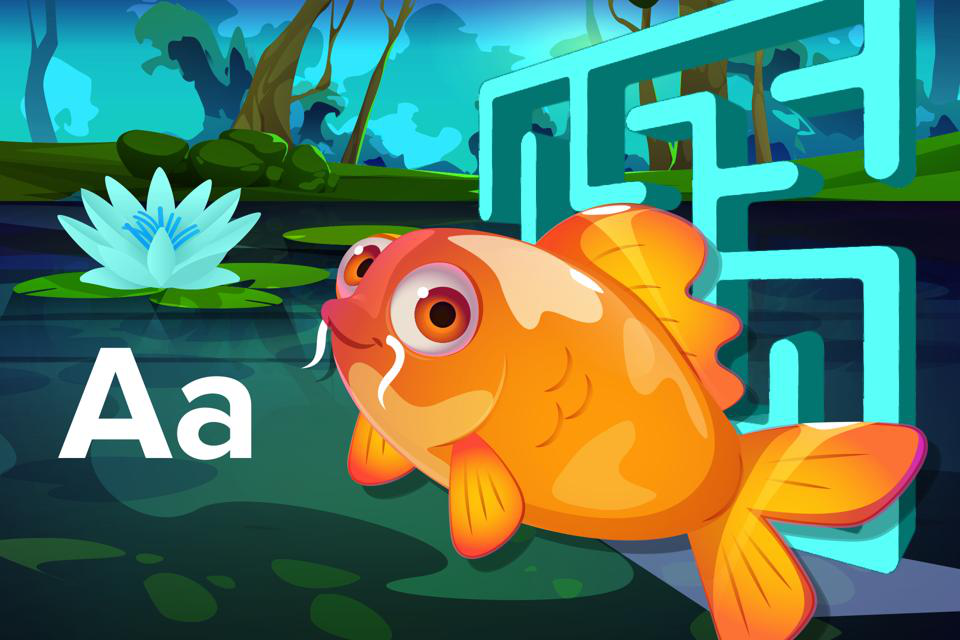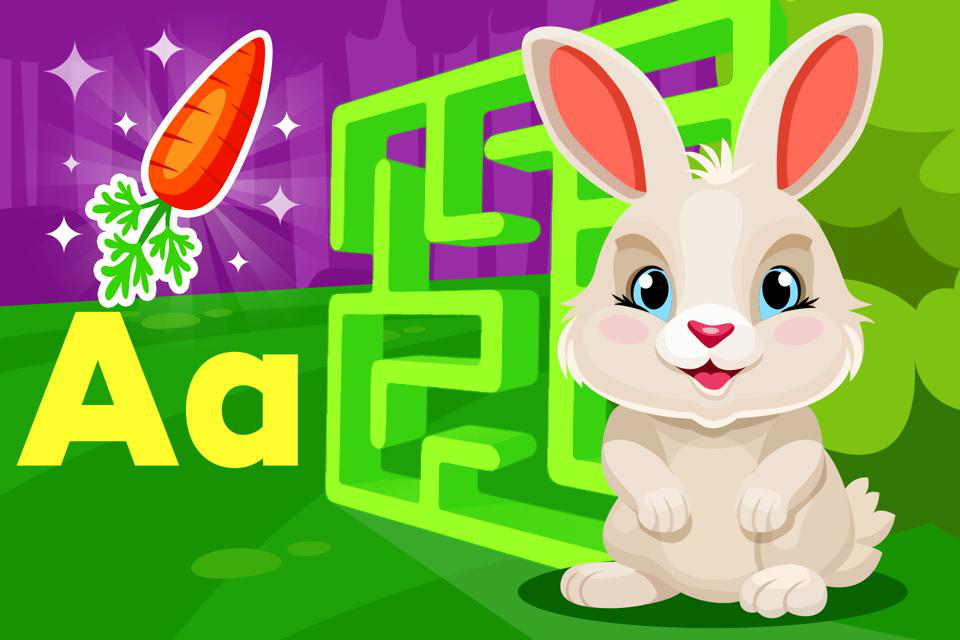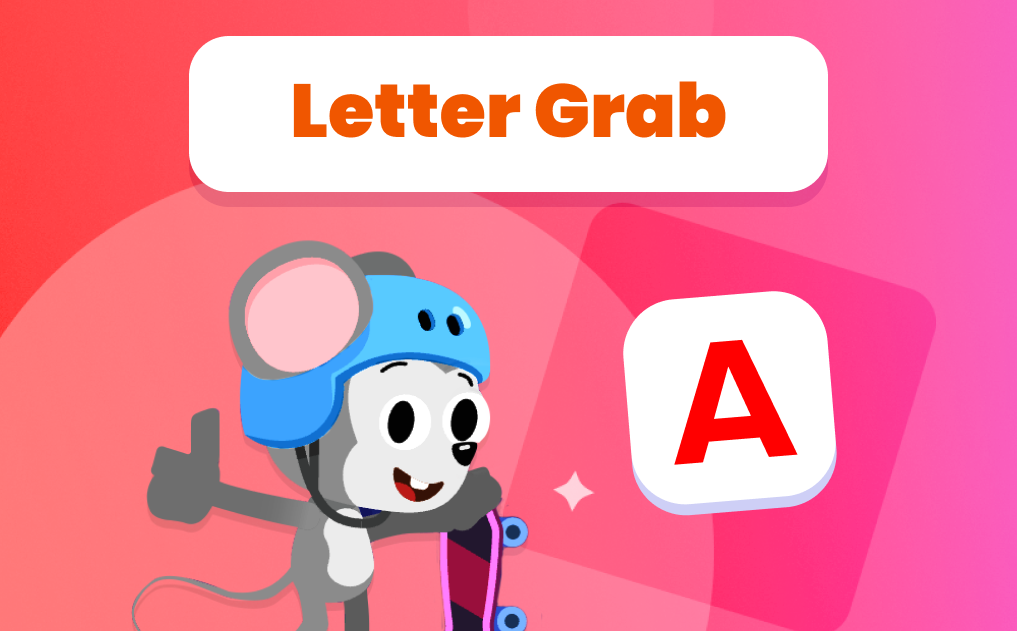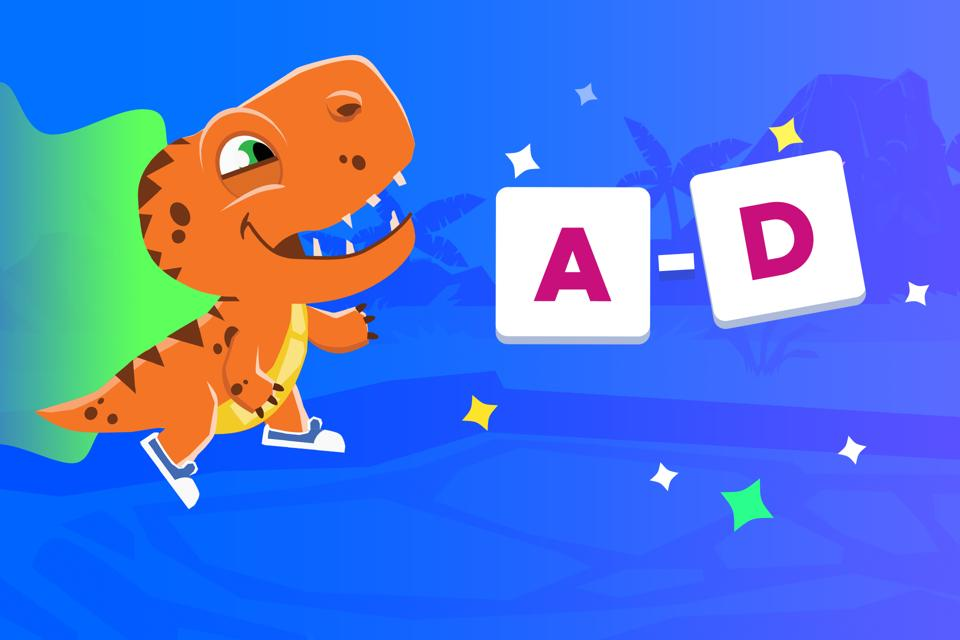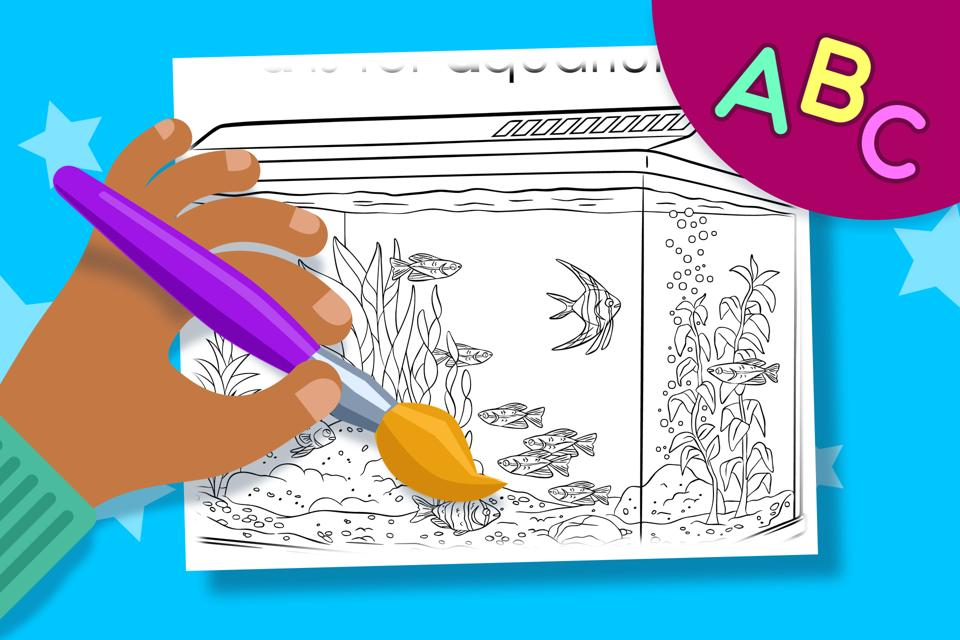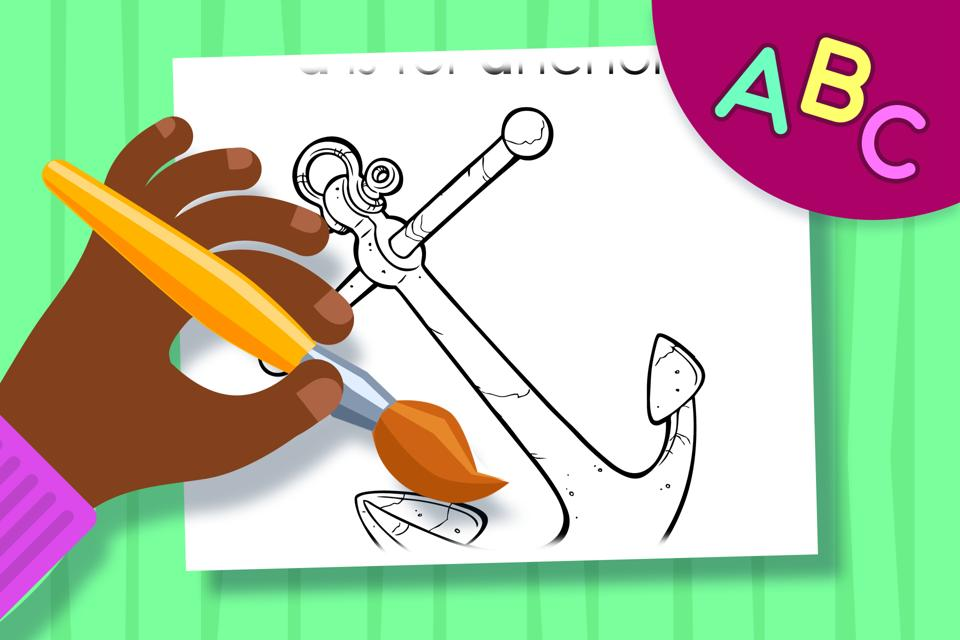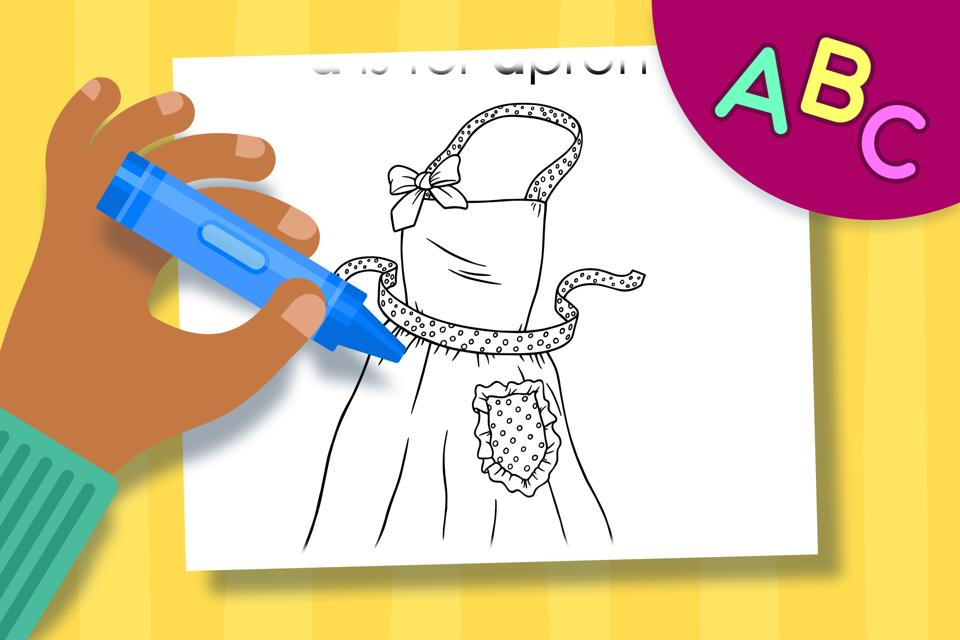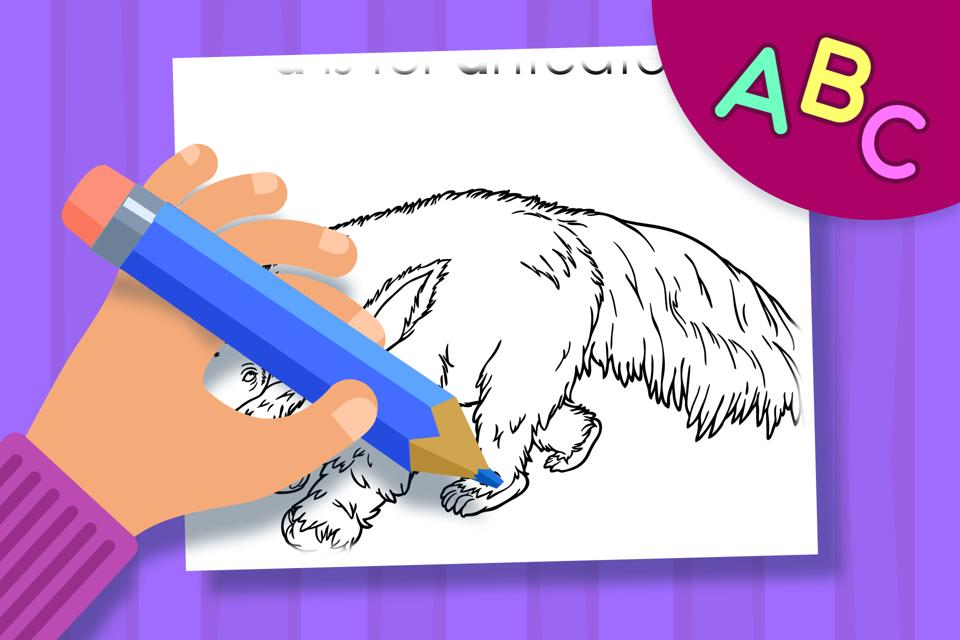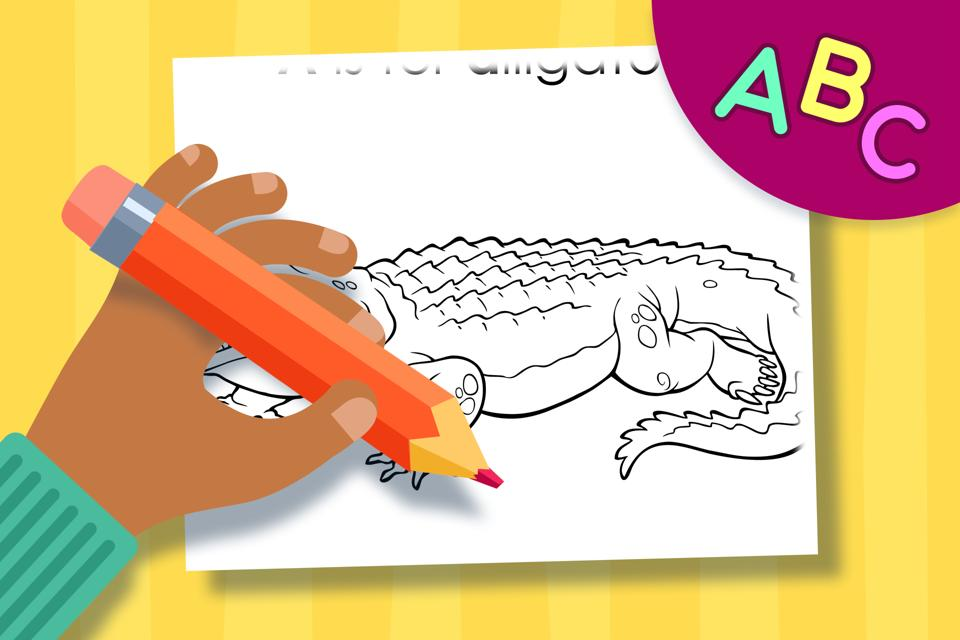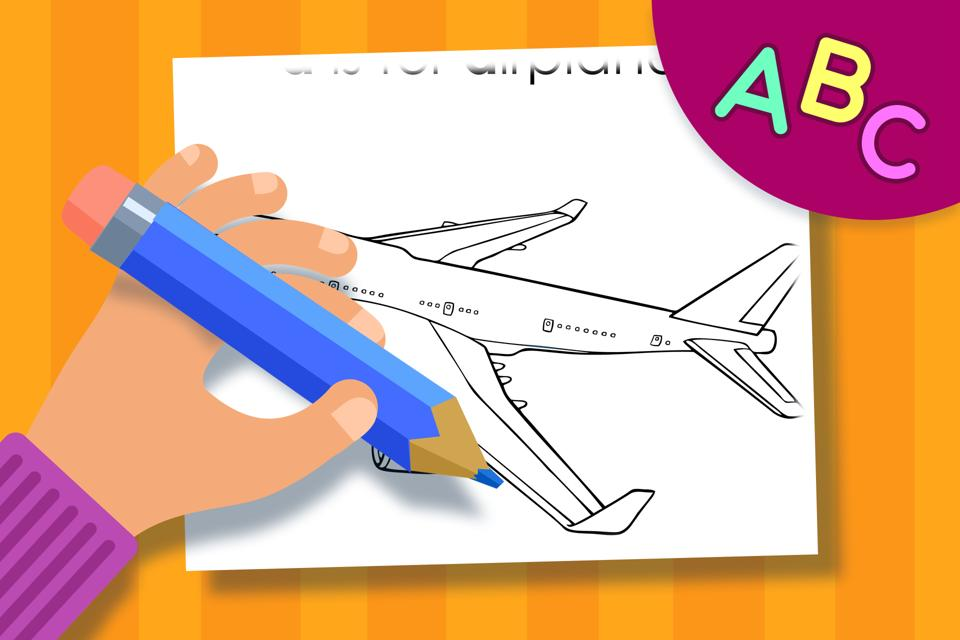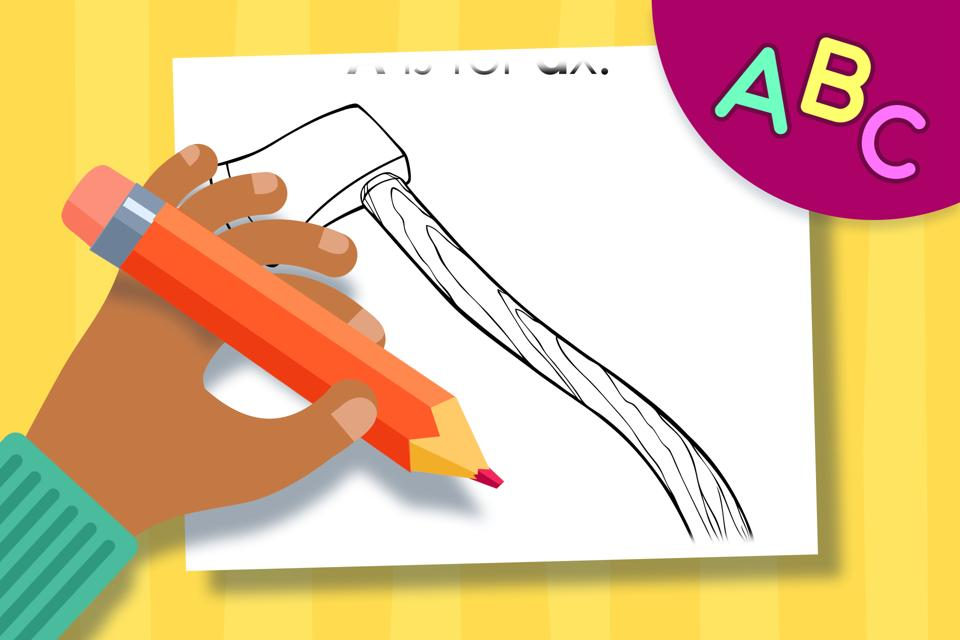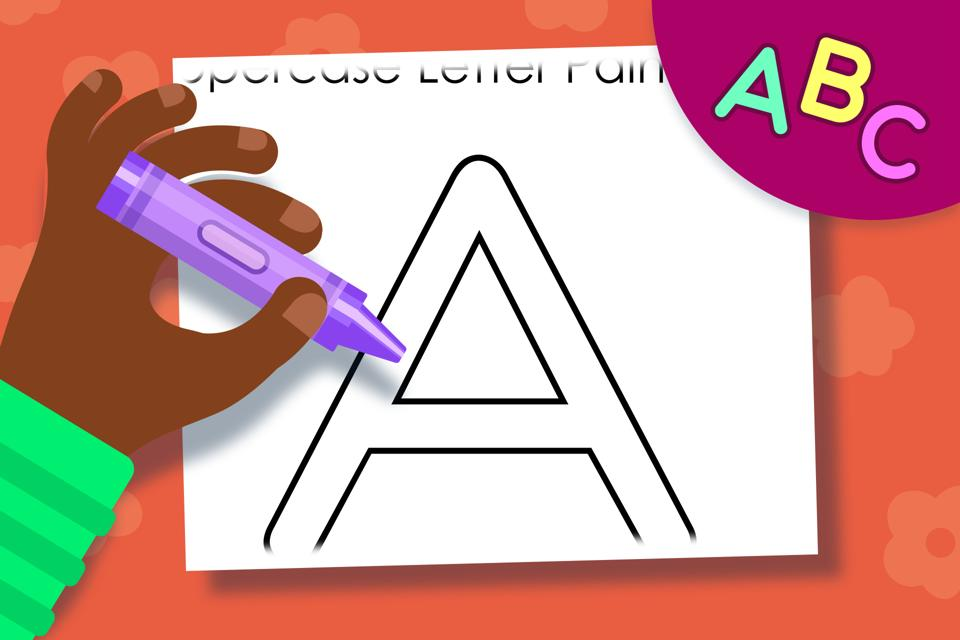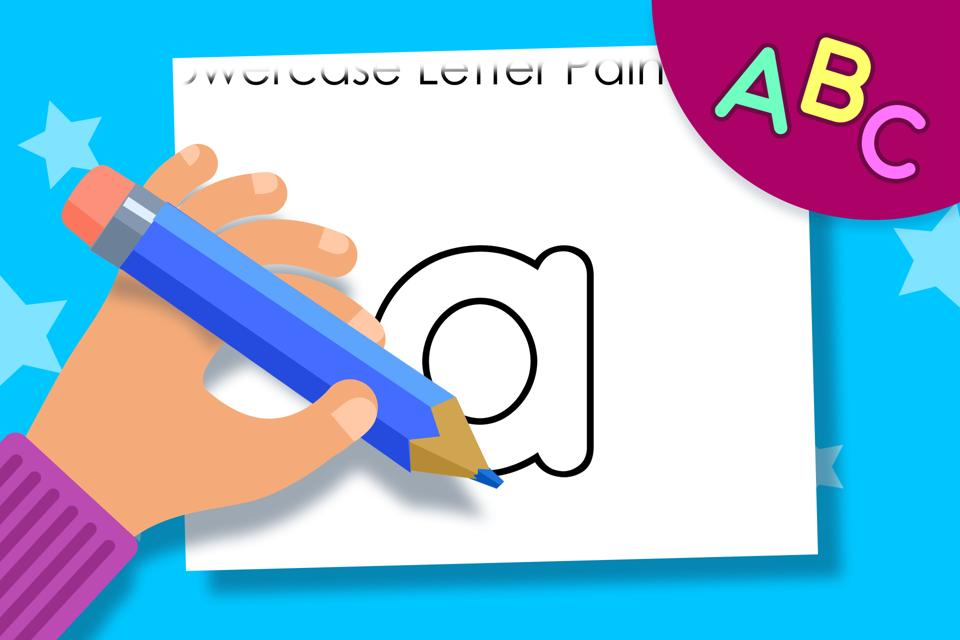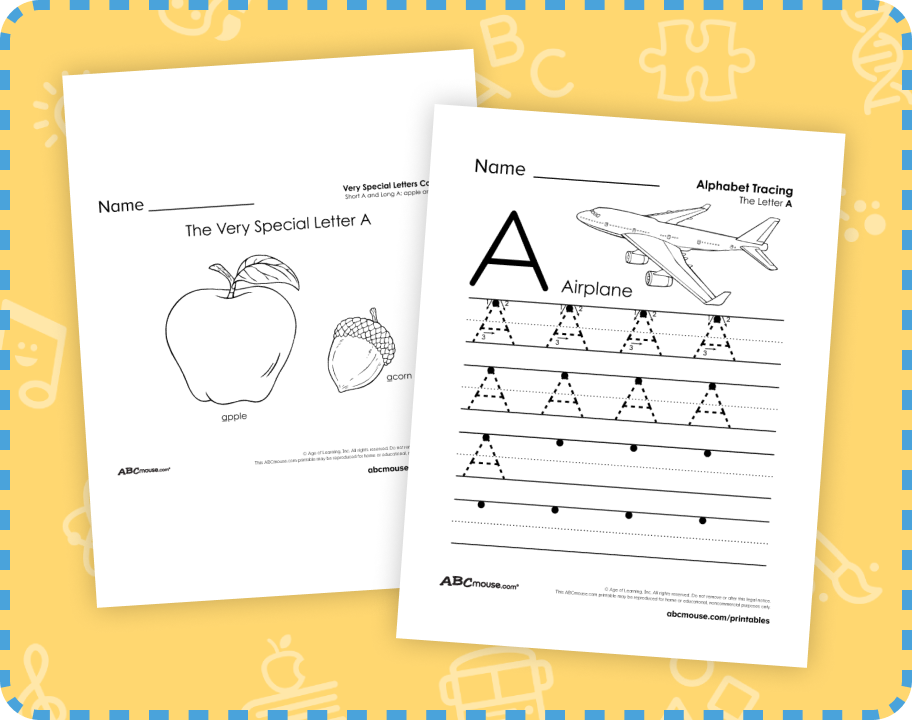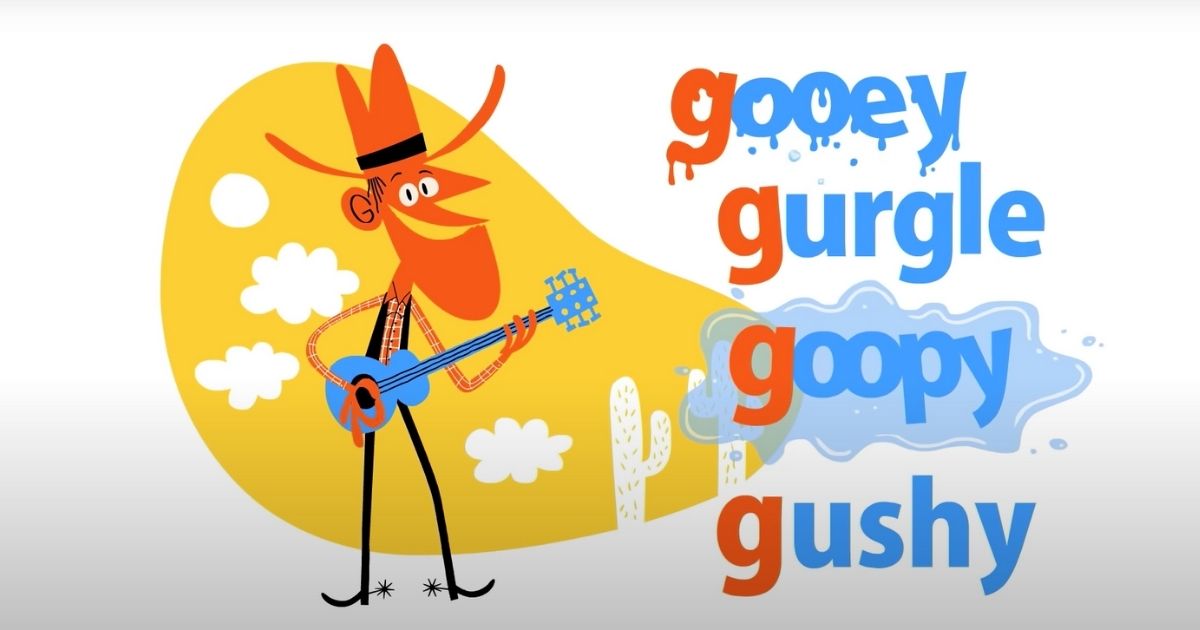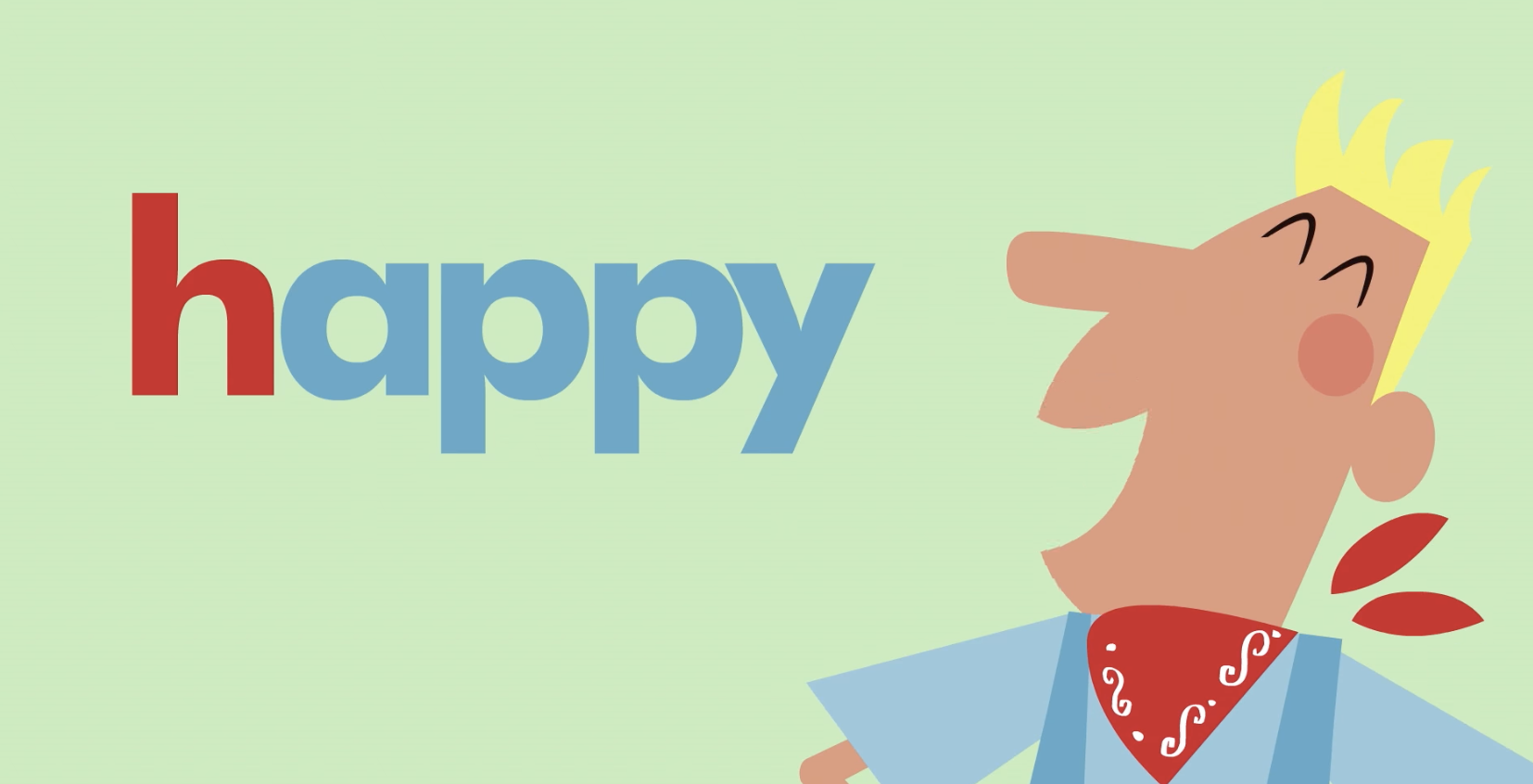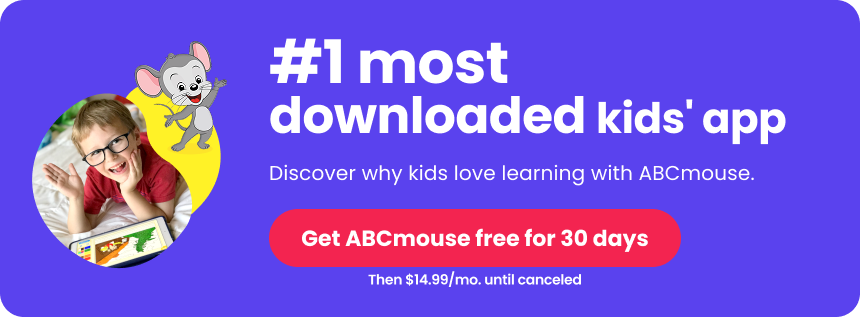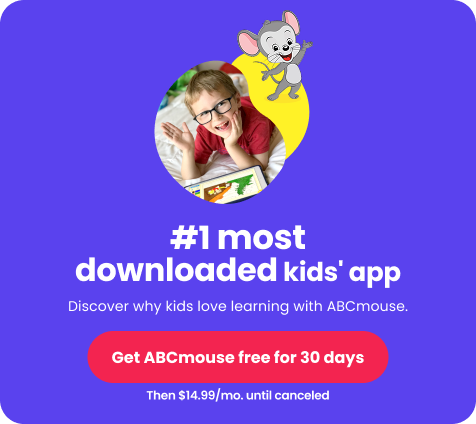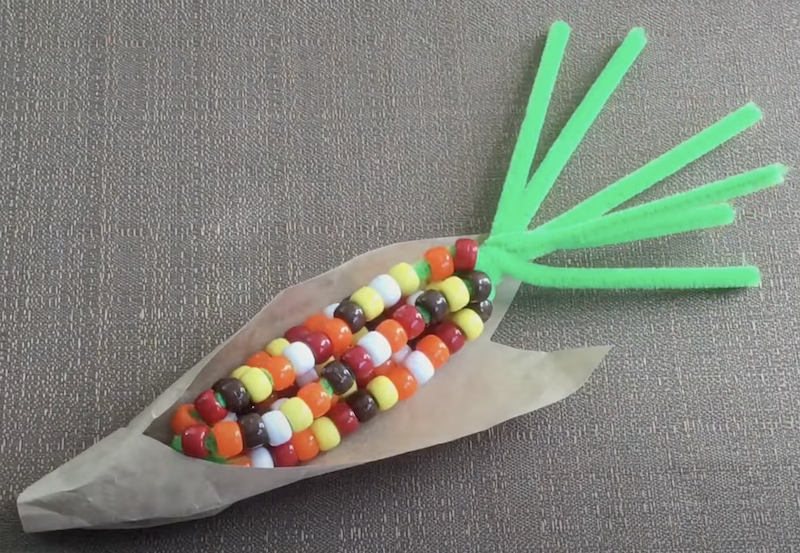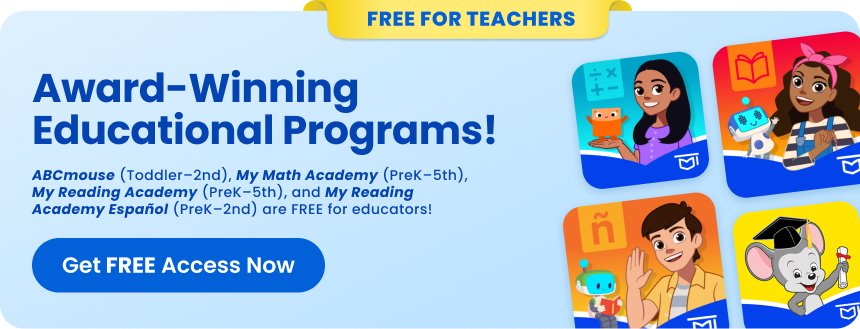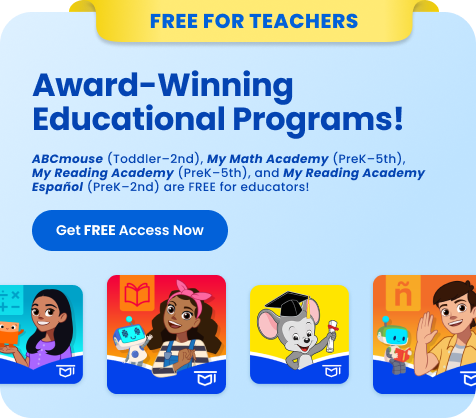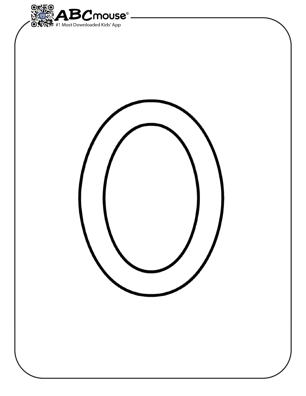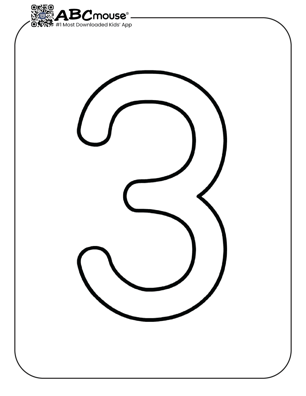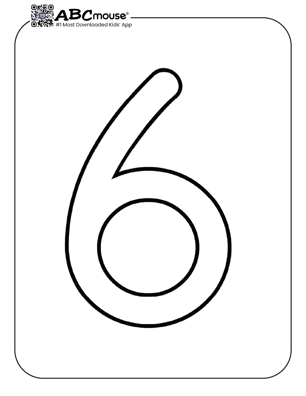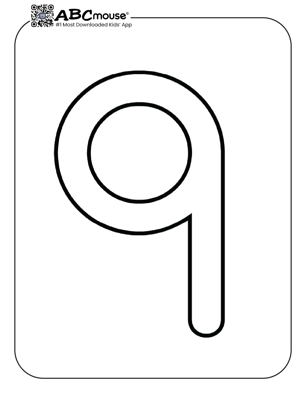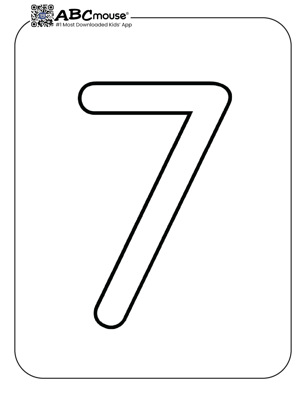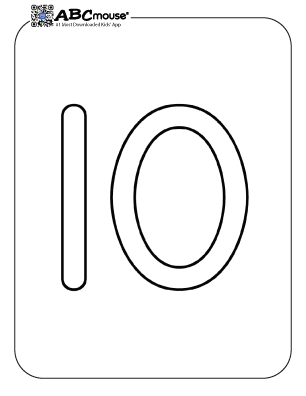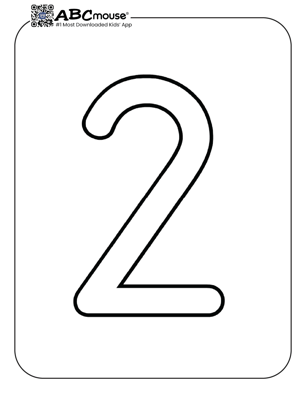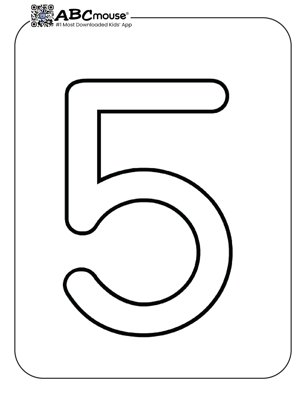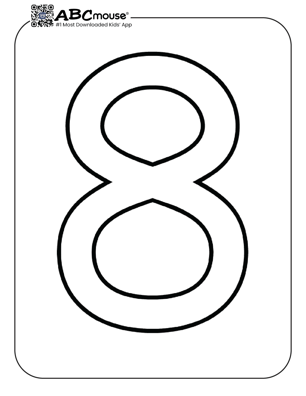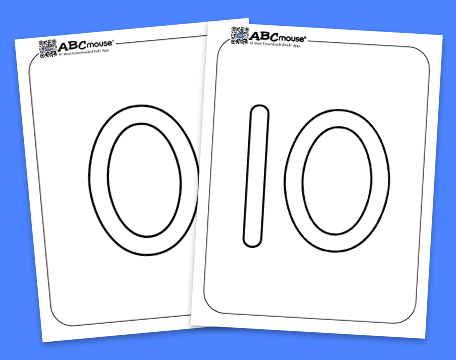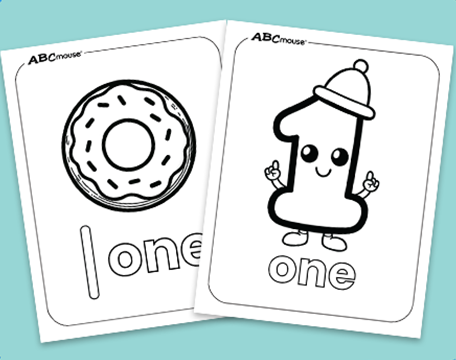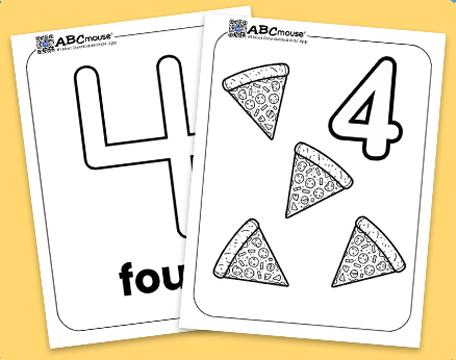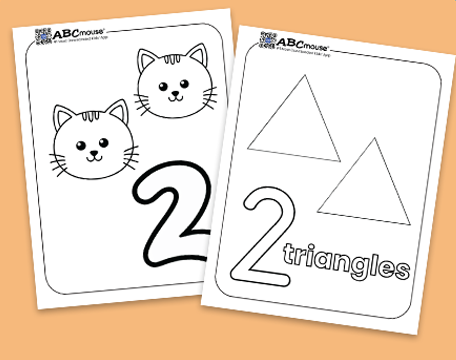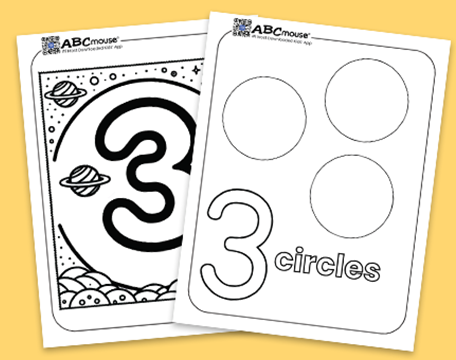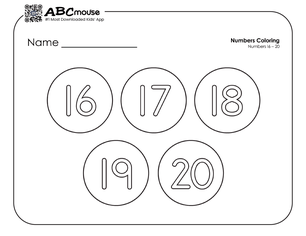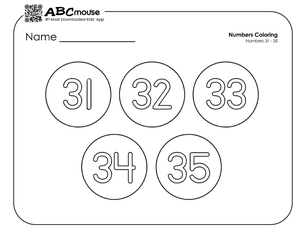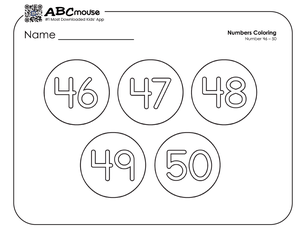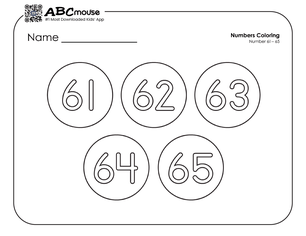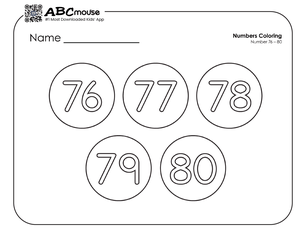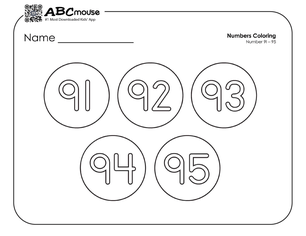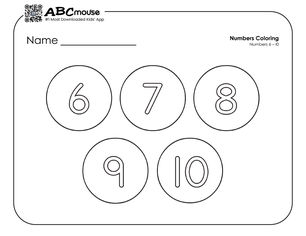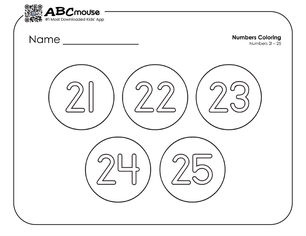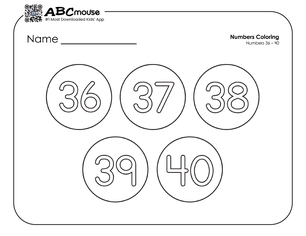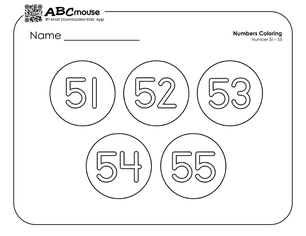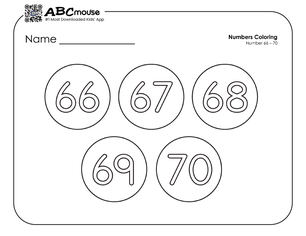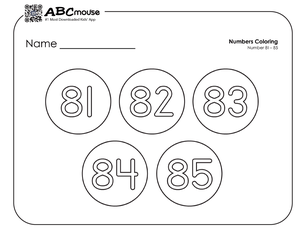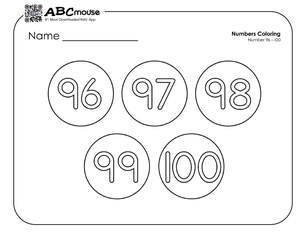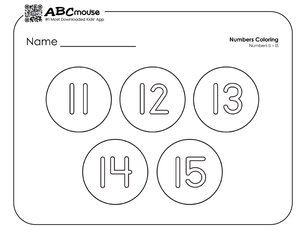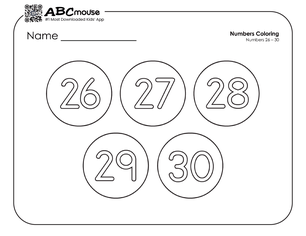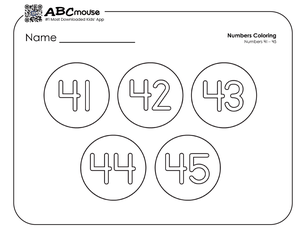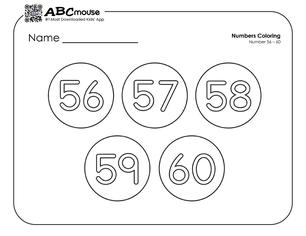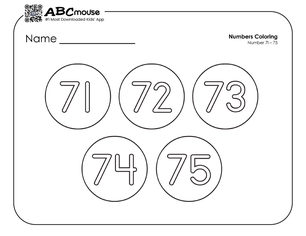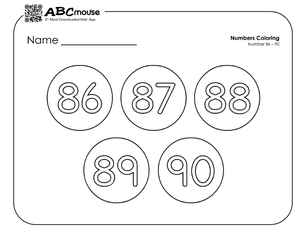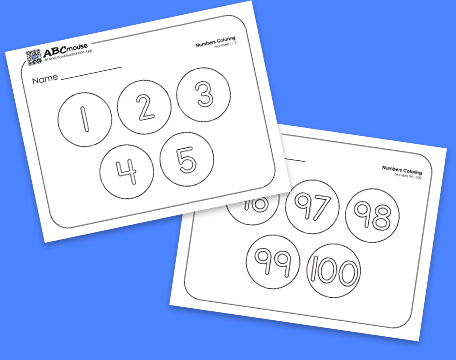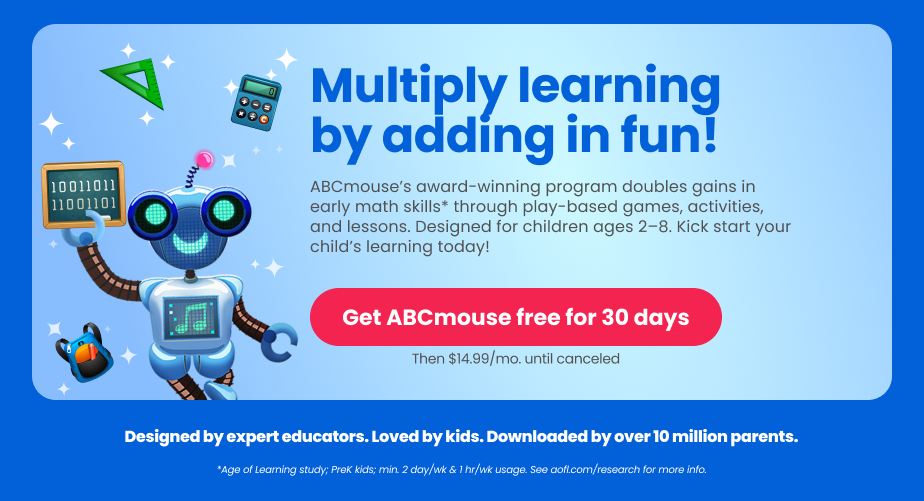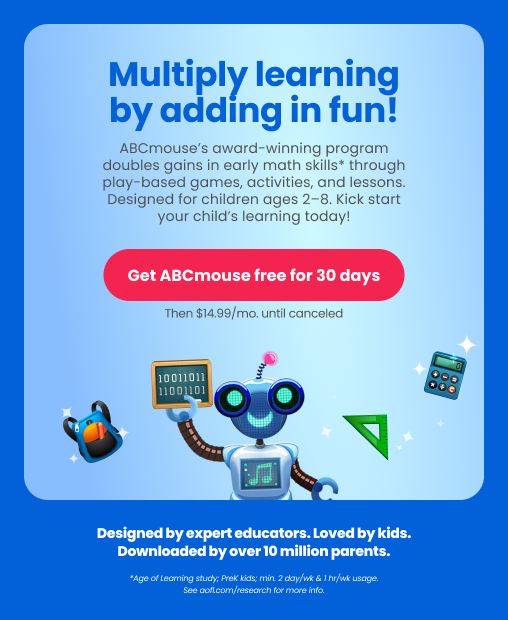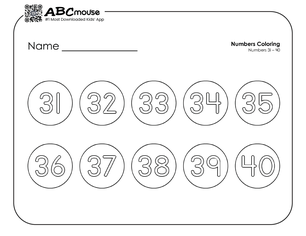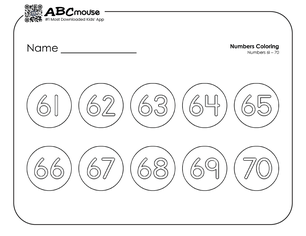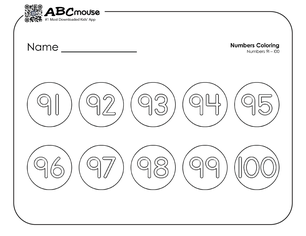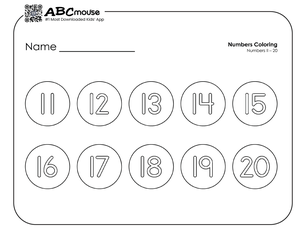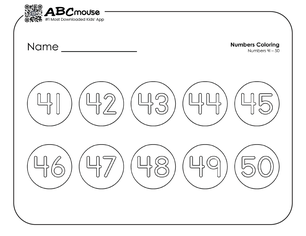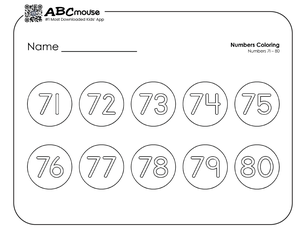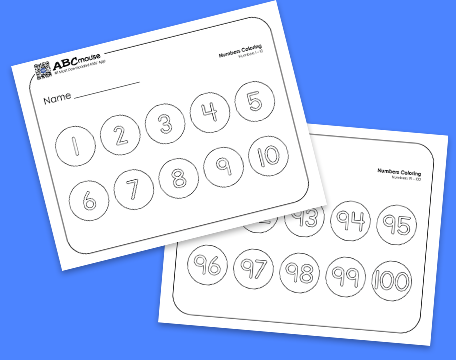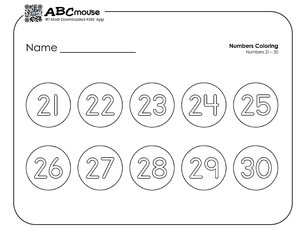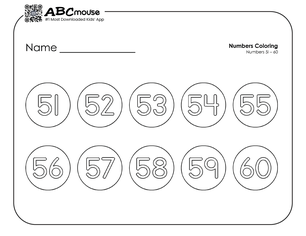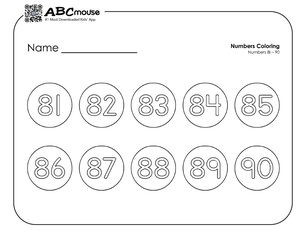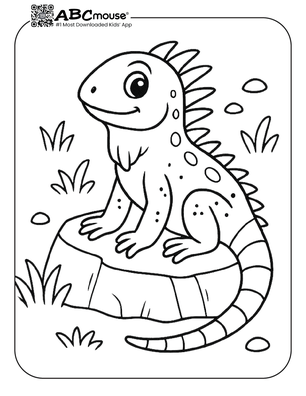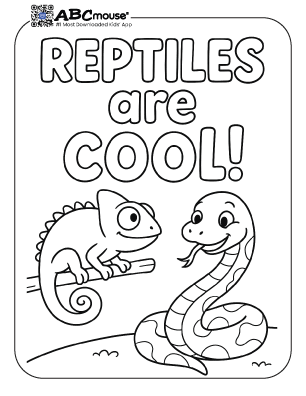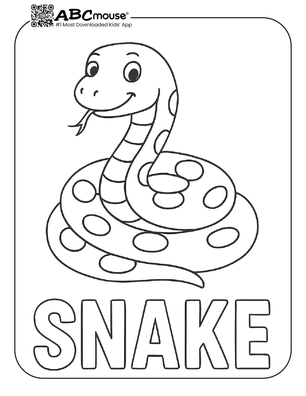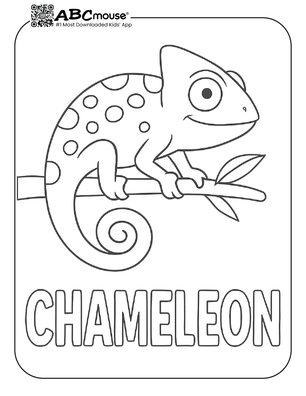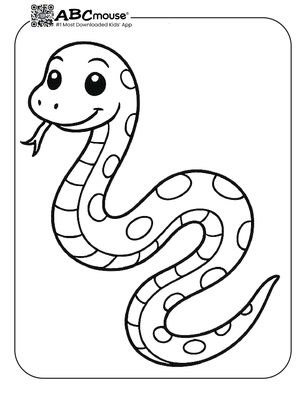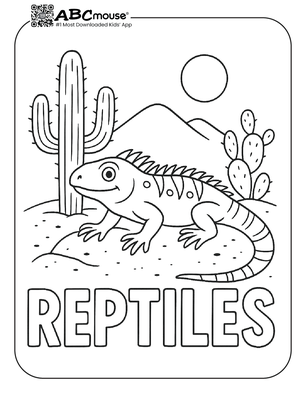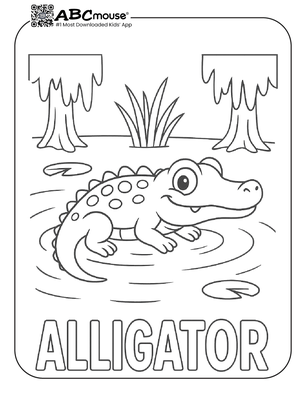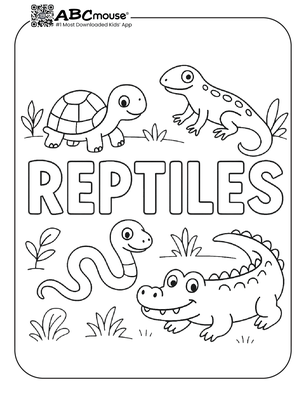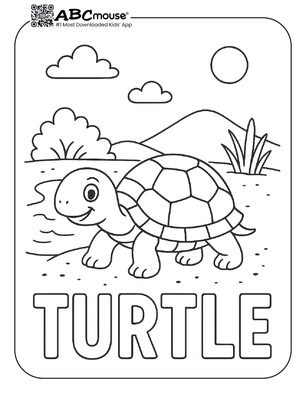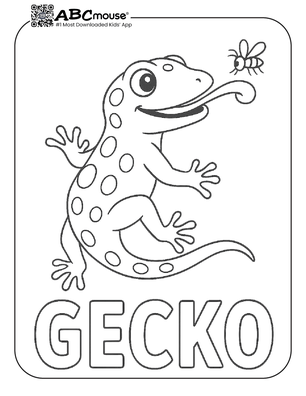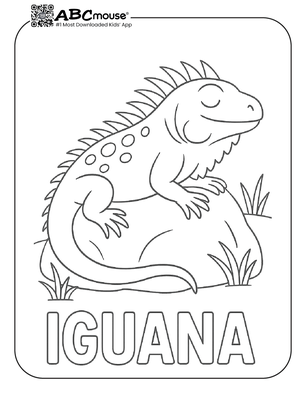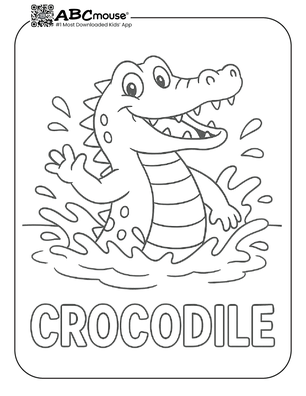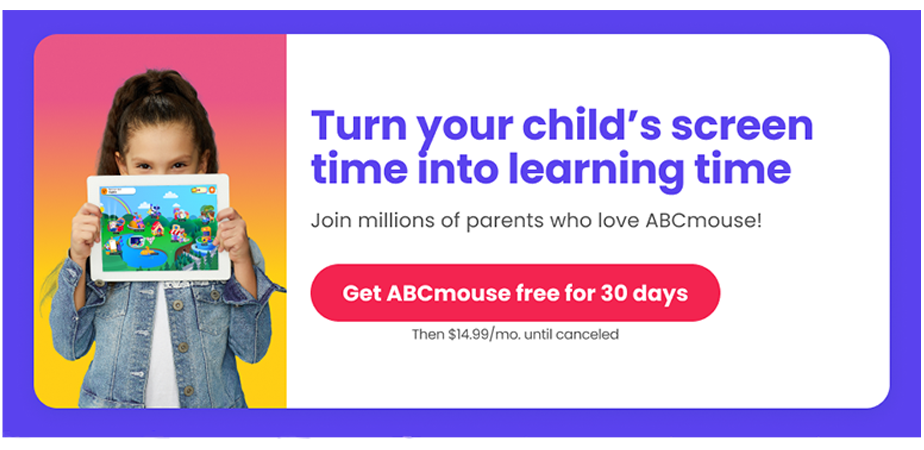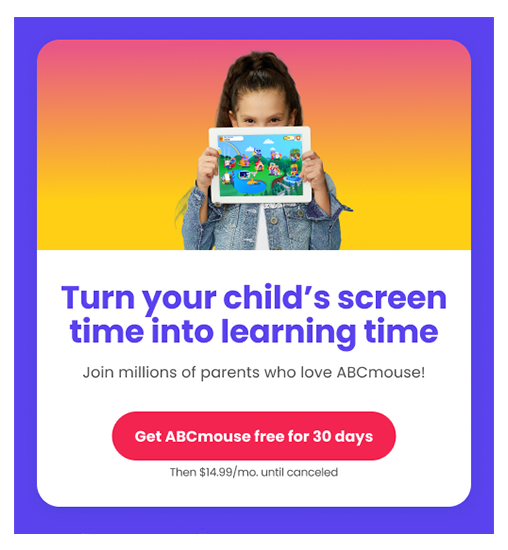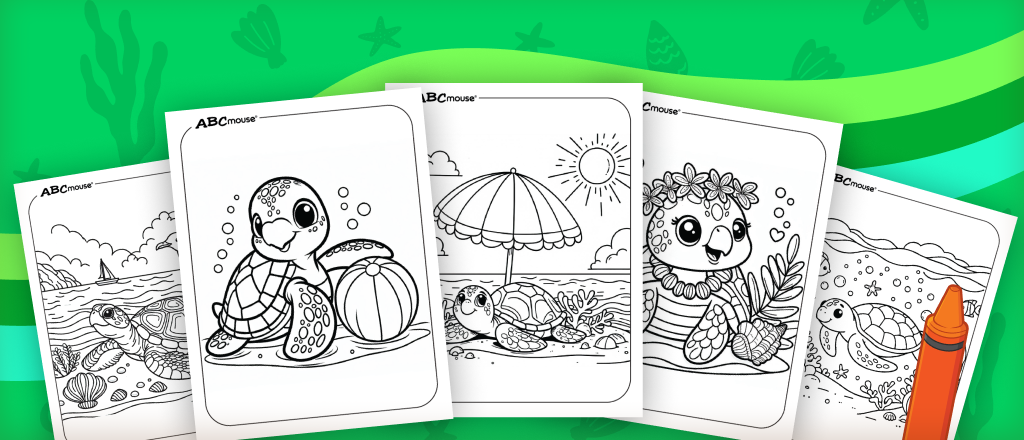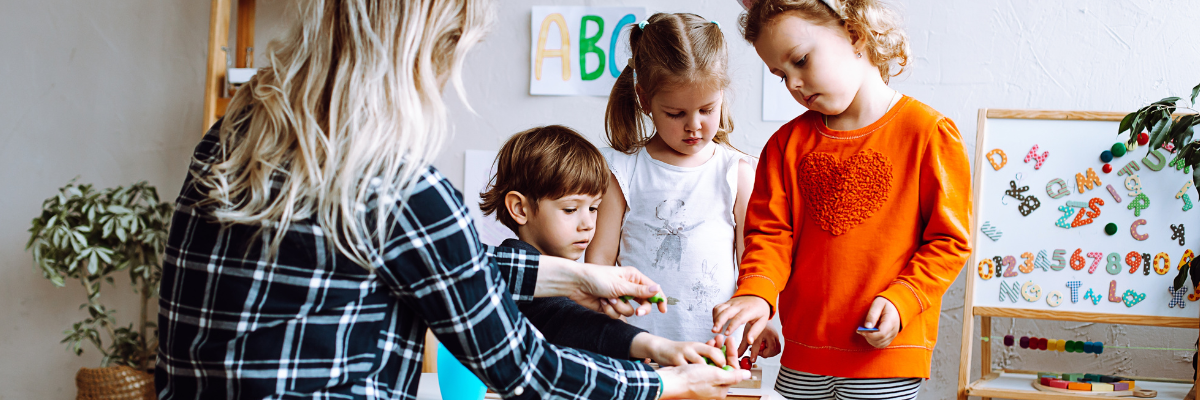
25+ Play-Based Learning Activities for Preschoolers and Kindergarteners
Share
Learning through play is fun and natural for kids, plus it offers benefits that go far beyond academics!
What Is Play Based Learning & Why Is It Important in Early Childhood?
The term “play-based learning” refers to the way kids learn as they play. This form of learning isn’t restricted to academics; it also includes:
- social-emotional skills
- fine and gross motor development
- problem-solving
- critical thinking
- creativity
- imagination
In general, the younger kids are, the more they can learn while playing, but this approach is beneficial at all ages.
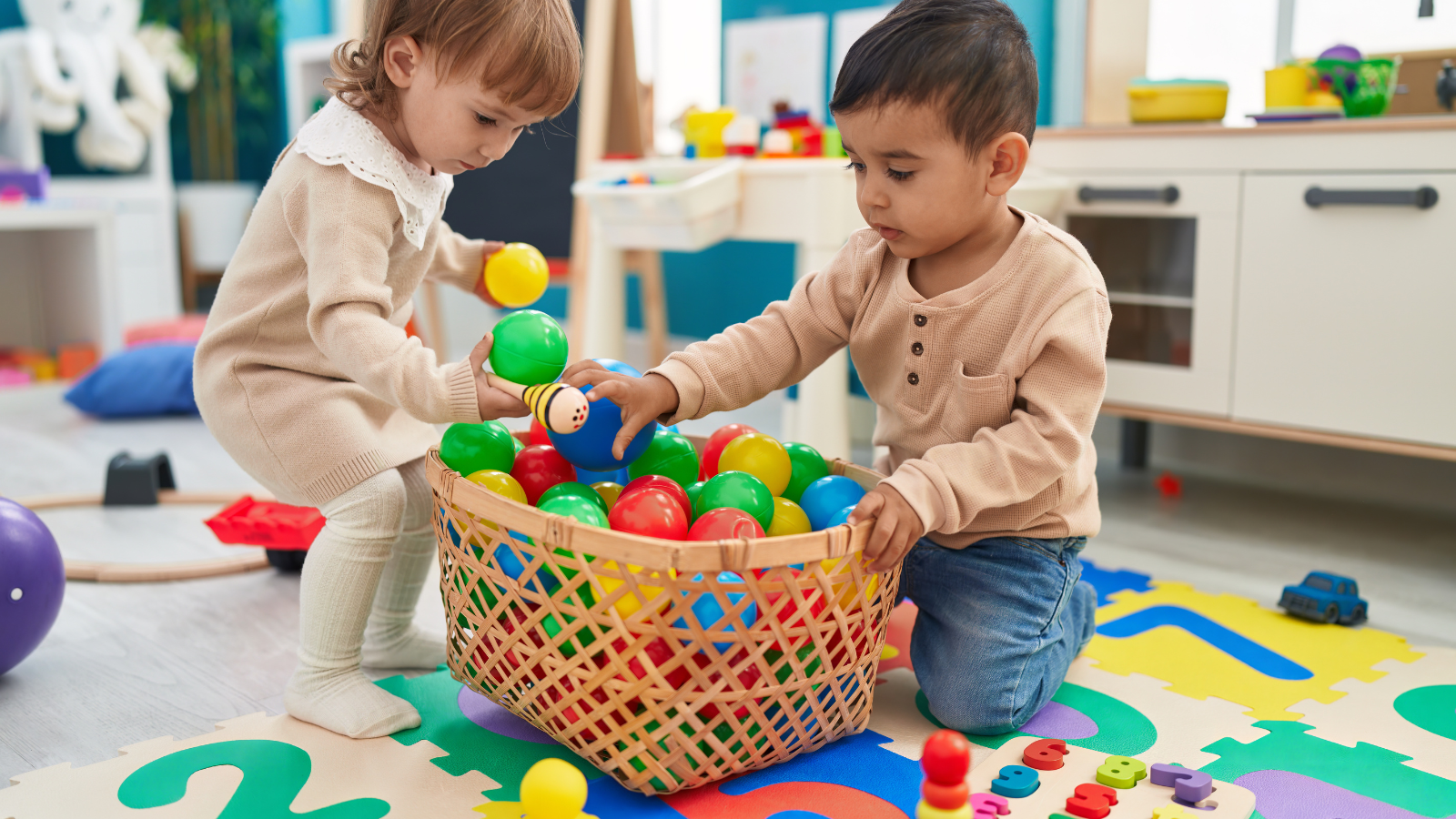
A 2018 clinical report from the American Academy of Pediatrics noted: “Play is not frivolous: it enhances brain structure and function and promotes executive function (i.e. the process of learning, rather than the content), which allow us to pursue goals and ignore distractions.”
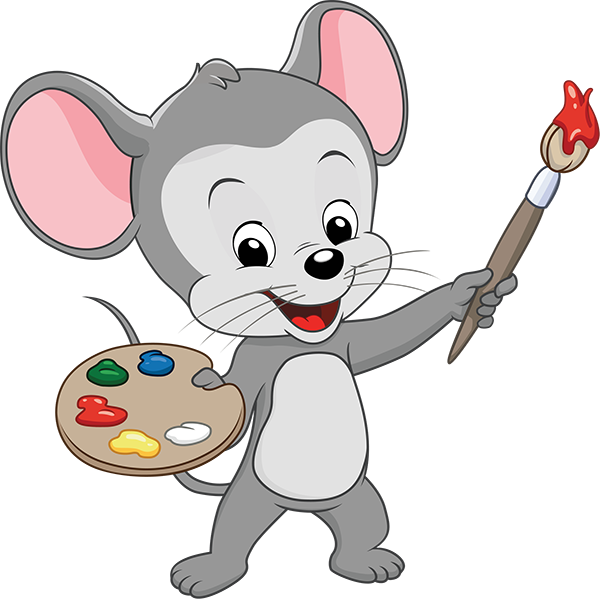
Play-based learning is usually:
Enjoyable
Self-chosen/Self-directed
Unstructured
Imaginative
Empowering
While parents or teachers may guide the play or provide some parameters, kids usually choose the activity and make up the rules for these games on their own. In many cases, they don’t even realize they’re learning—they’re just having fun!
A big part of the experience is learning how to learn and understanding that it’s okay to take risks and make mistakes. Children can carry this knowledge over to more formalized education, making them more resilient inside the classroom and out.
Try some of these play-based learning activities with your own child to see the benefits!
Play-Based Reading Activities
Leap Frog Letters
Draw green “lily pads” with sidewalk chalk, and write a letter in each one. As your child hops from letter to letter, ask them to name each one and say the sound it stands for out loud.
They can also practice spelling by jumping from one letter to the next. To increase the creative aspect, encourage them to use the chalk to add fish, ducks, plants, and other elements to their “pond.”
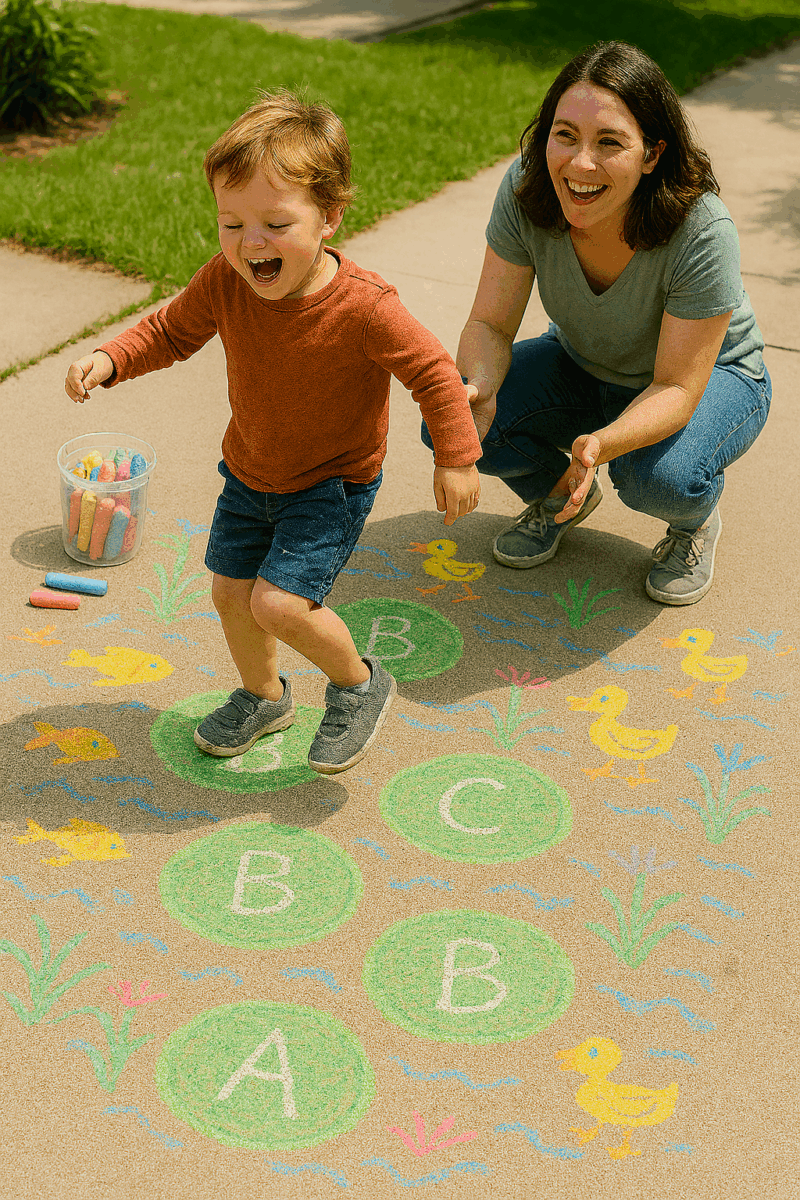
Letter Blends Hop-Walk-Run
Use your sidewalk chalk for this one or make notecards with individual letters written on them instead. Draw or lay the letters on the ground, spacing them about 12 inches apart (or more for older kids). Start by jumping from letter to letter, saying the sound the letter makes.
Next, walk across the letters slowly, blending them together to figure out the word. Finally, run across the letters, saying the whole word at once.
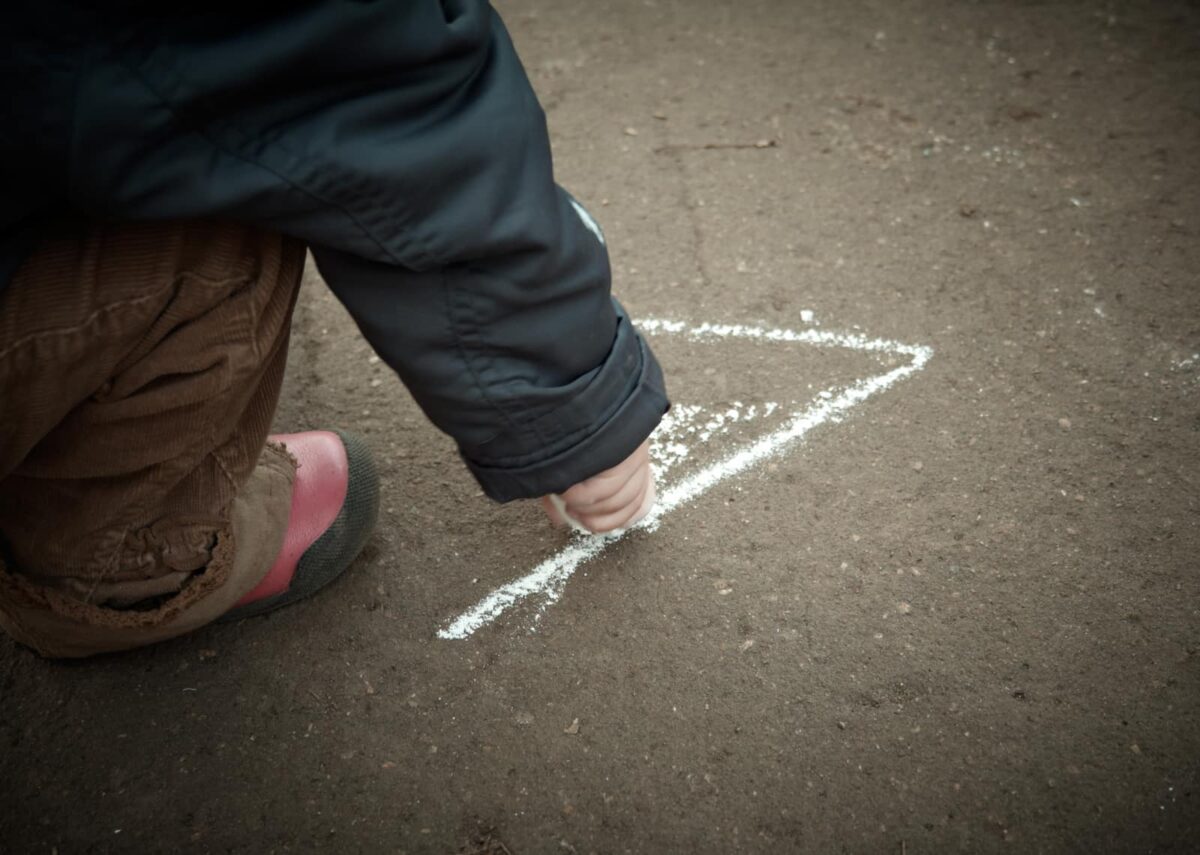
Phonemes I Spy
Choose one or more phonemes (the sounds made by individual letters and letter blends) to target, then look for them when you’re out and about. For instance, if you choose /ch/ and /igh/, your child might point out the sign for “High Street,” and identify “cheddar cheese” at the grocery store. Keep track of how many you find, and see who can spot the most throughout the day!
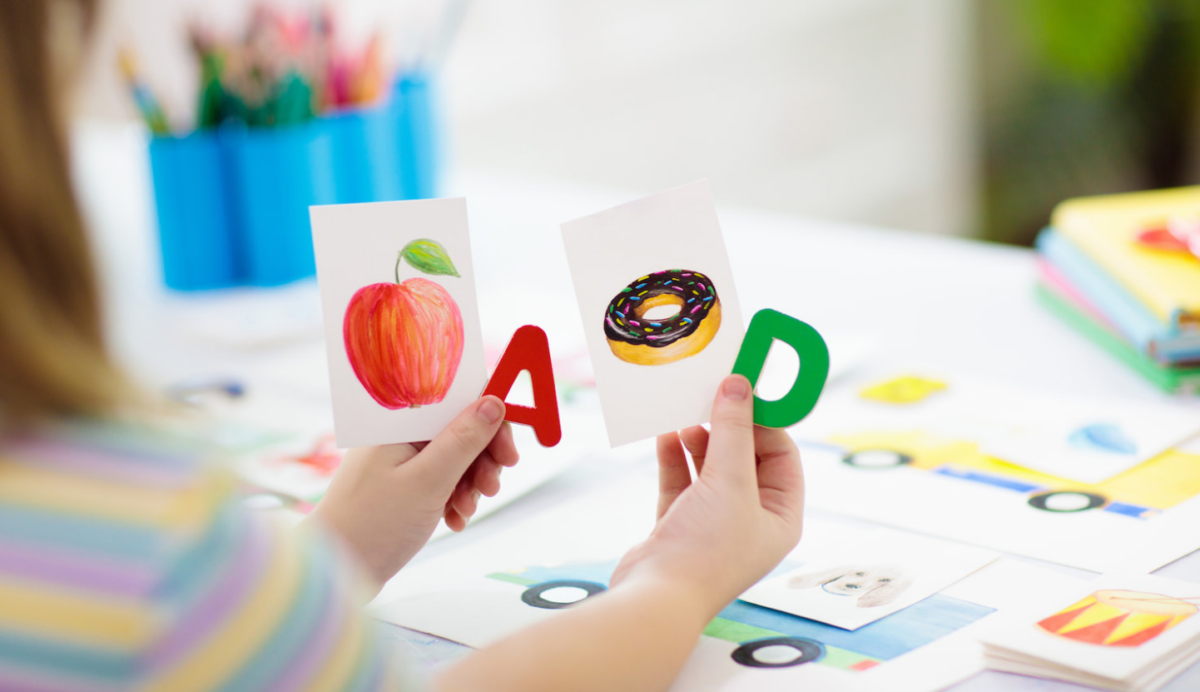
Playdough Word Stamp
Buy a set of letter stamps (be sure to get one that includes both upper and lowercase letters), or use alphabet magnets or beads instead. Roll out some playdough, then stamp words onto it. This is a fun way to practice spelling or high-frequency words. (For younger kids, try having them make the letters themselves out of the playdough instead.)
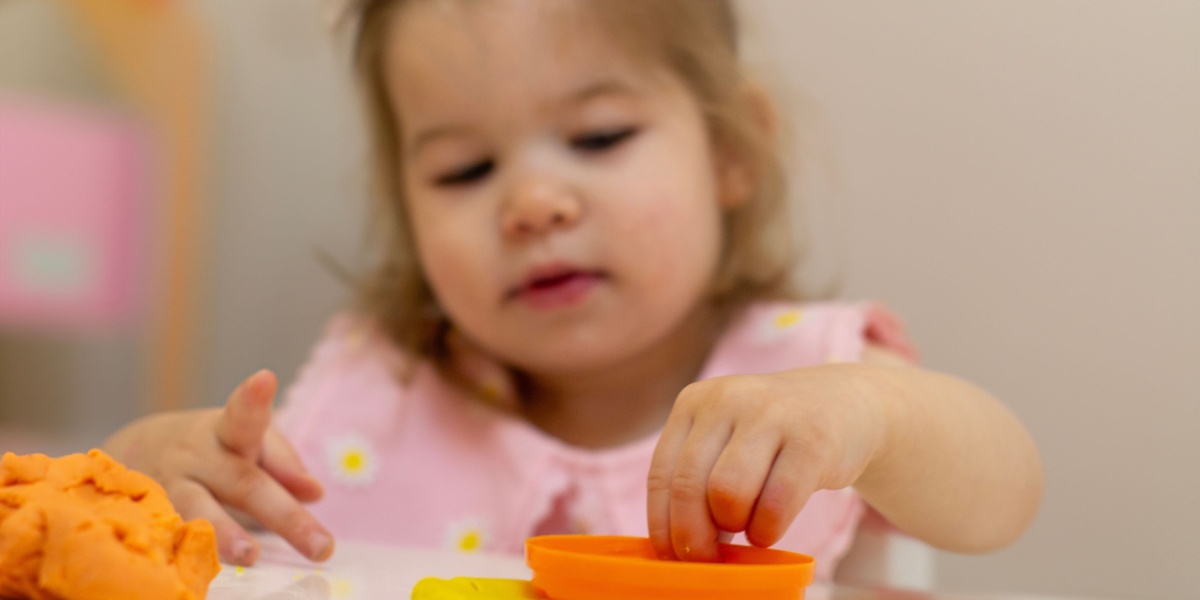
Stuffed Animal Stories
Reading isn’t just about decoding the letters on the page—it’s also important to make sure kids actually understand what they’re reading. Retelling a story in their own words is one key way to ensure reading comprehension.
After reading a book, invite your child to share the story with you using their favorite stuffed animals or other toys to stand in for the characters. Ask questions like “Why do you think [character] did that?” or “What would you have done instead?” as they retell the tale.
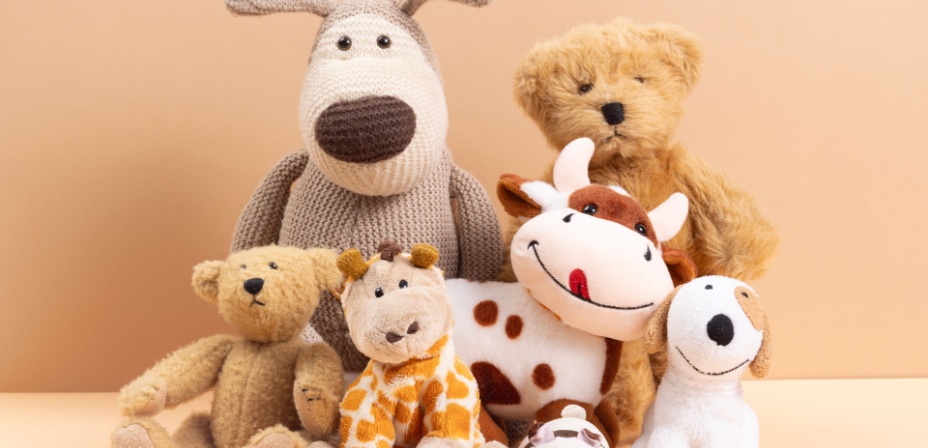
Play-Based Math Activities
Domino Math
Depending on how you lay them out, dominos can represent all sorts of math concepts and equations. Practice counting by drawing a domino and having your child point to and count the dots. Then have them lay the dominos along a number line based on their totals.
Ask kids which side has more dots to work on comparing numbers. Turn a domino sideways, and it becomes an addition, subtraction, or multiplication equation. There are so many options to try.
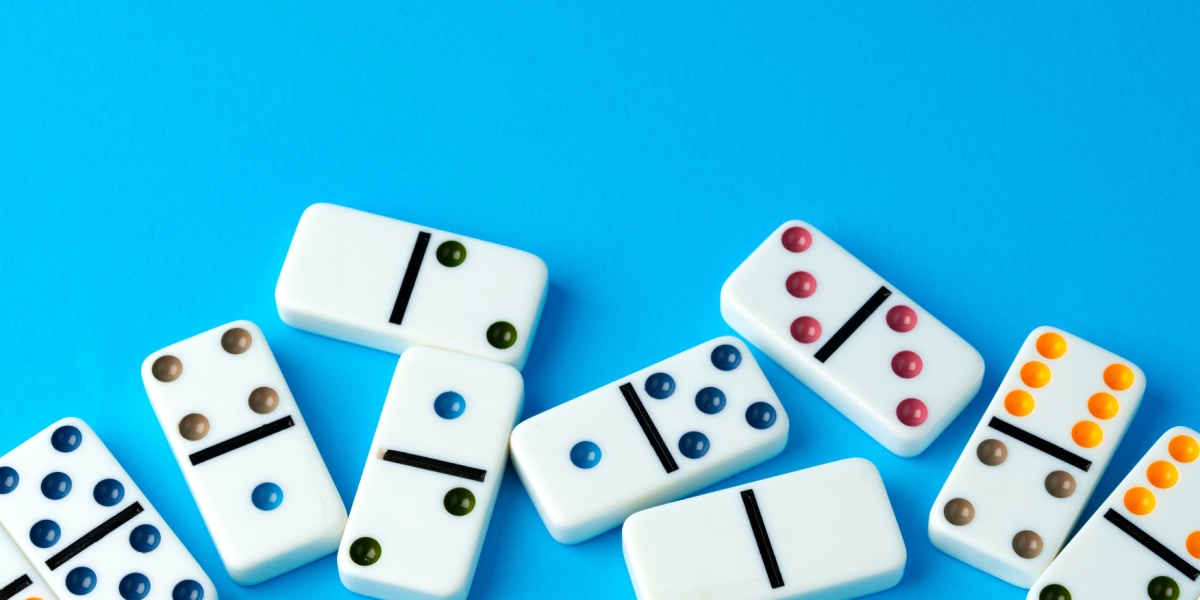
Bingo
This classic crowd favorite is terrific for number recognition practice! You can also customize the boards to practice various math concepts.
For instance, create boards that contain only products (total when numbers are multiplied together) of numbers one to 10. Then, draw flashcards and have kids solve the equation and mark off the appropriate squares on their cards.
Pipe Cleaner Shapes
Provide a pile of colorful pipe cleaners and have fun bending them into various shapes, naming them as you go. This works for both 2D and 3D shapes, and is great for developing hand-eye coordination too. You can even combine all your shapes together to make cool abstract sculptures. Tip: Try adding disposable drinking straws into the mix too!
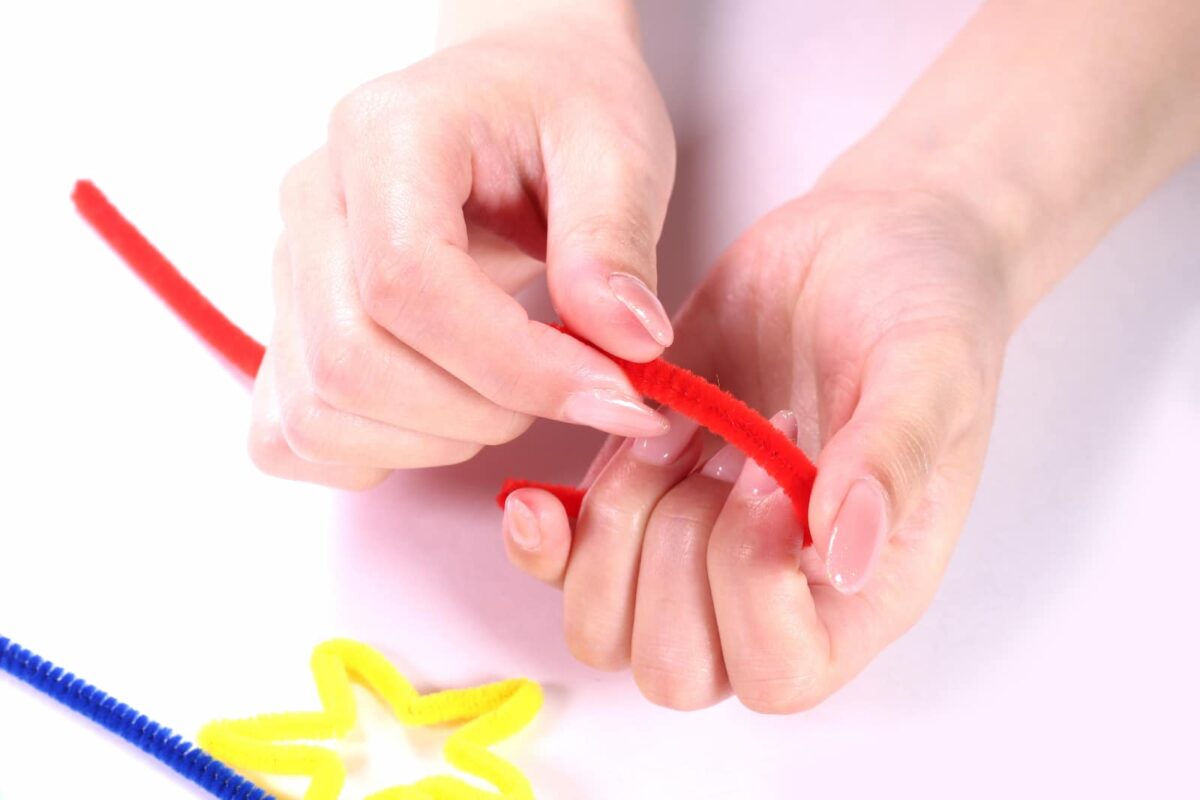
Number Parking Lot
If you’ve got a big collection of toy cars, you’ll love this one! Use masking tape to label each car with a number, and create a “parking lot” with numbered spaces to match. You can do this on a piece of paper or with sidewalk chalk outdoors. Kids will have fun “vrrr-ooming” each car into the appropriate spot!
To build additional skills like cardinality or subitization, write numbers on the cars and corresponding dots or tally marks in the parking spaces, or make each car the answer to a math equation written in the lot.
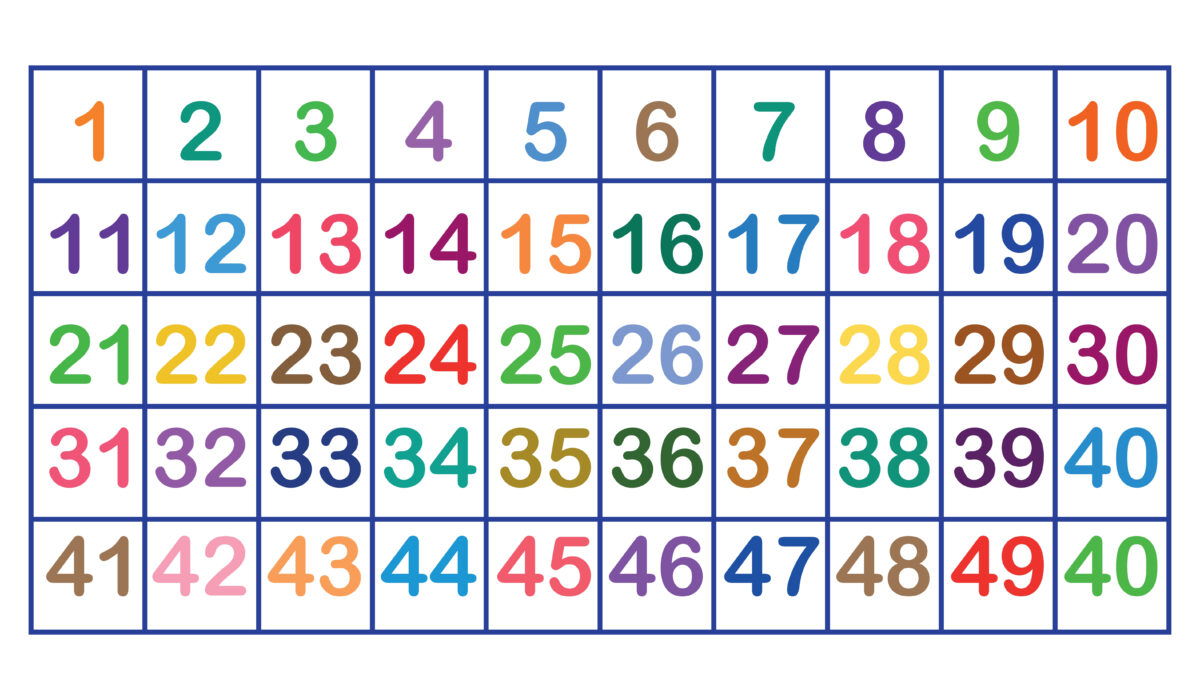
Sticky Note Shape Hunt
Draw various shapes on individual sticky notes, then have kids attach them to items around the house or classroom that match. For instance, they could place a sticky note with a rectangle on the TV screen or a book cover; a sticky note with a circle on a bowl; a sticky note with a cylinder on a water bottle, etc.
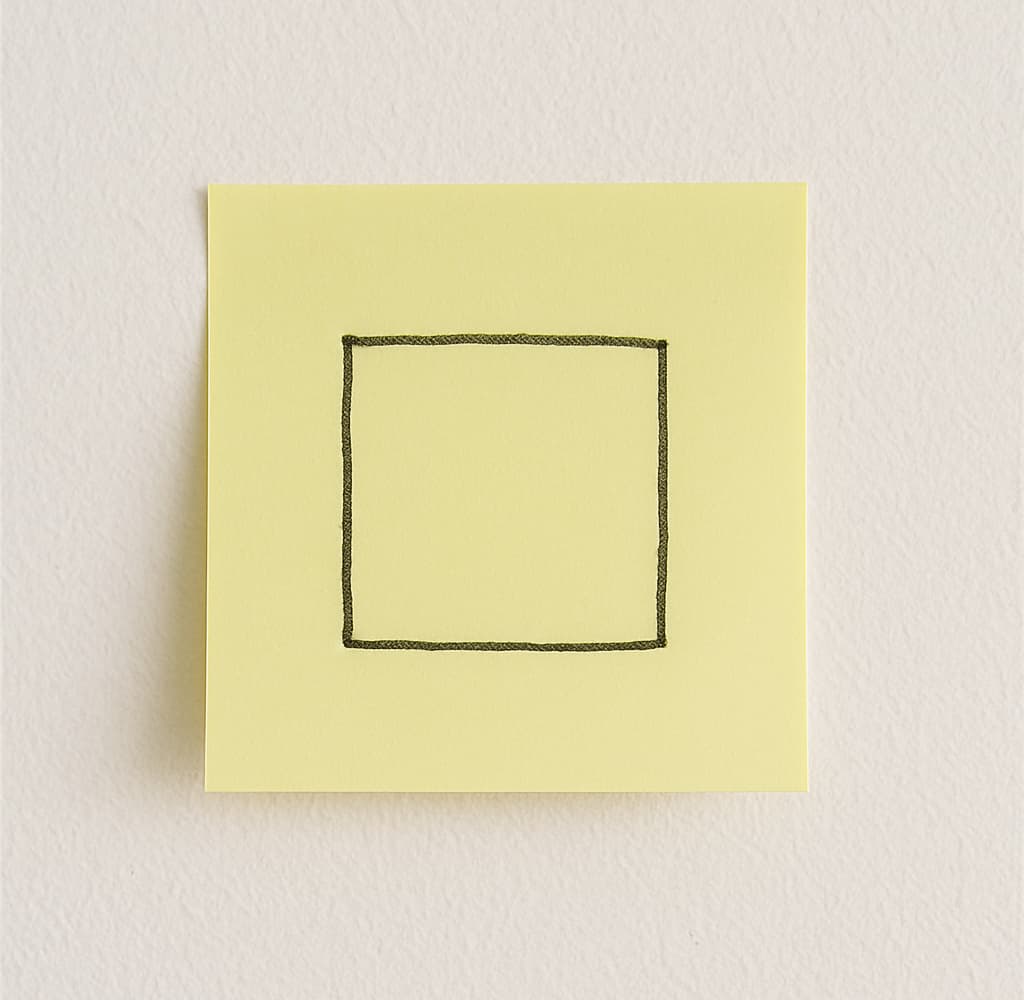
Science and Nature Play
Five Senses Walk
As you explore your favorite outdoor area, stop from time to time to identify what you can see, hear, smell, feel, and even taste (use safety precautions, of course). You can write these down as you go, or simply take the opportunity to appreciate what’s all around you. This not only teaches the observation skills essential to science—it also develops mindfulness skills.
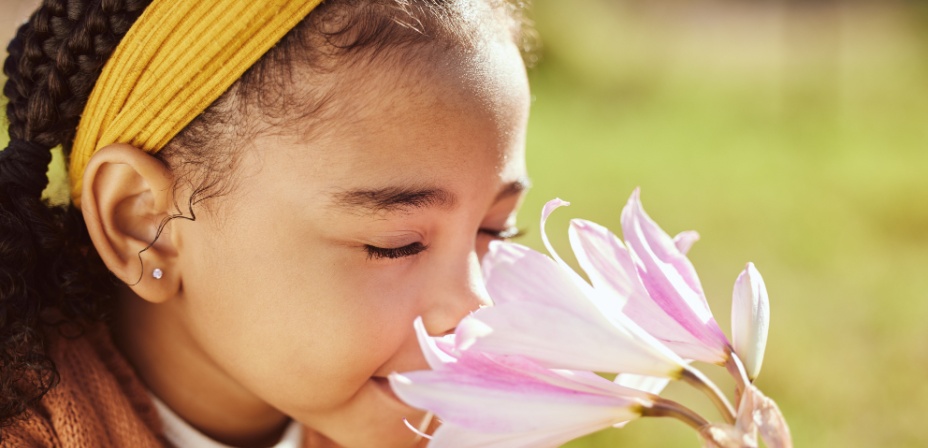
Bubble Blowing
This is a perennial kid (and adult!) favorite, and it actually involves a lot of different science concepts. Experiment with blowing faster or slower, making differently shaped wands from pipe cleaners, or seeing how high your bubbles can float before they pop. So much of science is just about asking “why?” or “how?” and then trying to find the answers!
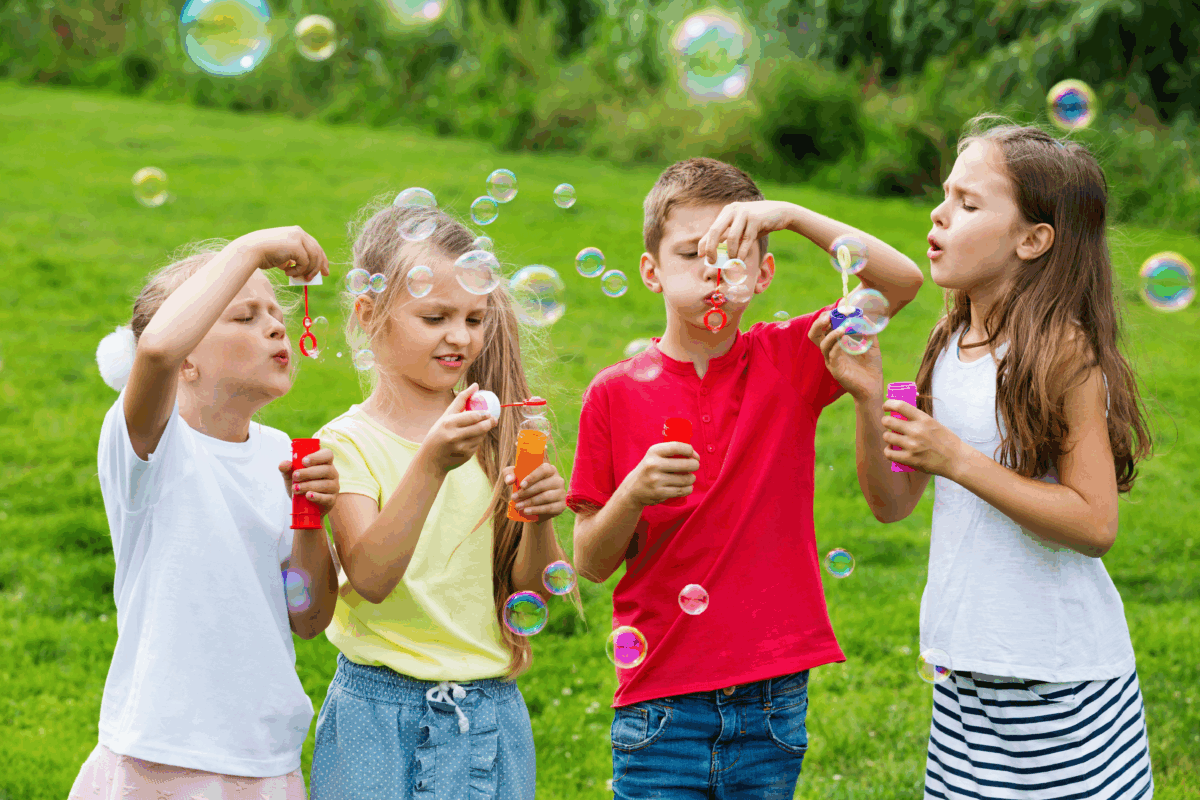
Paint Mixing
Most adults know that yellow and blue make green, and adding white will make something paler or “pastel.” Kids can learn these facts by memorization, but it’s a lot more fun to discover them through play!
Give little ones red, yellow, blue, white, and black finger paints, then let them mix away! When they’re done, they can paint a masterpiece or store their paints away for another day.
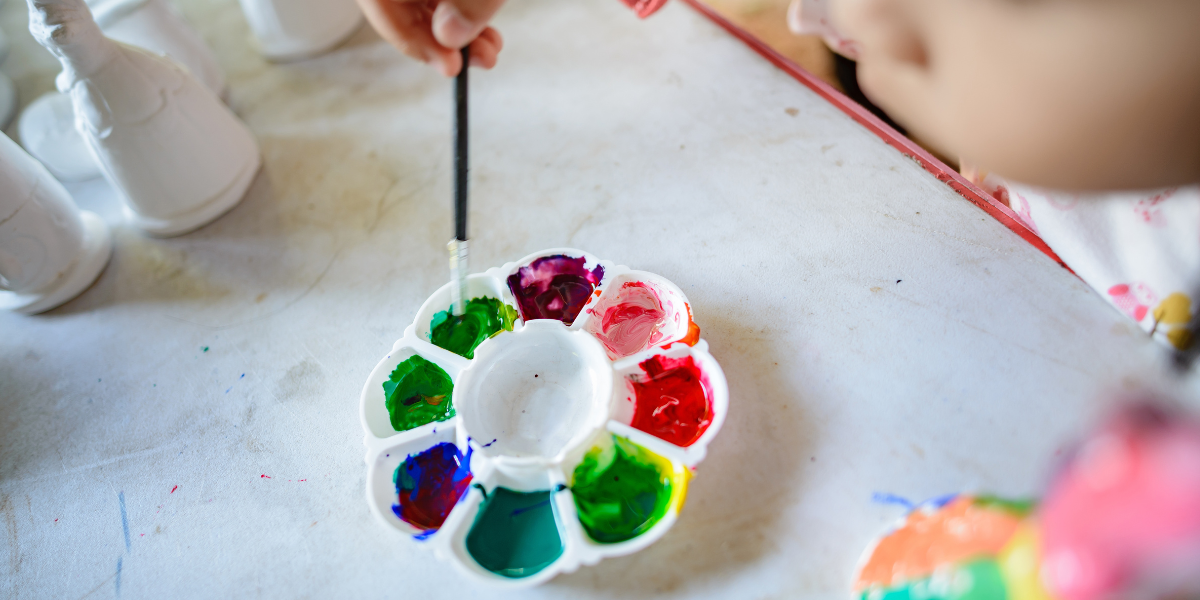
Magic Magnets
A set of toy magnets gives kids so many fun ways to explore. They can experiment to find which objects the magnet will stick to, play with attracting and repelling, make their own compass, or use a magnet to guide a metal ball through a DIY maze—the list goes on!
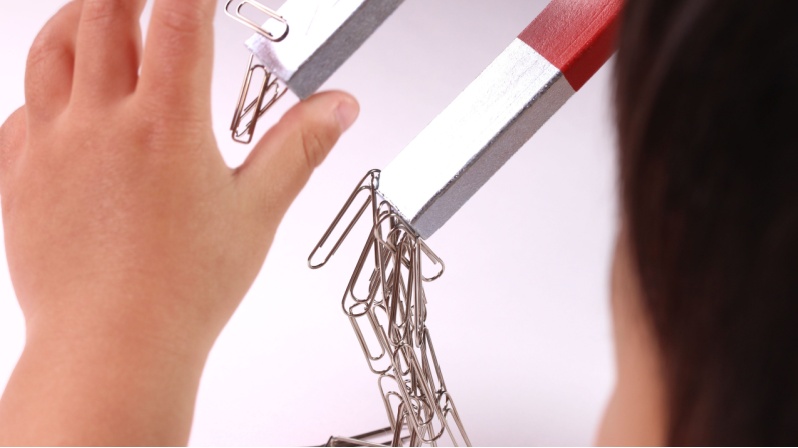
Loose Parts Play
Fill a bin with all sorts of random, kid-safe items: cardboard boxes and cardboard pieces, nuts and bolts, scraps of fabric, smooth wood pieces, styrofoam and bubble wrap, disposable cups and silverware—anything and everything goes, as long as it’s safe and age-appropriate.
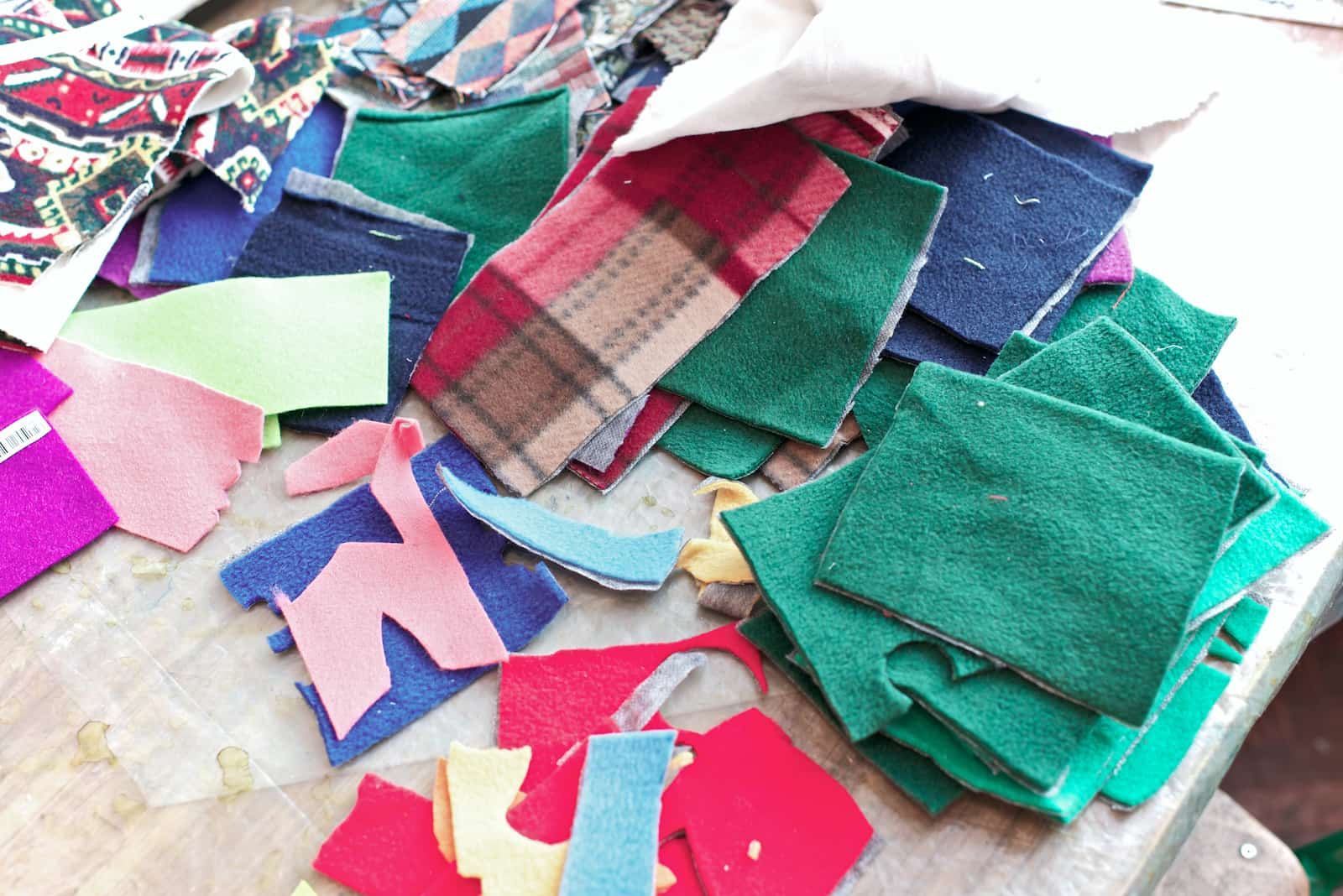
This collection is perfect for unguided experimentation and imaginative play, or you can give kids STEM challenges. For instance, “How tall of a tower can you build with these items?” or “Invent a brand-new machine and explain what it’s for.”
Sensory and Motor Skills Activities
Tweezer Transfer
Round up some toy tweezers, muffin tins or small plastic bowls, and pompoms or small toys. Ask your child to move items from one muffin tin well or bowl to another, using the tweezers instead of their fingers. As they move them, they can also sort them by color, size, or other attributes.
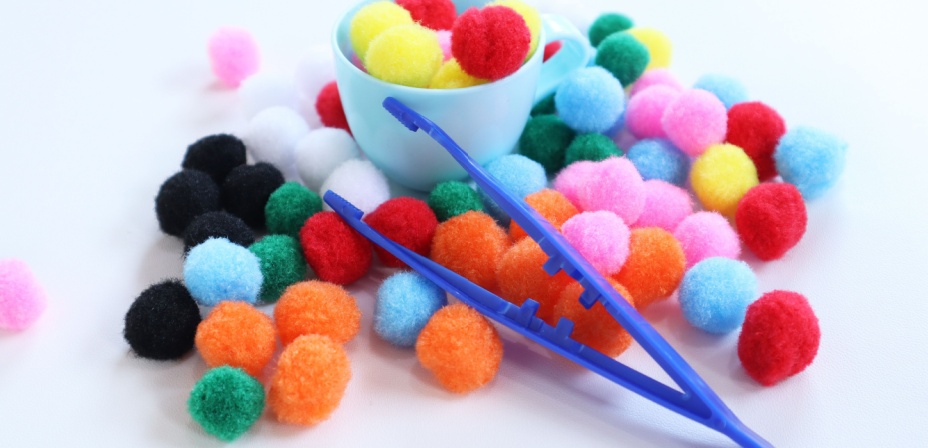
Paper Snowflakes
Scissors skills definitely take some practice to master. Start younger kids off by drawing curved and zigzag lines across scrap paper for them to cut. Show older ones how to fold paper and create their own snowflakes. Since each one is unique—just like real snowflakes—they’ll never get tired of seeing what they can create. You can also teach them how to create paper doll chains, then encourage them to experiment with other designs.
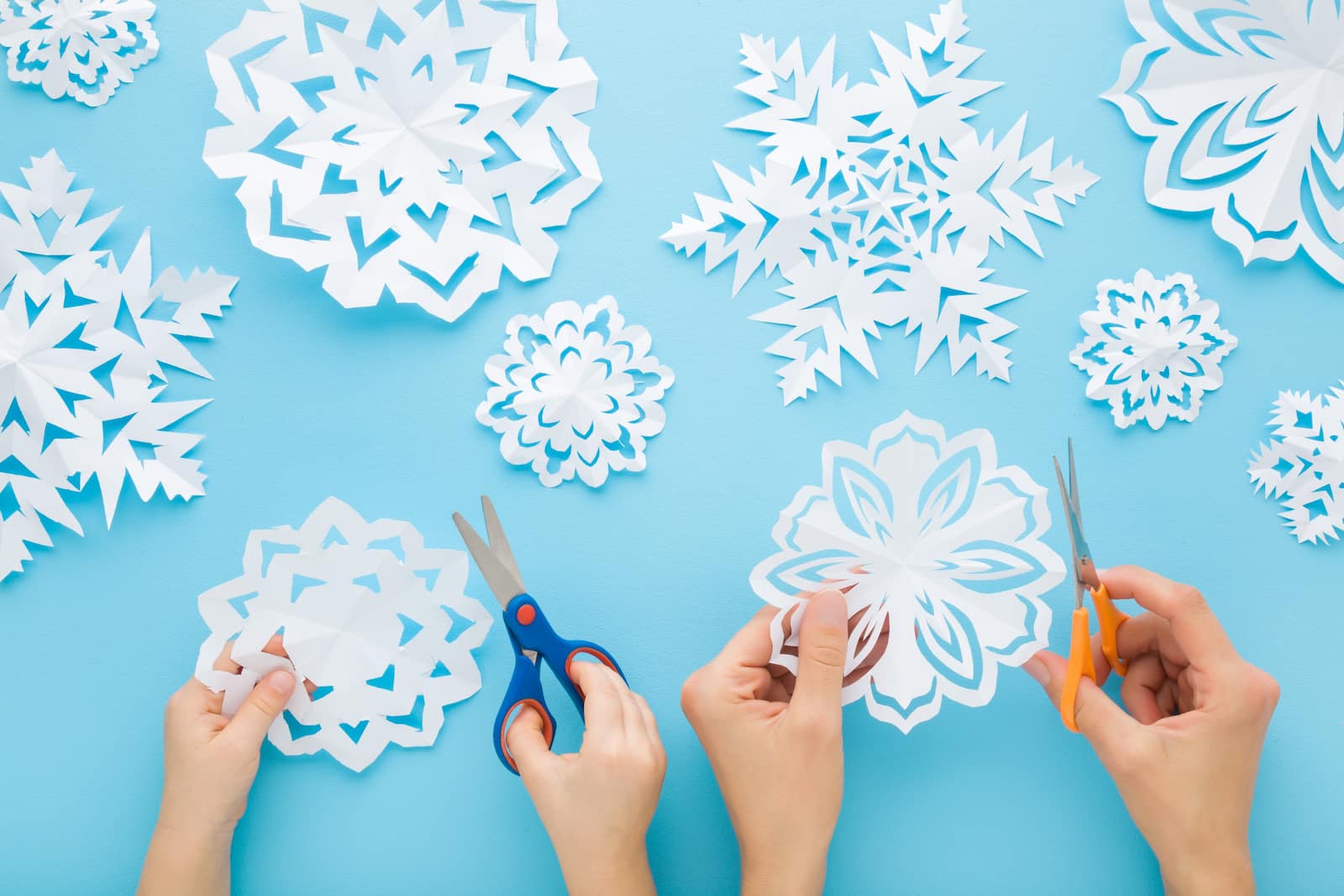
Roll and Move
You’ll need a pair of dice for this play-based learning activity. First, assign a movement to each number 1 to 6. (i.e. 1 = jump, 2 = walk backwards, 3 = spin around, etc.). Then, roll both dice. The number on the left indicates the movement, while the one on the right shows how many times to do it.
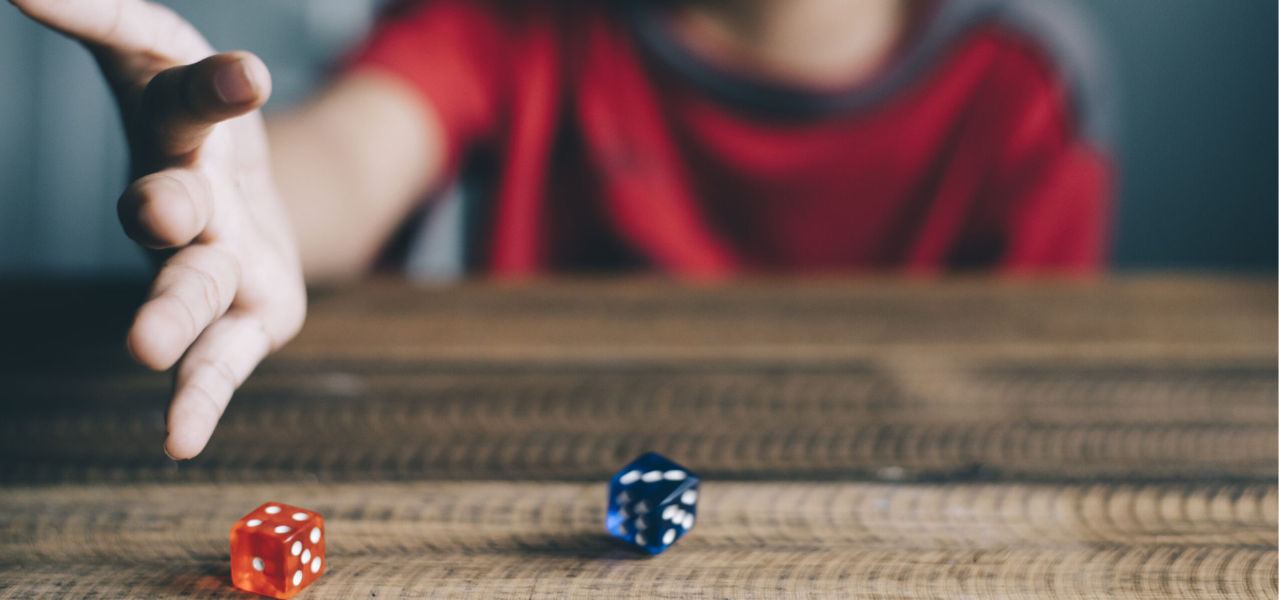
For instance, if you roll a 2 and a 5, walk backwards for five steps. To turn this into a game, set a goal number, like 50. Keep track of the number of jumps, steps, spins, etc. each player takes. The first player to the goal wins!
Sensory Bins
A sensory bin is exactly what it sounds like: a container full of items that stimulate the senses. Common items include rice, beans, sand, water, ice, rocks, beads, dry pasta, shaving cream, or popcorn kernels. Include items for scooping and measuring, like cups and spoons, along with letter and number magnets, or small toys to discover and dig out. Here are a few possible combinations:
- Dirt and pebbles, toy shovels, small buckets, twigs, and toy dinosaurs
- Water, ice cubes, shaving cream, floating toys, measuring cups, funnels
- Rice, popcorn kernels, beans, letter and number beads, forks and spoons
- Practice letter recognition with an alphabet sensory bin
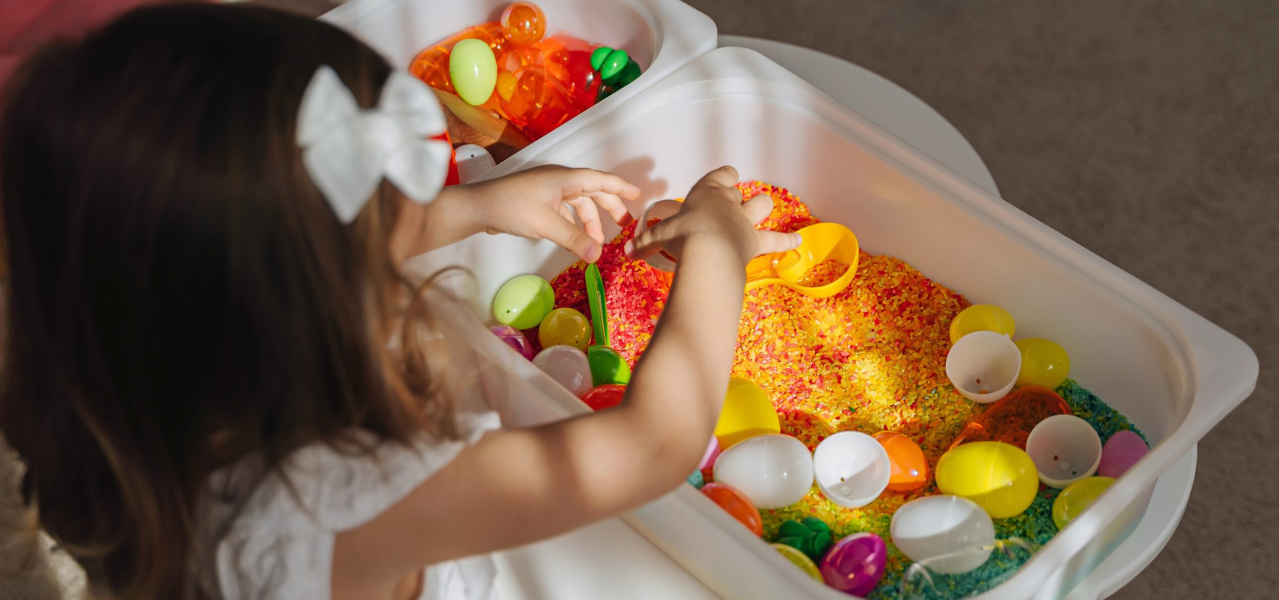
Obstacle Course
A DIY obstacle course can use anything and everything at hand! Jump across stepping stones, balance along a fallen log, climb steps and hop back down, weave in and out among stuffed animals … just use whatever you can find and your creativity. Kids can race each other, try to beat their own best time, or simply enjoy creating new courses to tackle.
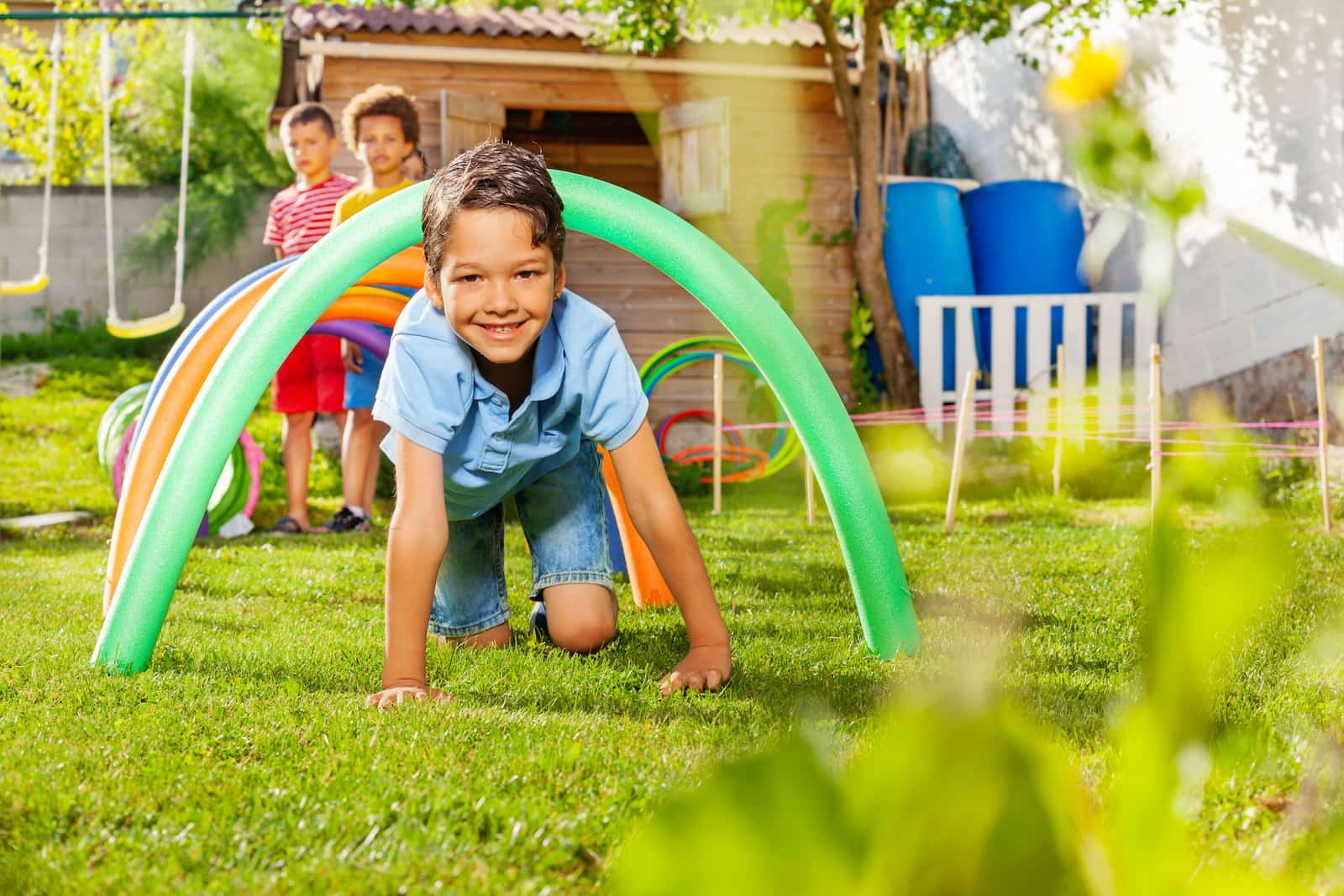
Dramatic and Pretend Play Ideas
Restaurant Role Play
This is the kind of make-believe play that lets kids practice a lot of real-life skills. Taking orders and interacting with “customers” builds social skills. Creating a menu and “preparing” meals incorporates creativity and motor skills. Kids can even make trips to the “grocery store” to buy what they need.
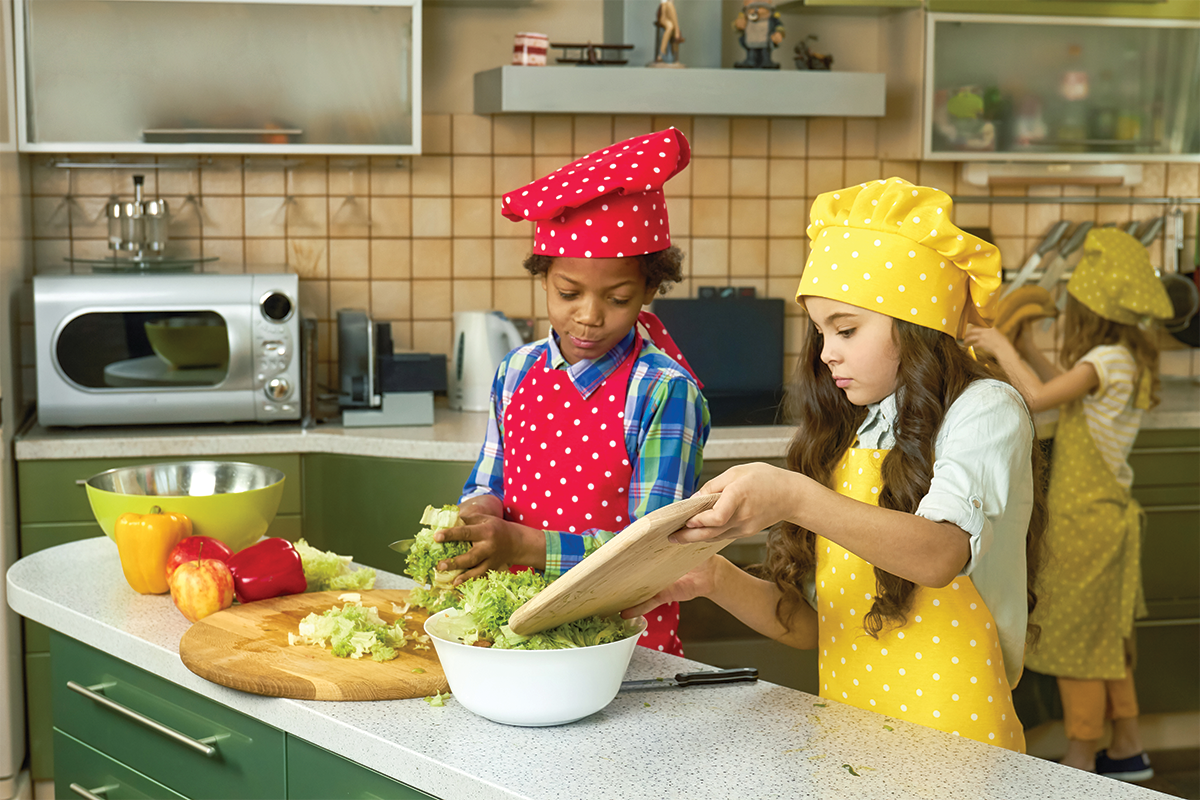
Add in math practice by creating a bill at the end of the meal. Want to make the experience even more meaningful? Let your child take everyone’s “orders” at the dinner table and bring them their actual food!
Dress Up Box
Every kid should have a box full of clothes, shoes, hats, and other accessories to help spark their creativity during imaginative play. Look for fun finds at yard sales and thrift stores, and be sure to stash old Halloween costumes in there too.
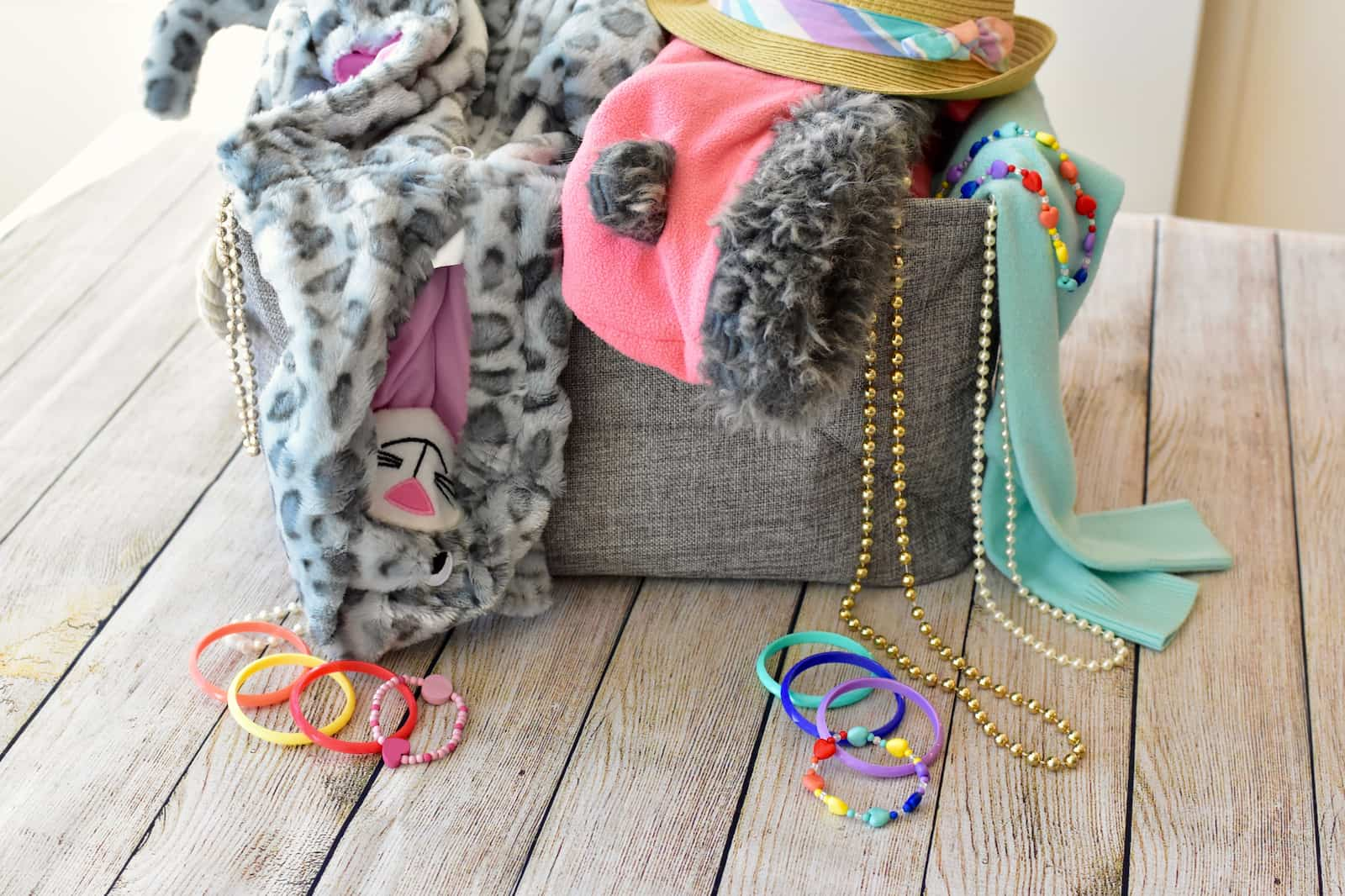
And Then … Storytelling Game
For some kids, making up stories comes easily. Others, though, may have trouble coming up with ideas. Try this storytelling game to help them get started. Start a story, such as: “Once upon a time, a dragon and a chicken met up in the woods, where they were picking blackberries.
They both reached for the same berry at the same time, and then …” Your child continues the tale from there. When they get stuck, give them another short prompt ending with “and then …” to help move the story along.
Toy Animal Zoo
Set up a zoo in your living room or backyard! Do some research and give each stuffed or toy animal its own “habitat.” Make informative signs for each display based on your research. Then, dress as zoo guides or zoologists and offer a tour to guests.
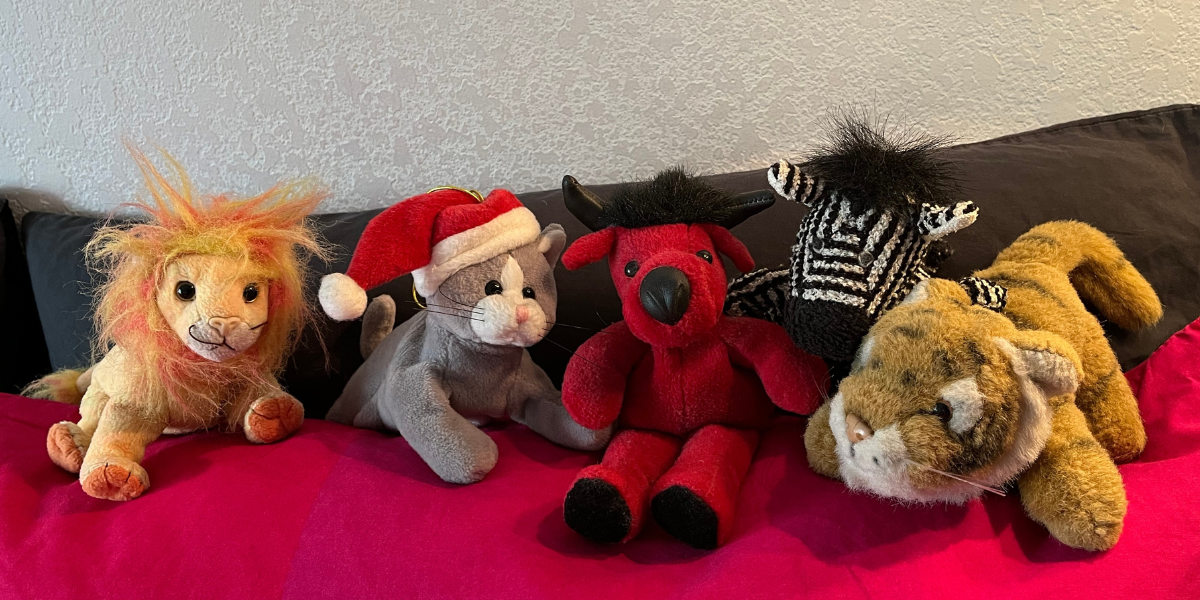
Home Library
Turn your own book collection into a working library! Draw barcode stickers on (removable) adhesive labels, and organize your books into sections like those at the library. Set up a table with a “checkout scanner”, create a few cozy reading nooks, then invite folks in to browse, read, and “check out” books.
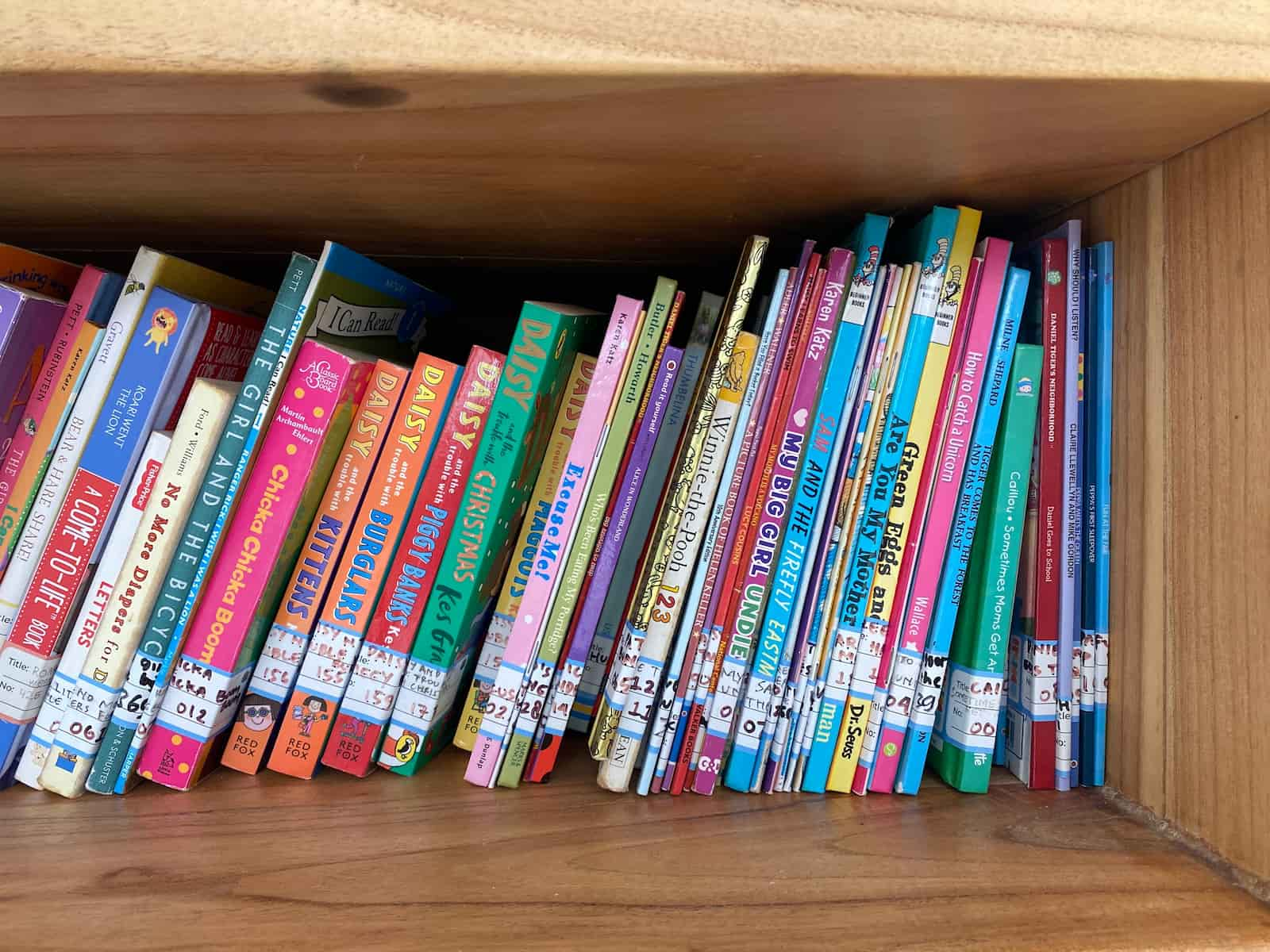
Tips for Parents and Teachers Using These Activities
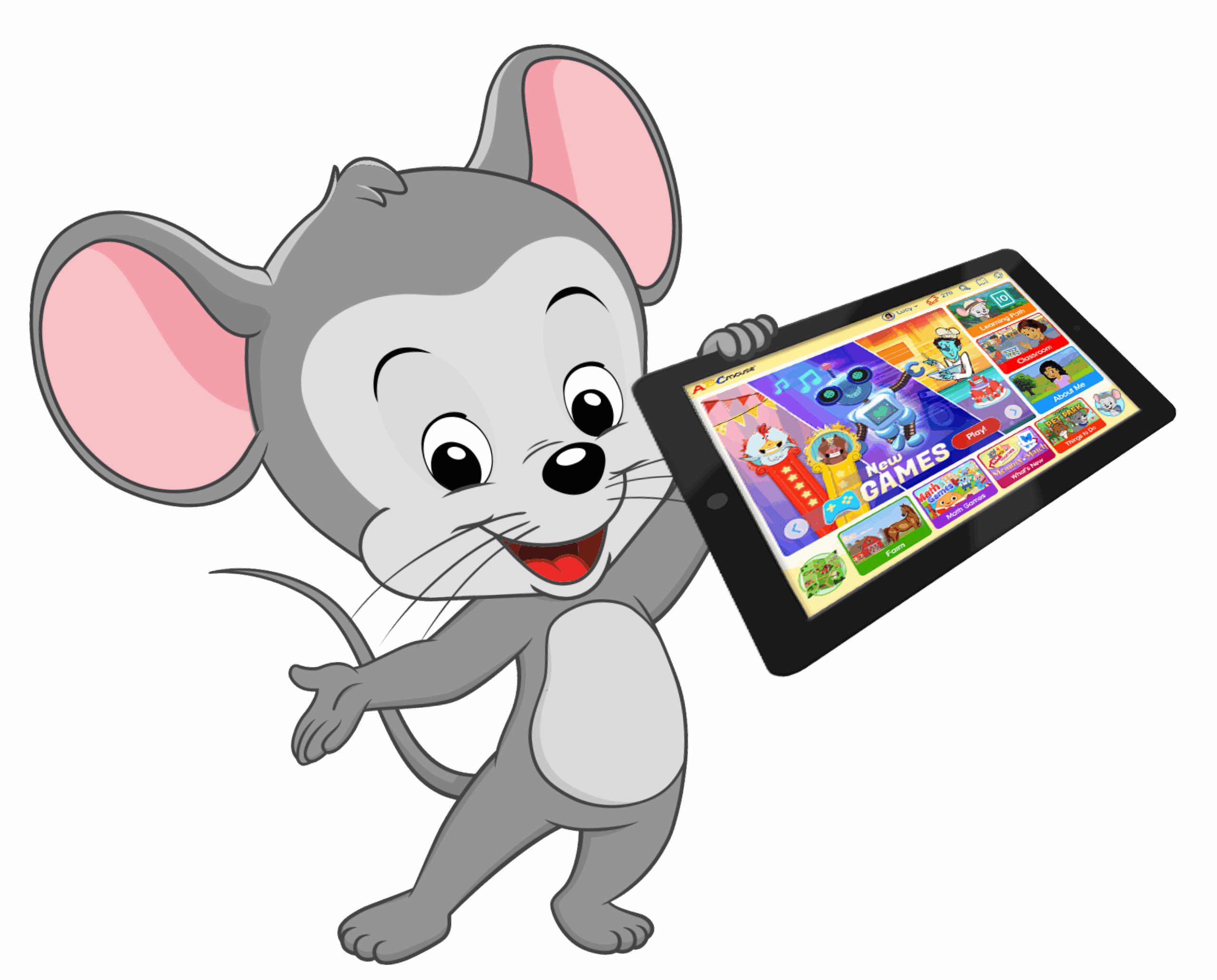
Do: Let your child take the lead.
Don’t: Try to control the game.
You can provide ideas for play-based learning, along with some supplies and parameters. But once the play gets going, resist the urge to steer the play in any particular direction. When kids are young, they’re learning something from almost everything they do. So even if the game isn’t exactly what you expected, as long as it’s safe, embrace it and play along.
Do: Encourage creative thinking.
Don’t: Focus on “right answers” or the “right way” to do it.
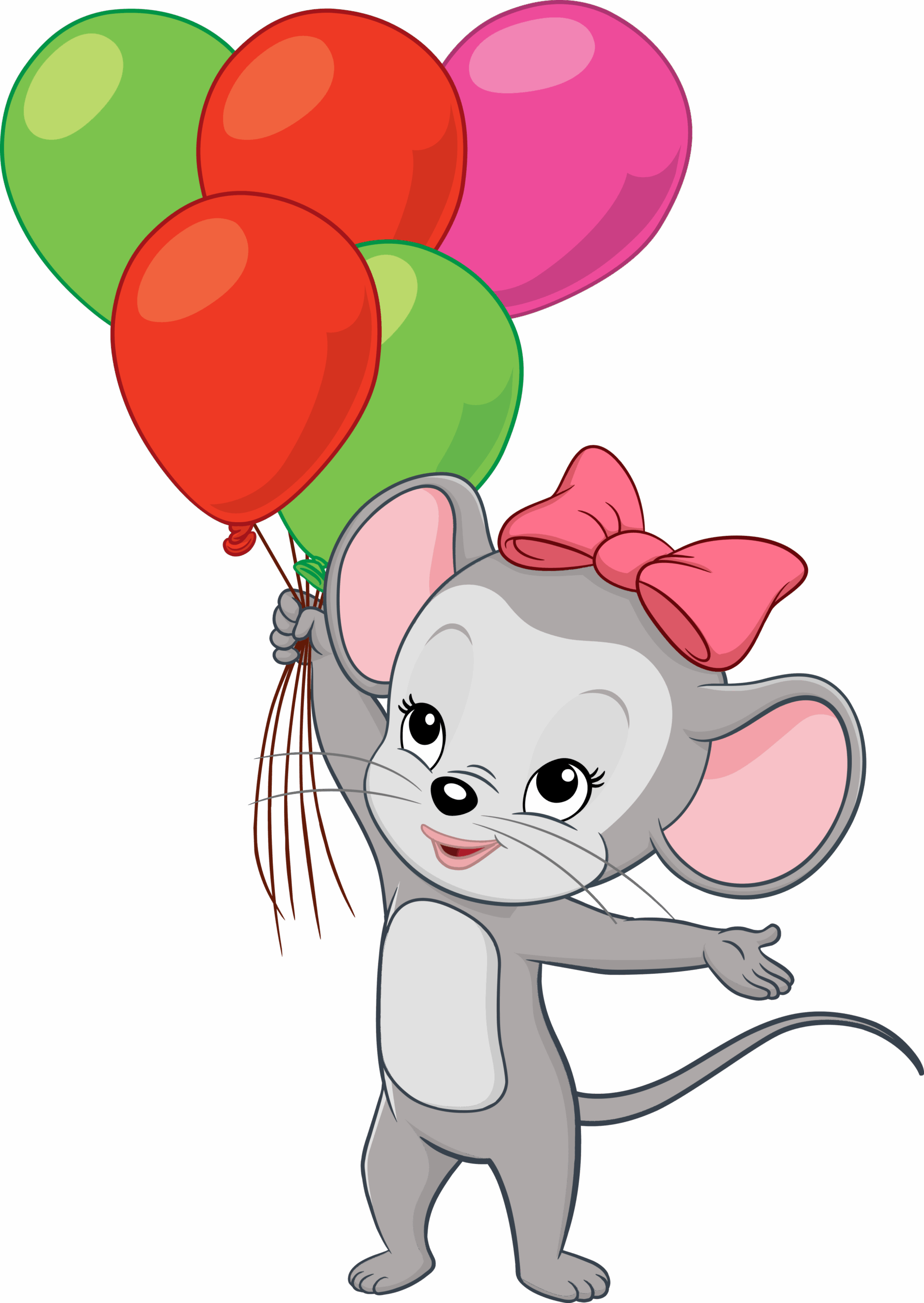
If you give kids a challenge, let them come up with their own way to solve the problem. For example, when playing a board game, children often make up their own rules. As long as everyone in the game agrees to play that way, that’s okay! Worry less about “the instructions say to do this” and more about having fun and trying something new.
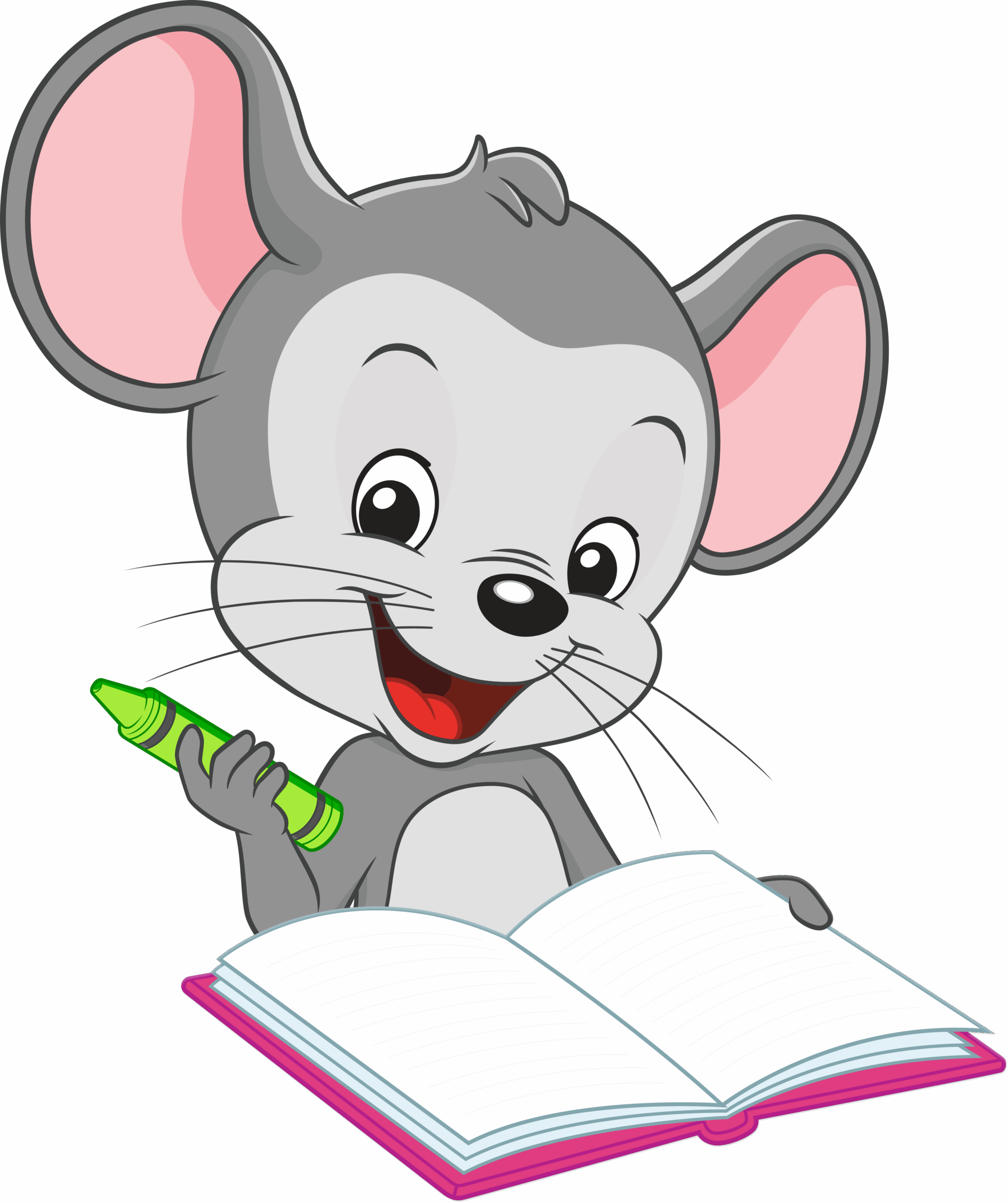
Do: Let them try and fail.
Don’t: Say, “Here, let me do that for you.”
It’s so tempting to help kids with a task, but when we do, we risk sending the message that they can’t or don’t need to learn to do it themselves. When you give your child a new toy or gadget, let them experiment with it for a bit, no guidance provided.
Over time, they’ll work out how to get it started, how to get the lid off, or how to put the pieces together all on their own. Discovering something for themselves makes them much more likely to remember how to do it later.
Do: Ask open-ended questions about their experiences.
Don’t: Test their knowledge constantly.
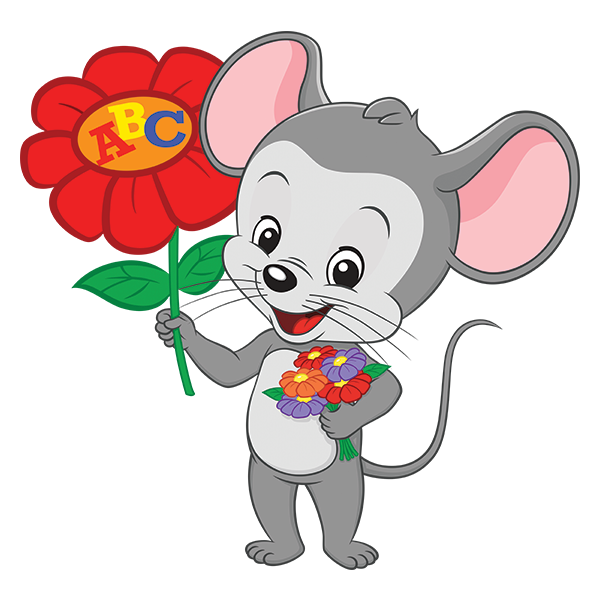
For some play-based learning games, you’ll need to ask very targeted questions, like “Who has the least number of cards left?” or “Which one of these has 7 dots?” But more authentic learning comes from open-ended questions, like “What do all these things have in common?” or “What made you try doing it that way?”
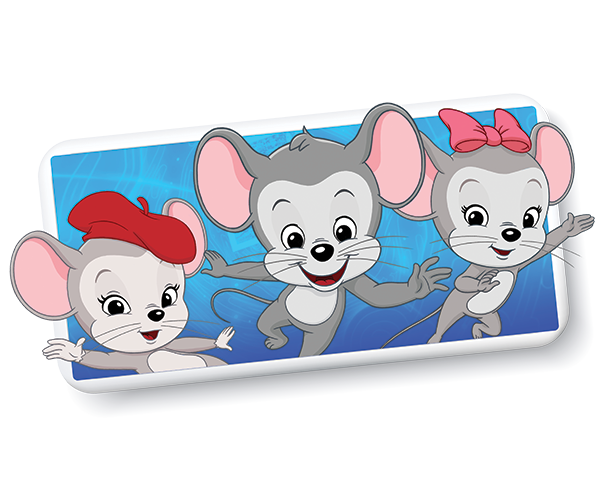
Do: Believe your child learns through all sorts of play.
Don’t: Fill your child’s time with too many structured activities.
Team sports, music lessons, games with lots of rules—there are benefits to all of these types of play and learning. But unstructured play encourages creative thinking and problem solving and builds a strong sense of independence too. Make time for both structured and unstructured play in your child’s schedule.
Do: Provide simple toys and items that encourage creativity.
Don’t: Restrict their toys and games to those “designed for learning.”
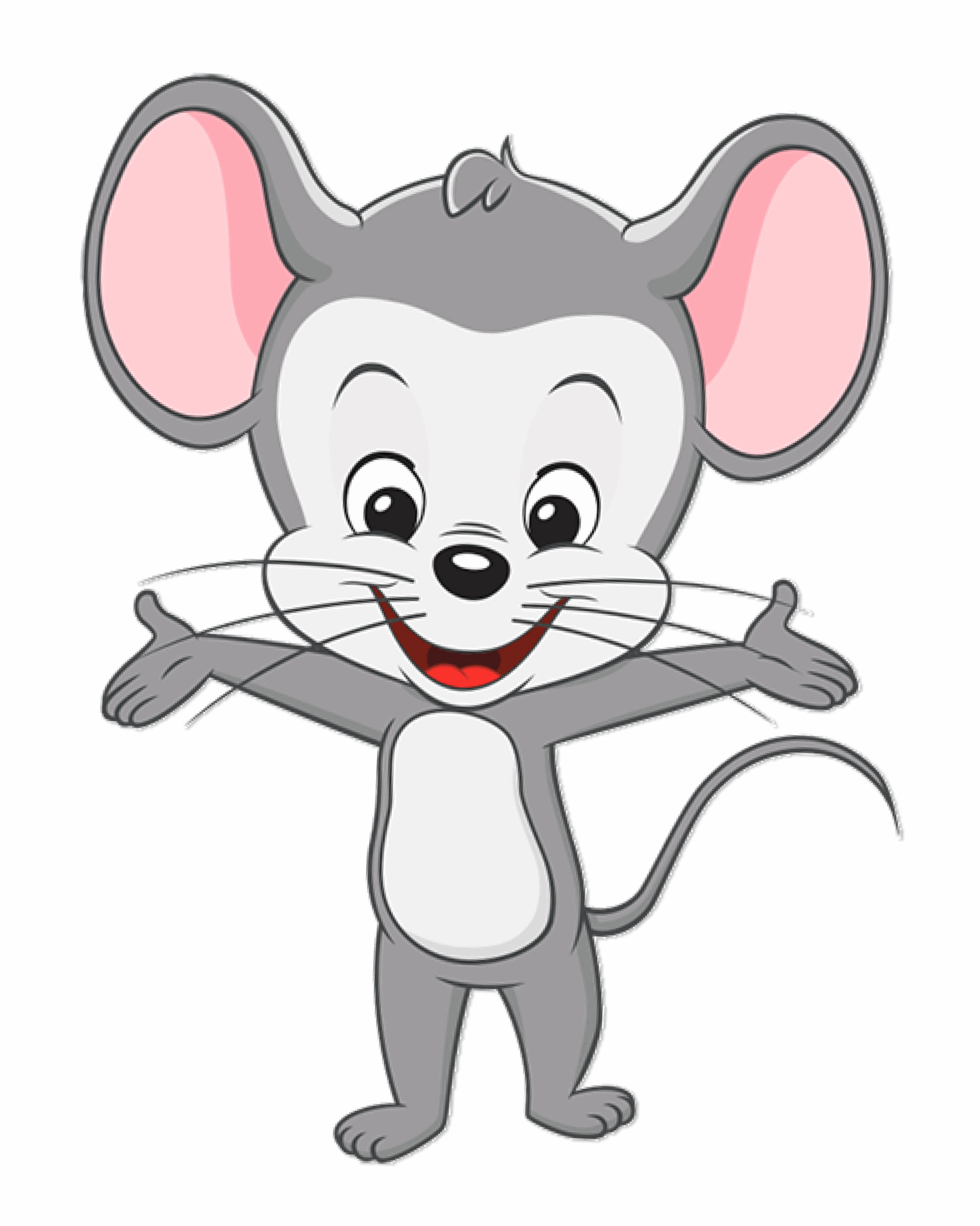
Learning toys and games definitely have their place. But pretty much any toy, game, or kid-friendly item can lead to learning opportunities. A box of pipe cleaners and beads allows for all sorts of imaginative play, from making shapes to designing jewelry to creating patterns and more. A stack of newspapers and masking tape can become just about anything when combined with a strong imagination. Here are some more play-based learning items to keep in your rotation:
- Building blocks of all kinds
- Cardboard boxes and tubes
- Art supplies
- Yarn, rope, and fabric scraps
- Kid-friendly tools (knives made to cut cardboard but not skin, etc.)
- Small pieces of styrofoam and wood
- Empty containers, with and without lids
- Finger puppets, dolls, and figurines
- Pattern blocks
- Toy food and kitchen supplies
- Magnifying glass, binoculars, and microscopes
- Measuring tools (rulers, tapes, cups, scales, etc.)
Legal Disclaimer: Any information, materials, or links to third-party resources are provided for informational purposes only. We are not affiliated with and do not sponsor/endorse these third parties and bear no responsibility for the accuracy of content on any external site.


100+ Fun Florida Facts Kids Will Love to Learn
(Free Printable List)
Share
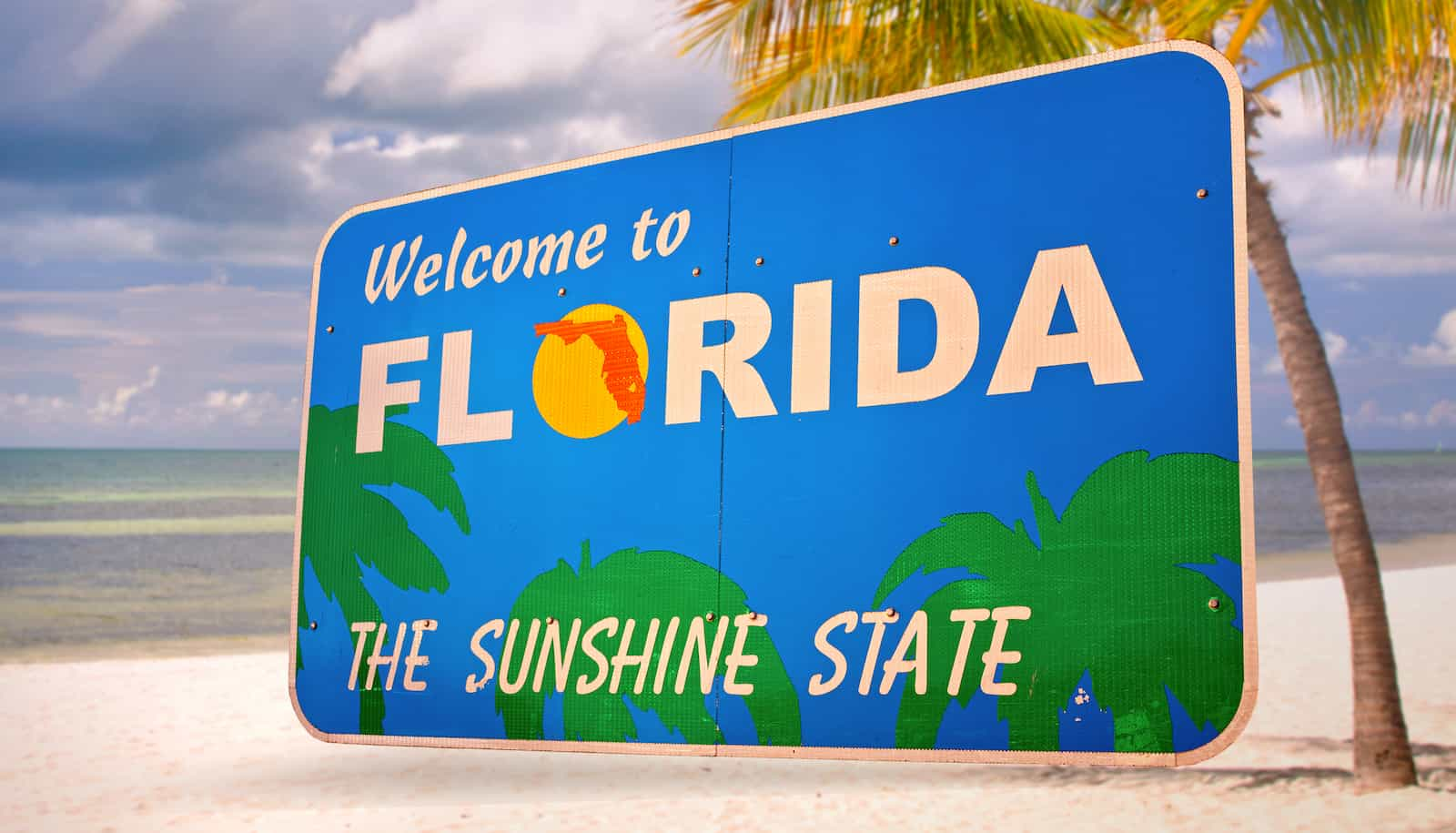
Welcome to the Sunshine State, with an average of 237 sunny days each year! Known for oranges, hurricanes, alligators, and DisneyWorld, Florida is an incredible place to explore. Learn all about it with interesting Florida facts on history, geography, and wildlife, plus find maps and other helpful illustrations.
Get all this information in one place with our free Florida facts printable. Use it in the classroom with students or to prep for a visit to this beautiful state!

FLORIDA STATE FACTS
State Nickname:
Sunshine State
Date of Statehood:
March 3, 1845
State Capital:
Tallahassee
State Animal:
Florida Panther
State Motto:
In God We Trust
State Beverage:
Orange Juice
State Wildflower:
Coreopsis
State Reptile:
American Alligator
State Butterfly:
Zebra Longwing
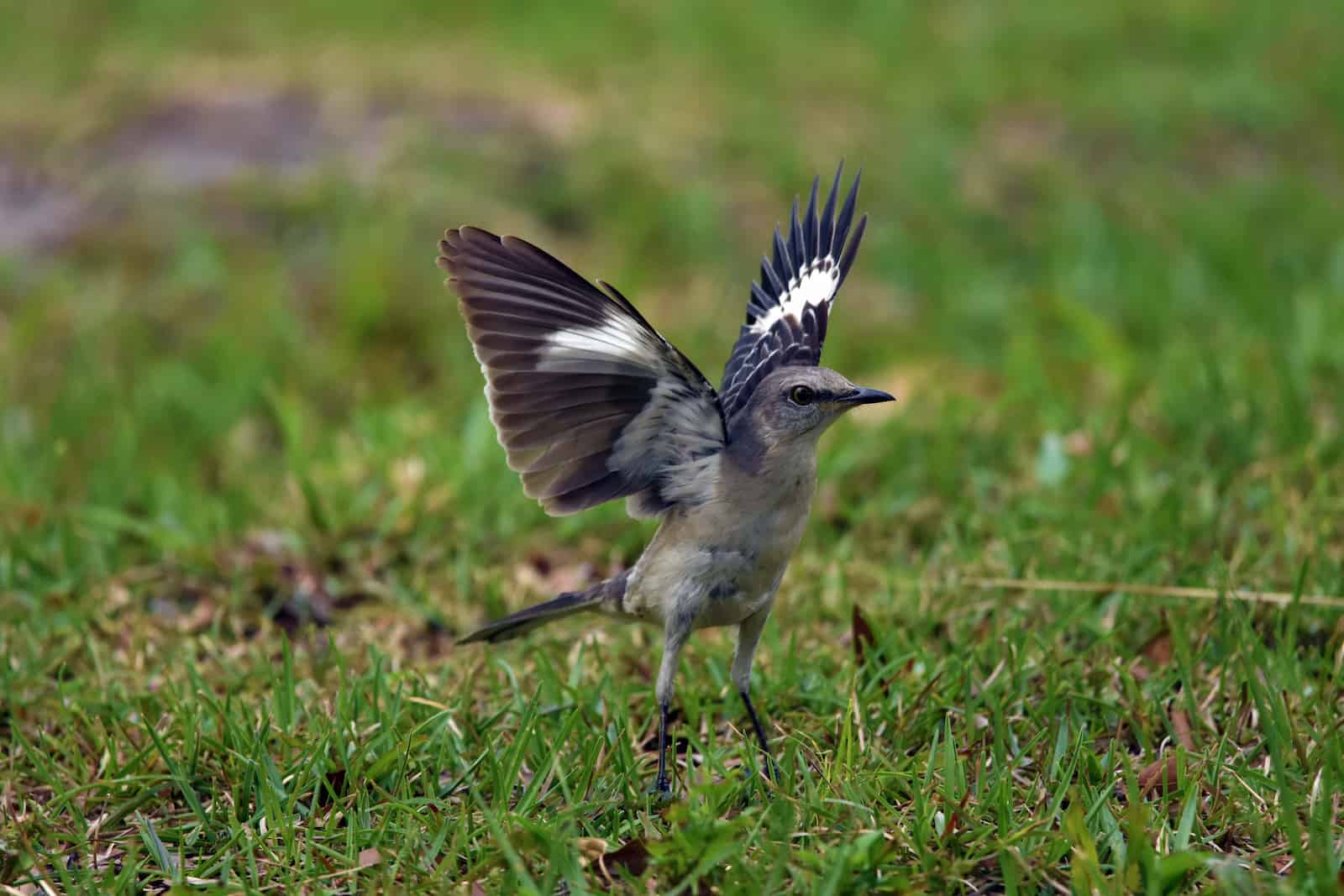
State Bird: Mockingbird
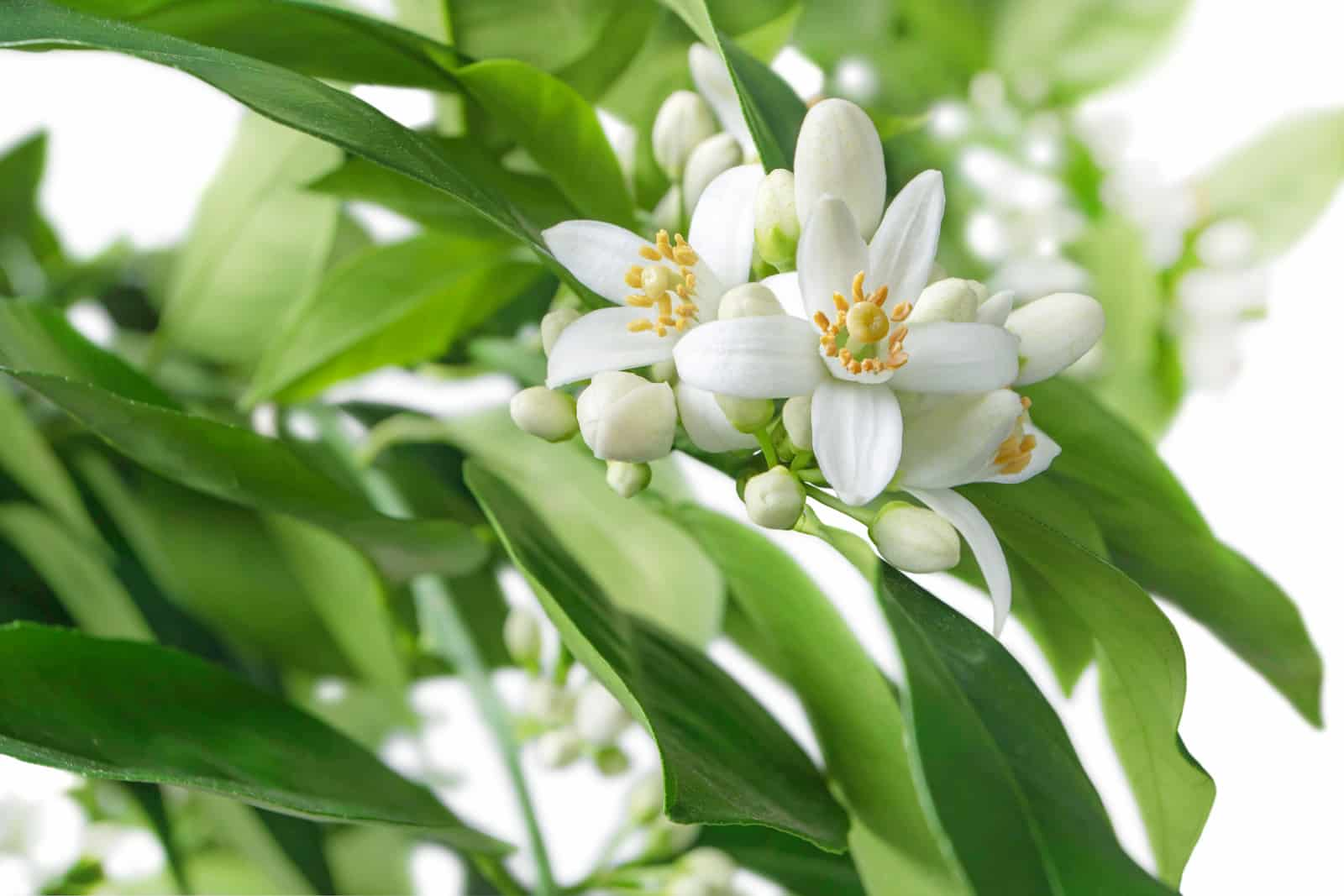
State Flower: Orange Blossom
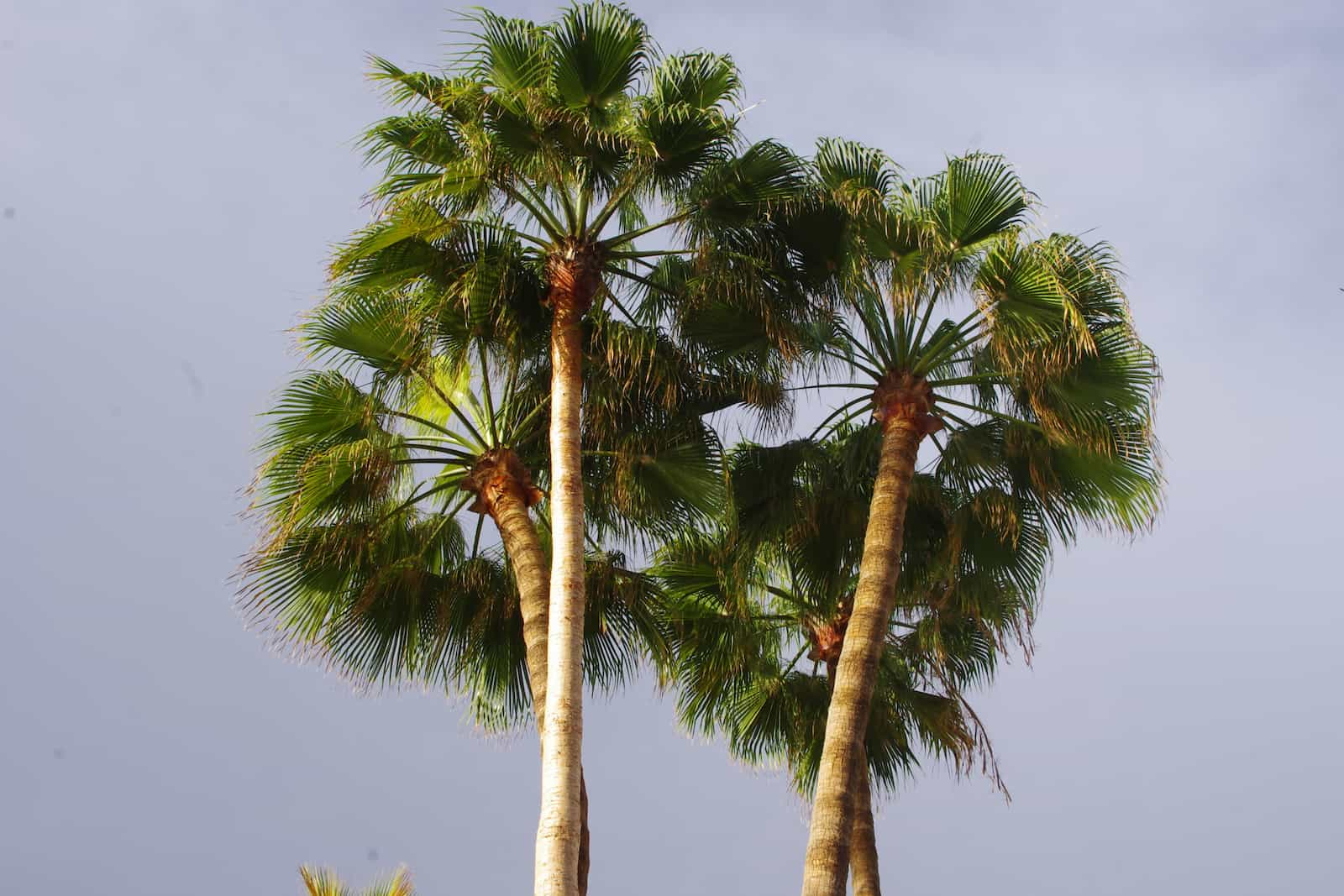
State Tree: Sabal Palm

State Flag:
Flag of Florida
?
DID YOU KNOW?
Florida’s flag was originally just the state seal on a white background. In the late 1890s, a red saltire—also known as St. Andrew’s Cross—was added so the flag wouldn’t resemble a white flag of truce when hanging still. The design was officially adopted by the Florida legislature in 1900.

FUN FACTS ABOUT FLORIDA
Fun Fact #1:
Florida ranks #26 in size among U.S. states, at 53,997 square miles.
Fun Fact #2:
St. Augustine, Florida is the oldest city in the United States—it’s been continuously occupied since 1565. This beats Jamestown by 42 years, and the Plymouth Rock Pilgrims by 55 years.

Lake Boca Raton during a storm.
Fun Fact #3:
Florida is known as the lightning capital of the United States, with an average of 1.2 million lightning strikes annually.

Jacksonville, Florida
Fun Fact #4:
The largest cities in Florida are Jacksonville, which has nearly a million people, followed by Miami, Tampa, and Orlando.

Crocodiles in the Everglades
Fun Fact #5:
Florida is the only place in the world where alligators and crocodiles live side-by-side. While the American alligator can be found in freshwater throughout Florida, the American crocodile mainly lives in south Florida, in brackish and saltwater. They coexist in Florida’s brackish water.
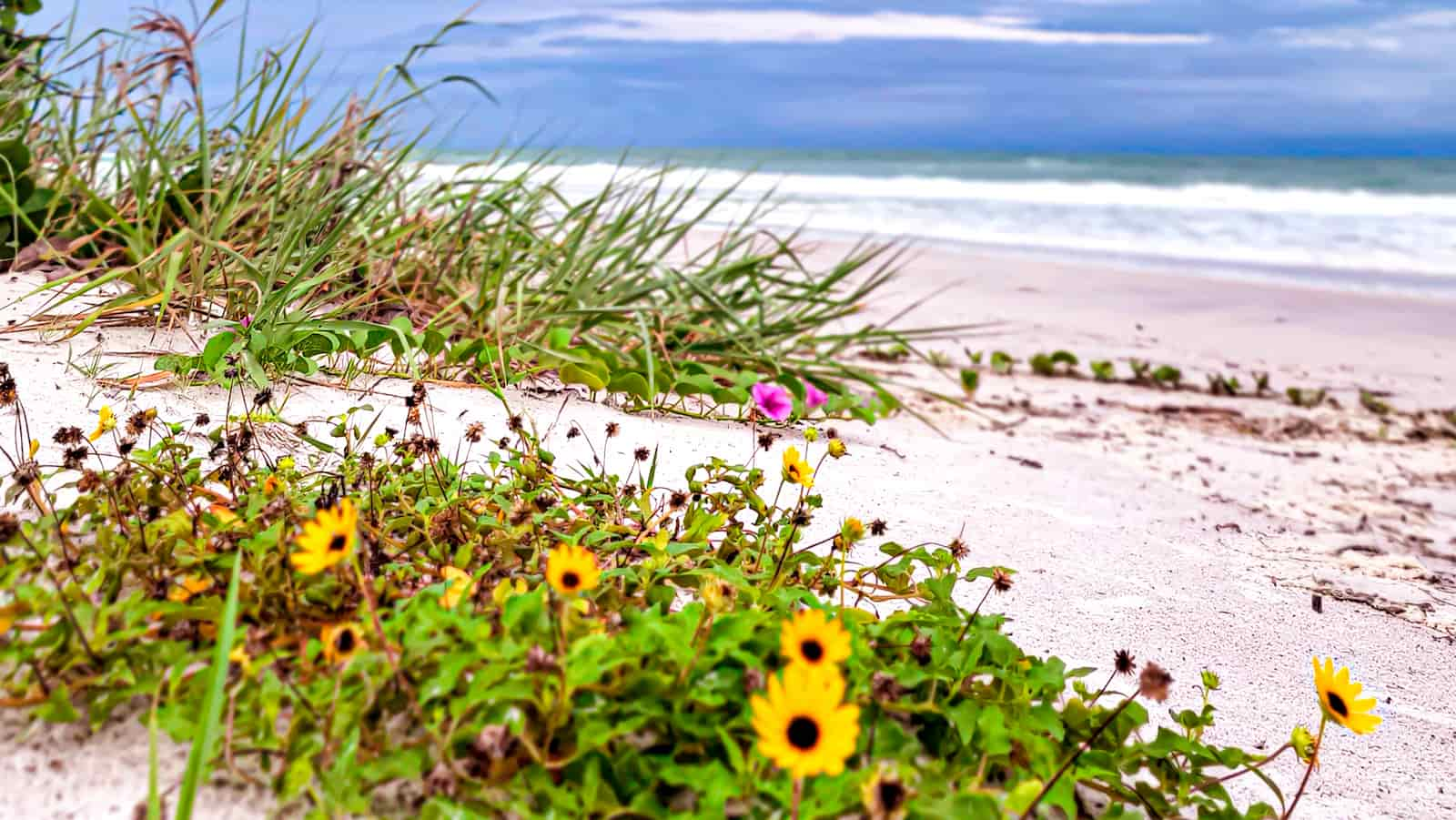
Redington Beach Florida
Fun Fact #6:
The Spaniards first called Florida La Florida, which means “place of flowers.”
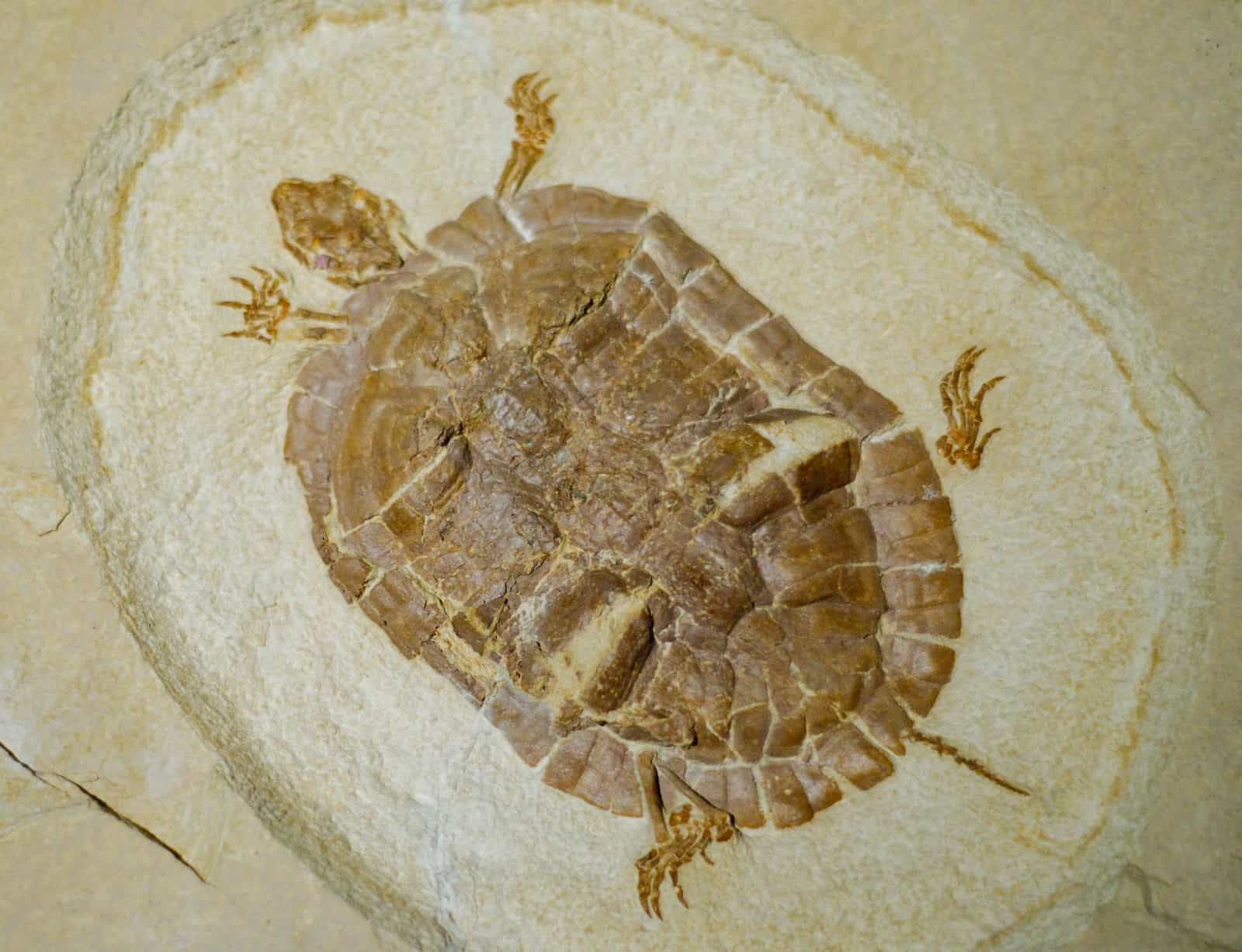
Turtle Fossilized in Sandstone
Fun Fact #7:
Florida has plenty of fossils, but none of them are of dinosaurs. During the age of the dinosaurs, Florida was completely underwater. The oldest fossil found in the state is of a sea turtle, from 100 million years ago.
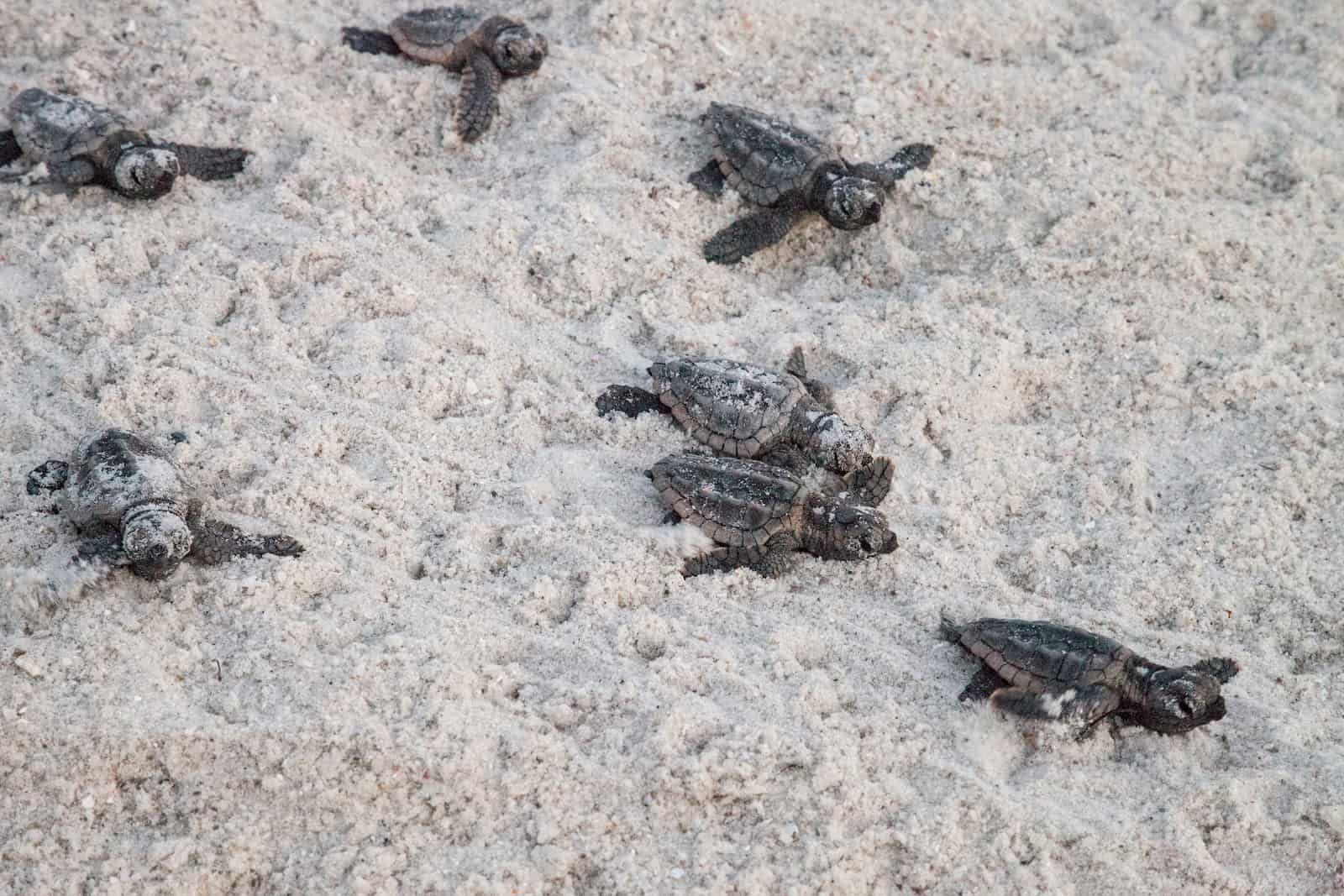
Baby Loggerhead Sea Turtles
Fun Fact #8:
Today, sea turtles still love Florida! Three different species regularly crawl ashore here to lay their eggs on its sandy beaches: loggerheads, leatherbacks, and green turtles. (A few Kemp’s ridley and hawksbill turtles nest here too.)

Falcon 9 Launch in Cape Canaveral
Fun Fact #9:
Florida’s major industries include tourism and agriculture. The state is also known for aviation and aerospace, with many rocket launches happening from Kennedy Space Center and nearby Cape Canaveral Air Force Base.
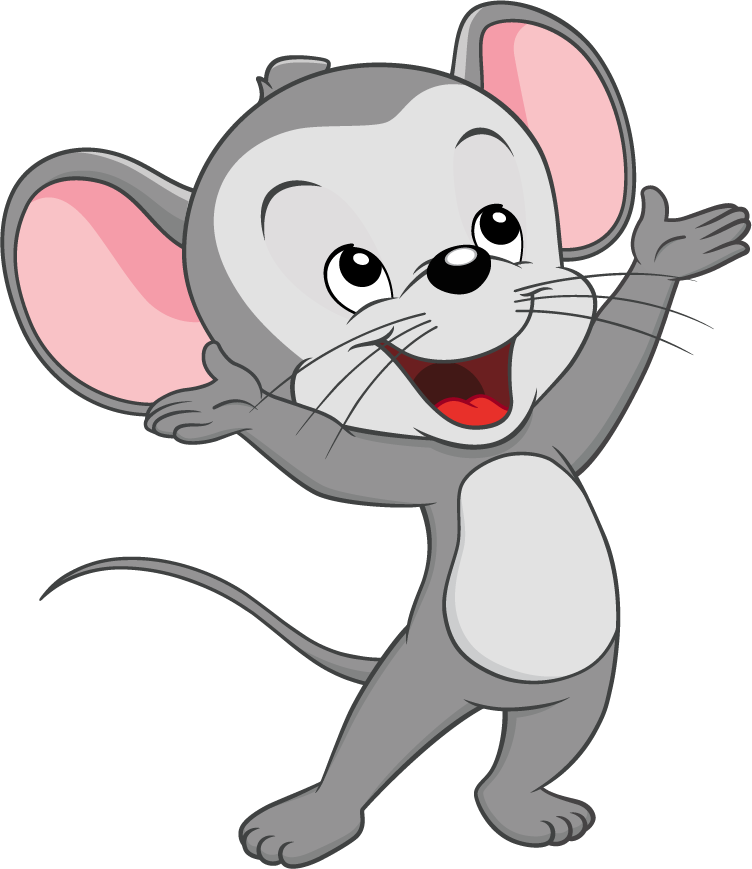
Fun Fact #10:
Did you know that it actually snowed in Florida in 1977? People in Miami saw snowflakes for the first time ever—it was so rare that some kids thought it was sugar falling from the sky!

FLORIDA GEOGRAPHY FACTS
Regions:
Coastal Plains, Central Highlands, Florida Everglades, Panhandle, Florida Keys
Climate:
Humid subtropical to tropical
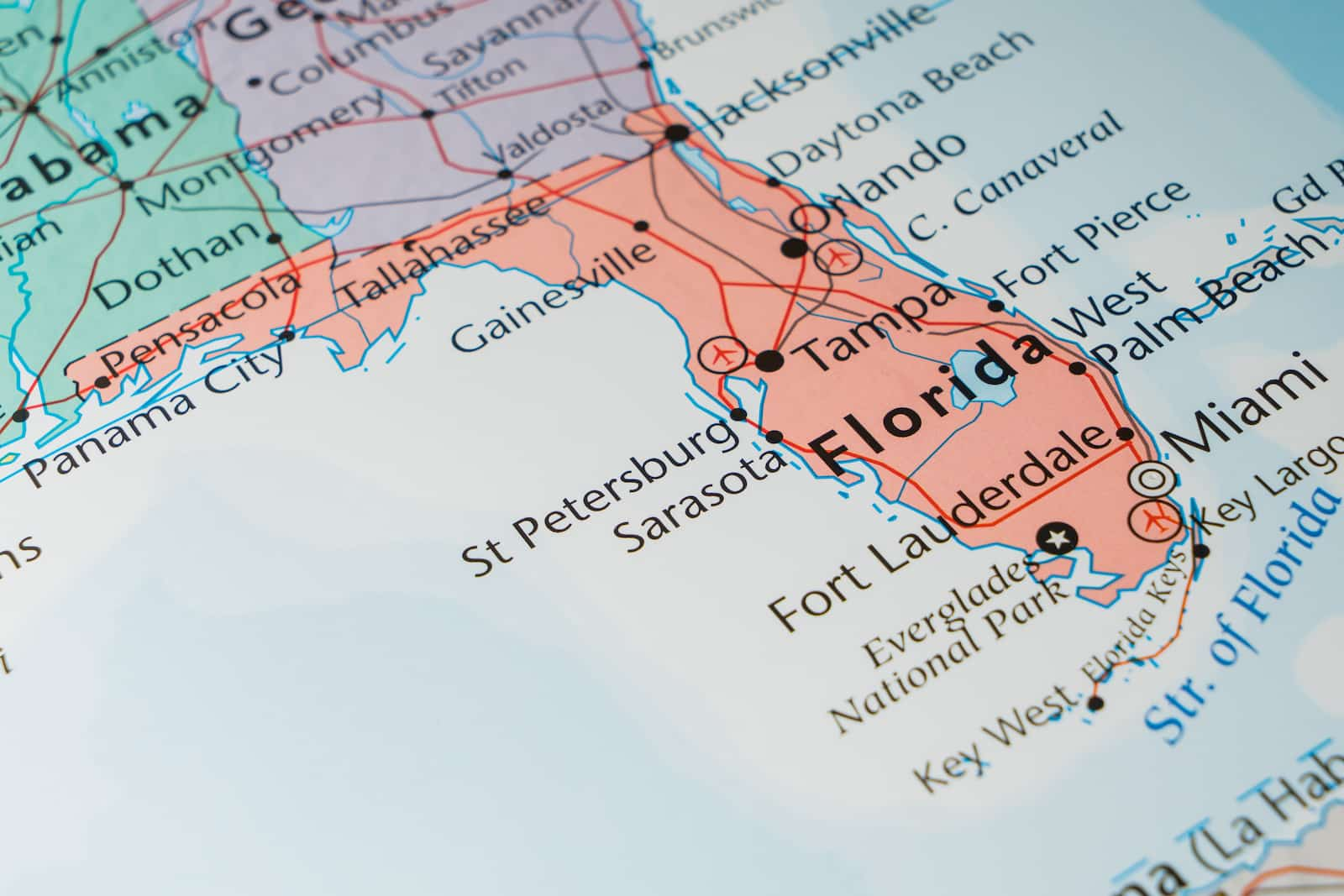
Location:
Florida is bordered by Georgia and Alabama to the north, the Atlantic Ocean to the east, the Gulf of Mexico to the west, and the Straits of Florida to the south.

Entrance to Walt Disney World
Landmarks:
DisneyWorld, Kennedy Space Center, South Beach, Castillo de San Marcos, Seven Mile Bridge, Sunshine Skyway Bridge, Ocala National Forest, Weeki Wachee Springs, Florida Reef

Coral Reef in Biscayne National Park
National Parks:
Everglades National Park, Biscayne National Park, Dry Tortugas National Park

Aerial View of Key West
Florida Keys:
This curved chain of small islands stretches 225 miles from the southern tip of Florida’s mainland to the Dry Tortugas in the Gulf of Mexico. Key West, at its lower end, is the southernmost point in the United States.

Sarasota Florida
Ocean Front:
Florida has the second longest coastline (after Alaska) in the U.S. When you add in all the islands, inlets, and bays, the coastline totals 8,436 miles!

St John’s River, Deland Florida
River Systems:
The longest river in Florida is the St. John’s River, which stretches nearly 300 miles. There are nearly 26,000 miles of rivers in the state. Other major river systems include the Suwanee, Apalachicola, Peace, Withlacooche, St. Mary’s, and Ocklawaha.

Sunset on Lake Okeechobee
Lakes:
Florida’s largest freshwater lake is Okeechobee. It’s about 35 miles long and is the third largest freshwater lake contained entirely inside the U.S. Okeechobee is the Hitchiti Indian name for “big water.”
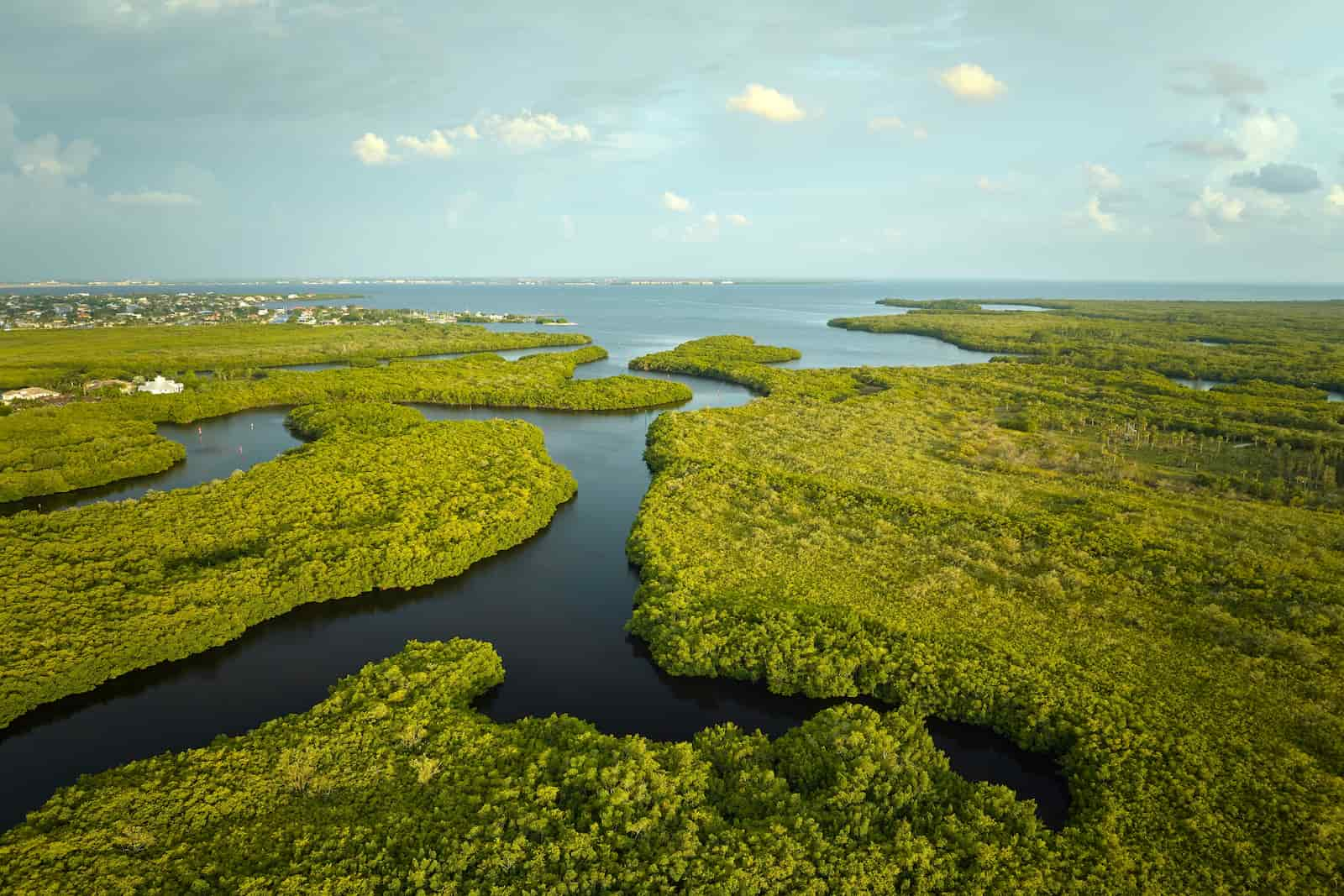
Everglades Swamp
Florida Everglades:
The Florida Everglades is a vast wetland ecosystem in southern Florida, filled with sawgrass marshes, mangroves, and diverse wildlife. Though sometimes called a swamp, the water here is actually always on the move (though very slowly) toward the south—a phenomenon known as “sheet flow.”
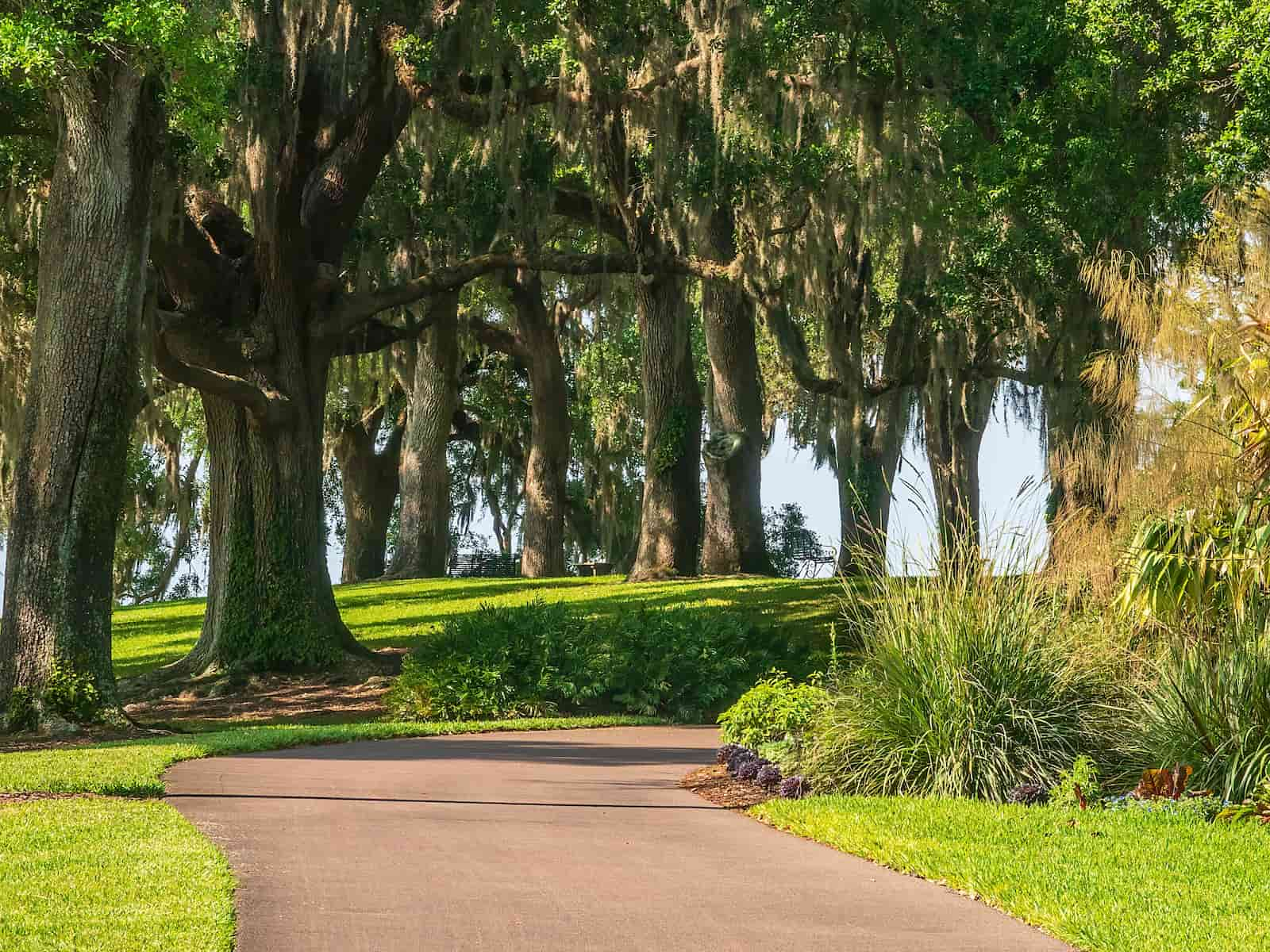
Garden path in Iron Mountain
Highest Point:
Britton Hill on the Lake Wales Ridge is 345 feet above sea level. It’s the lowest “highest point” of any state in the U.S.

FLORIDA WILDLIFE & NATURE FACTS
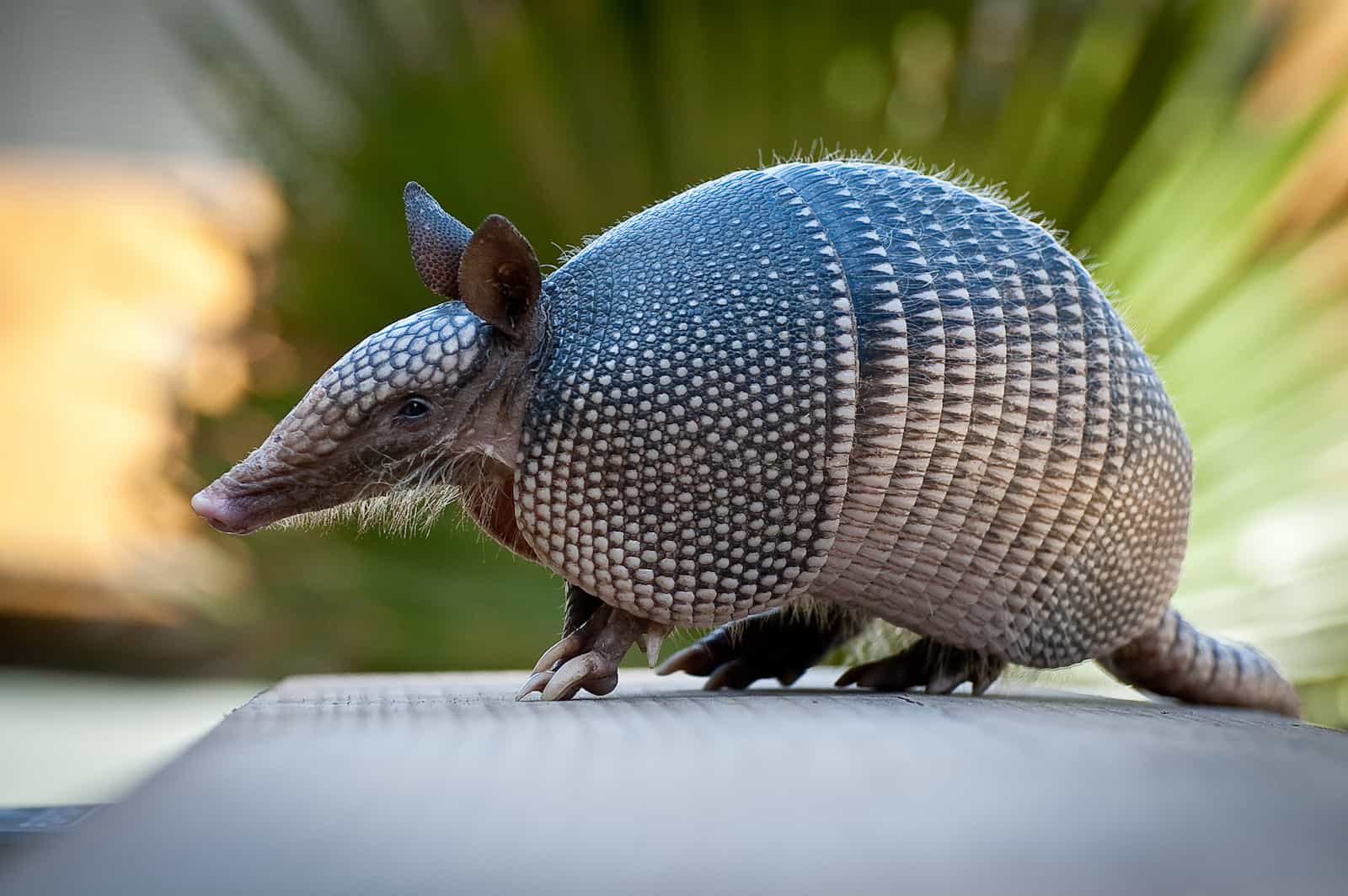
Nine-Banded Armadillo
Common Mammals:
White-tailed deer, marsh rabbit, nine-banded armadillo, eastern gray squirrel, bobcat, cotton mouse, Virginia opossum, striped skunk, raccoon, bottlenose dolphin
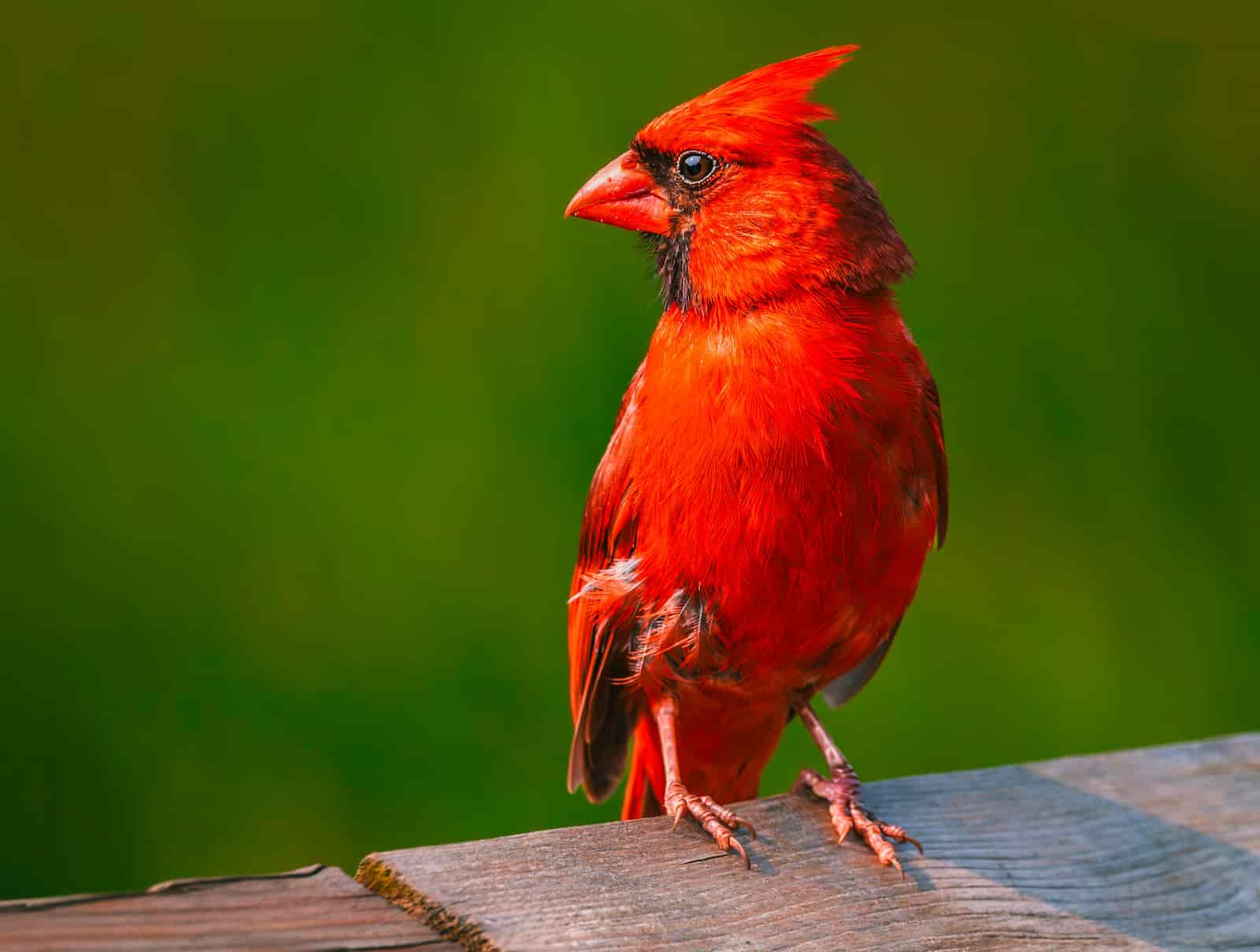
Northern Cardinal
Common Birds:
Northern cardinal, red-bellied woodpecker, great egret, great blue heron, tricolored heron, bald eagle, osprey, wood stork, anhinga, double-crested cormorant, roseate spoonbill
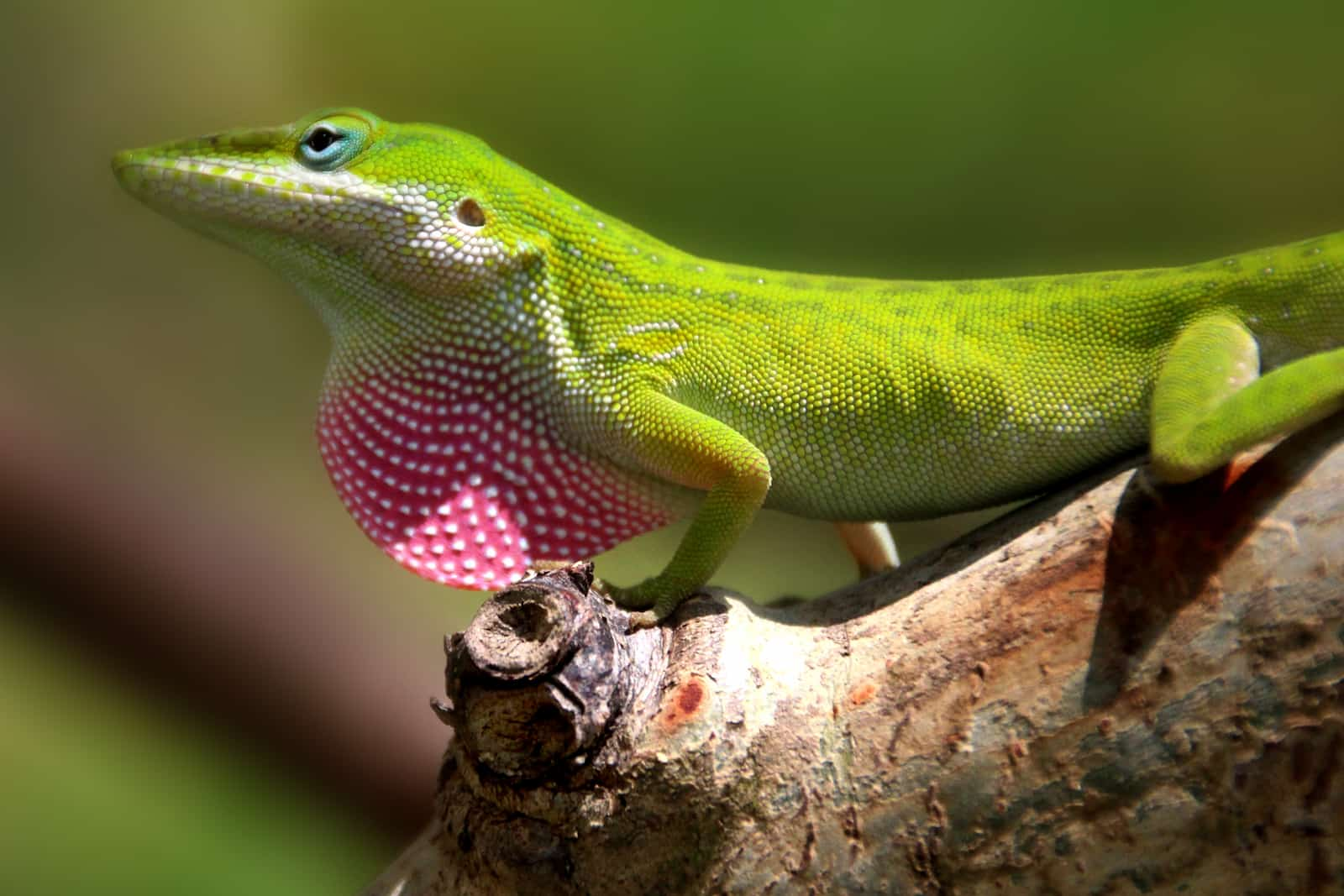
Anolis carolinensis or Green Anole
Common Reptiles and Amphibians:
American alligator, box turtle, gopher tortoise, green anole, southern toad, Florida cottonmouth, American tree frog
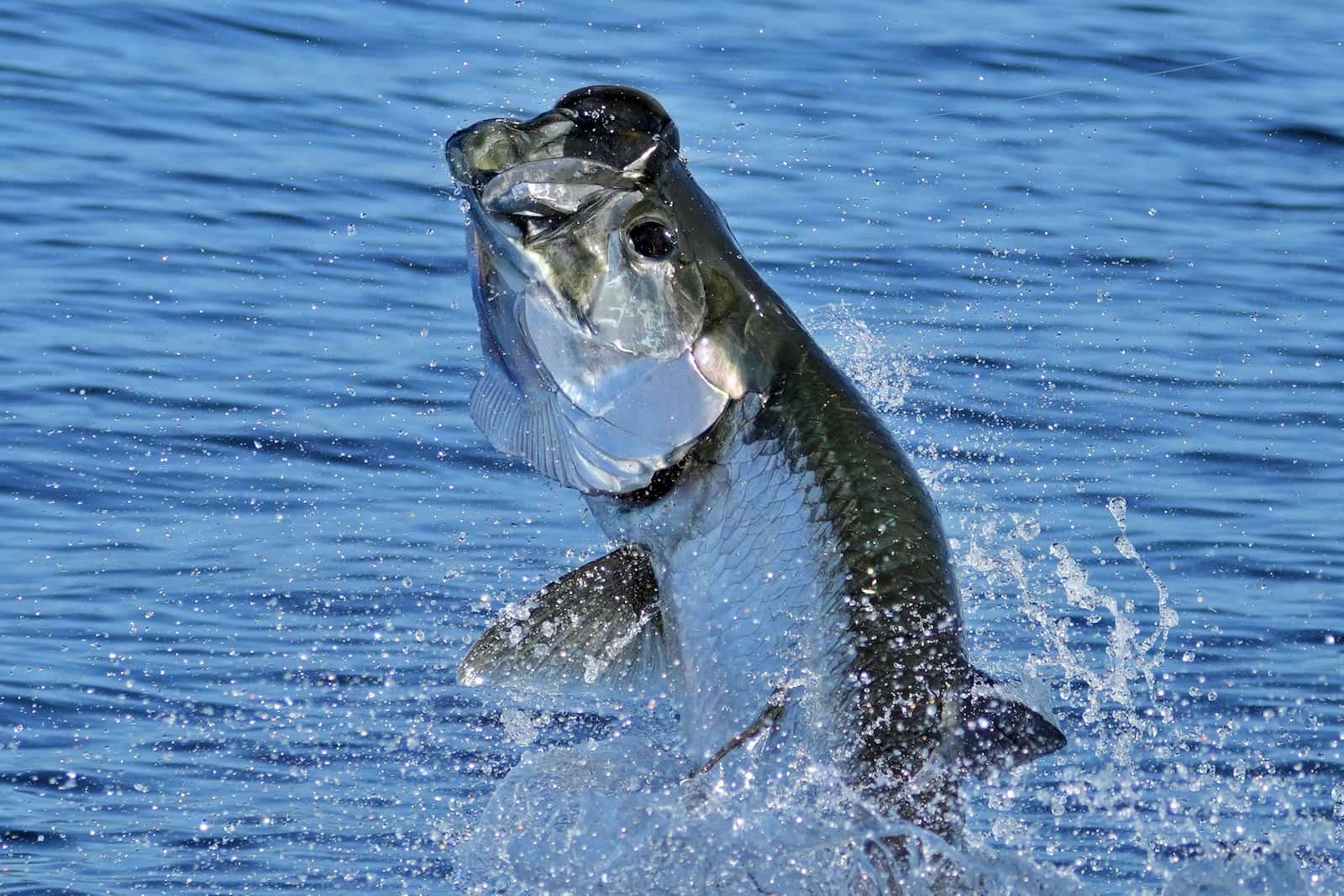
Tarpon Jumping
Common Fish:
Tarpon, Florida gar, snook, red drum, grouper, mangrove snapper, sheepshead, pinfish, blacktip shark, bull shark, tiger shark, hammerhead shark, bonnethead shark
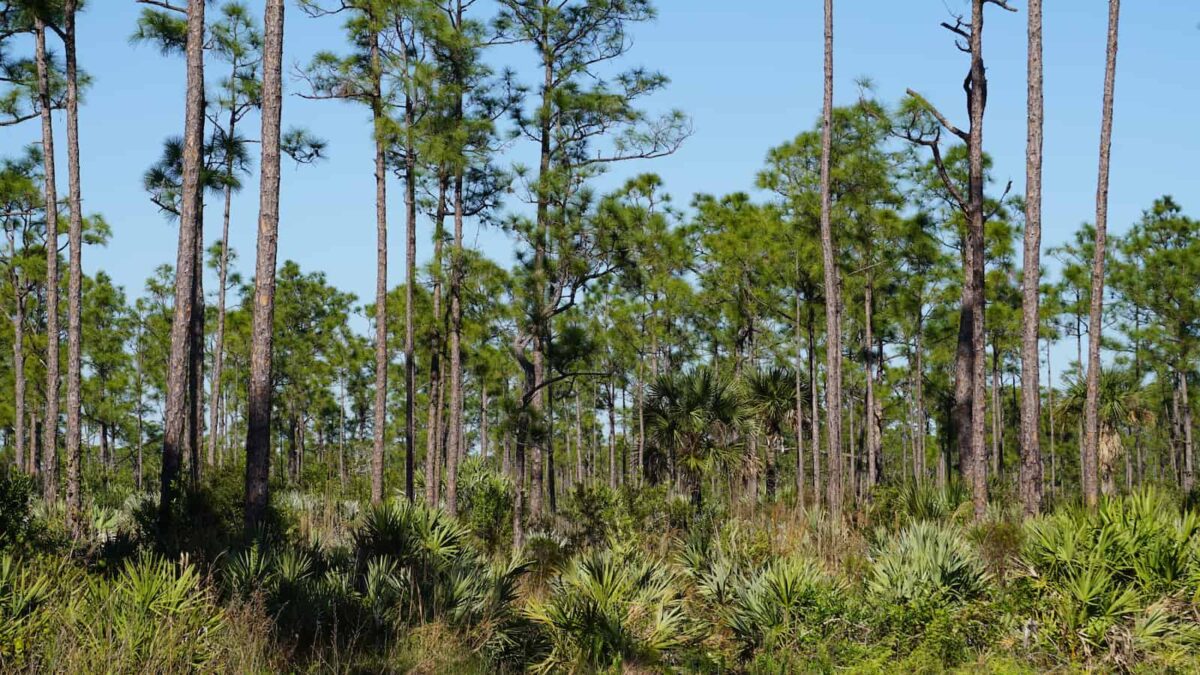
Florida Pine Forest
Common Trees:
Scrub pine, live oak, pin oak, red cypress, sabal palm, coconut palm, southern magnolia, bald cypress, longleaf pine, wax myrtle
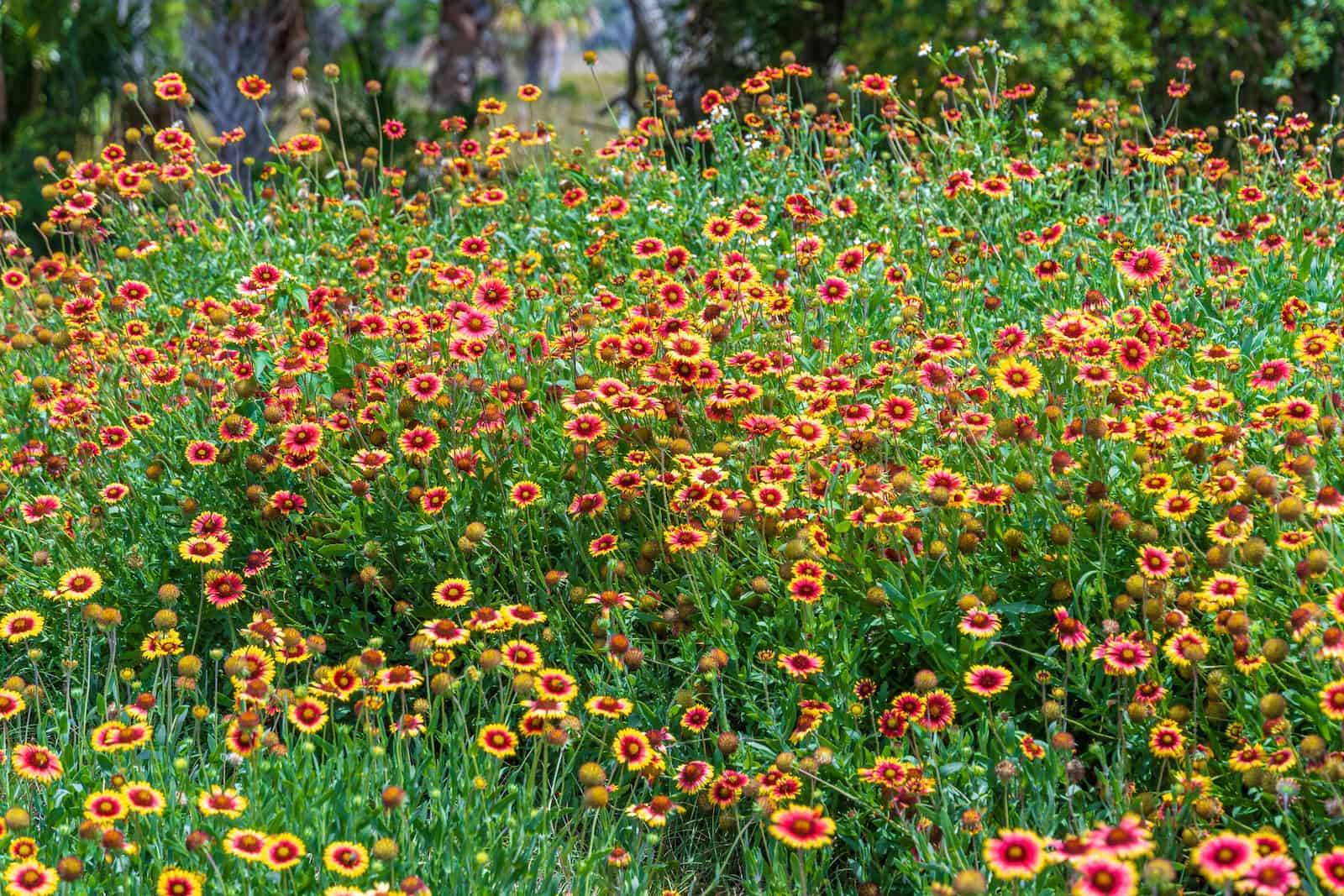
Firewheel a.k.a. Indian Blanket
Common Plants and Flowers:
Blanketflower, beach sunflower, firebush, tickseed, hibiscus, coontie, beautyberry, buttonwood, muhly grass, lovegrass, sea oats, Spanish needle
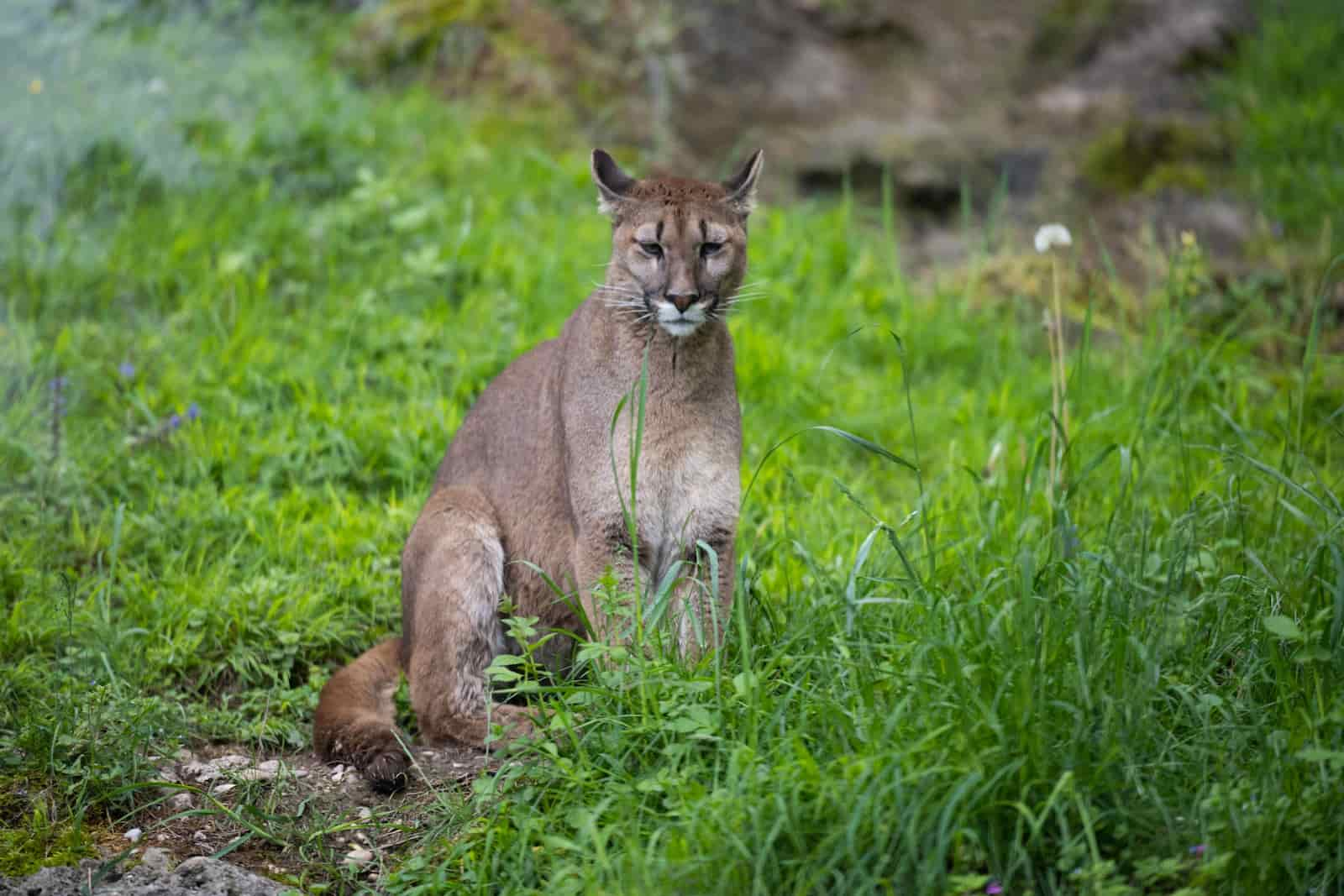
Florida Panther
Selected Endangered Species:
Florida panther, West Indian manatee, Florida scrub jay, Schaus swallowtail butterfly, Key deer, Miami blue butterfly, Florida grasshopper sparrow, loggerhead sea turtle
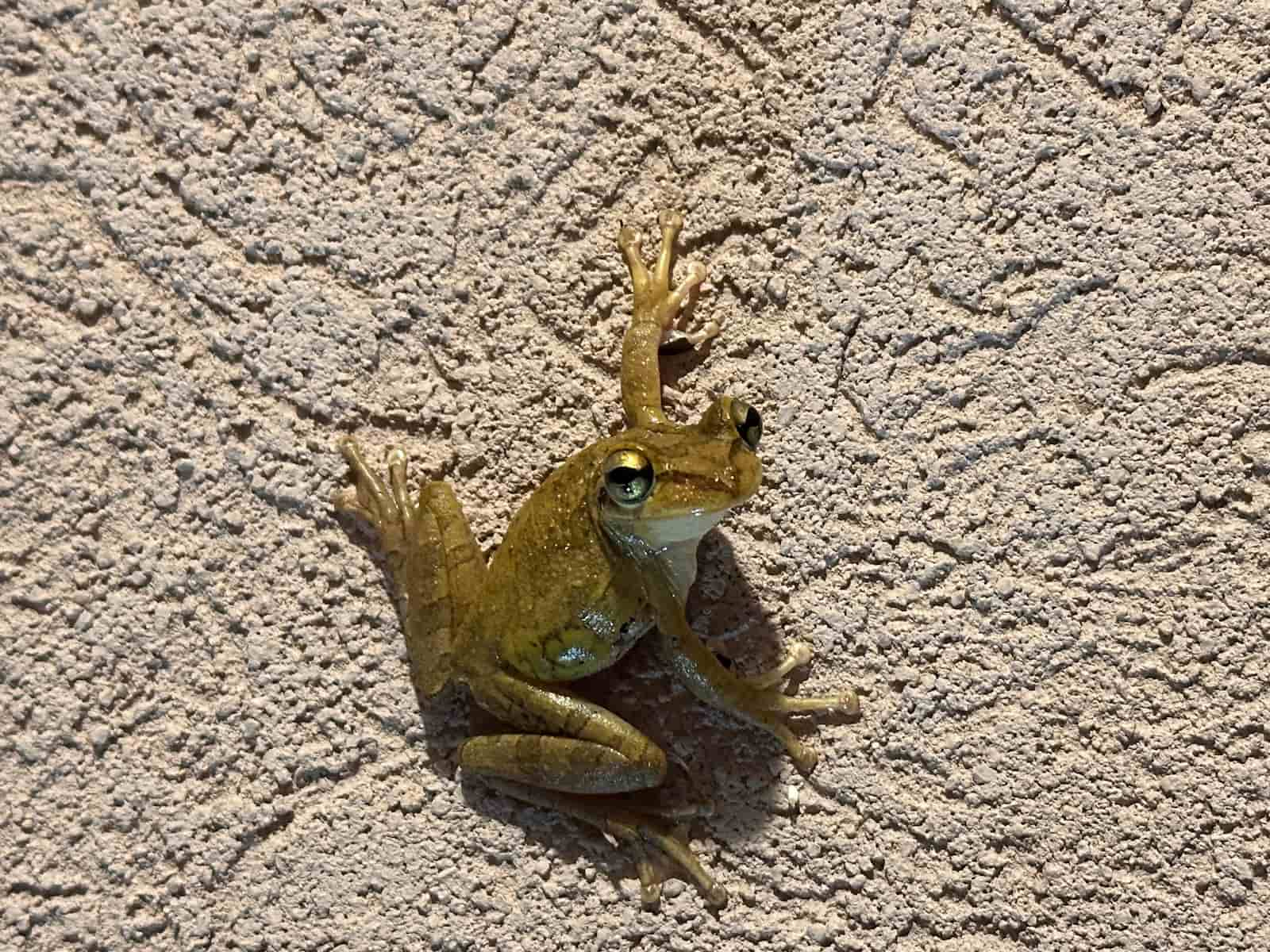
Cuban Tree Frog
Selected Invasive Animal Species:
Burmese python, Cuban tree frog, cane toad, green iguana, brown anole, fire ant, lionfish
?
DID YOU KNOW?
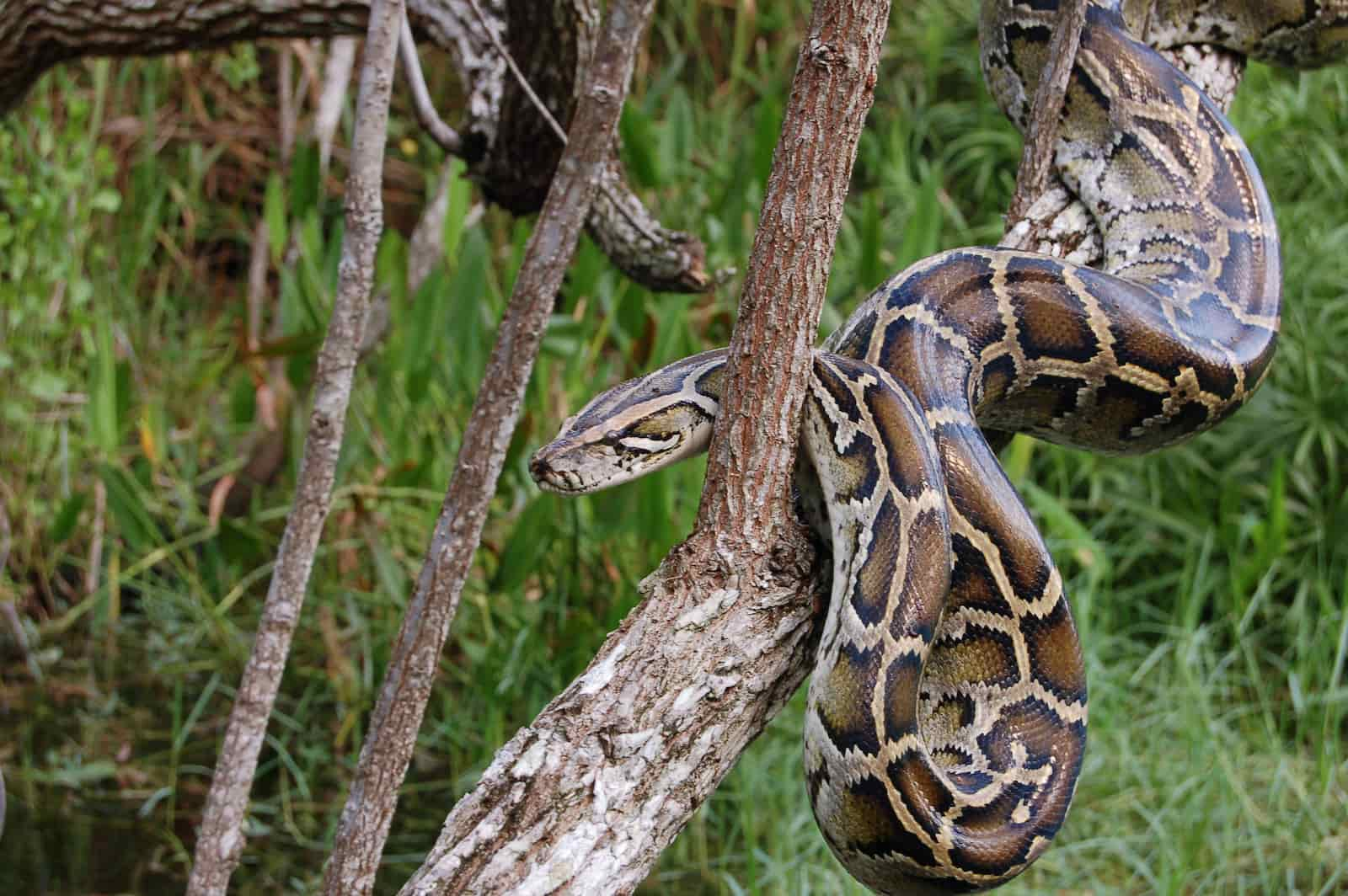
Burmese Python in the Everglades
Since the accidental introduction of Burmese pythons into the Florida Everglades in the 1990s, small mammal populations have declined by as much as 99%, and some (rabbits and foxes) have disappeared entirely. Even local bobcats are prey for this voracious snake, and their population has declined by more than 87% since 1997.
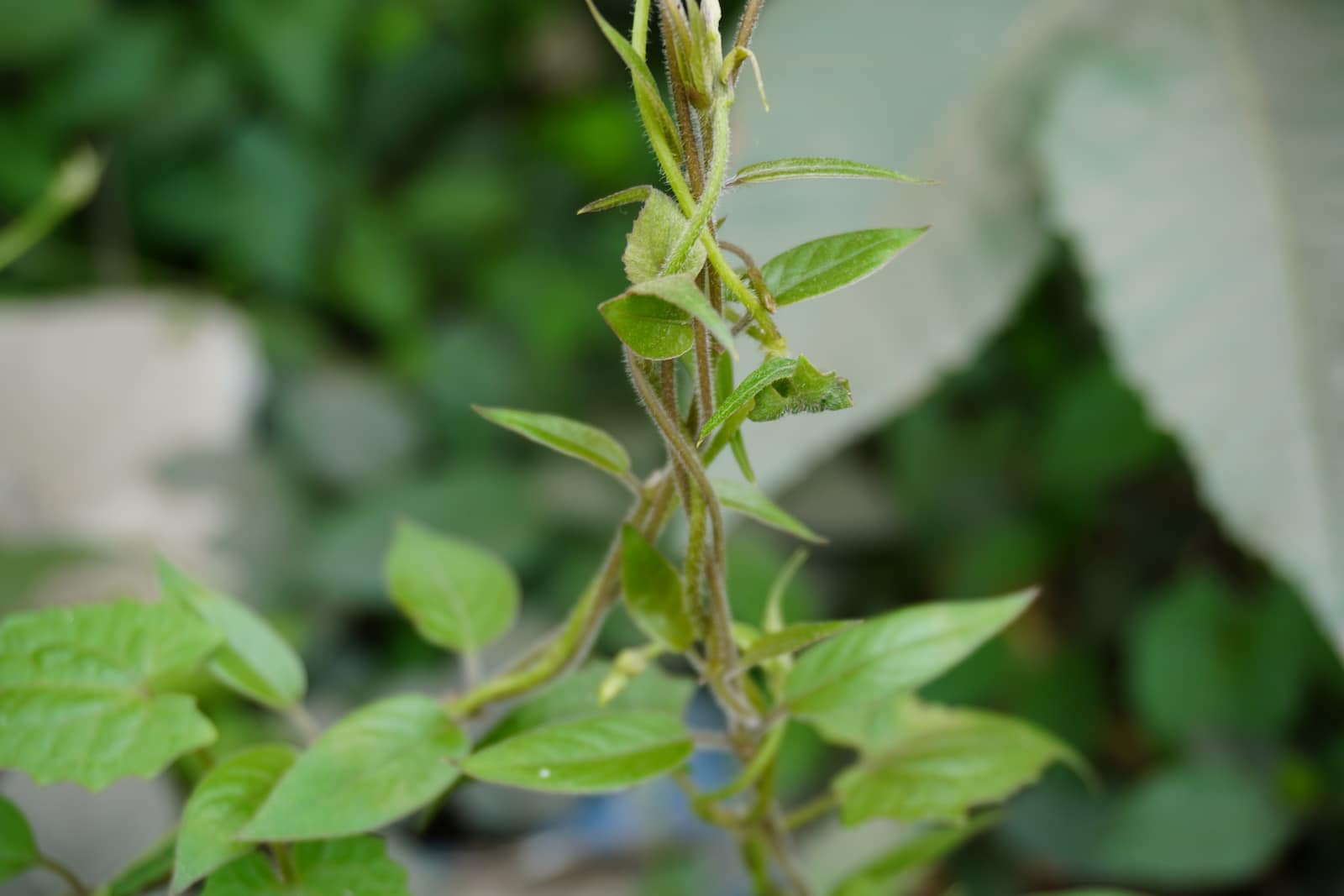
Paederia foetida, Commonly Known as Skunk Vine or Stinkvine
Florida also has invasive plant species, including Australian pine, skunk vine, Brazilian pepper, water hyacinth, heavenly bamboo, kudzu, callery pear, castor bean, Mexican petunia, wedelia, Caesar weed, oyster plant

FLORIDA HISTORY FACTS
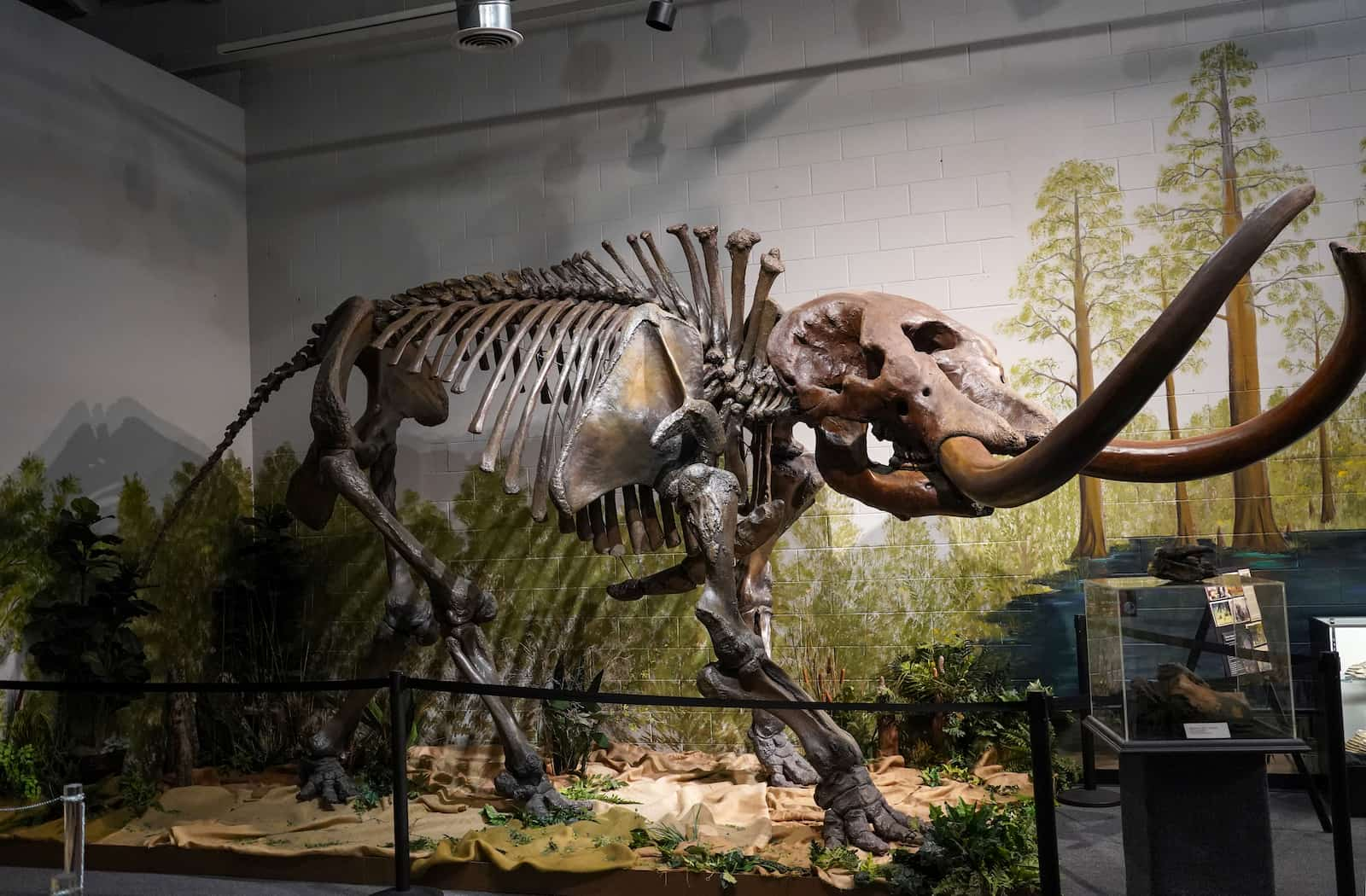
Recreation of a mastodon at the Brevard Museum of History and Natural Science.
First Inhabitants:
The first people came to the Florida peninsula around 14,000 years ago, following big game animals like mastodons, mammoths, and bison. Over time, the combination of climate change (higher sea levels and more rainfall) and human hunting caused these mammals to become extinct.
Native Americans:
There were likely around 250,000 indigenous people living in Florida when the Spanish arrived. The Timucua, who made up the majority, lived in the north and farmed the land. The Calusa were expert fishermen who built villages in the southern part of the peninsula, mainly on the coast. By the late 1700s, these native groups were nearly gone due to disease, war, and loss of land.
?
DID YOU KNOW?
The Calusa lived mainly on shellfish and created huge midden mounds of the discarded shells. Some of these mounds were so big they created entire islands for people to live on!

Ponce de León Statue
First European Visitor:
In 1513, Juan Ponce de León of Spain was the first documented European to set foot in Florida. He claimed the land for Spain, but assumed it was an island instead of a peninsula of the mainland.

Pedro Menéndez de Avilés Statue
Spanish Occupation:
Many Spanish explorers tried to establish settlements in Florida, but were defeated by the difficult weather, harsh environment, and local native people. In 1565, Pedro Menéndez de Avilés led an expedition to found St. Augustine, which still stands today.
British Occupation:
For the next few centuries, countries like France, Spain, and England fought over Florida as a valuable territory. The Spanish traded Florida to the British in 1763 in exchange for Havana, but the English returned it to them after just 20 years.

Tallahassee became Florida’s state capitol in 1824
U.S. Colony:
In the following decades, as the United States became its own country, more settlers moved into the territory. Eventually, in 1819, Spain ceded the territory to the U.S. through a treaty.
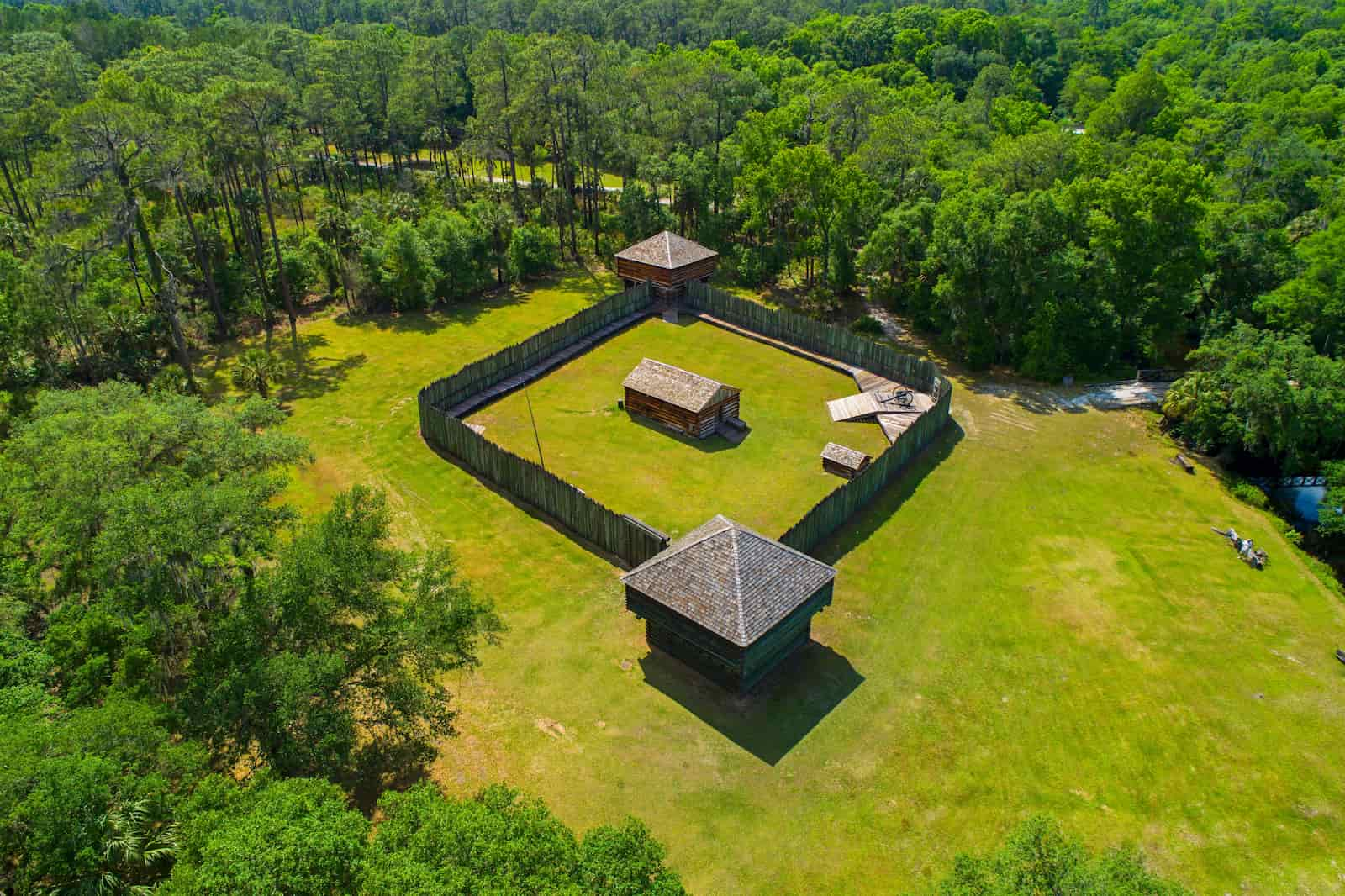
Fort Foster is a Second Seminole War era fort in Central Florida
Seminole Wars:
Between 1817 and 1858, there were three major conflicts between the U.S. Army and the Seminole people, who were made up of different Native groups and others pushed from lands farther north. Even though many were killed or forced to move, some Seminoles escaped into the Everglades, where their families still live today.
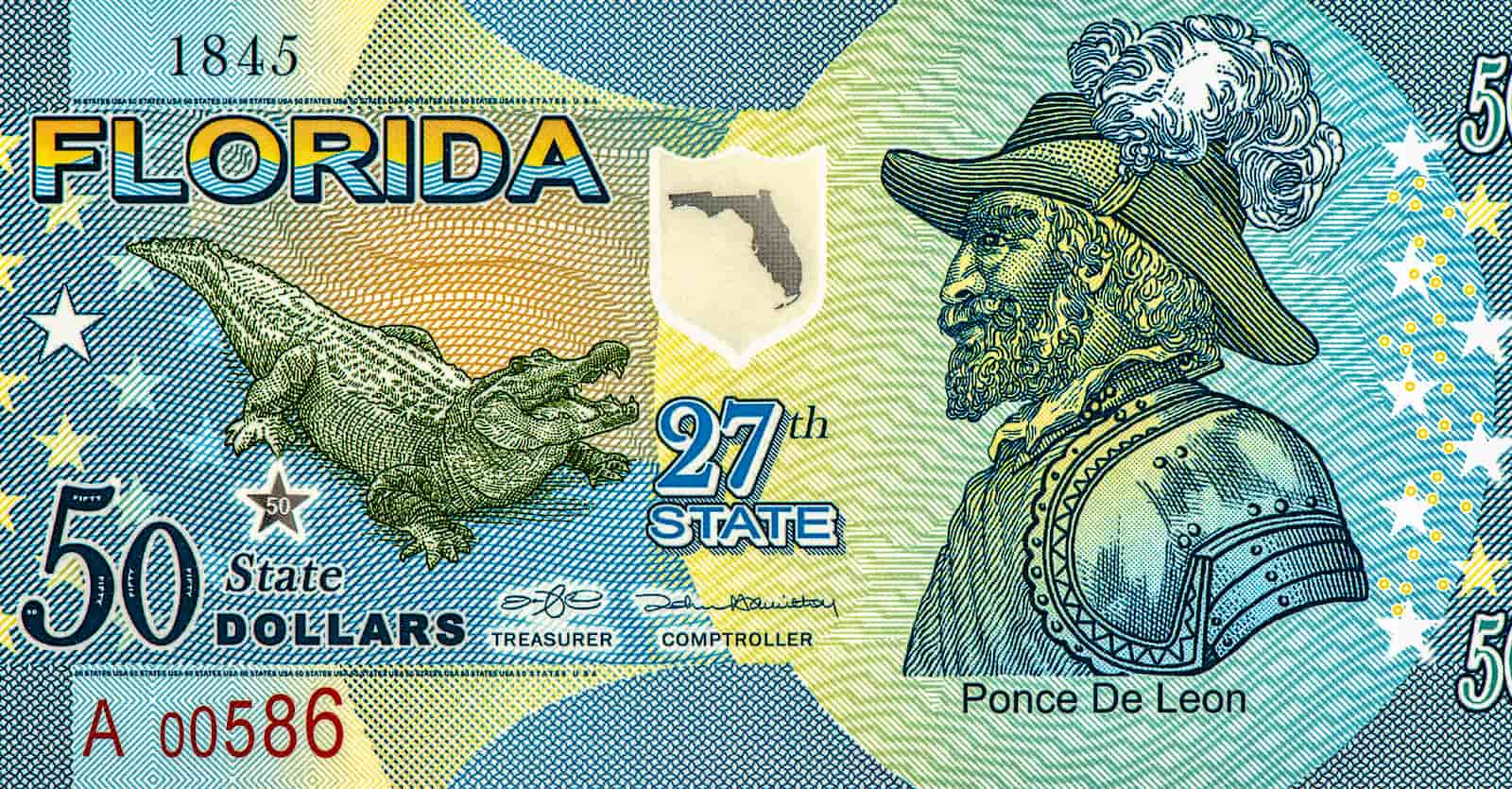
Fictional $50 “State Dollar” for Florida
U.S. Statehood:
Florida officially became the 27th U.S. state on March 3, 1845. Some thought it should come into the union as two separate states, East Florida and West Florida, as the British had divided the territory, it ultimately became one single state.
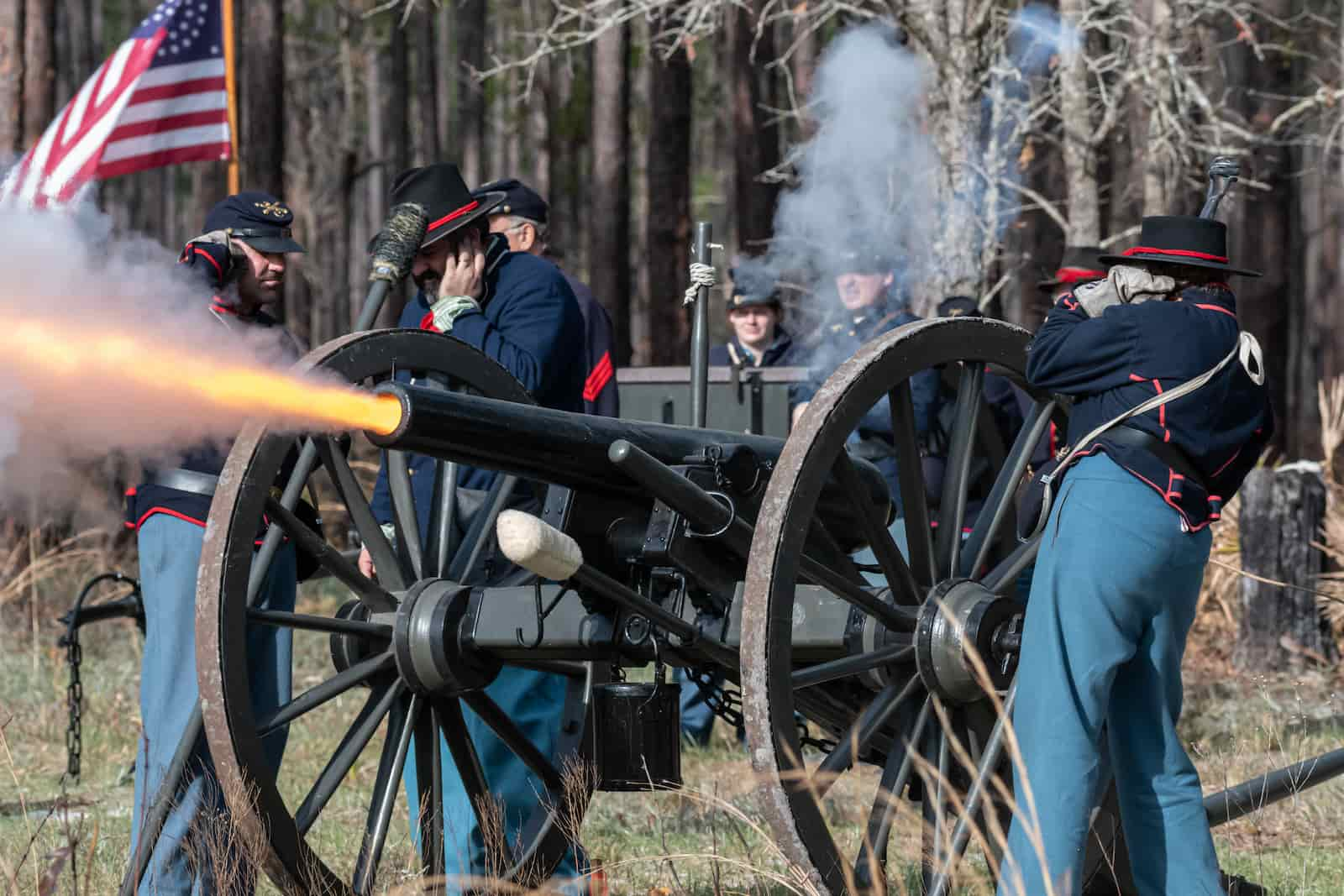
Olustee Battlefield Historic State Park
Civil War:
Florida seceded from the Union in 1861 as a Confederate state. Several battles were fought in the state, including one at Olustee.
?
DID YOU KNOW?
The Union held onto Fort Jefferson in the Dry Tortugas throughout the war. They used it as part of the southern blockade and as a prison. Its most famous prisoner was Dr. Samuel Mudd, who set the leg of John Wilkes Booth the morning after he assassinated Abraham Lincoln.

Florida Scrub cattle
Cattle Country:
Cattle ranching in Florida began in the 1500s with the early Spanish colonizers. Today, Florida is still one of the top cattle-producing states, with ranches that have been passed down through families for generations.
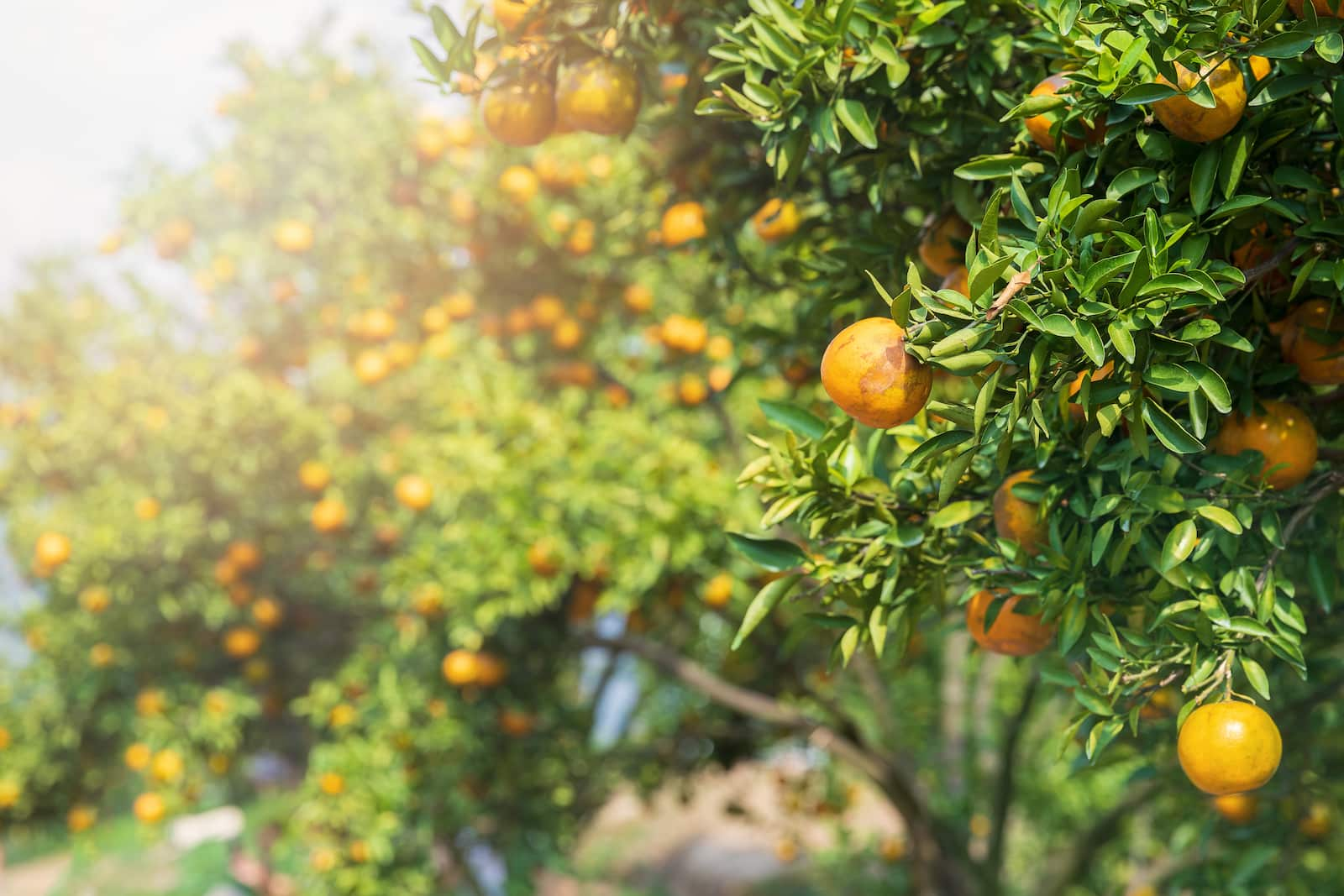
Orange orchard
Citrus Groves:
The Spanish also brought citrus trees to Florida, and the state has become well-known as a top producer of oranges and orange juice.
?
DID YOU KNOW?
Florida is the nation’s leading producer of sugarcane and sugar. About 25% of the cane sugar made in the U.S. comes from the Sunshine State.

Julia Tuttle Memorial
Vital Railroads:
Miami began as a small settlement, but it grew quickly after Julia Tuttle, known as the “Mother of Miami,” convinced a railroad company to extend down to the area in 1896. On the west coast, Tampa benefited from Henry Plant’s railroad around the same time.
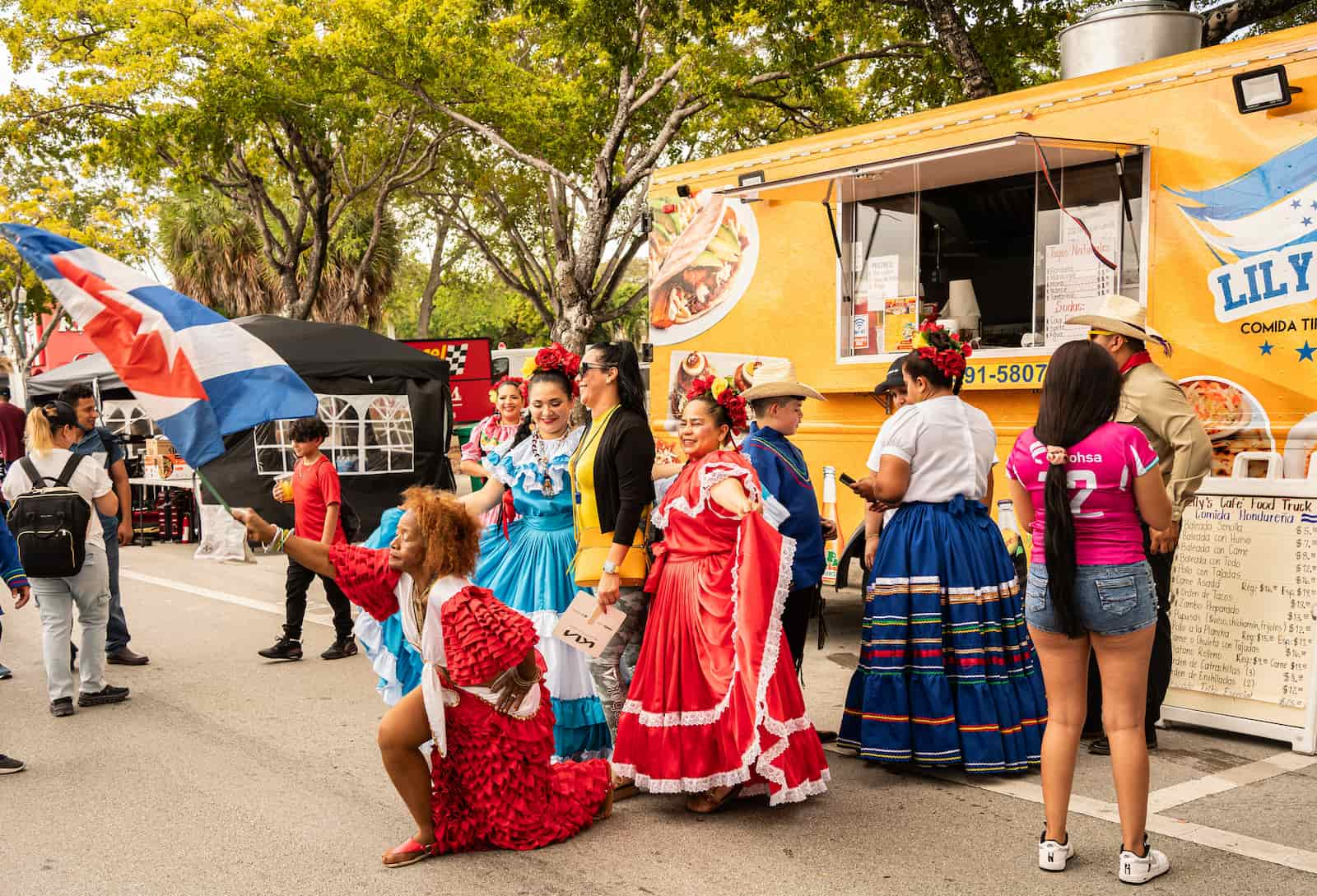
Cuban festival in Little Havana, Miami
Cuban Refugees:
After Fidel Castro came to power in Cuba in 1959, thousands fled the country. Within a few years, more than 200,000 Cubans had arrived in Florida, mainly to Miami. Others followed in the years to come, and the Cuban refugee population is now more than one million.
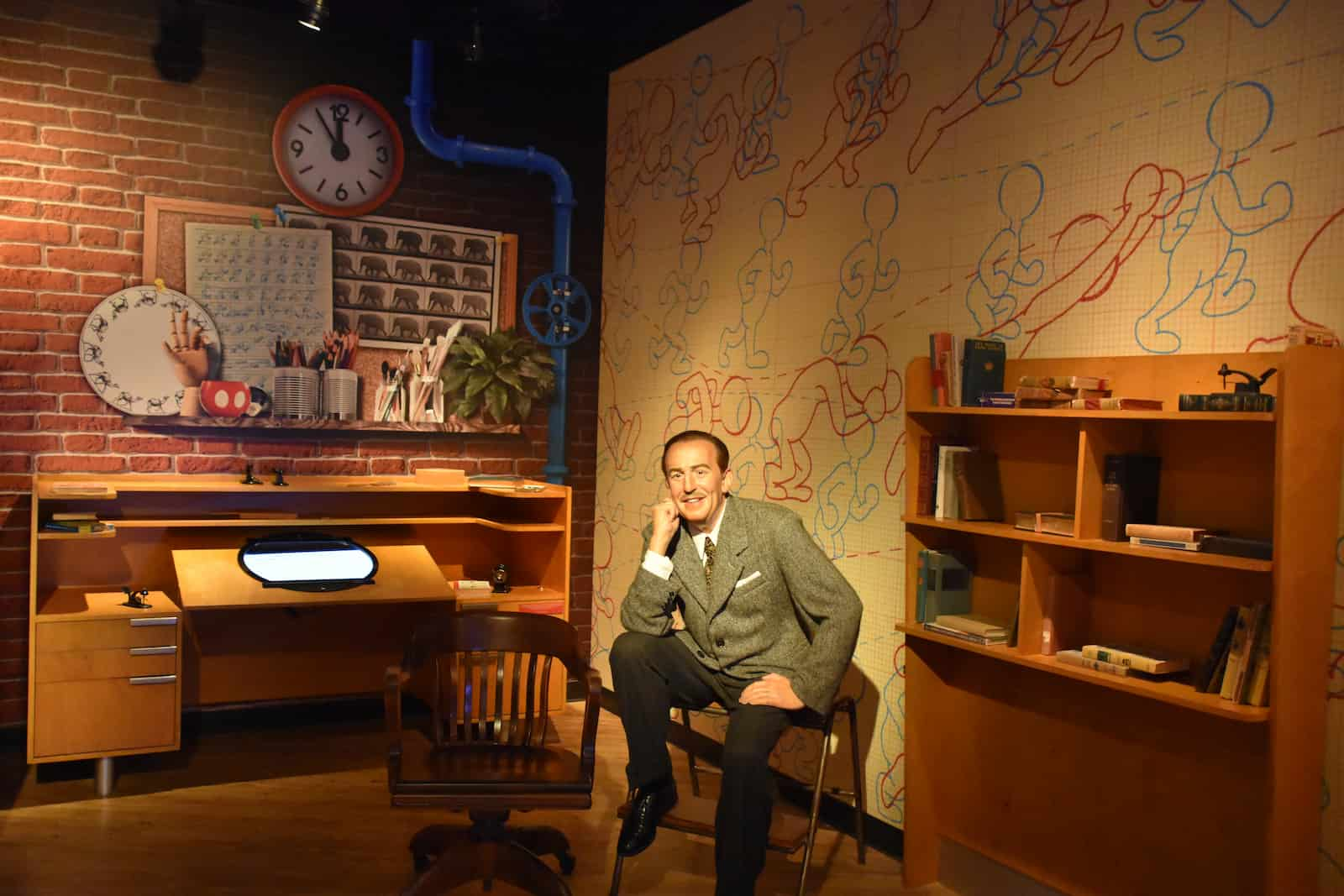
Walt Disney at Madame Tussauds Wax Museum in Orlando, Florida
Disney’s Land:
After the success of DisneyLand in California, Walt Disney wanted a place to build new, bigger theme parks. He chose Florida as the perfect place, and Walt Disney World opened in 1971 near Orlando.
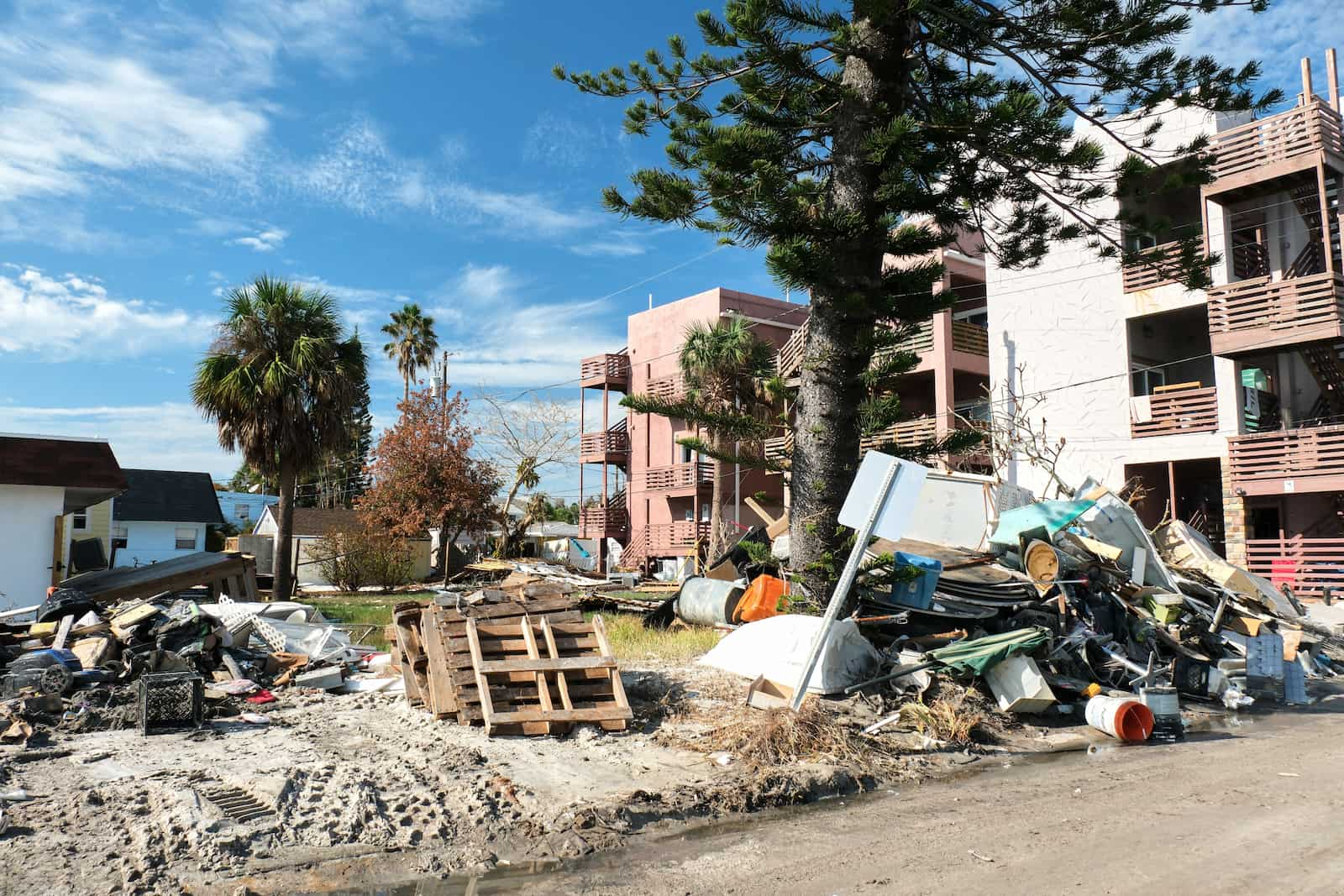
Damage along the Pinellas County beaches from Hurricane Helene
Hurricane History:
Since 1850, every part of Florida has been affected by hurricanes. The strongest on record was the Labor Day Hurricane of 1935, which hit the Florida Keys with 185 mph winds. 1992’s Hurricane Andrew destroyed large parts of the Miami area. In 2022, Hurricane Ian came ashore near Fort Myers and caused an estimated $109 billion dollars in damage.
?
DID YOU KNOW?
50 million people visit DisneyWorld every year. Magic Kingdom is the most popular park, followed by Epcot, Hollywood Studios, and Animal Kingdom.

More Activities…
Aa

Letter A: Free Games, Printables, Crafts, and Song for Kids
Help your child learn the letter A with free games, printable worksheets, crafts, and songs–designed for home or classroom learning!
Table of Contents
What Makes the Letter A Special?
Aa
The letter A is the first letter of the English alphabet and one of the most important vowels. It appears in countless words and plays a key role in early literacy. The letter A can make two main sounds:
Long A (/ā/): Found in words like “acorn,” “cake,” and “name.”
Short A (/ă/): Found in words like “apple,” “ant,” and “cat.”
TIP:
The letter A typically stands for a short A sound (/ă/) when followed by consonants, as in “cat.” It stands for a long A sound (/ā/) when followed by silent -e, as in “cake.”

Free Letter A Games & Activities
Make learning the letter A an interactive experience with these free online games and activities. Perfect for preschoolers and kindergarteners, these games help children recognize, trace, and pronounce the letter A.
Lowercase Letter a:
Uppercase Letter A:
Uppercase and Lowercase Letter A and More:
Letter A Online Painting Activity

40+ Free Printable Letter A Worksheets & Coloring Pages
Reinforce learning with printable worksheets and coloring pages featuring the letter A. These resources are great for practicing letter recognition, phonics, and vocabulary.
Letter A Worksheets
Explore the letter A with a variety of free printable worksheets! Kids can trace uppercase and lowercase letter A, color in A-themed pictures like alligators and apples, and practice with words that start with the letter A sound.
Letter A Coloring Pages
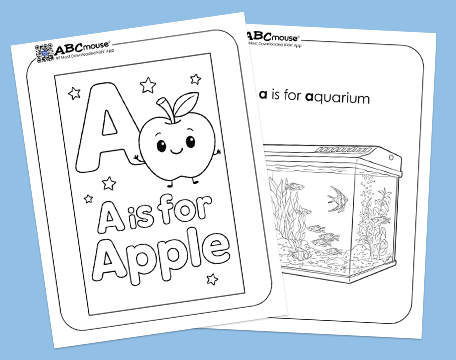
From apples and astronauts to ants and arrows, these letter A coloring pages turn alphabet practice into a creative activity with fun, kid-friendly designs.
Letter A Word Lists
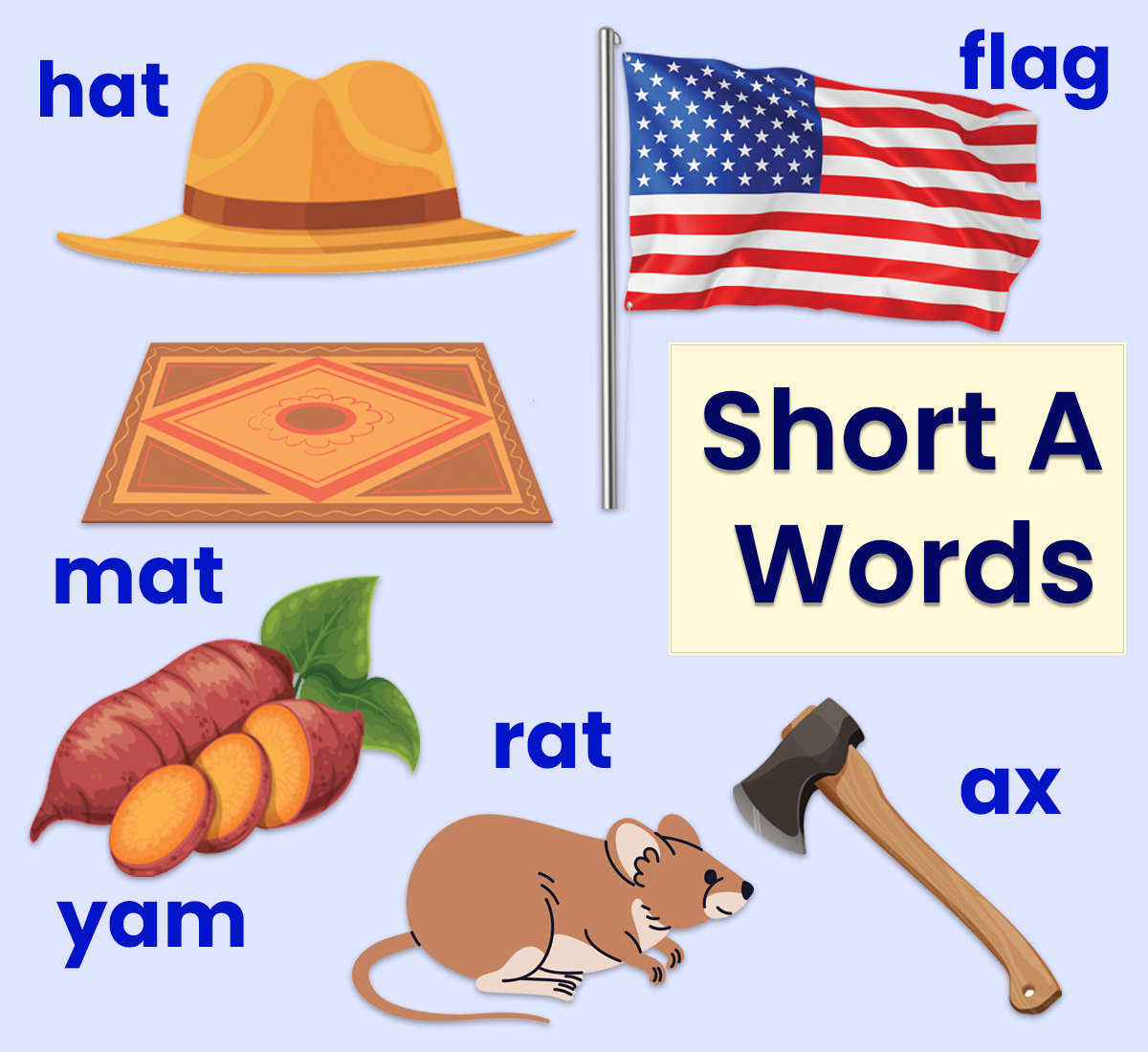
With 11 different word lists to pick from, you can find the ones that are just right for your child’s learning level. You’ll also find letter A words with definitions and illustrations

10 Letter A Crafts
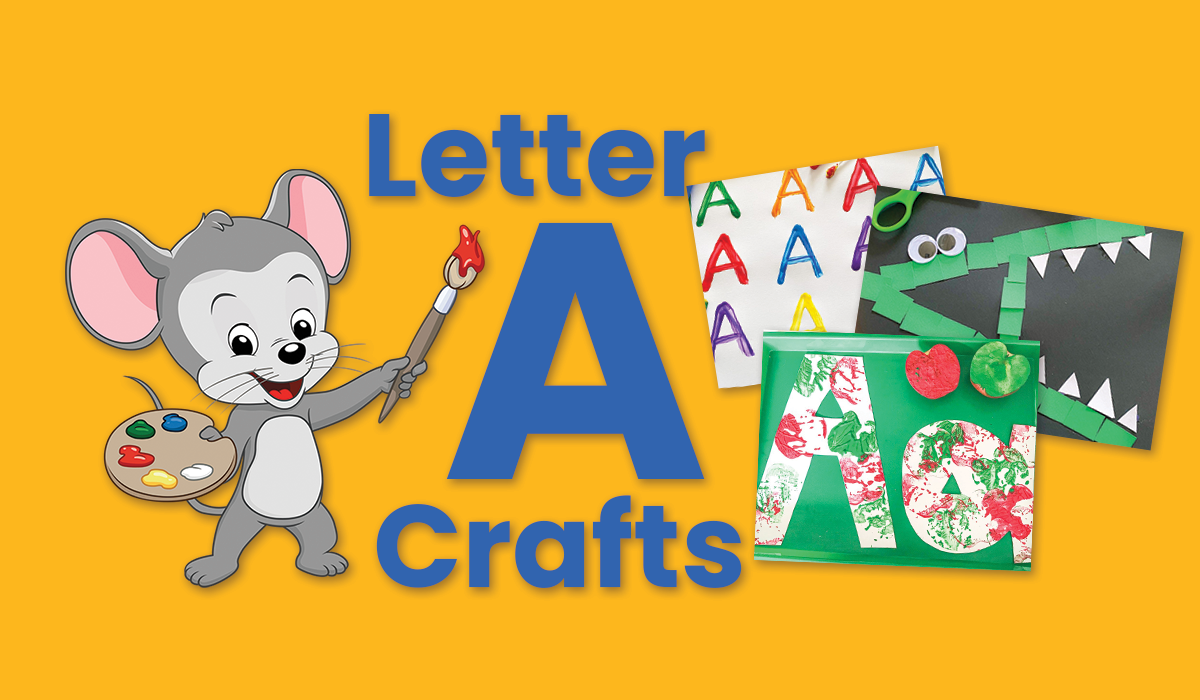
Searching for playful ways to teach the letter A? These awesome letter A crafts and activities are designed to help kids learn as they create!

Letter A Song
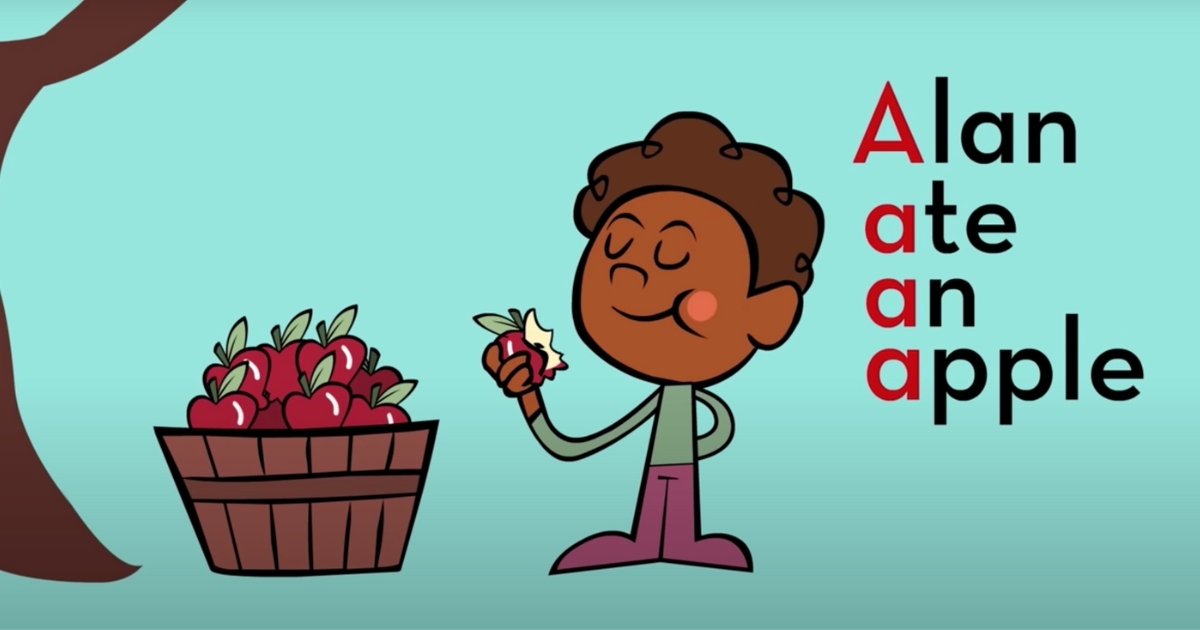
Make learning the letter A even more engaging with a catchy, kid-approved song that teaches this letter through fun music and lively motion.
FAQ’s About the Letter A
What are some fun ways to teach the letter A?
There are many fun ways to teach the letter A! Use printable worksheets, interactive games, and crafts to make learning engaging. Singing songs about the letter A and practicing its sounds with words like “apple” and “ant” are also effective methods.
What are some words that start with the letter A?
Common words that start with the letter A include:
Short A (/ă/): apple, ant, alligator, astronaut, ax
Long A (/ā/): acorn, apron, April, ape, angel
How do you explain the letter A to preschoolers?
Start by showing the uppercase (A) and lowercase (a) forms of the letter. Use visuals like apples or ants to connect the letter and its sounds to familiar objects. Practice tracing the letter and saying its sounds (short /ă/ and long /ā/).
What are the two sounds of the letter A?
The letter A makes two main sounds:
Long A (/ā/): Found in words like “acorn,” “cake,” and “name.”
Short A (/ă/): Found in words like “apple,” “ant,” and “cat.”
Why is the letter A important in early literacy?
The letter A is the first letter of the alphabet and one of the most commonly used vowels. It appears in many words and helps children build foundational phonics and reading skills.
What are some crafts to teach the letter A?
Here are a few fun letter A crafts:
- Apple Stamping: Use apple halves as stamps to create art.
- Alligator Craft: Make an alligator using green paper and googly eyes.
- Airplane Craft: Build a paper airplane and decorate it with the letter A.
How can I help my child recognize the letter A?
You can help your child recognize the letter A by:
- Pointing out the letter A in books, signs, and everyday objects.
- Using printable worksheets to practice tracing and coloring the letter.
- Playing games that focus on identifying uppercase and lowercase A.
What are some activities for the letter A?
Here are some activities to make learning the letter A fun:
- Letter A Scavenger Hunt: Find objects around the house that start with A.
- Tracing Practice: Use rainbow traceables to practice writing A.
- Songs and Rhymes: Sing songs that emphasize the letter A.
More Learning Resources from ABCmouse:
-
Letter L Song
Come learn about the letter L in this lovely song by ABCmouse!
-
Letter G Song
Come sing along to this goofy letter G song by ABCmouse. From Goopy gushy to ghoulie ghosts, children will love going only on this adventure!
-
Letter M Song
This letter M video by ABCmouse is full of marvelous messages that help children master learning both upper and lower case letter M.
-
Letter K Song
Join Kaylee, Kenny, and Kimmy while you sing along to this ABCmouse letter K song.
-
Letter J Song
It’s no Joke this letter J video by ABCmouse will have your child singing along to this joyful song as they learn the sound the letter…
-
Letter H Song
Learn all about the letter H in this happy hippo song from ABCmouse! This letter H video will teach children all about upper and lower case…
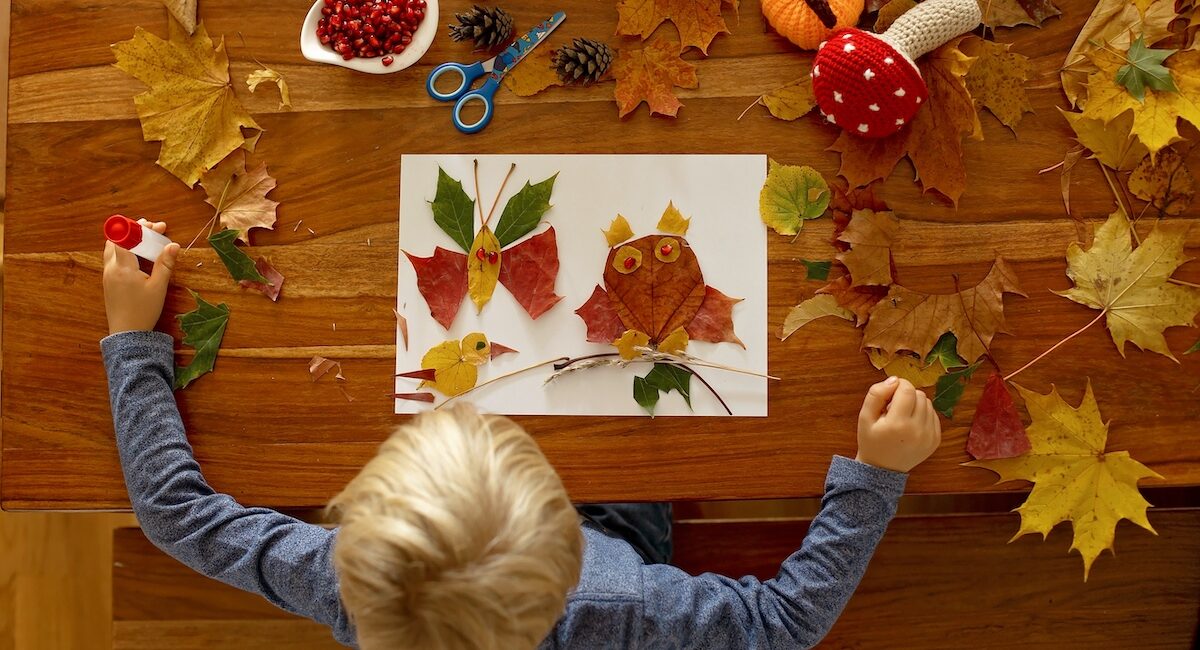
33 Fun Fall Crafts and Art Activities for Preschool and Kindergarten
Share
Celebrate the magic of autumn with hands-on art projects kids will love!
With colorful leaves, cozy themes, and plenty of inspiration from nature, fall offers endless opportunities to get creative. Whether you’re a parent or a teacher looking for easy art projects for young kids, these 30+ fall crafts and art activities are just right for preschoolers and early elementary kids. Please note that while these projects are designed for young children, they should be completed with adult supervision.
Get more fall crafts, printables, jokes, and activities our with Halloween and Thanksgiving Crafts and Activities.
Fall Crafts and Art Activities for Preschoolers
These fall crafts are designed with the littlest learners in mind! Each project is easy to make and uses simple materials you likely already have at home or in the classroom. From colorful leaves to friendly pumpkins, these art activities help preschoolers explore the season while building creativity and fine motor skills.
1. Turkey Pudding Cup
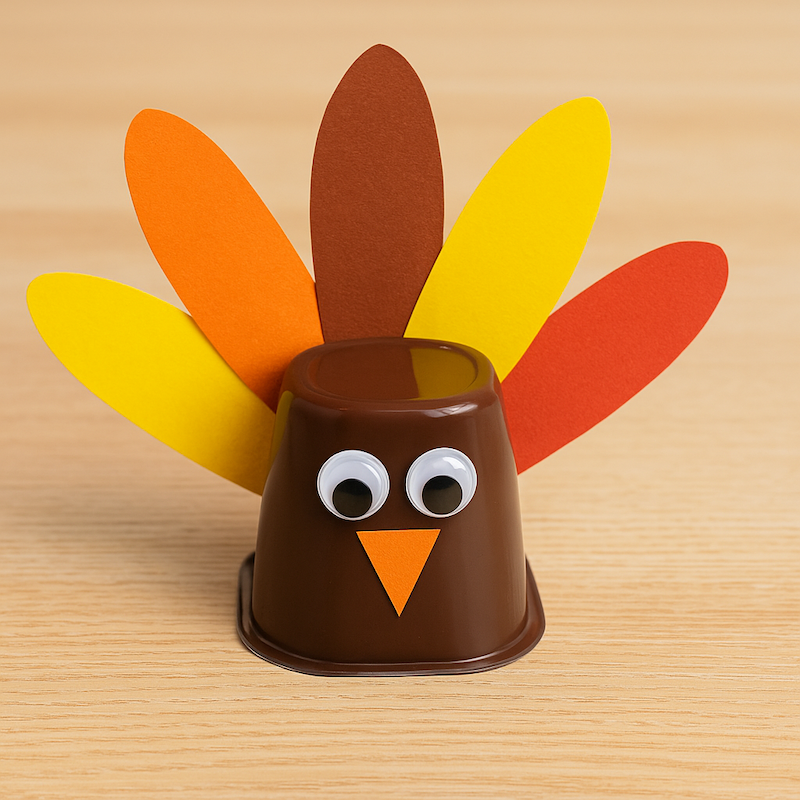
Supplies:
- sealed chocolate pudding cup
- orange, red, yellow, and brown construction paper
- googly eyes
- liquid school glue
- scissors
Instructions:
1. Cut out 4 feathers from the construction paper.
2. Cut out a small triangle from the orange construction paper for the turkey’s beak.
3. Turn the pudding cup upside down, so the lid is on the table.
4. Use liquid school glue to adhere the feathers onto the back of the pudding cup, creating the turkey’s tail feathers.
5. Glue the googly eyes onto the front of the pudding cup.
6. Glue the orange triangle onto the pudding cup to create the turkey’s beak. Then admire your cute feathered friend for as long as you can resist eating the pudding!
2. Paper Plate Apple Lacing

Supplies:
- red paper or plastic disposable plate
- hole punch
- brown and green construction paper
- yarn
Instructions:
1. Use the hole punch to make evenly-spaced holes around the edges of the plate.
2. Cut a stem from the brown paper and a leaf from the green paper, and glue them to the top of the plate.
3. Tie one end of the yarn to one of the holes, then show your toddler how to lace the yarn in and out of the holes.
Tip: If you don’t have a red plate on hand, just use paint to turn a regular white plate into a red one!
3. Fall Handprint Tree
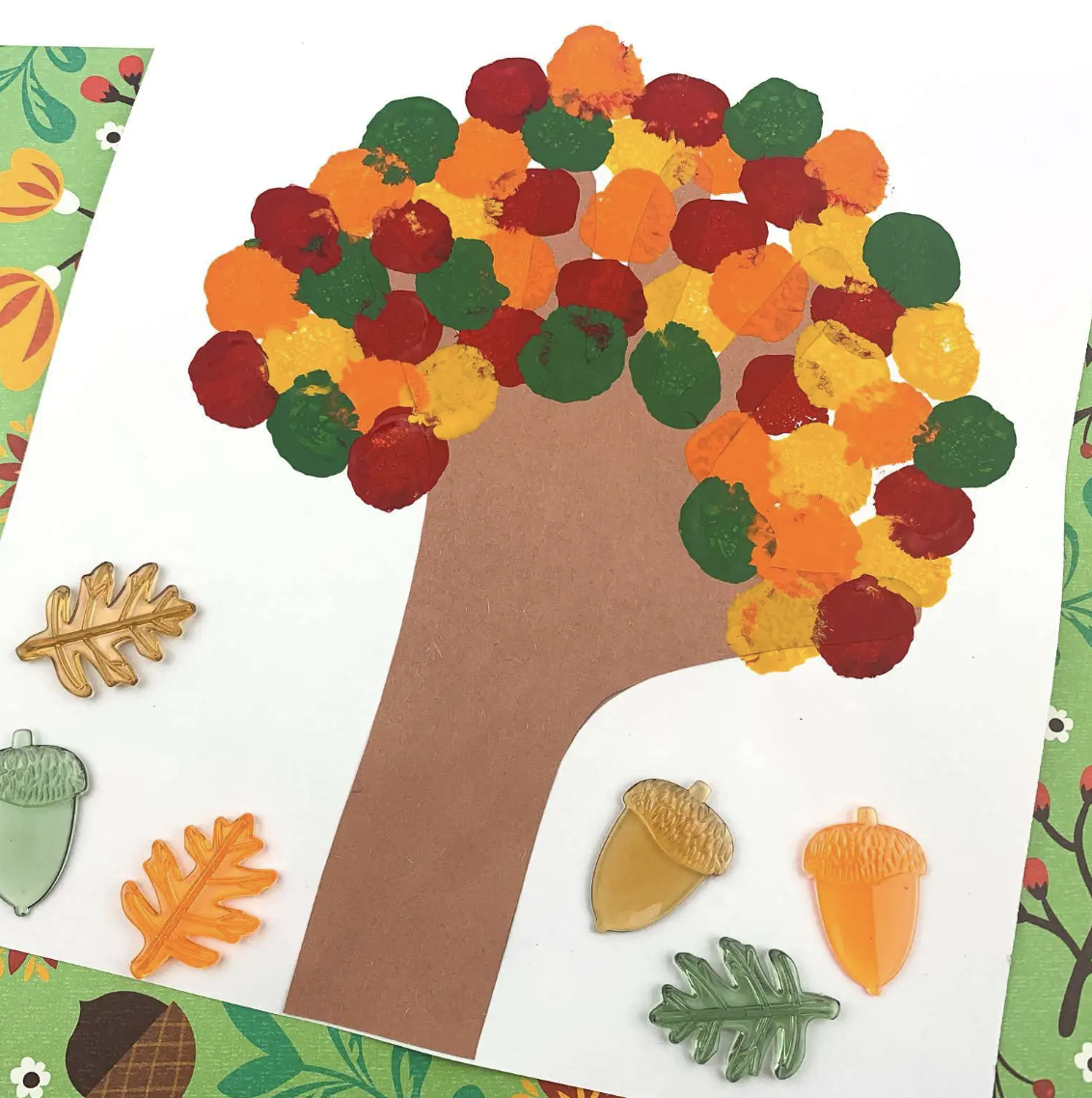
Supplies:
- brown construction paper
- white construction paper
- pencil
- glue
- paper plate
- craft paint
- clothespins
- pom poms
Instructions:
1. Trace your child’s hand and their wrist onto the sheet of brown construction paper.
2. Have your child cut out their hand print from the paper. This will act as their tree’s trunk and branches.
3. Glue their hand cutout onto a piece of white paper.
4. Squeeze some yellow, red, orange, and green paint onto a paper plate.
5. Get one clothespin and pom pom for each paint color. Pinch one pom pom into the end of each clothespin, forming a painting tool.
6. Have your child gently dip the pom pom into the paint and dab it onto their “tree,” placing the paint around the branches.
7. Once your child is done filling the tree’s branches with colorful leaves, let their creation dry.
Tip: You can skip the pom poms and just use finger paint instead, creating the leaves on the tree with your child’s thumb and finger prints.
4. Paper Bag Squirrel
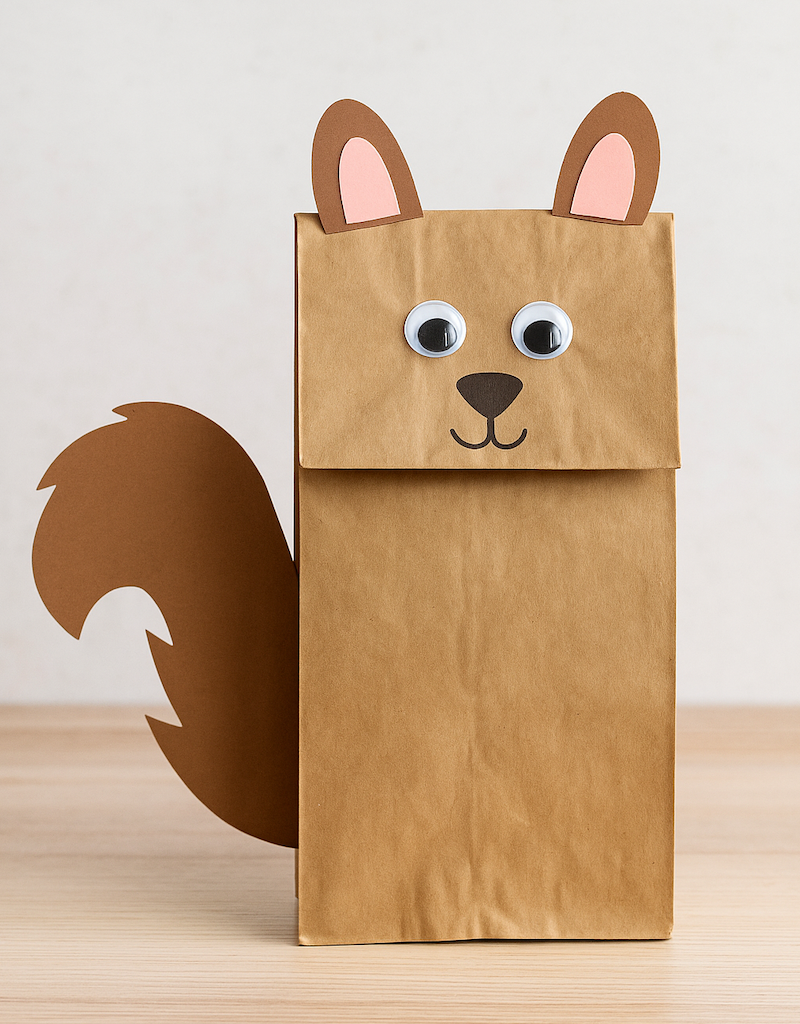
Supplies:
- brown lunch bag
- googly eyes
- black marker
- brown and pink construction paper
- glue
- scissors
Instructions:
1. Cut out a longer bushy tail from the brown construction paper for the squirrel’s tail.
2. Cut out two curved ears from the brown construction paper.
3. Cut out two pink pieces similar in shape to the brown ear pieces, but slightly smaller. Glue the pink inner ear pieces on to the brown ear pieces.
4. With the flap of the paper bag facing you, glue the ears to the back, top part of the bag. Glue the tail to the back, lower portion of the bag.
5. Glue on the googly eyes to the square flap of the lunch bag.
6. Draw on a nose and mouth with marker or crayon. Now put on a show with your DIY squirrel puppet!
5. Pom Pom Acorns
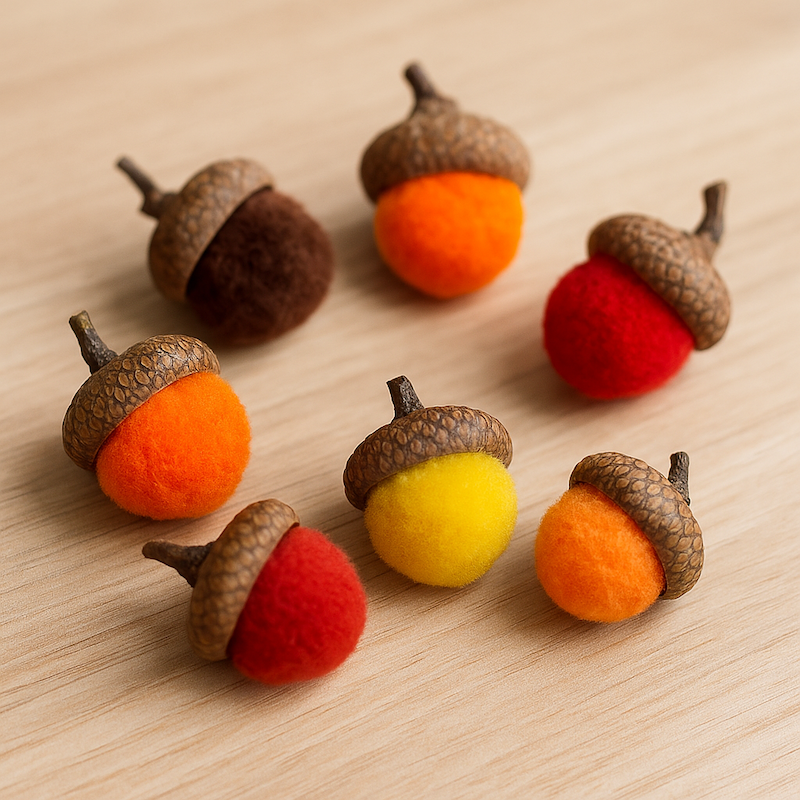
Supplies:
- small craft pom poms
- real acorn caps collected and cleaned
- hot glue gun or strong craft glue
- optional: string or twine (for hanging)
Instructions:
1. Collect and clean acorn caps, then let them dry completely.
2. Choose small pom poms in fall colors that fit snugly inside the caps.
3. Add a drop of glue inside each acorn cap. If using glue guns, an adult should complete this step.
4. Press a pom pom into the glue and hold for a few seconds.
5. Let the glue dry completely, then display or use in decorations!
Tip: Glue in a string loop before adding the pom pom if you want to hang the acorns.
6. Fall Handprint
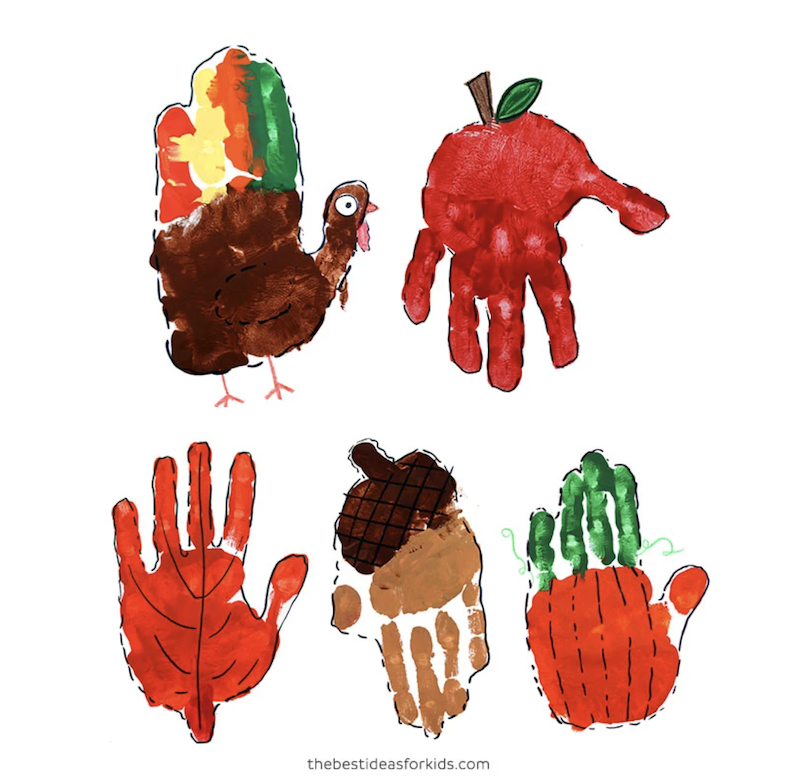
Supplies:
- white card stock or construction paper
- washable paint in fall colors (red, orange, yellow, brown)
- small paintbrush
- black marker or pen
- paper plate or paint tray
- googly eyes (for turkey)
- wet wipes or access to a sink (for cleanup)
Instructions:
1. Choose your fall design, such as a handprint leaf, handprint turkey, or handprint apple–or make all 5 designs!
2. Pour paint into a tray or paper plate, using a few different fall colors.
3. Use a brush to apply paint to your child’s hand (or let them dip into the colors).
4. Press their painted hand onto the paper to create a handprint. Repeat if making multiple prints for leaves or feathers.
5. Let the handprint dry completely before adding details.
6. Use a black marker to draw a turkey face, leaf veins, etc. depending on your design.
7. Leaf People
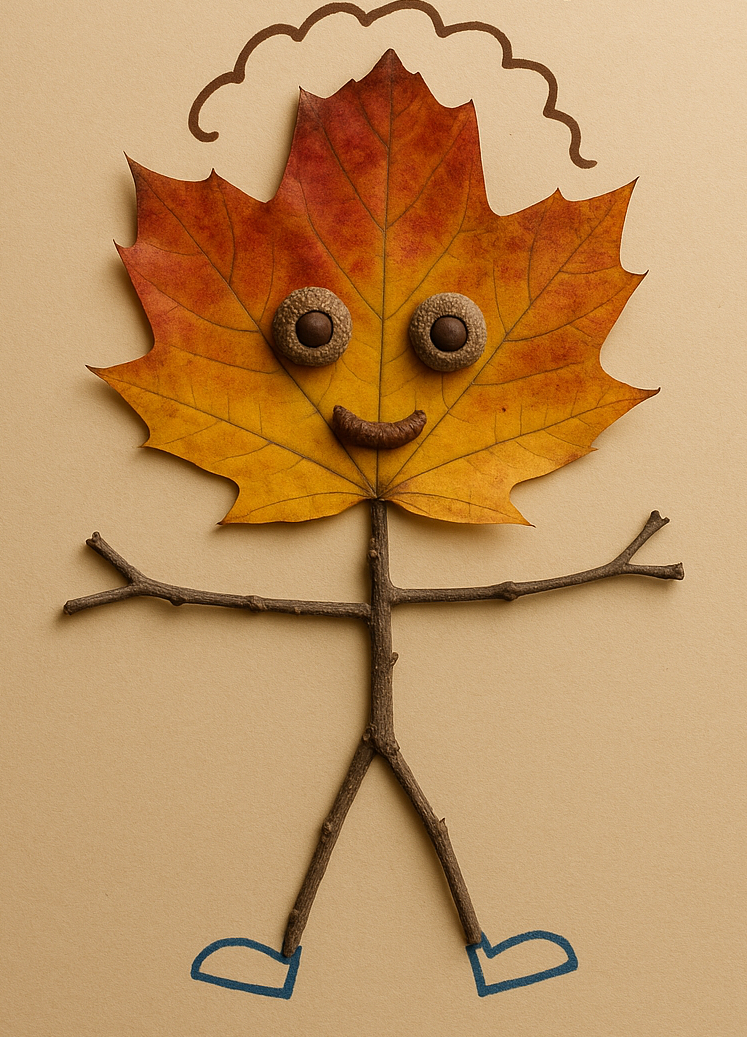
Supplies:
- variety of real or artificial leaves
- small twigs
- acorn tops and bottoms (or googly eyes or buttons)
- liquid school glue
- markers or crayons
- construction paper or cardstock
Instructions:
1. Collect leaves, acorns, and small twigs in various shapes and colors. Let them dry if they’re fresh.
2. Choose a large leaf to use as the head of your leaf person.
3. Glue the leaf to a piece of construction paper or card stock, leaving room below it to create the twig body.
4. Add a body, arms, and legs by gluing on small twigs.
5. Use the acorns to create eyes and a mouth, gluing them down one by one. If you don’t have acorns, use googly eyes and buttons or whatever household supplies you have on hand.
6. If you’d like, use markers or crayons to draw in hair or accessories like hats or shoes.
8. Button Apple
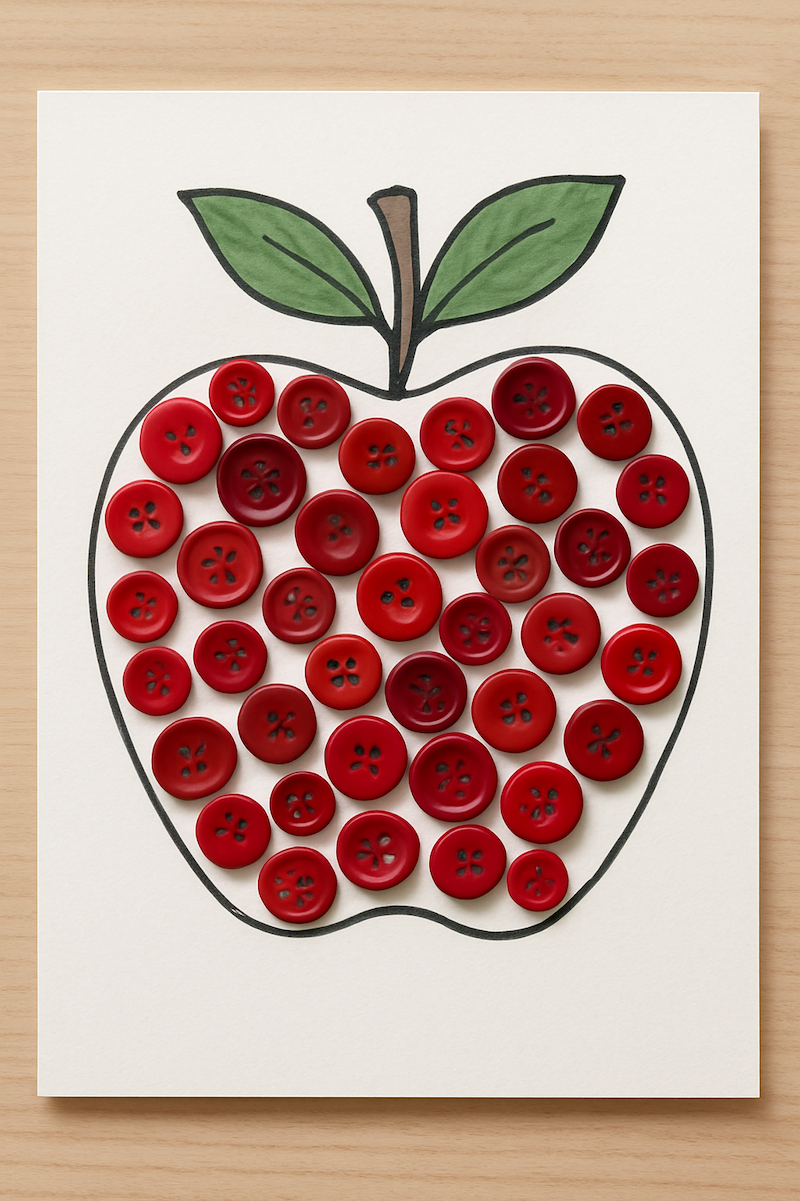
Supplies:
- red or green buttons of various sizes
- glue
- card stock
- markers
Instructions:
1. Trace the outline of a large apple onto a piece of card stock, and add a stem and leaves.
2. Help your child fill the outline with buttons, covering as much space as possible. (Supervise small children for safety.)
3. Carefully glue each button in place, then display your art!
9. Paper Plate Pumpkin
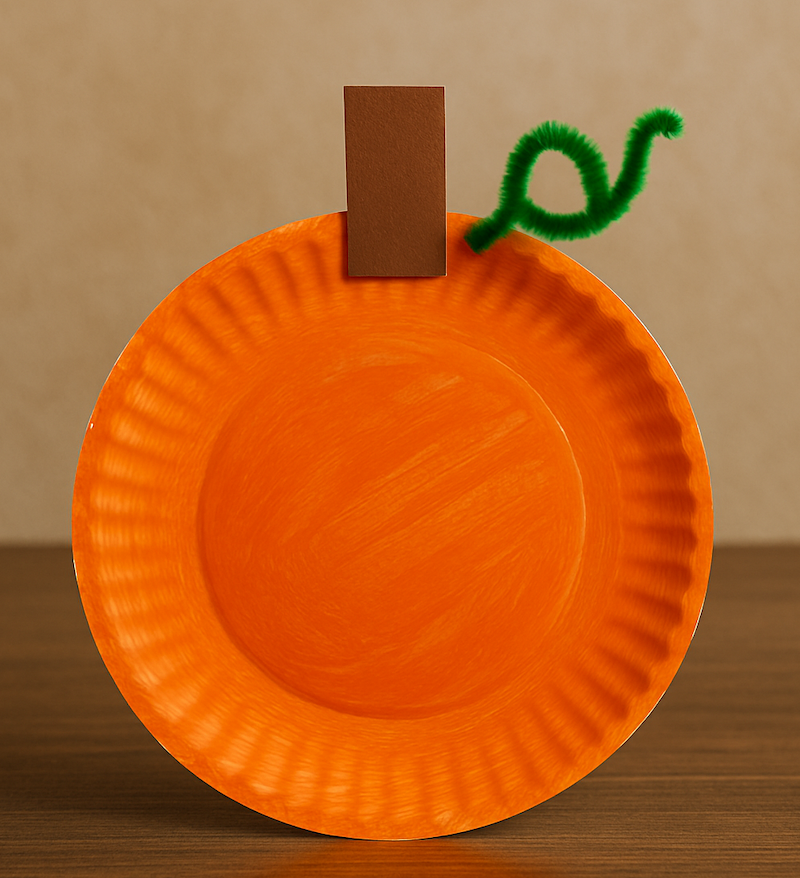
Supplies:
- paper plate
- orange paint
- paintbrush
- brown construction paper
- green pipe cleaners
- school glue
- scissors
Instructions:
1. Set up a space for painting, providing orange paint, a paint brush, and the white paper plate.
2. Have your child paint the entire paper plate orange. Let the paint dry completely.
3. Cut out a small rectangle from the brown paper to form the stem of the pumpkin and glue to the top of your orange plate.
4. Carefully bend the tips of the pipe cleaners you trimmed upward to mimic the shape of pumpkin vine tendrils. Careful–pipe cleaners can sometimes have sharp points at the end.
Tip: Keep this craft more mess-free by buying orange paper plates.
10. Butterfly Leaf
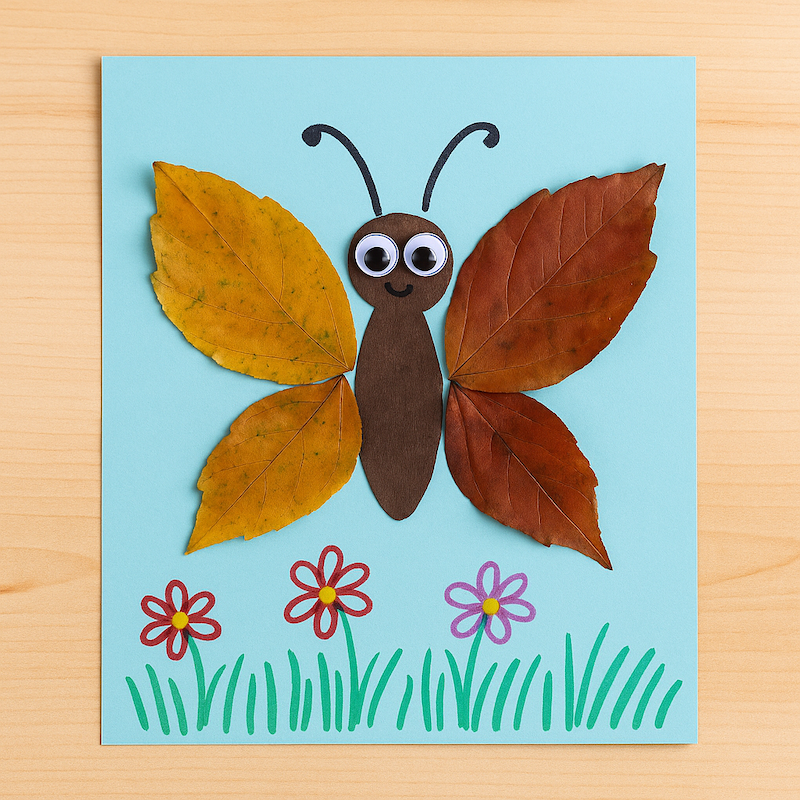
Supplies:
- variety of real leaves
- googly eyes
- glue
- scissors
- construction paper or card stock
- markers or crayons
- optional: pipe cleaners or small twigs (for antennae)
Instructions:
1. Gather a selection of leaves in different shapes and colors—choose two similar-sized leaves for each butterfly’s wings.
2. Lay out a piece of construction paper or card stock as the background.
3. Add a butterfly body by drawing it in with marker or cutting it from construction paper.
4. Arrange leaves on either side of the butterfly to form butterfly wings and glue into place.
5. Draw on the butterfly’s antennae or glue down a small pipe cleaner or twig to create them.
5. Attach googly eyes at the top of the body using glue. If you’d like, draw in more details, like flowers or grass.
11. Pumpkin Squish Ball
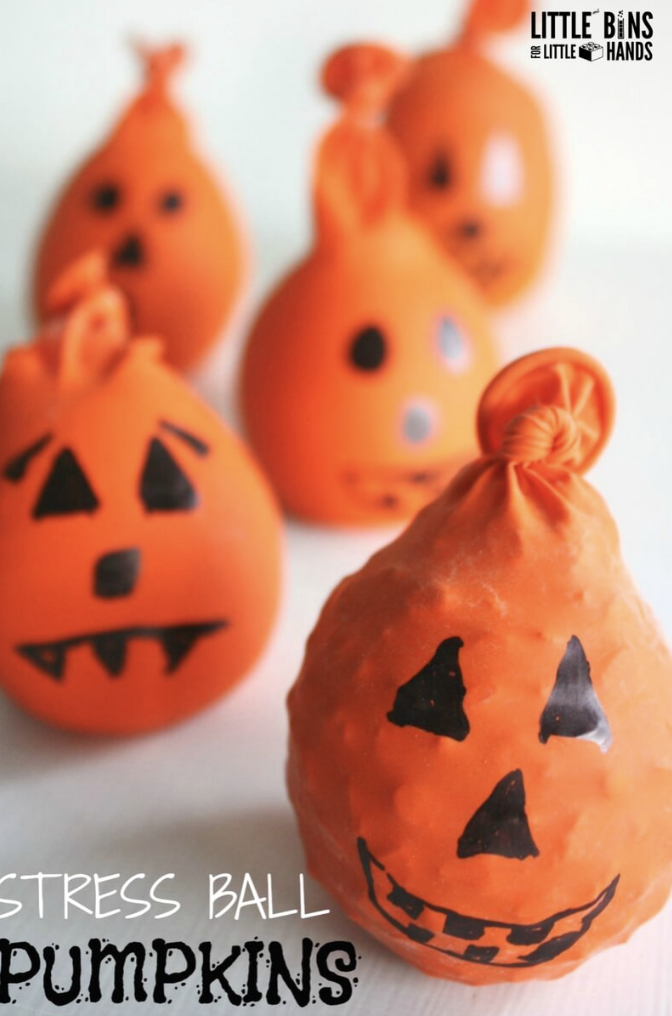
Supplies:
- orange balloons
- black permanent marker
- funnel
- filling (flour, corn starch, dried lentils, playdough, popcorn kernels)
Instructions:
1. Start by stretching the balloon to help it expand to fit the fillings. Do this by blowing up the balloon and holding it full of air for about 20-30 seconds.
2. Let the air out of the balloon and place a funnel into the skinny tube section of the balloon.
3. Slowly pour your chosen filling into the funnel in small batches, letting the contents of the funnel empty into the balloon before adding more.
4. Tie a knot into the tube of the balloon, sealing the contents in.
5. Use a permanent marker to draw on the lines of a pumpkin or a jack-o’-lantern face. Enjoy squeezing and squishy your balloon pumpkin or even playing a gentle game of catch with it!
12. Leaf Prints
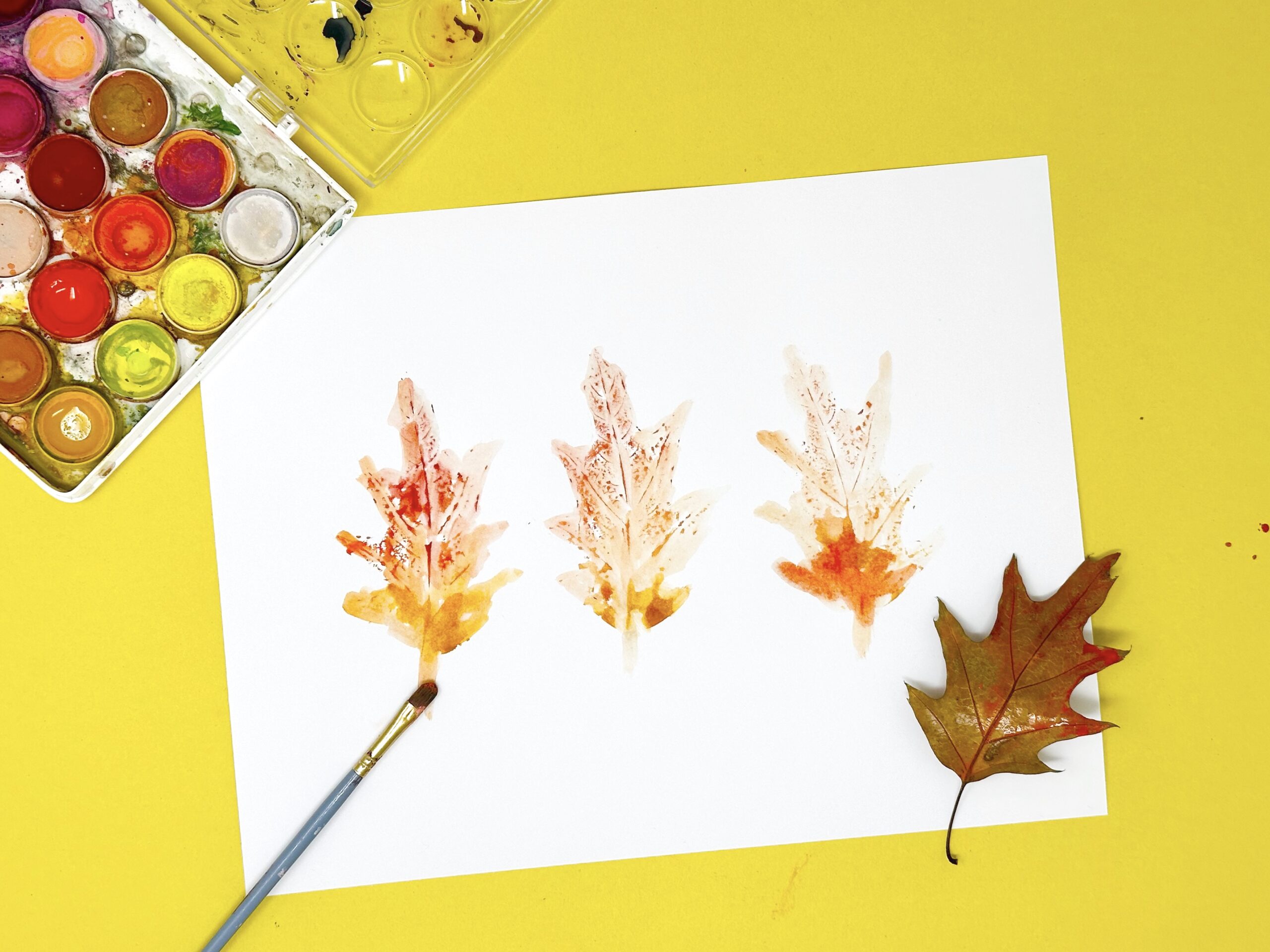
Supplies:
- leaves from outside
- paper
- paint
- paint brush
Instructions:
1. Gather up one or several sturdy leaves from outside.
2. Have your child paint the under side of the leaves (the side with more prominent veins).
3. Then, ask your child to press the paint-coated side of the leaves onto a sheet of paper, leaving behind unique and colorful leaf prints.
Tip: If using watercolor paint, be careful not to use too much water as it will make it harder for the paint to stick to the leaves. See additional leaf print techniques here!
13. Paper Plate Scarecrow
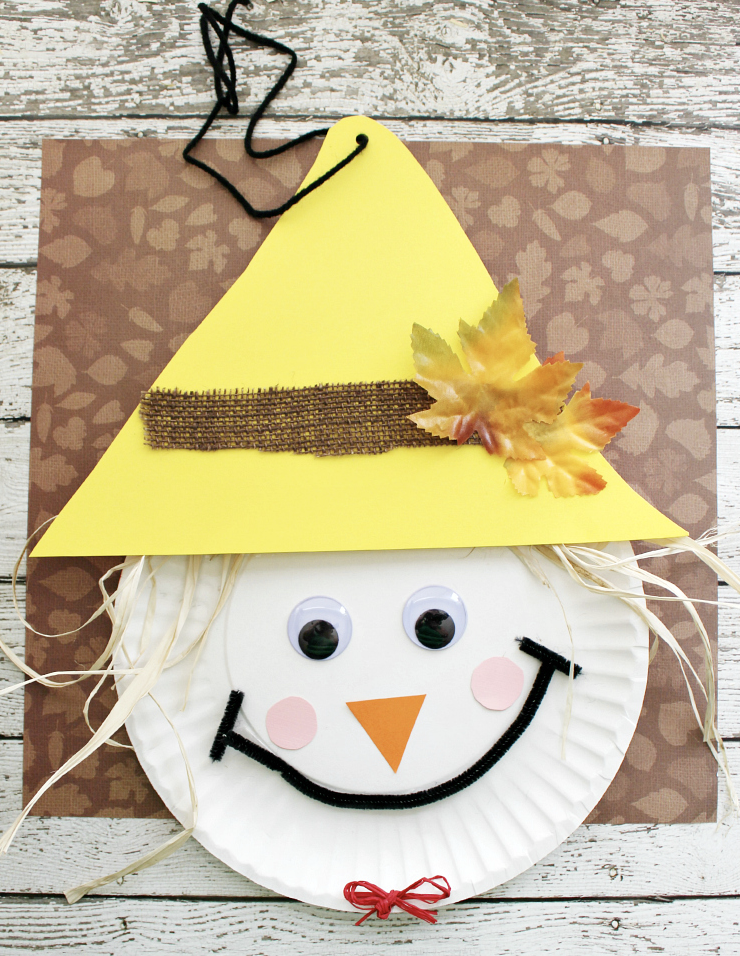
Supplies:
- paper plate
- dried straw or hay
- yellow, orange, and pink construction paper
- googly eyes
- scissors
- glue stick
- black marker or pipe cleaner
- optional: pink crayon or paper for cheeks
Instructions:
1. Cut yellow paper into a triangle large enough to fit the paper plate. This will be the scarecrow’s hat.
2. Use the dried straw to glue the hair strips around the top edge of the paper plate.
3. Glue the yellow hat down over the hair, across the top of the plate.
4. Glue down googly eyes, an orange paper triangle nose, and pink paper circles for the cheeks.
5. Curve the pipe cleaner into a smile and glue it down onto the plate (watch out for potentially sharp ends!). You could also use a black marker to draw it in.
6. Let dry and hang your scarecrow for a festive fall decoration!
14. Pumpkin Apple Stamping
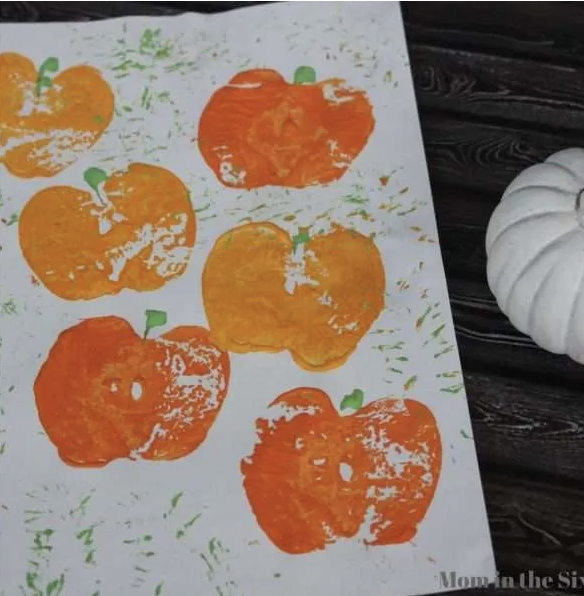
Supplies:
- paper
- orange and green paint
- apples sliced in half
- paper plate
- apple stem
Instructions:
1. Pour out a bit of the paint onto a paper plate.
2. Dip the apple half into one of the paint colors and gently press it onto the paper, creating a pumpkin-shaped print.
3. Take your apple stem and press it into the green paint (you can also try painting it on with a paint brush). Then press the stem down onto the paper above the pumpkin.
4. Let dry completely, then show everyone how you turned apples into pumpkins!
15. Leaf Salt Painting
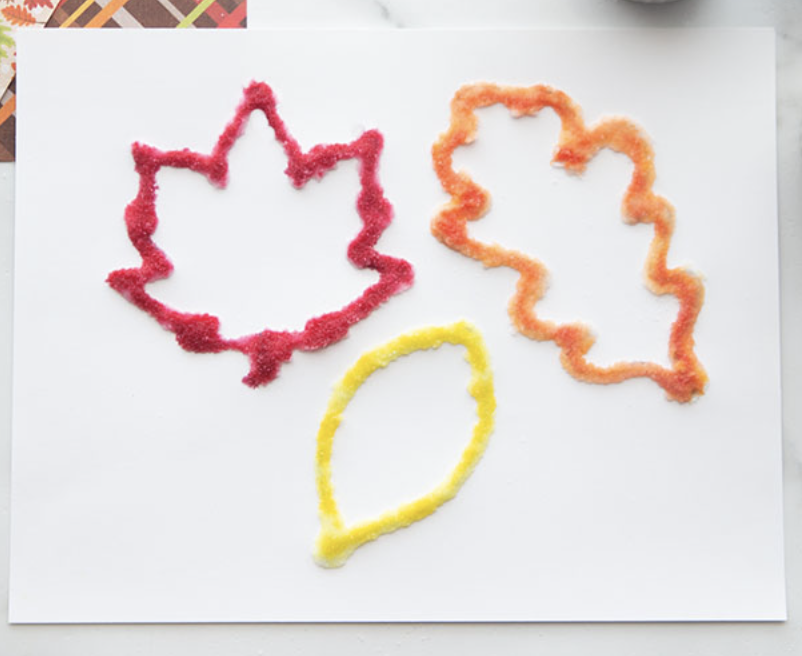
Supplies:
- white card stock
- liquid school glue
- table salt
- watercolor paints or food coloring diluted with water
- paintbrush or dropper
- pencil (optional, for drawing leaf shapes)
- tray or shallow box (to catch excess salt)
Instructions:
1. Draw a leaf shape on your paper with a pencil—or use one of our free printable leaf templates as a guide.
2. Set your paper in a baking sheet to help contain the salt.
3. Trace the leaf shape with white glue, following the pencil lines carefully.
4. Place the paper on a tray and generously sprinkle salt over all the glue lines.
5. Gently tap off the extra salt and let the glue and salt dry slightly (about 10–15 minutes).
6. Dip your paintbrush into watercolor paint, and gently touch it to the salted glue lines.
7. Watch the color spread! Continue adding different colors until your leaf is complete.
8. Let dry completely, then display your sparkling salt leaf art!
16. Sunflower Paper Plate
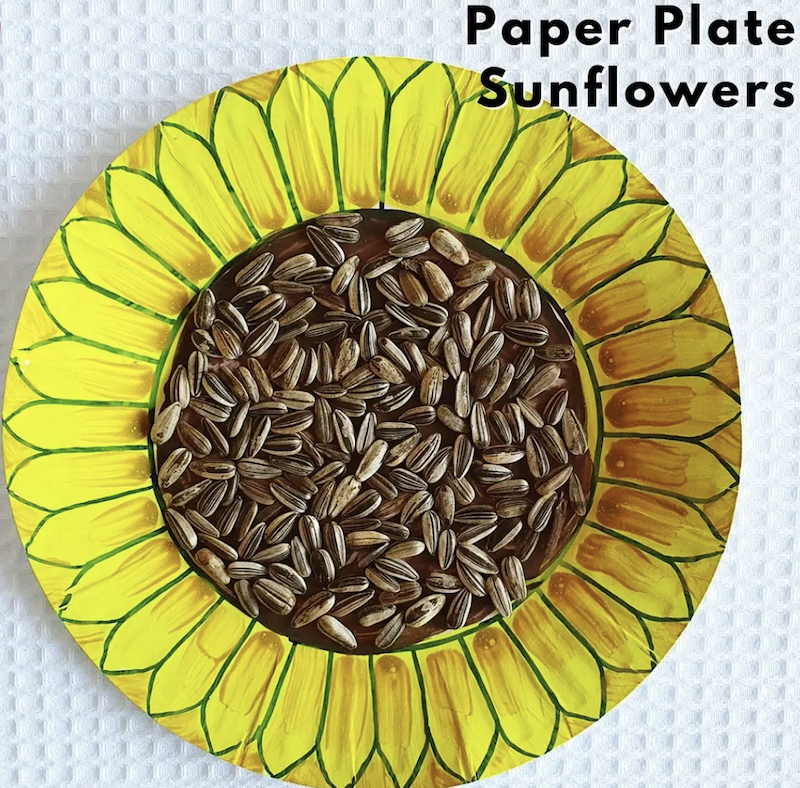
Supplies:
- paper plate
- black marker
- yellow and brown paint
- craft glue
- sunflower seeds
Instructions:
1. Use a marker, pen, or pencil to draw a circle in the middle of the paper plate, as well as a series of petals around the edge. You can make the petals as big or small as you’d like.
2. Fill in the petals with yellow paint.
3. Mix some craft glue into your brown paint. Then use the mixture to paint the brown circle in the center of the flower.
4. While the glue/paint mixture is still wet, sprinkle sunflower seeds onto the middle of the plate and let them dry.
Tip: After completing this craft, keep little ones enjoying this flower with our free printable sunflower coloring pages.
17. T is for Tree Fall Letter Craft
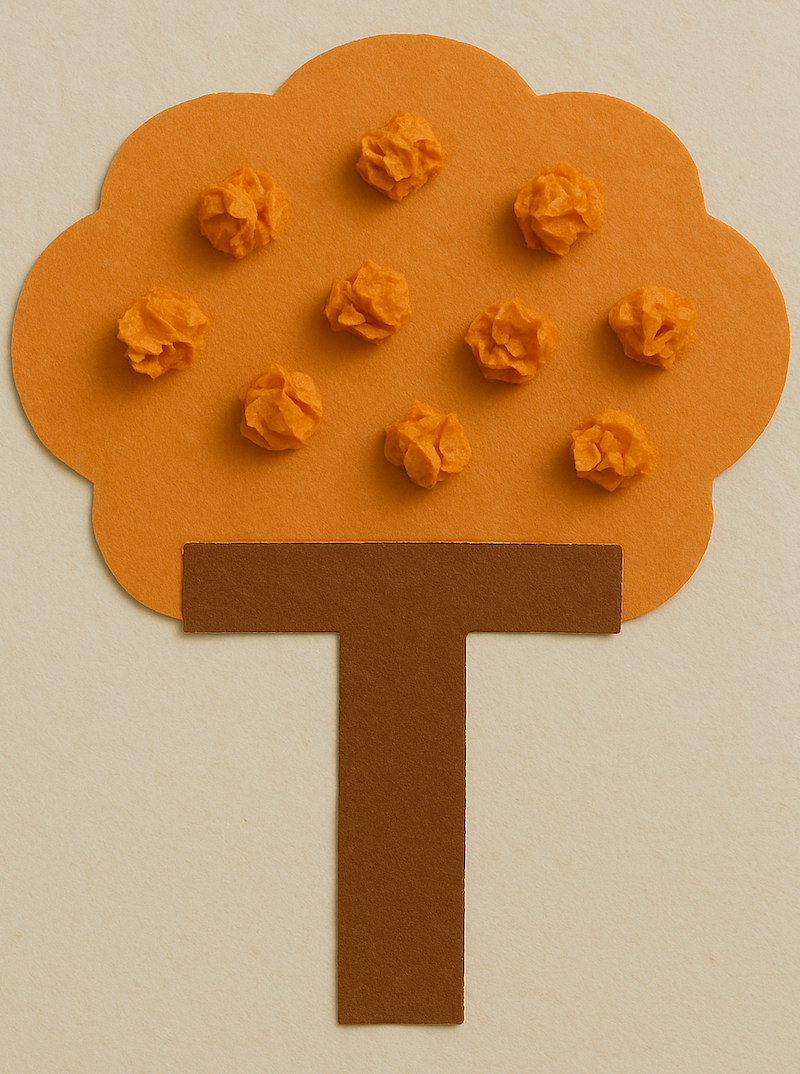
Supplies:
- brown and orange construction paper
- sheet of white paper
- scissors
- glue
Instructions:
1. Print out or draw an uppercase letter T onto a sheet of brown construction paper, then cut it out. Use our letter T outlines from this set of worksheets if needed.
2. Cut out a cloud shape from orange construction paper and glue it to the top portion of the letter T, forming the canopy of the tree.
3. Add texture (or leaves) by crumpling up small bits of orange paper and gluing them to the top of the tree.
Fall Crafts and Art Activities for Kindergarteners
Kindergarten is a great time for kids to try more hands-on projects, and fall is full of inspiration! These seasonal crafts give children a chance to cut, glue, paint, and create while exploring autumn themes like trees and pumpkins and even work in some letter recognition practice too.
18. Hand Print Acorn
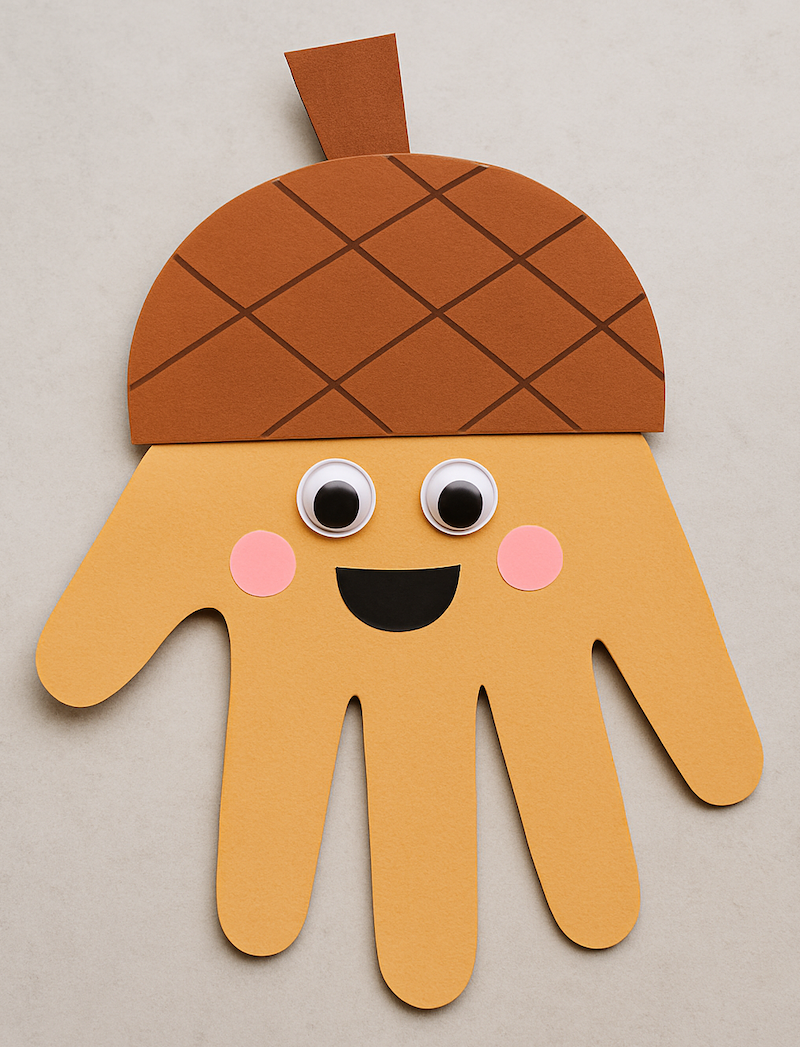
Supplies:
- tan, pink, and brown paper
- googly eyes
- glue
- black and brown markers
Instructions:
1. Trace your child’s hand onto the tan paper and cut it out.
2. Trace and cut out a semi-circle from the brown paper. The semi circle should be wide enough to fit the end of your child’s handprint.
3. Cut out a small tapered rectangle from the brown paper to be the acorn’s stem.
4. Cut out two small circles from the pink construction paper. You can also use pink marker to create the acorn’s rosy cheeks.
5. Assemble and glue down all the pieces, gluing on the googly eyes at the end.
6. Use a brown marker to draw the grid lines onto the acorn’s cap and a black marker to draw on a smile.
19. Bubble Wrap Corn
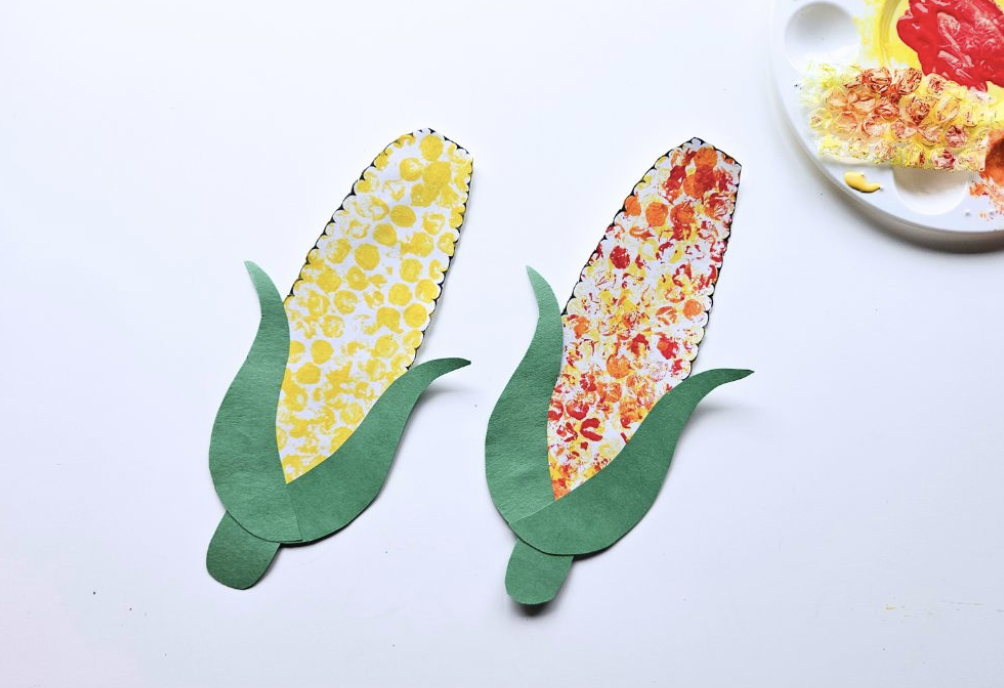
Supplies:
- white and green paper
- yellow, red, and orange paint
- bubble wrap (cut into small squares)
- paper plate
Instructions:
1. Draw and cut out the shape of a corn cob from the white paper.
2. Draw and cut out two corn husks and a stem from the green paper.
3. Squeeze the paint onto a paper plate.
4. Have your child gently dip a square of bubble wrap into the paint and press it onto their corn cob. Repeat this process until their satisfied with how their corn looks. Let it dry.
5. Glue the green paper husks and stem to the painted corn cobs and enjoy your corn masterpiece!
20. Pinecone Turkey
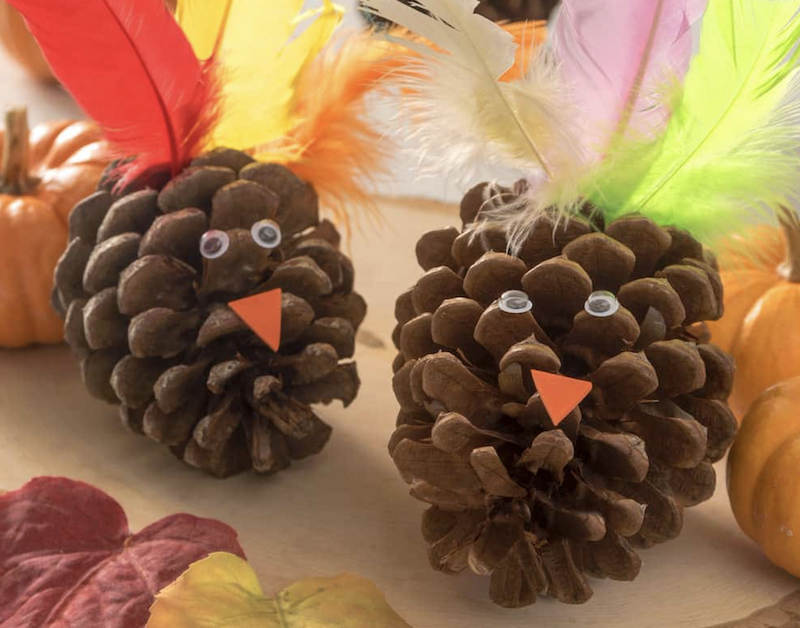
Supplies:
- pine cone
- feathers
- liquid glue
- paint brush
- colored paper
- scissors
- googly eyes
Instructions:
1. Turn your pine cone on its side so the bottom of it is facing you.
2. Have your child pick out the feathers they’d like to use on their pine cone turkey and cut out a small orange triangle to form the turkey’s beak.
3. Use the paint brush to brush the liquid glue onto the upper back of the pinecone. Place the feathers in the glue. Hold them in place briefly to dry a bit.
4. Glue the googly eyes to the front of the turkey and then add it’s beak.
21. Foil Painted Tree
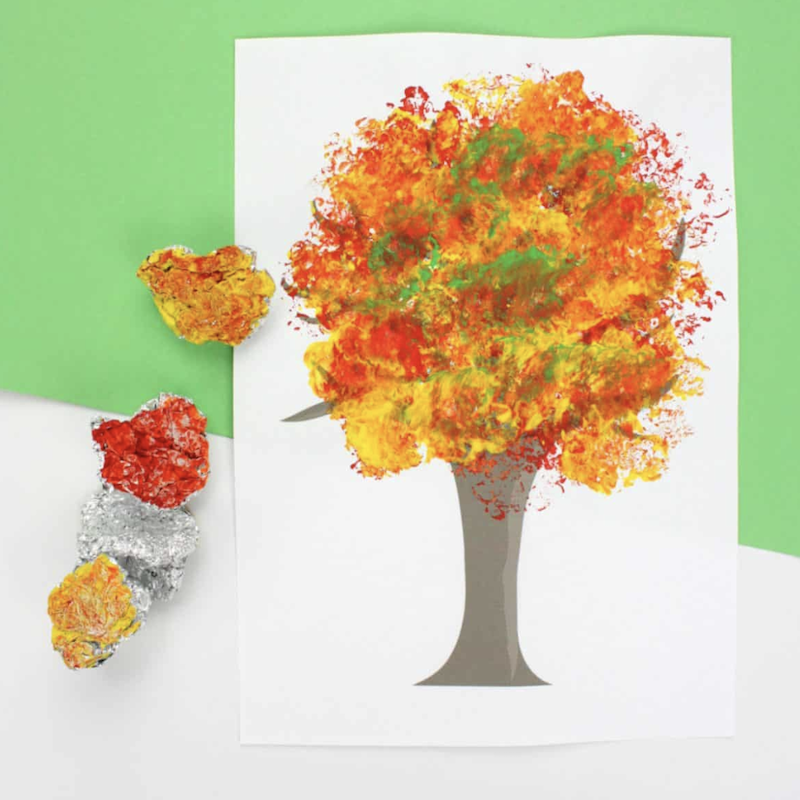
Supplies:
- white paper
- brown paper
- red, orange, and yellow paint
- paper plate
- tin foil
Instructions:
1. Cut out the shape of a tree trunk and glue onto the white sheet of paper.
2. Squeeze some of the paint onto a paper plate.
3. Rip off several small squares of tin foil and crumple them up slightly.
4. Have your child dip the foil into the paint and then onto the paper, creating fall colored leaves for their tree.
22. Yarn Pumpkin
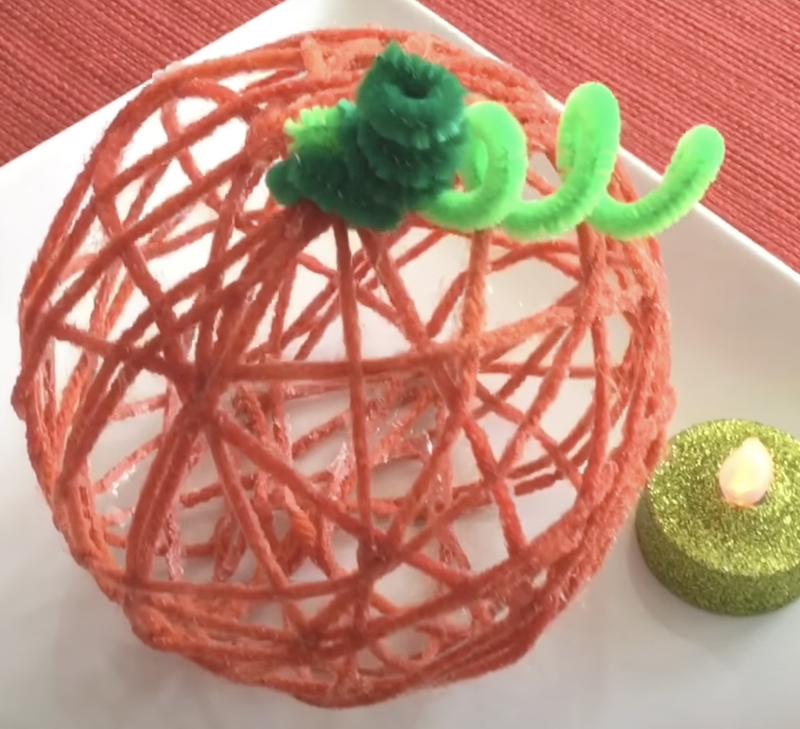
Supplies:
- orange yarn
- balloon
- glue
- green pipe cleaners
- pencil
- disposable gloves
Instructions:
1. Blow up a small balloon to a round pumpkin-like shape and tie it.
2. Mix white glue with water (about 2 parts glue to 1 part water) in a bowl.
3. Dip orange yarn into the glue mixture and coat it fully.
4. Put on your disposable gloves. Wrap the gluey yarn around the balloon in different directions until mostly covered.
5. Let it dry overnight until the yarn hardens completely.
6. Pop and remove the balloon carefully from inside the hardened yarn shape.
7. Twist green pipe cleaners into a stem and curly vines, then insert them into the top of the pumpkin.
Tip: Watch a full video tutorial on creating the pumpkin yarn craft here.
23. Bead Corn
Supplies:
- 6 green pipe cleaners
- assorted pony beads (about 100)
- scissors
- brown paper (optional)
Instructions:
1. String the beads onto the pipe cleaner. Repeat six times so you have six beaded pipe cleaners.
2. Group your six beaded pipe cleaners together and twist them together at the top and bottom to prevent the beads from falling off.
3. Trim the bottom ends of the pipe cleaners (leave the top ends long). Careful–the tips of the pipe cleaners will be sharp after they are cut!
4. Carefully bend the tips of the pipe cleaners you trimmed upward and towards the middle so that the sharp points will not stick out.
5. For an additional fun look, you can cut a piece of brown paper to wrap your corn cob in. A brown lunch bag or grocery bag can also work great for this.
Tip: We used 16 beads on each pipe cleaner in our example.
24. Scarecrow Popsicle Craft
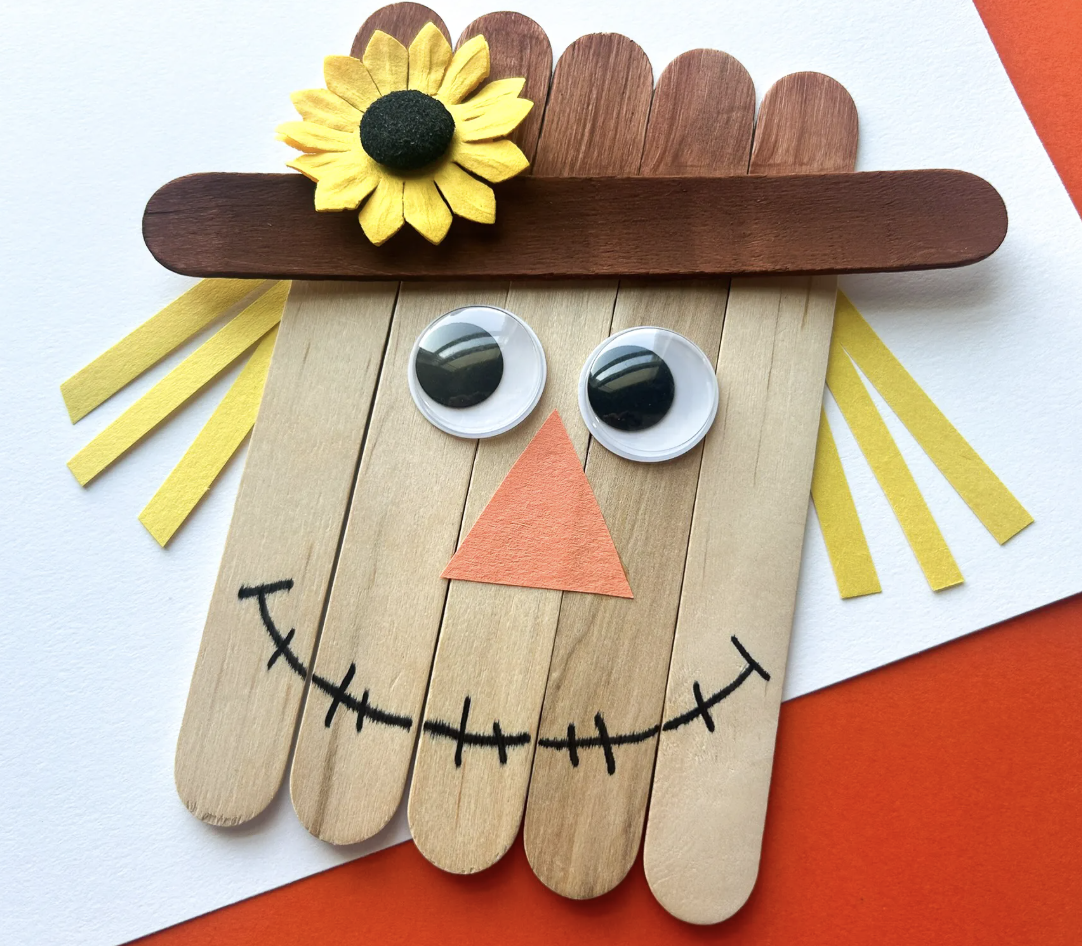
Supplies:
- 6 craft sticks
- liquid glue
- card stock
- orange and yellow paper
- brown paint
- googly eyes
- black and orange marker
- dried or artificial flower (optional)
Instructions:
1. Line 5 craft sticks up on a piece of card stock and glue them down.
2. Place the last craft stick on a diagonal towards the top of the other craft sticks, forming the brim of the scarecrow’s hat.
3. Paint the “hat” portion of the craft sticks brown, leaving the rest unpainted.
4. Glue down googly eyes and any dried flowers or straw you may want to add to the scarecrow’s hat.
5. Cut a triangle from the orange paper to form the scarecrow’s nose and several thin strips of yellow paper for the scarecrow’s hair. Glue it all into place.
6. Use the black marker to draw a smile onto the scarecrow.
25. O is for Owl Letter Craft
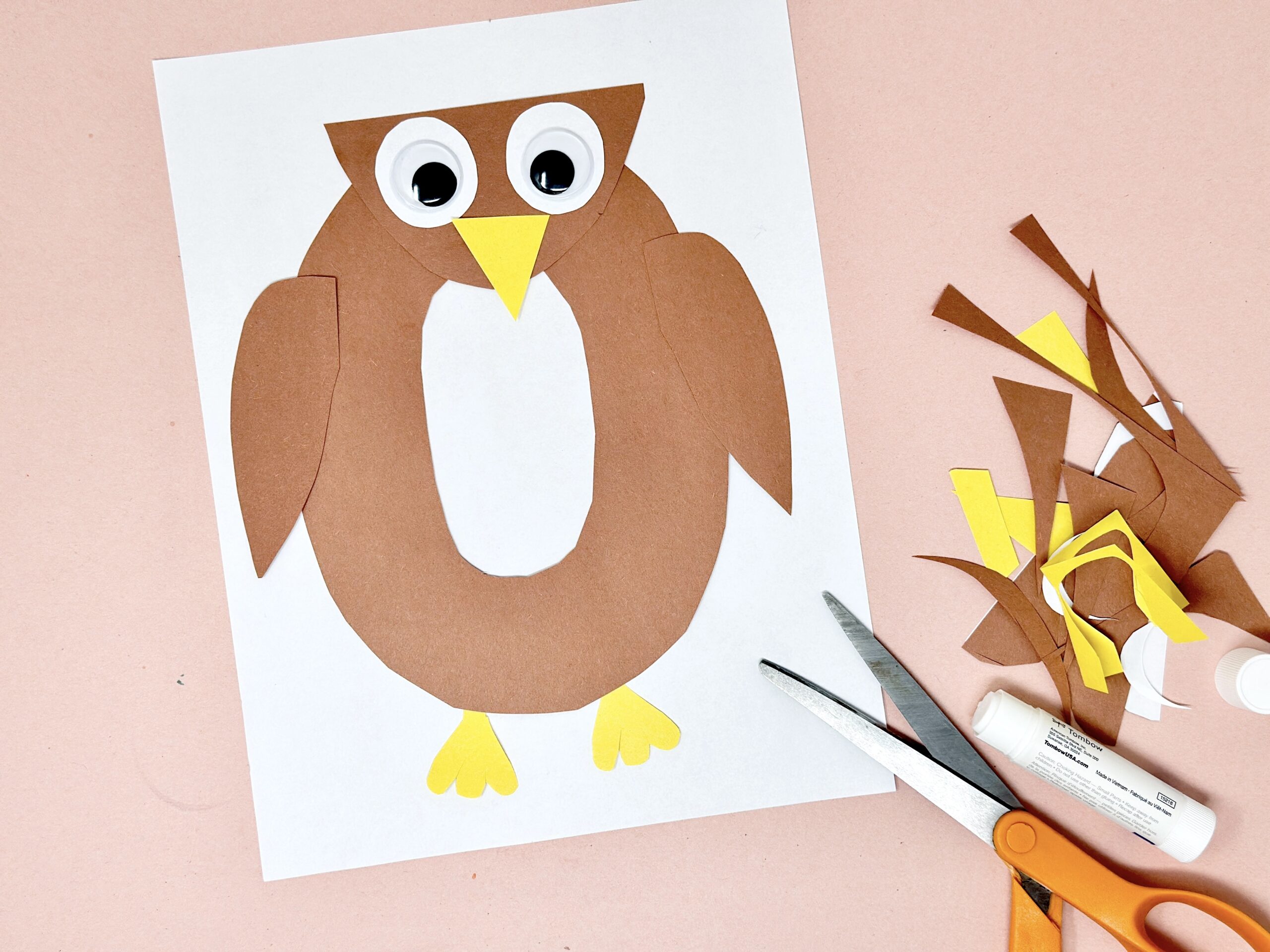
Supplies:
- brown, white, and yellow construction paper
- scissors
- glue
- googly eyes
Instructions:
1. Trace the letter O onto a piece of brown construction paper and cut it out. Use a template from our free letter O worksheets if you’d like.
2. Cut out a semi-circle for the owl’s head and two long pointy ovals for its wings.
3. Cut out a yellow triangle for the owl’s beak and two triangles with a wavy edge for the owl’s feet
4. Cut out two white circles for the owl’s eyes.
5. Work with your child to assemble and glue down all the pieces of the owl, saving the googly eyes for the end.
Tip: Pair this craft with out free printable owl coloring pages for even more creative fun!
26. Toilet Paper Tube Tree
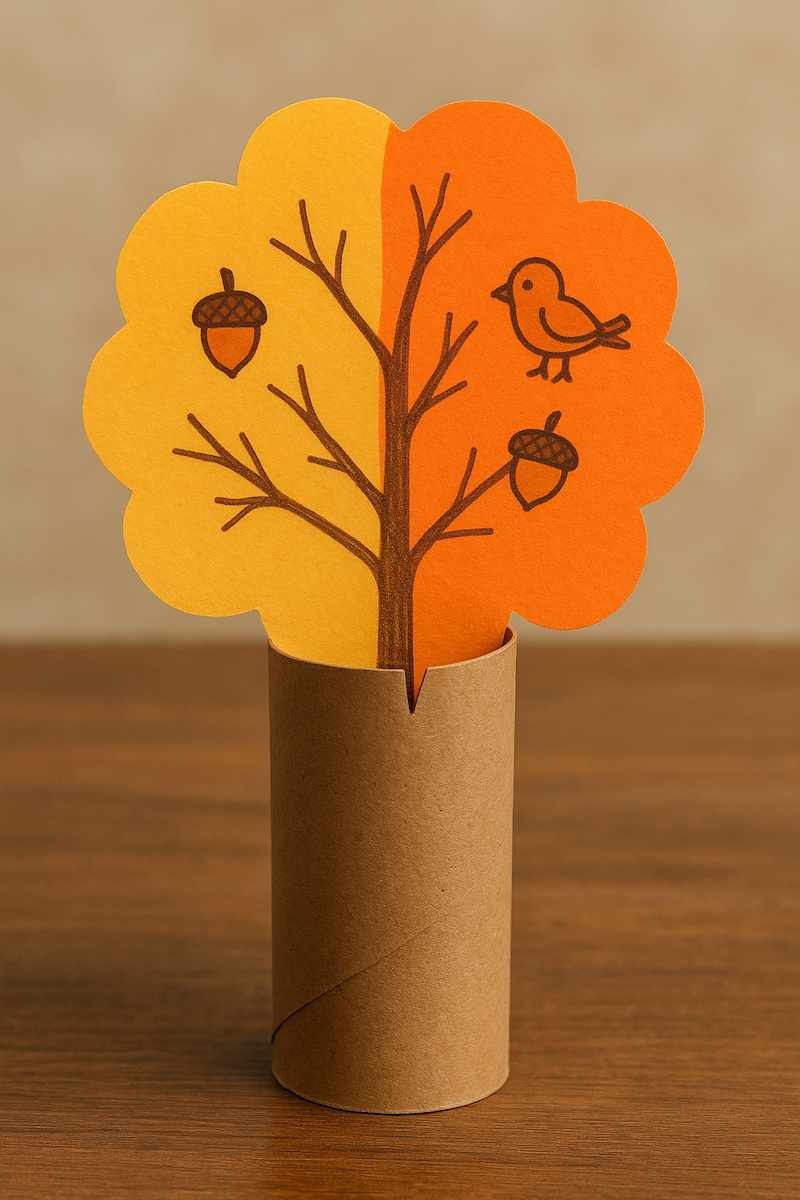
Supplies:
- brown toilet paper tube
- orange and yellow construction paper or white card stock
- liquid school glue
- scissors
- fall stickers
- markers or crayons
Instructions:
1. Use the orange and/or yellow construction paper to cut out a cloud shaped tree top. You can also trim and color a white piece of card stock, as we did here.
2. Use stickers of markers to decorate your tree top with branches, animals, acorns, and whatever else you’d like.
3. There are two different ways to attach the tree top to the toilet paper tube: 1) You can trim the bottom of your tree top to slide into the toilet paper tube. 2) You can cut slits into opposite sides of the toilet paper tube and slide the paper into them.
4. Create more trees each day until you have a forest!
27. Sunflower Letter Craft
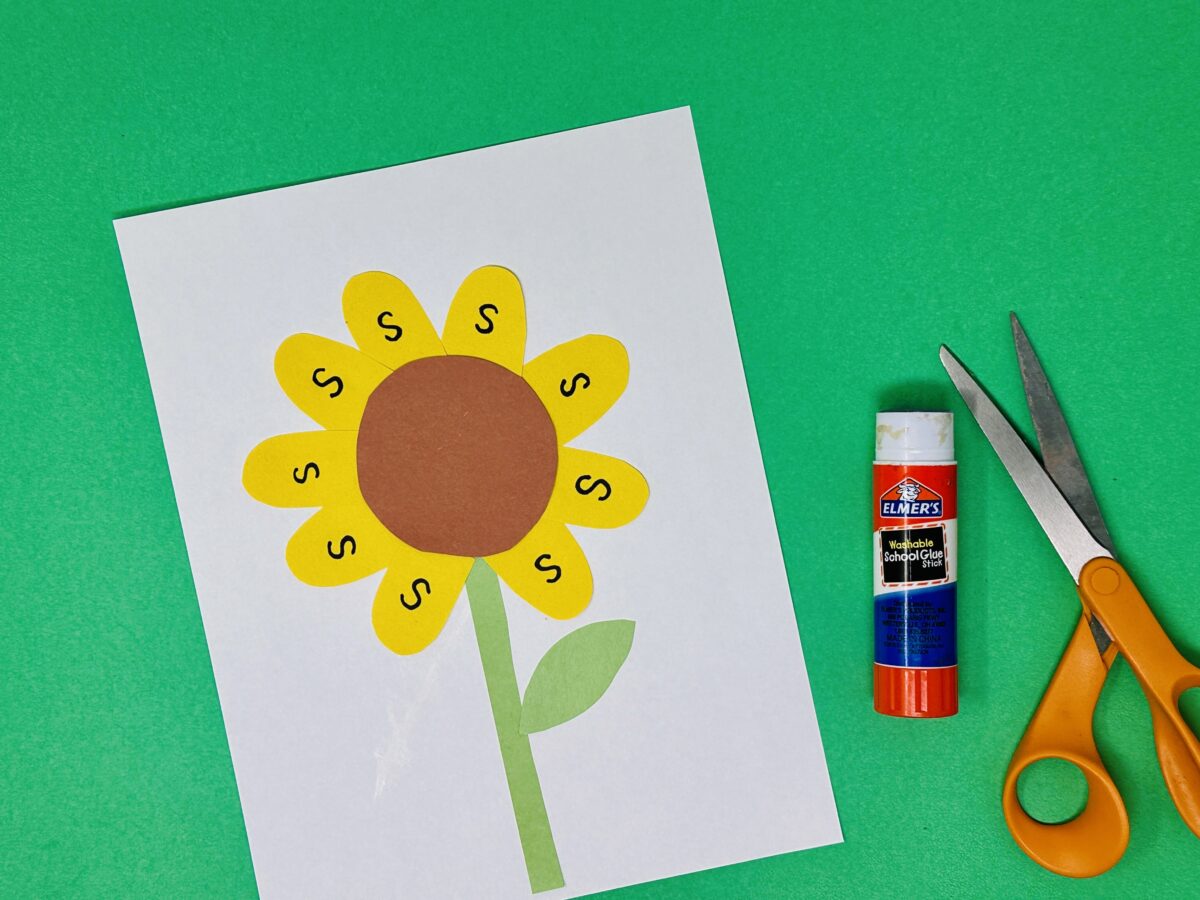
Supplies:
- yellow, brown, white, and green paper
- marker
- scissors
- glue
Instructions:
1. Cut out a circle from a brown piece of paper.
2. Cut out oval-shaped semi-circles from the yellow paper to create the sunflowers petals.
3. Cut out a long stem and leaf from the green paper.
4. Have your child assemble and glue down the sunflower parts.
5. Have your child assemble and glue down the sunflower parts.
6. Next, have them practice making the letter S shape in each sunflower petal, using a pencil, marker, or crayon.
Tip: Keep practicing with the letter S with out Letter S Worksheets.
28. A is for Apple
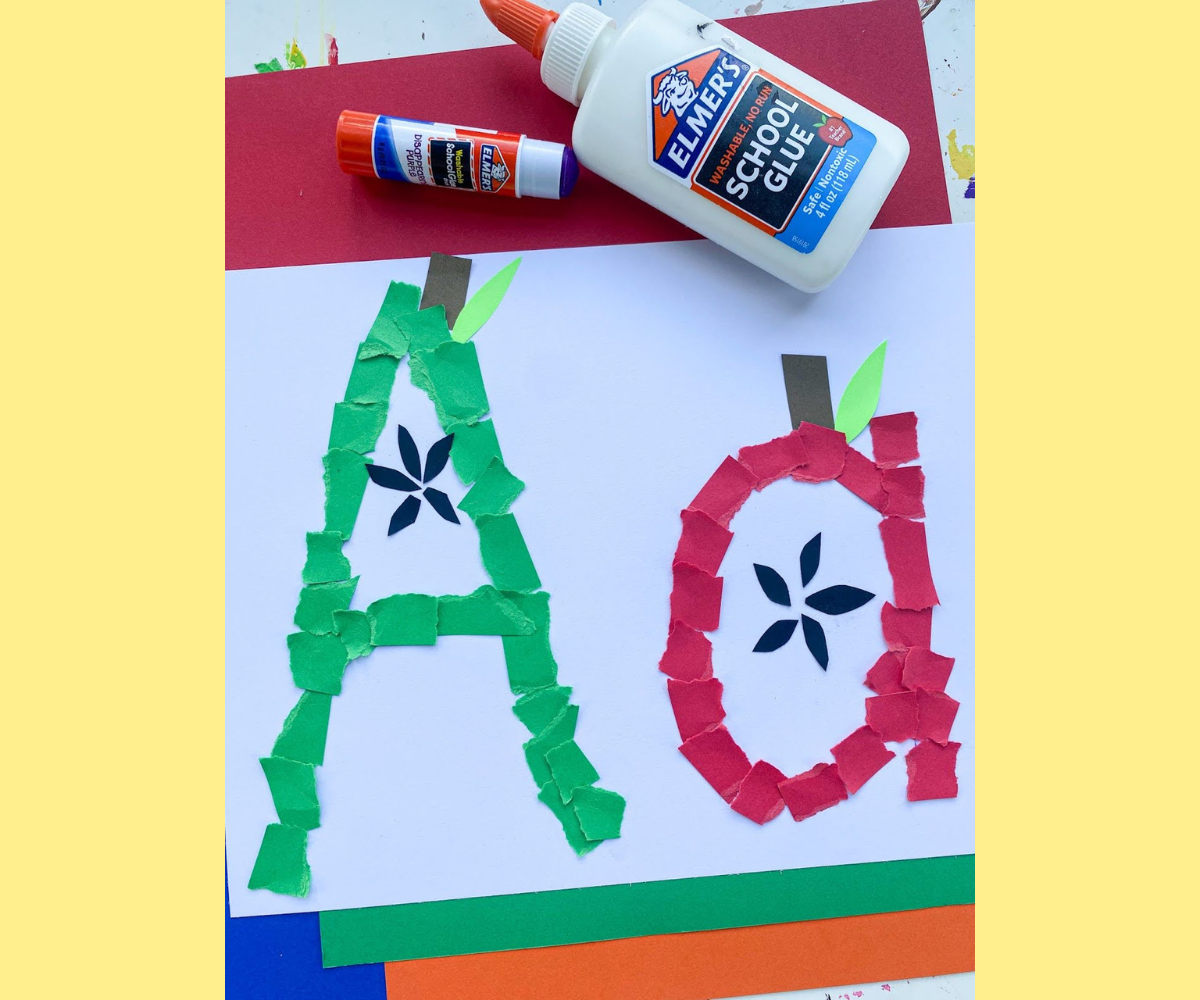
Supplies:
- white card stock paper
- red, green, and brown construction paper
- marker
- glue stick
- scissors (optional)
Instructions:
1. Trace an uppercase and lowercase A onto the card stock.
2. Have your child cut or tear the construction paper into small pieces, then glue them over the letter shapes you traced. Use red for one letter and green for the other.
3. When they’re done, add brown stems and use a marker to draw little seeds inside as shown.
29. Paper Pumpkin Wreath
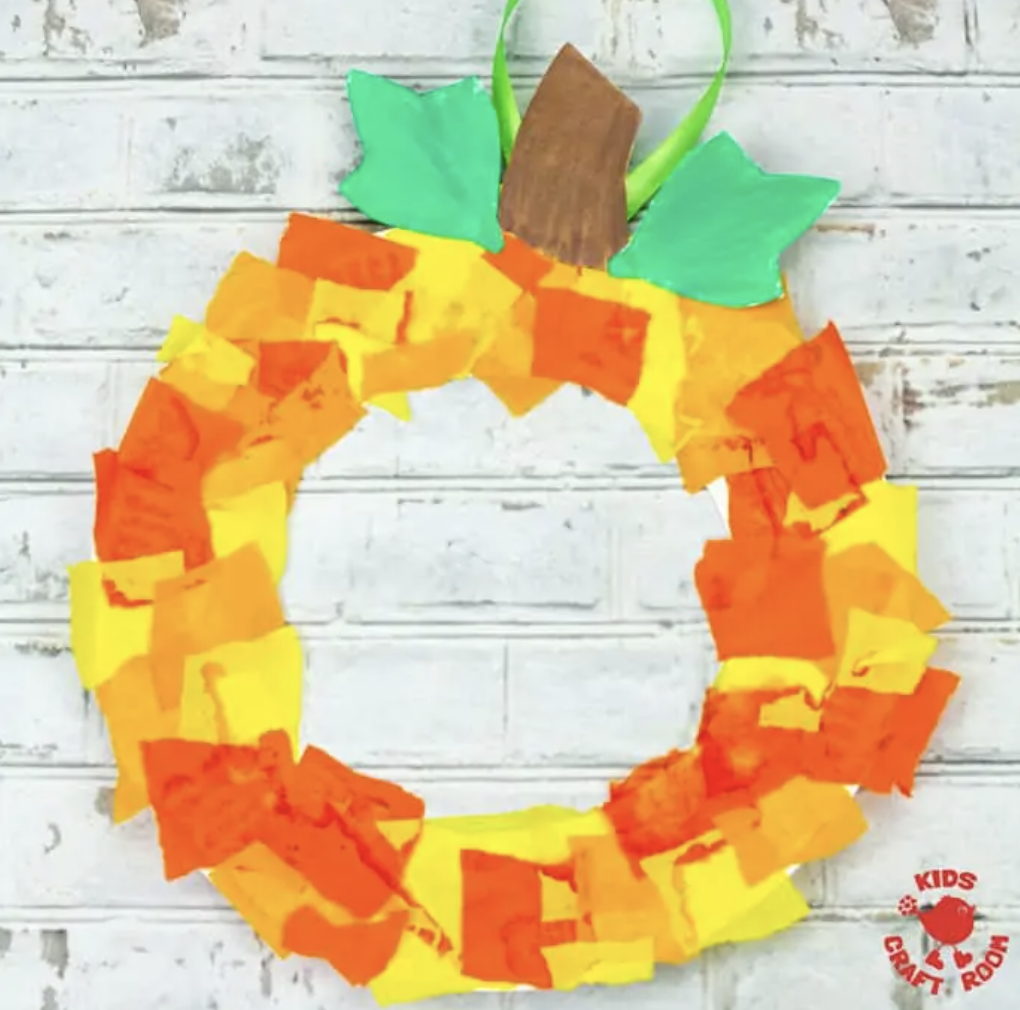
Supplies:
- 1 paper plate
- orange , green, and brown construction paper
- scissors
- glue stick or white glue
- pencil (optional)
Instructions:
1. Cut the center out of a paper plate to create a wreath ring.
2. Tear orange and yellow construction paper into small pieces.
3. Glue the orange and yellow pieces all around the paper plate ring to cover it completely.
4. Cut green leaves and brown stems from construction paper and glue them to the top of the wreath.
5. Add a string at the top for hanging.
30. Balloon Bat
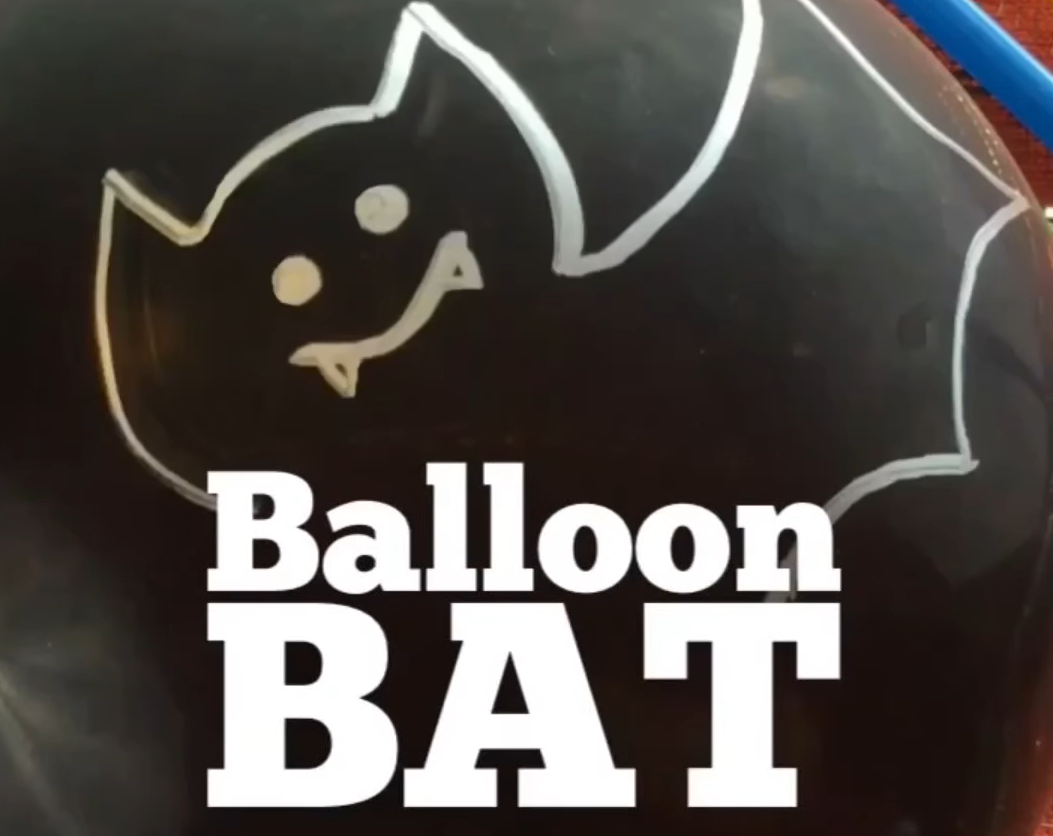
Supplies:
- dark-colored balloons
- binder clip
- tape
- silver marker
- string
- drinking straws
Instructions:
1. Wrap a piece of tape around the balloon’s neck (the opening) to make it sturdier for clipping.
2. Blow up the balloon to your desired size, but don’t tie it. Pinch the opening, fold it over a few times, and secure it with a binder clip.
3. On the opposite side of the balloon opening, use a marker to draw a bat—outline the wings, body, and head, then add eyes, ears, and a mouth.
4. Thread a long piece of string through a drinking straw. This will guide the balloon as it flies.
5. Tape the straw securely to the top center of the balloon (above your drawing) to ensure a straight flight.
6. Tie each end of the string to sturdy objects (like chairs or doorknobs) so it’s stretched tight and level.
7. Unclip the binder clip. The escaping air will propel your balloon bat along the string for a fun flying effect!
31. Pumpkin Suncatcher
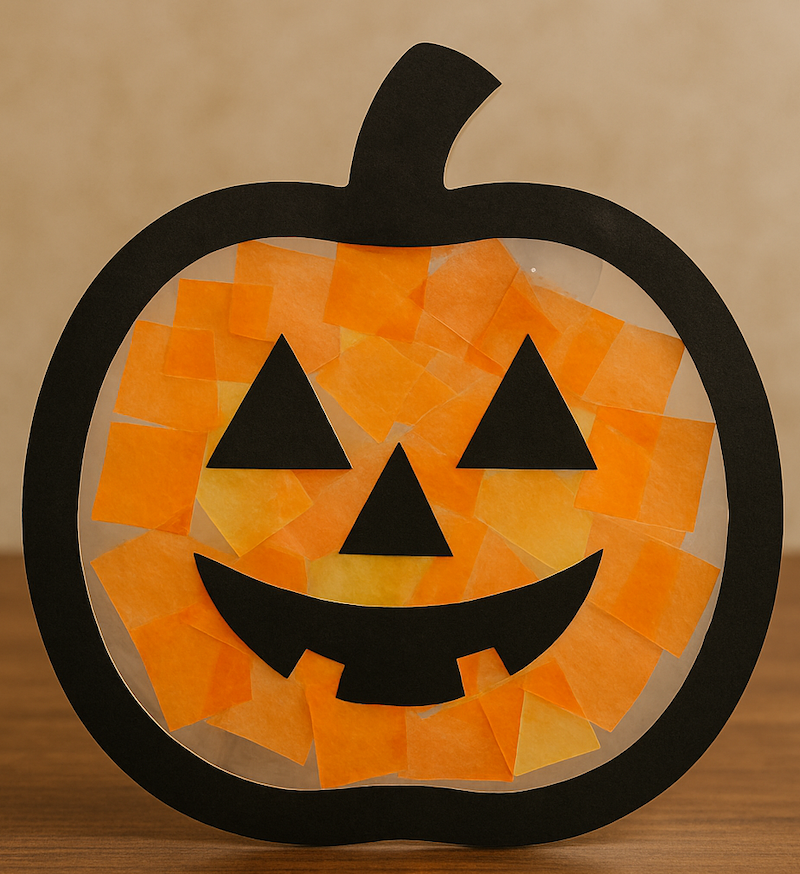
Supplies:
- tissue paper
- black construction paper
- clear contact paper
- paper trimmer
- scissors
- masking tape
- sharpie
- pumpkin outline
- card stock (optional)
Instructions:
1. Cut a large pumpkin shape out of black construction paper, then cut out the inside to make a hollow frame.
2. Cut a piece of clear contact paper and stick it—sticky side up—behind the pumpkin frame. Trim the edges of the contact paper to fit the shape of your pumpkin outline.
3. Tear or cut orange tissue paper into small squares or strips.
4. Stick tissue paper pieces onto the sticky contact paper inside the pumpkin frame to fill it in completely.
5. Cut and add black face pieces (triangle eyes, nose, and smile) or make it plain.
6. Seal the back by placing another sheet of contact paper over the tissue-paper-filled side (sticky sides together).
7. Punch a hole or tape a string at the top to hang your pumpkin in the window.
Tip: Try using our pumpkin coloring pages to create a template – simply cut one out around the edges of the pumpkin and trace it.
32. X is for Fox Fall Letter Craft
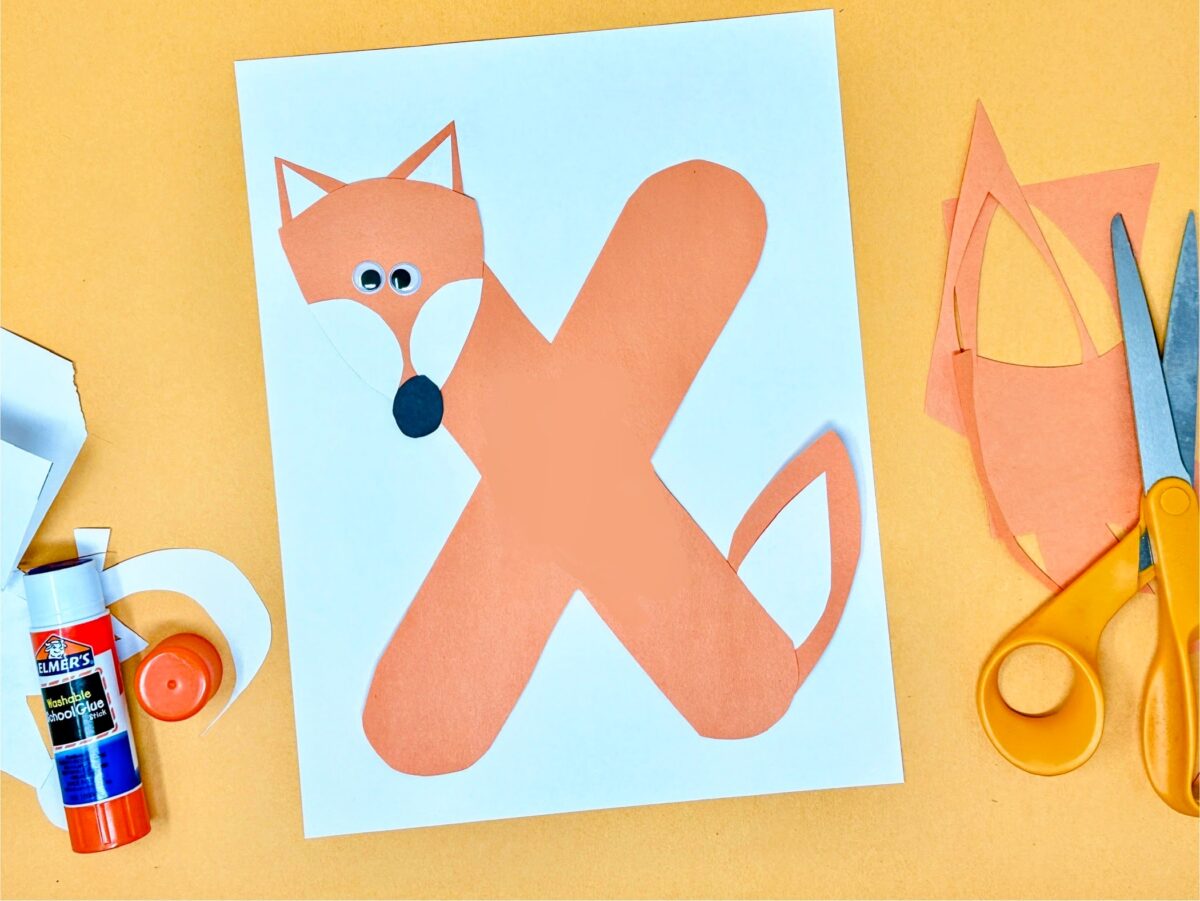
Supplies:
- orange, white, and black construction paper
- scissors
- glue
- googly eyes
Instructions:
1. Draw the shape of a letter X onto a piece of orange paper and cut it out (use our letter X template from above if you need something to trace).
2. Trace the shape of the fox’s head, tail, and ears onto the orange paper and cut them out (all of these shapes are slight variations on a triangle).
3. Cut out smaller white triangles to form the inner part of the fox’s ears and tail.
4. Cut out two oval semi-circles to form the fox’s cheeks.
5. Have your child assemble the pieces to create their fox, gluing them down when they’re ready.
6. Use a black marker or a black circular piece of paper to create the fox’s nose. Glue down googly eyes to complete the fox’s cute face!
Tip: Explore more foxes with our free printable fox coloring pages for kids!
33. Paper Pumpkin
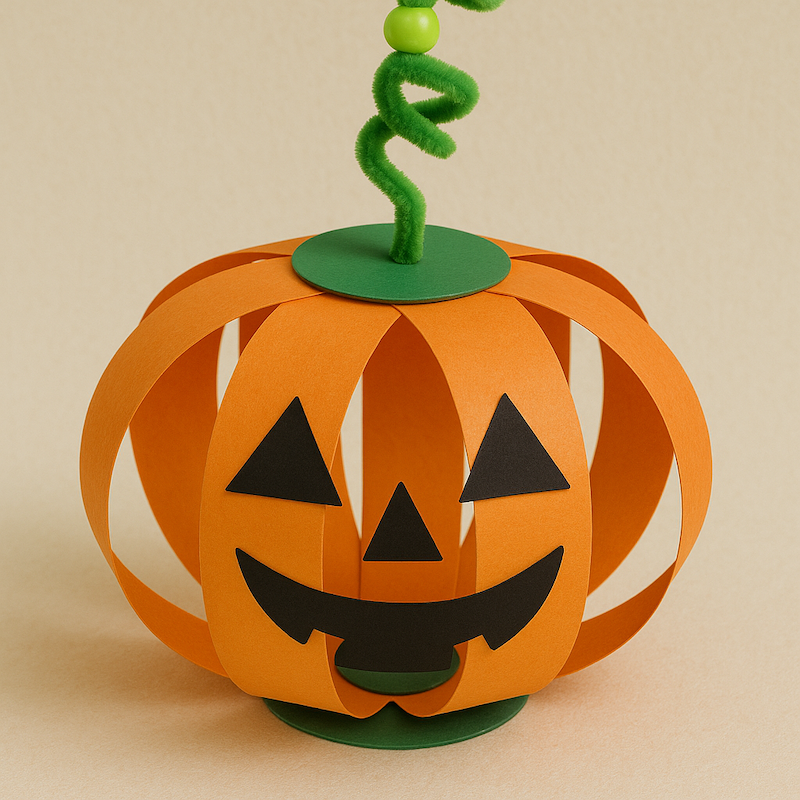
Supplies:
- green, orange, and black construction paper
- scissors
- green pipe cleaners
- pencil or pen
- hole punch
- beads
- glue stick
Instructions:
1. Start by taking two sheets of orange construction paper and layering them on top of each other. Cut four equal strips lengthwise from the paper.
2. Using the green construction paper, cut out two circles, each about 2.5 inches in diameter.
3. Take each of the orange strips and use a hole punch to punch holes at both ends of the strips. The holes should be about 3/4 of an inch from the ends. Then punch a hole in the center of each green circle—this is where you will thread the pipe cleaners through.
4. Take one of the green circles and thread a pipe cleaner through the center hole. Bend the pipe cleaner into a U shape underneath the circle to secure it in place. This will be the base of your pumpkin.
5. Take the other end of the pipe cleaner and thread it through one end of all the orange strips. Once all the strips are threaded onto the pipe cleaner, thread the pipe cleaner through the holes on the other end of the strips. Finally, thread it through the hole in the second green circle, which will be the top of your pumpkin.
6. Once the pipe cleaner is threaded through the top green circle with about 4-5 inches to spare, you can add some beads onto the end of the pipe cleaner.
7. Now take a pencil or pen and wrap the remaining pipe cleaner around it to create a curly stem. Once it’s twisted, slide the pencil out, and your stem will have a fun, curly shape, adding character to your pumpkin.
8. Gently spread out the orange paper strips in all directions to form a round pumpkin shape. The strips should fan out evenly from the top to the bottom, creating the body of your pumpkin.
9. Using black construction paper, cut out shapes to create a spooky or silly face for your pumpkin. You can also use markers if you prefer. Glue or tape the face onto one of the orange strips of your pumpkin.
34. Hanging Bat Craft
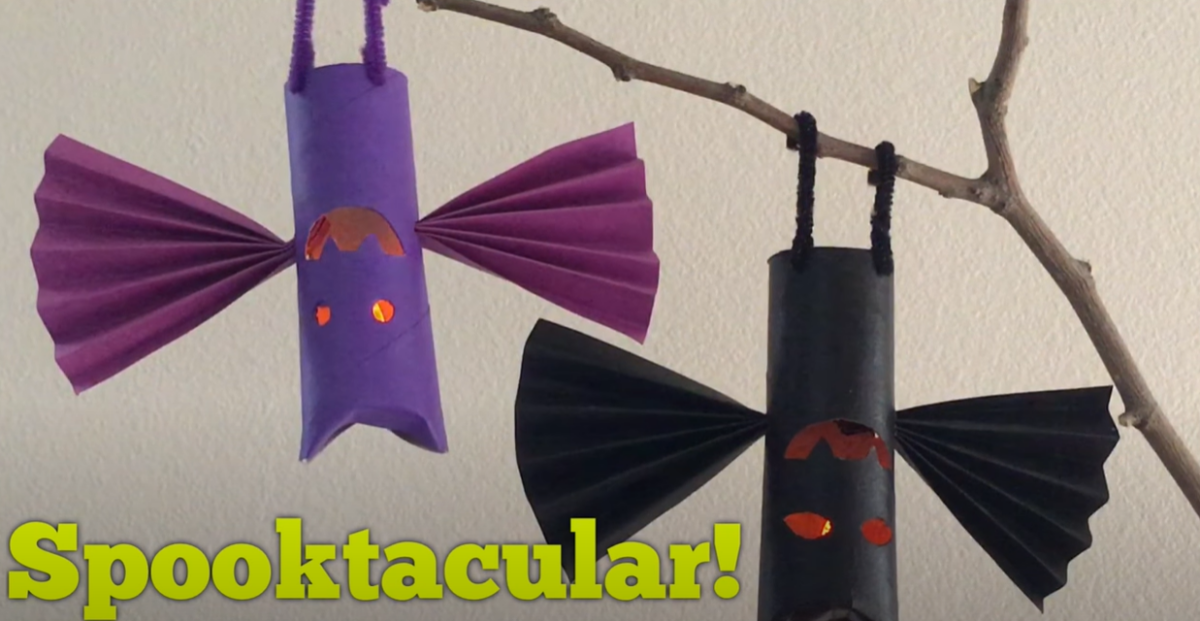
Supplies:
- Paper towel tube (or toilet paper roll)
- Black or purple acrylic paint
- Construction paper (black or purple)
- Pipe cleaners
- LED tea lights
- Scissors
- Pencil
- Glue
- Water and paper towels (for cleanup)
Instructions:
1. Begin by gathering your materials and preparing your workspace. Lay down newspaper or a plastic tablecloth to protect your surface from paint.
2. Cut the paper towel tube in half. You can make two bats or save one half for later.
3. Paint the outside of the cardboard tube with black or purple acrylic paint. Let it dry completely. Apply a second coat if needed.
4. Once the paint is dry, draw simple facial features—eyes, nose, and mouth—on the front of the tube using a pencil. Then, with adult help, cut out the shapes to create the bat’s face.
5. Fold the top and bottom edges of the tube inward slightly to give your bat a more finished shape.
6. Cut two squares from your construction paper and fold each one accordion-style to make the wings.
7. Make a small slit on each side of the painted tube. Insert the folded wings into the slits and secure them with glue if needed.
8. Cut two pieces of pipe cleaner for legs. Attach them to the bottom of the tube by poking small holes or gluing them in place. Bend the ends so the bat can hang from a branch or shelf.
9. Turn on your LED tea light and insert it into the bottom of the tube. The light will glow through the face cutouts.
10. Hang your bat from a branch or hook and enjoy your glowing Halloween decoration!
Legal Disclaimer: Any links to third-party resources are provided for informational purposes only. We are not affiliated with and do not sponsor/endorse these third parties and bear no responsibility for the accuracy of content on any external site.
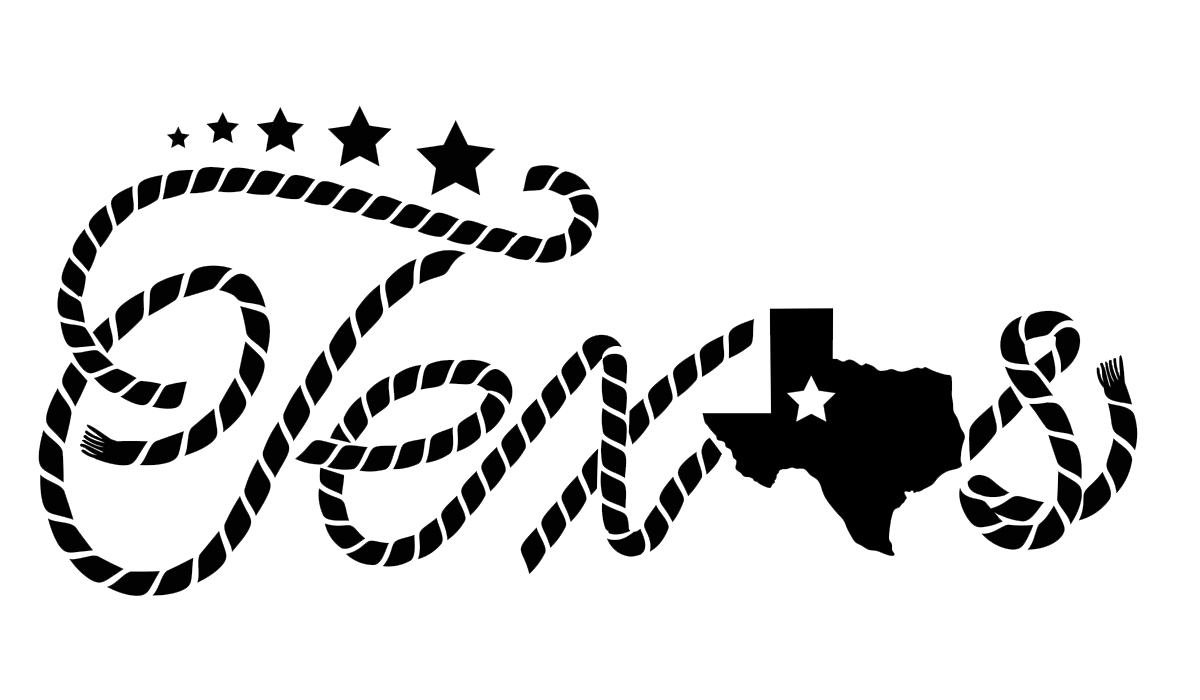

90+ Fun Texas Facts Kids Will Love to Learn
(Free Printable List)
Share

Six flags have flown over the Lone Star State, and each one tells a story. From Spain to Mexico, from being its own republic to joining the United States, Texas has a rich and exciting history. But that’s just the beginning. These fascinating facts about Texas include information about its size, wildlife (armadillos and alligators!), state symbols, and more, proving that everything really is bigger here!
Share these Texas facts for kids with your child or student by printing them out or reading them together online. They’re terrific for the classroom, to help prepare for a family trip, or just to learn more about the second-largest state in the U.S!

TEXAS STATE FACTS
State Nickname:
The Lone Star State
Date of Statehood:
December 29, 1845
State Capital:
Austin
State Sport:
Rodeo
State Motto:
“Friendship”
State Dish:
Chili
State Animal:
Texas Longhorn (and others)
State Butterfly:
Monarch
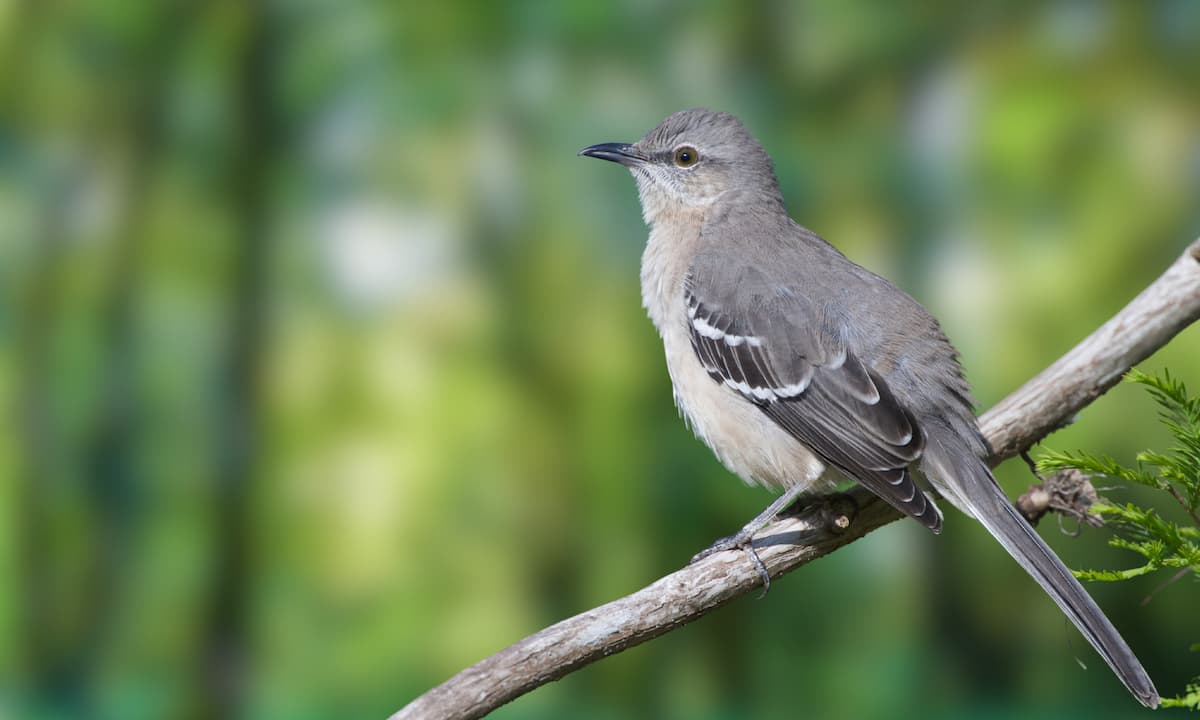
State Bird: Mockingbird

State Flower: Bluebonnet
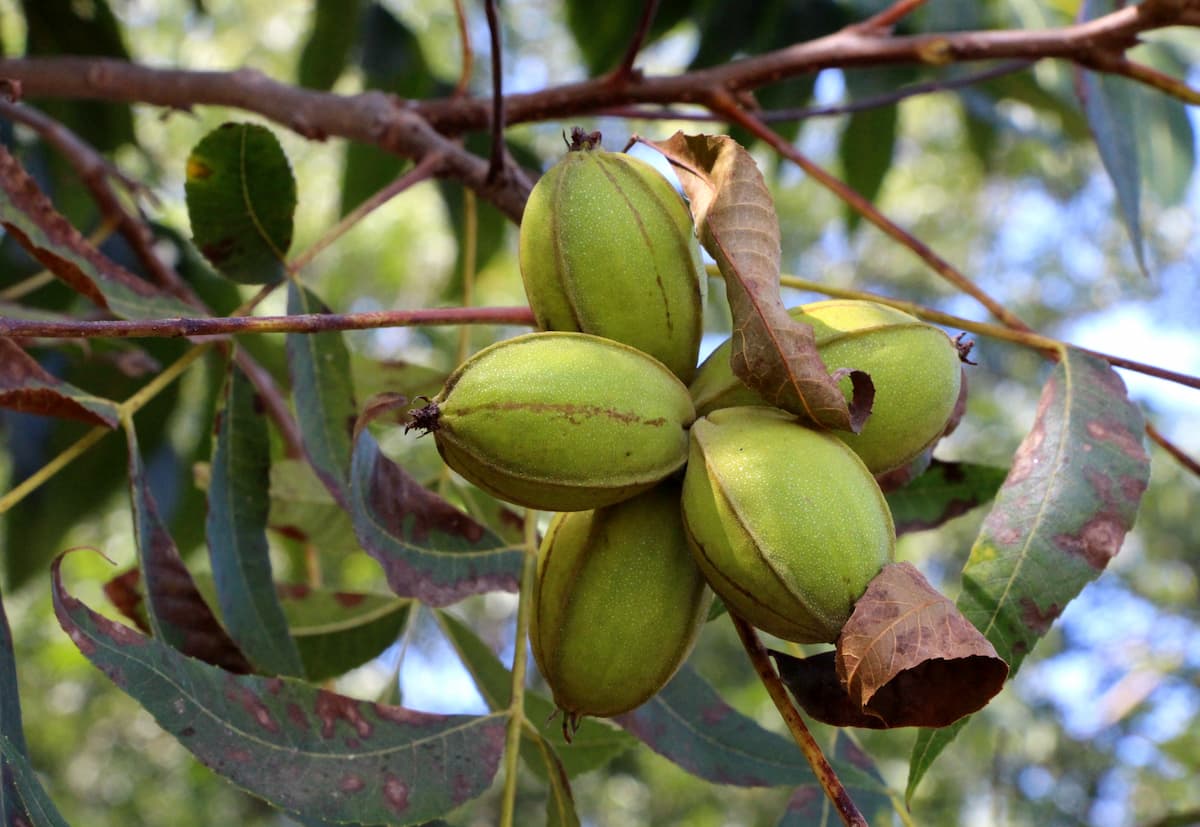
State Tree: Pecan Tree

State Flag:
Lone Star Flag
?
DID YOU KNOW?
A total of six flags have flown over Texas: France, Spain, Mexico, the Republic of Texas, the Confederate States of America, and the United States of America. Note: some historians argue France never governed firmly, but this is widely accepted cultural history.

FUN FACTS ABOUT TEXAS
Fun Fact #1:
Texas is the second largest state after Alaska, at 268,820 square miles. Texas is so big, it’s larger than the country of France!
Fun Fact #2:
The Congress Avenue Bridge in Austin is home to the world’s largest urban bat colony. Up to 1.5 million Brazilian free-tailed bats call the bridge home in summer. People watch them emerge to hunt at dusk each evening in a spectacular display.
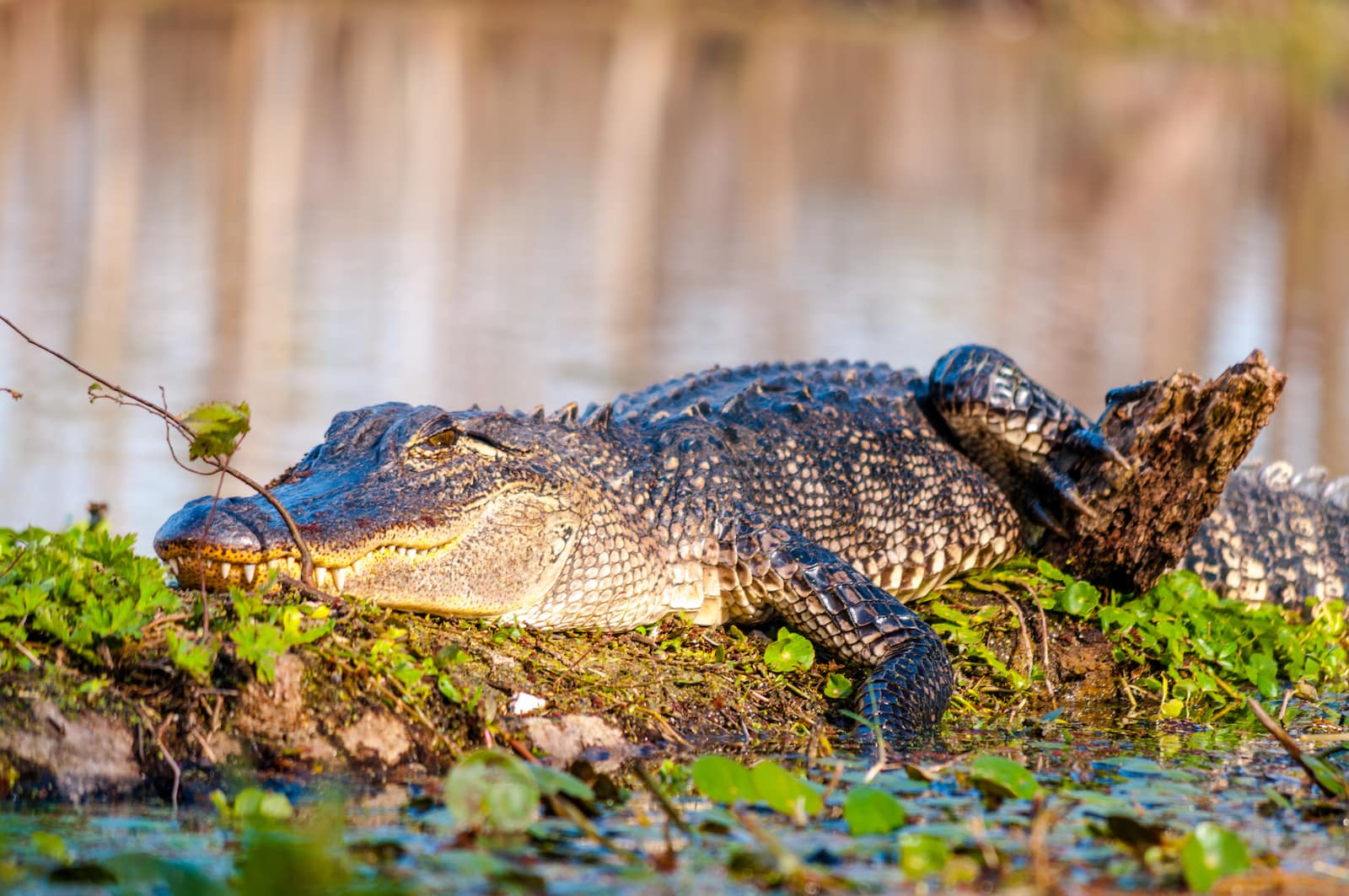
Alligator in a State Park
Fun Fact #3:
Alligators live in Texas, especially in the eastern swamps and wetlands.

San Antonio, Texas
Fun Fact #4:
The largest cities in Texas are Houston, San Antonio, Dallas, Austin, and Fort Worth.
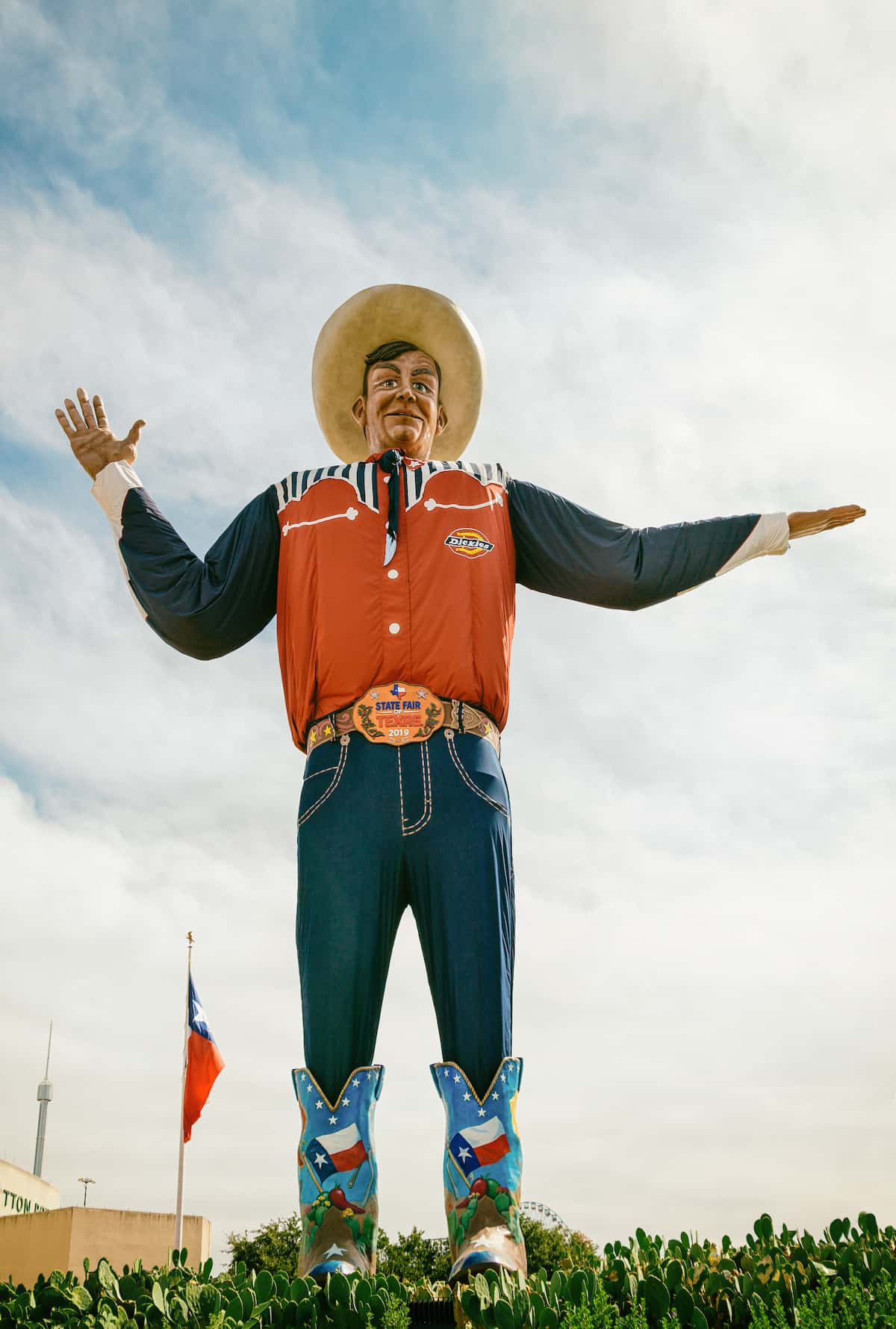
Big Tex Statue
Fun Fact #5:
At the State Fair of Texas in Dallas, there’s a giant cowboy statue named Big Tex. He’s 55 feet tall, and greets fairgoers with a hearty, “Howdy, folks!”
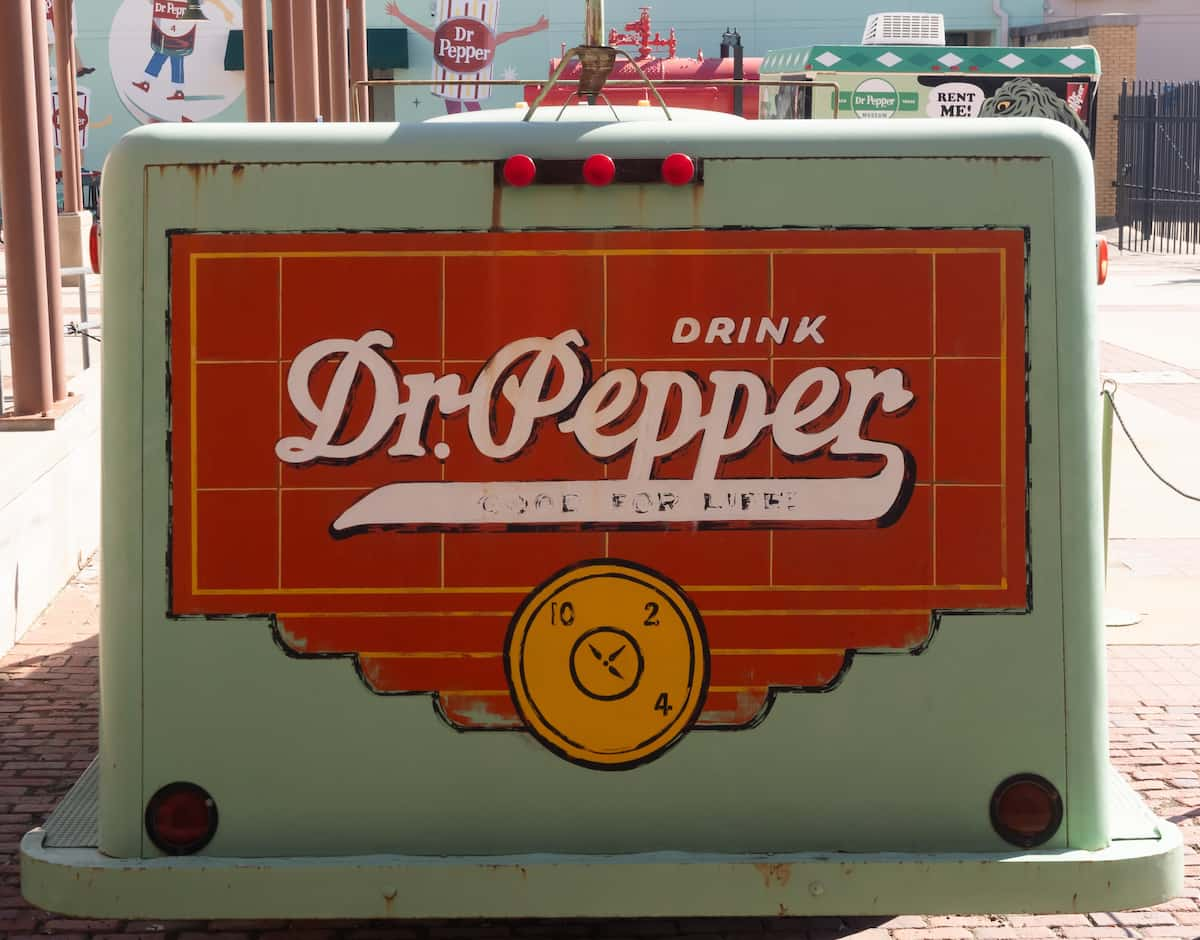
Dr Pepper Museum
Fun Fact #6:
Dr Pepper was invented at Morrison’s Old Corner Drug Store in Waco, Texas, in 1885. That makes it the oldest major soft drink brand in America.

Dragon Stadium in Southlake Texas
Fun Fact #7:
High school football is incredibly popular in Texas. Some schools have stadiums that can seat 20,000+ people.

Active oil rig in the Texas Panhandle
Fun Fact #8:
Texas’s major industries include oil and natural gas, livestock and agriculture, aerospace and aviation, and tourism.

Fun Fact #9:
The official state motto is “Friendship,” but unofficially, people are more likely to say, “Everything’s bigger in Texas!”
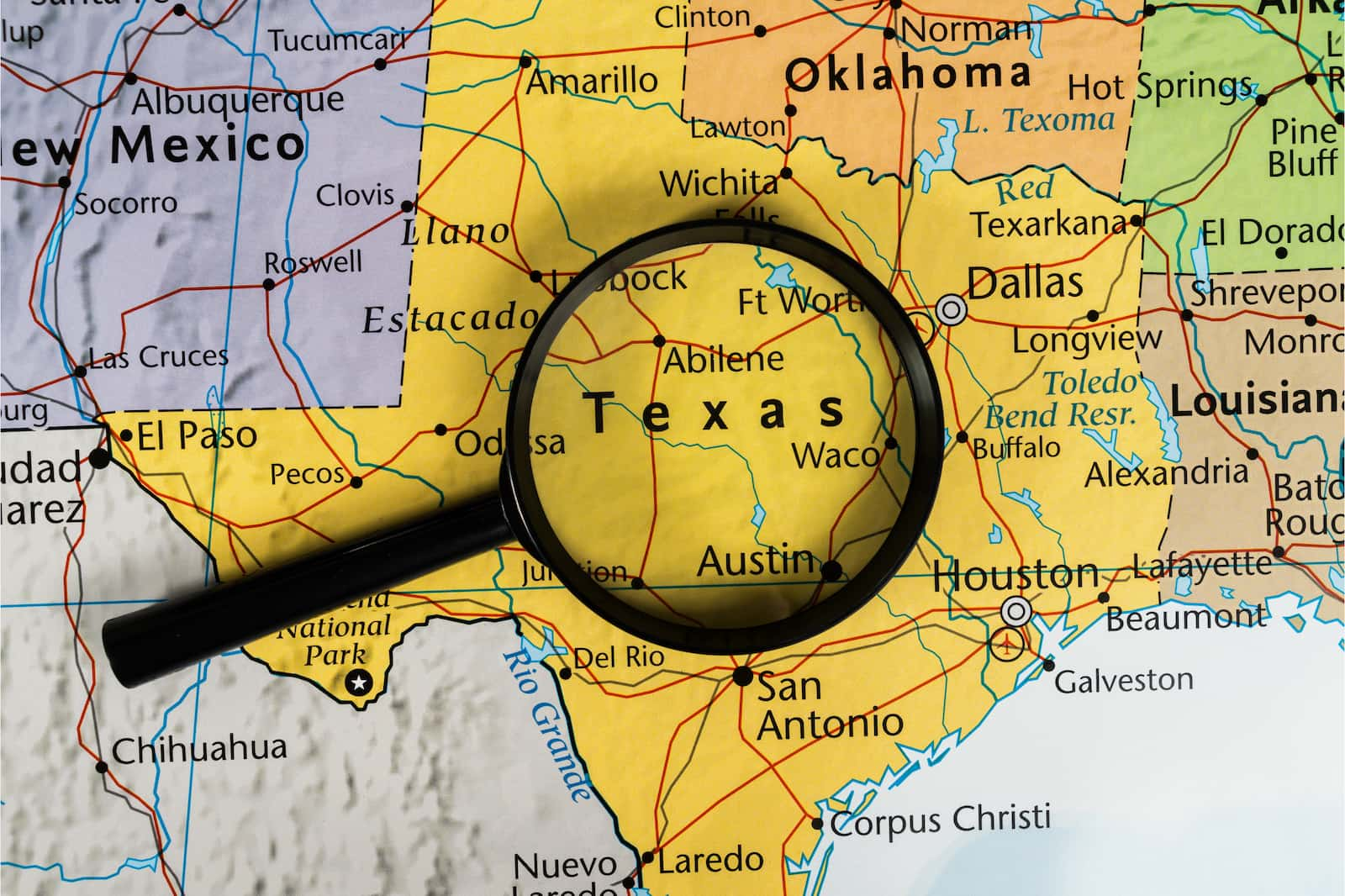
Fun Fact #10:
Native peoples used words like tejas, texias, and tayshas to describe other people living in the area; these words are believed to mean “friends.” Over time, the words became associated with the region, eventually leading to “Texas” as the name of the state.

TEXAS GEOGRAPHY FACTS
Regions:
Gulf Coastal Plains, the Interior Lowlands, the Great Plains, and the Basin and Range Province
Climate:
Humid subtropical in the east half of the state, semi-arid to arid in the west
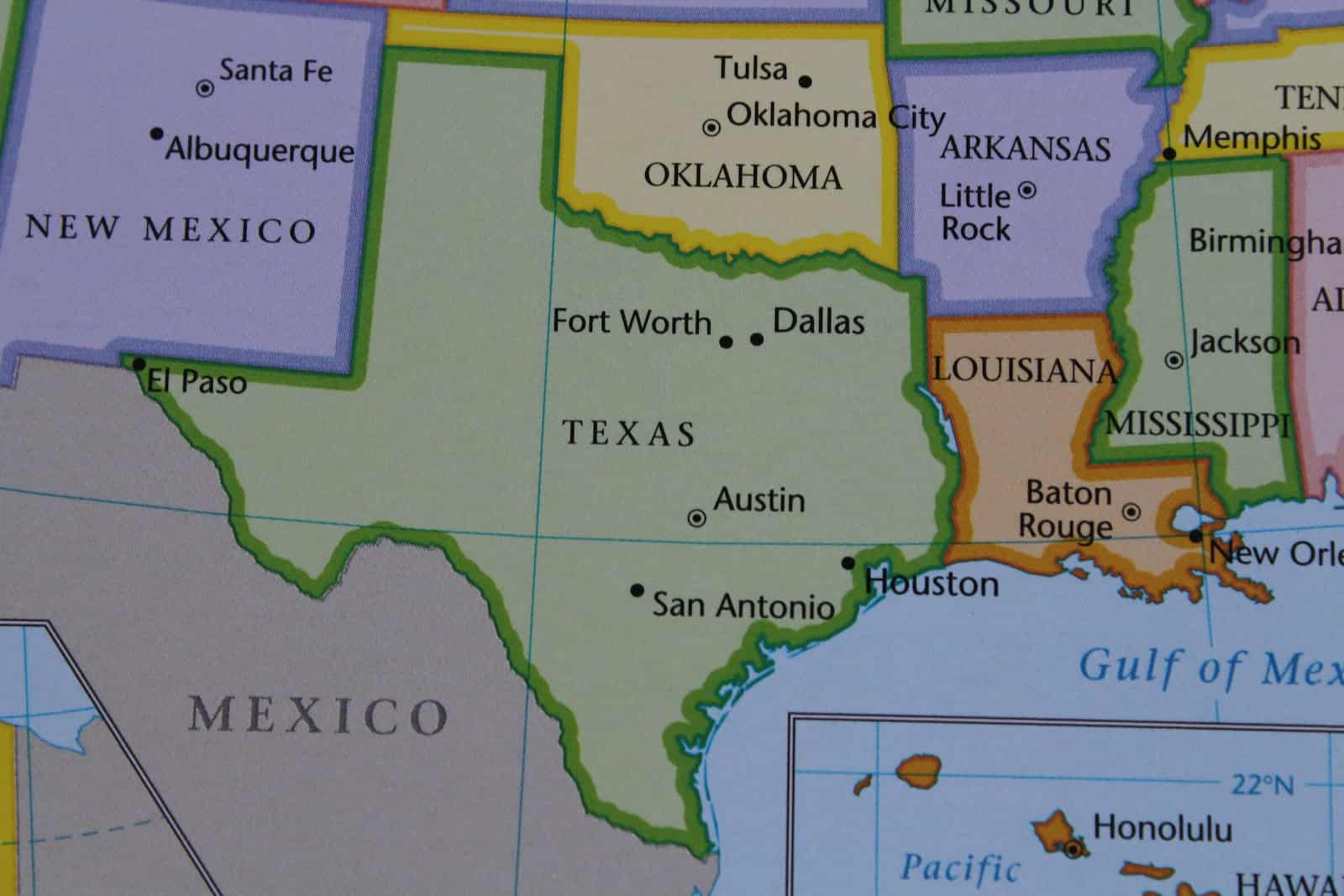
Location:
Bordered by New Mexico to the west, Oklahoma to the north, Arkansas to the northeast, Louisiana to the east, and Mexico to the southwest, with the Gulf of Mexico along its southeastern coast

The Alamo in San Antonio
Landmarks:
Alamo, San Antonio River Walk, Texas State Capitol, NASA’s Johnson Space Center, Padre Island National Seashore, Fort Worth Stockyards, Natural Bridge Caverns
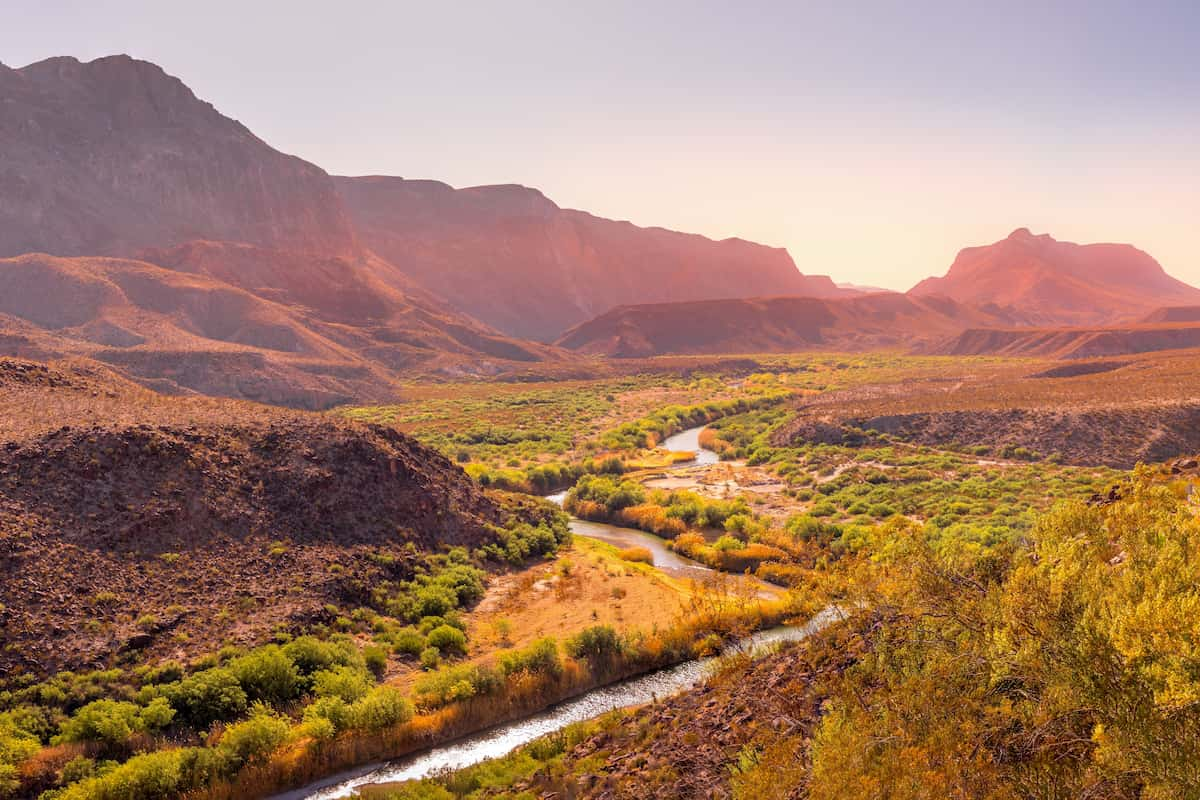
Big Bend National Park
National Parks:
Big Bend National Park, Guadalupe Mountains National Park
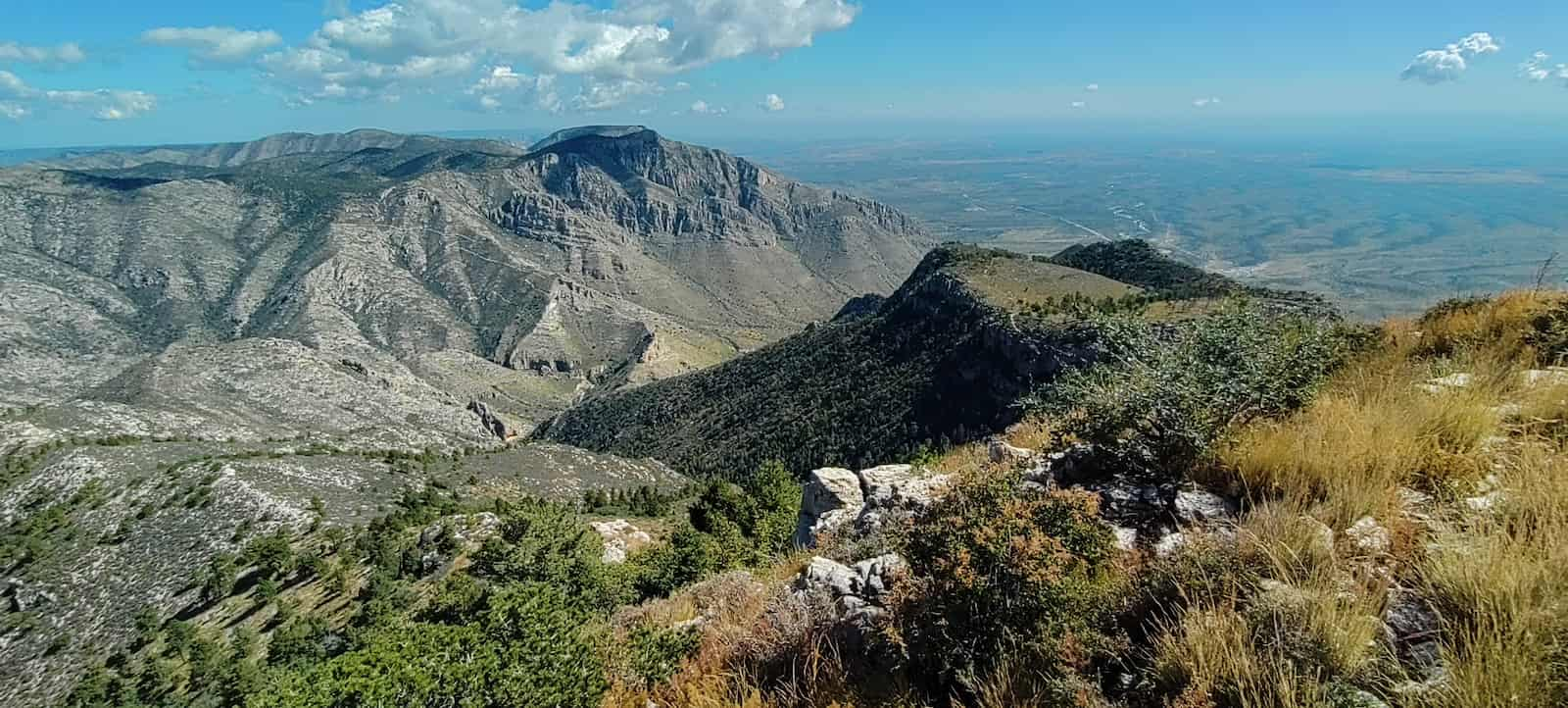
Scenic View of Guadalupe Mountains
Mountain Ranges:
Guadalupe Mountains, Davis Mountains, Chisos Mountains, Franklin Mountains

South Padre Island
Ocean Front:
Southeast Texas stretches for nearly 370 miles along the Gulf of Mexico, from the Louisiana border south to Mexico.
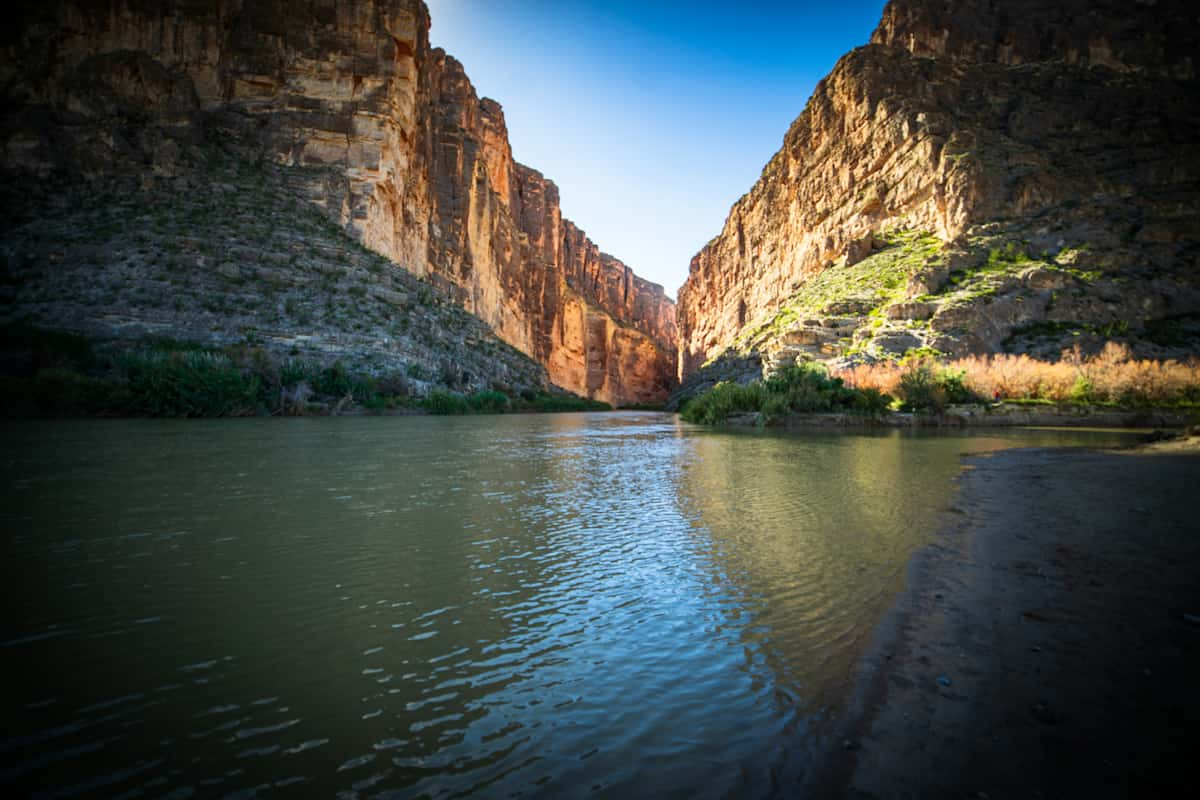
The Rio Grande at Santa Elena Canyon
Rio Grande:
This river forms the border between the U.S. and Mexico along the southern edge of Texas. It’s the only major river system in the Chihuahuan Desert, and the longest in Texas.
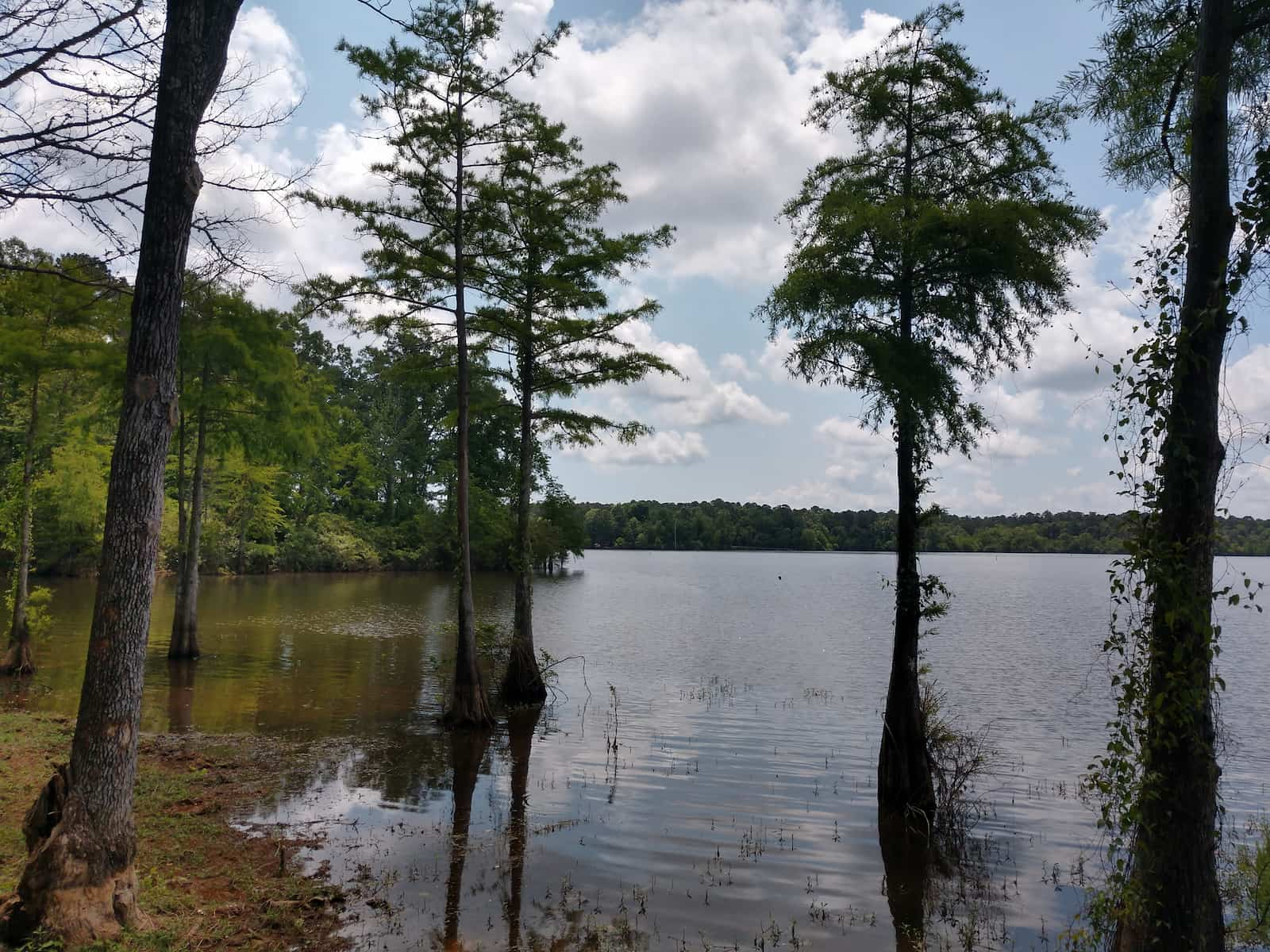
Toledo Bend Lake Swamp
Lakes:
The four largest lakes in Texas are Toledo Bend, Amistad, Sam Rayburn, and Texoma. These vast reservoirs support water supply, recreation, and flood control across the state. Some, like Toledo Bend and Texoma, span state borders.

Chihuahuan Desert
Chihuahuan Desert:
This is one of the largest deserts in the U.S., and one of only four found in the whole country. It covers 200,000 square miles of Texas and New Mexico.
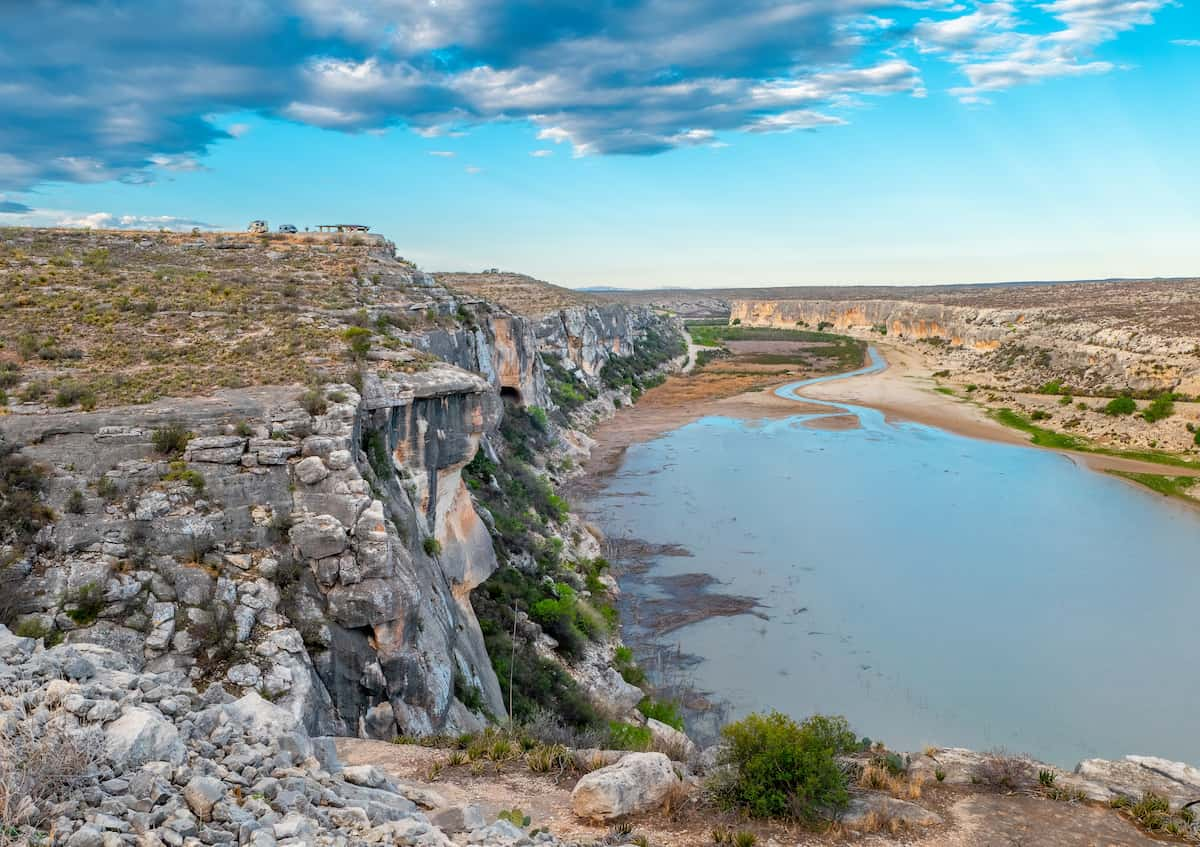
Pecos River
More River Systems:
Brazos River, Pecos River, Colorado River, Red River, Canadian River
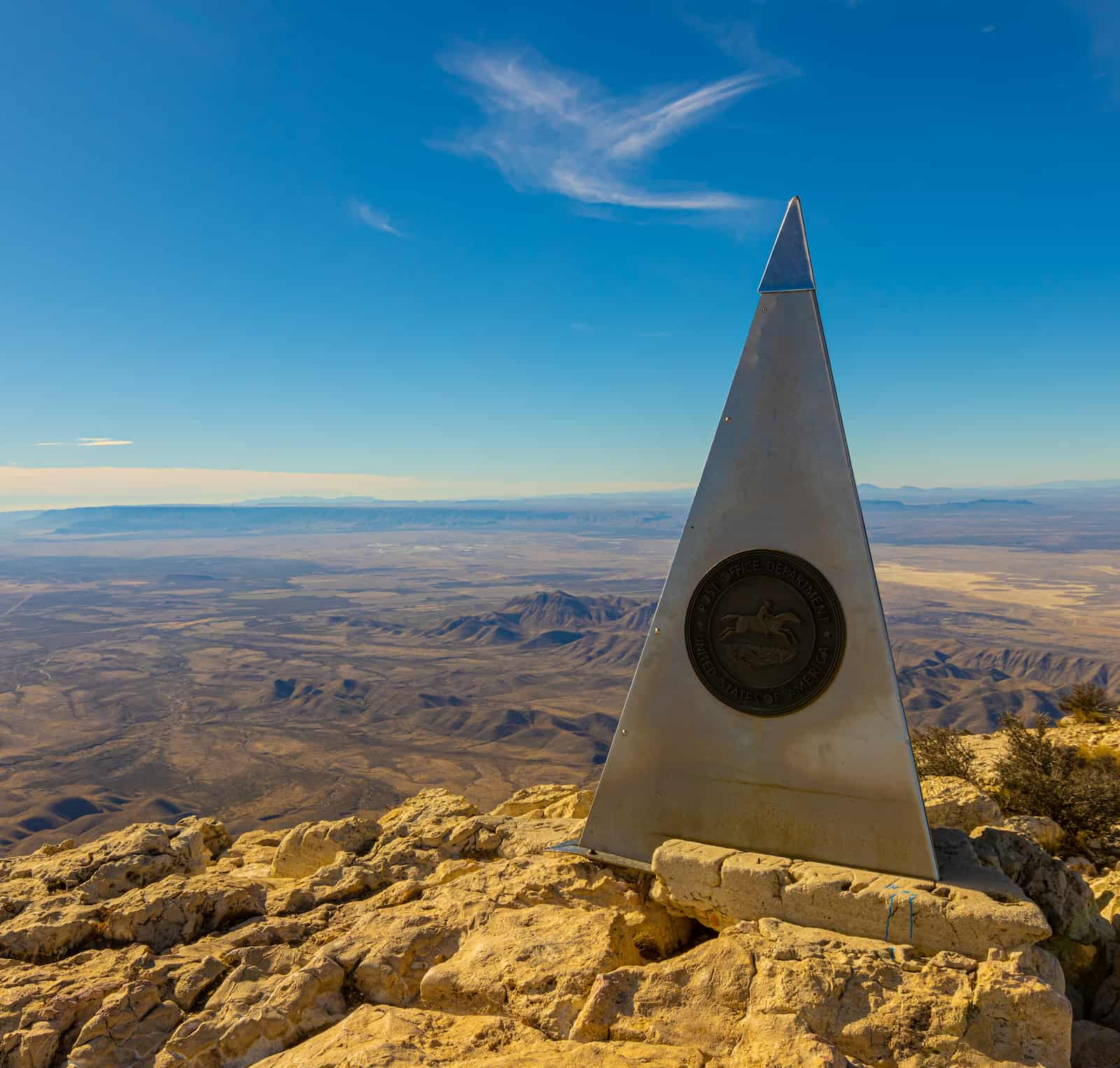
Guadalupe Peak
Highest Point:
Guadalupe Peak, 8,751 feet

TEXAS WILDLIFE & NATURE FACTS
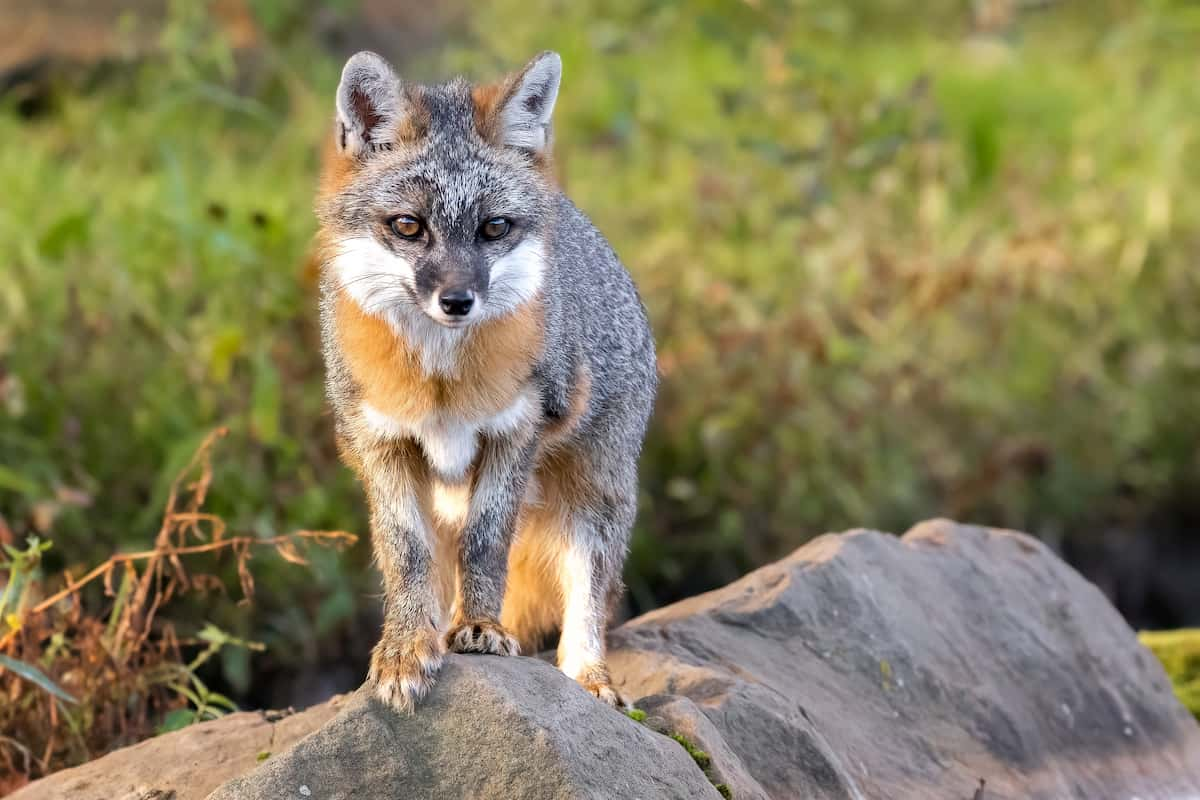
Gray Fox
Common Mammals:
White-tailed deer, nine-banded armadillo, raccoon, coyote, gray fox, Mexican free-tailed bat, eastern cottontail rabbit, bobcat
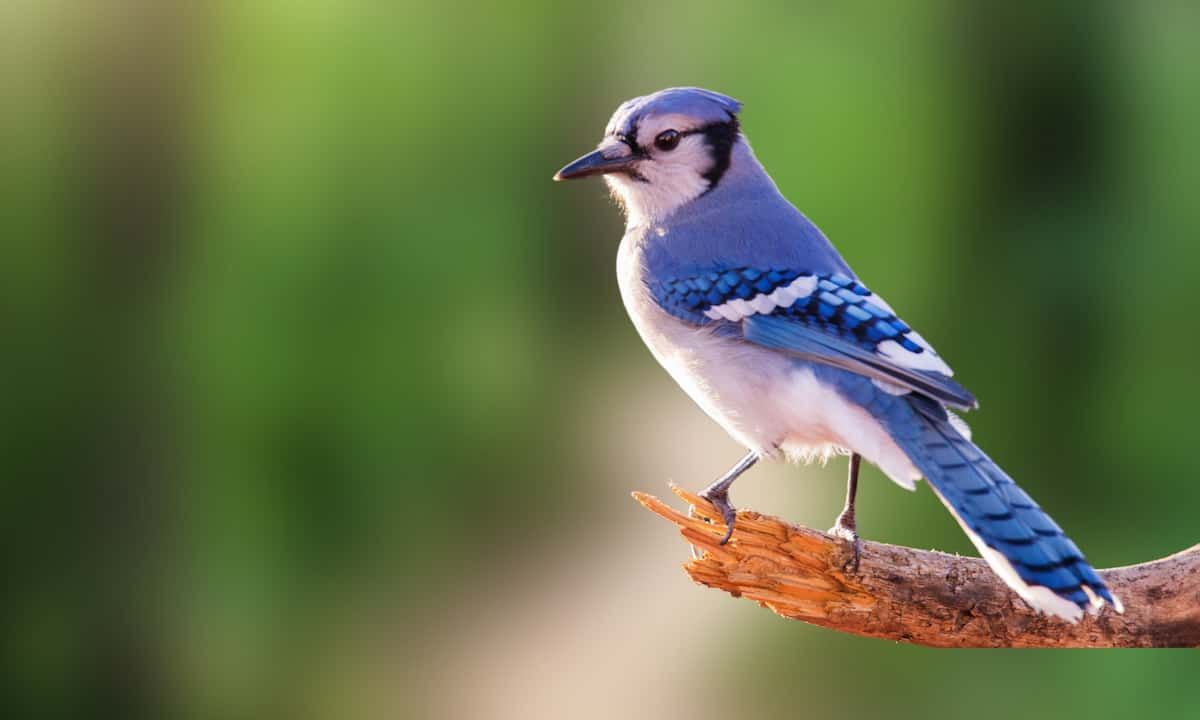
Blue Jay
Common Birds:
Northern mockingbird, mourning dove, northern cardinal, blue jay, great-tailed grackle, red-tailed hawk, scissor-tailed flycatcher, barn swallow, American robin, black vulture
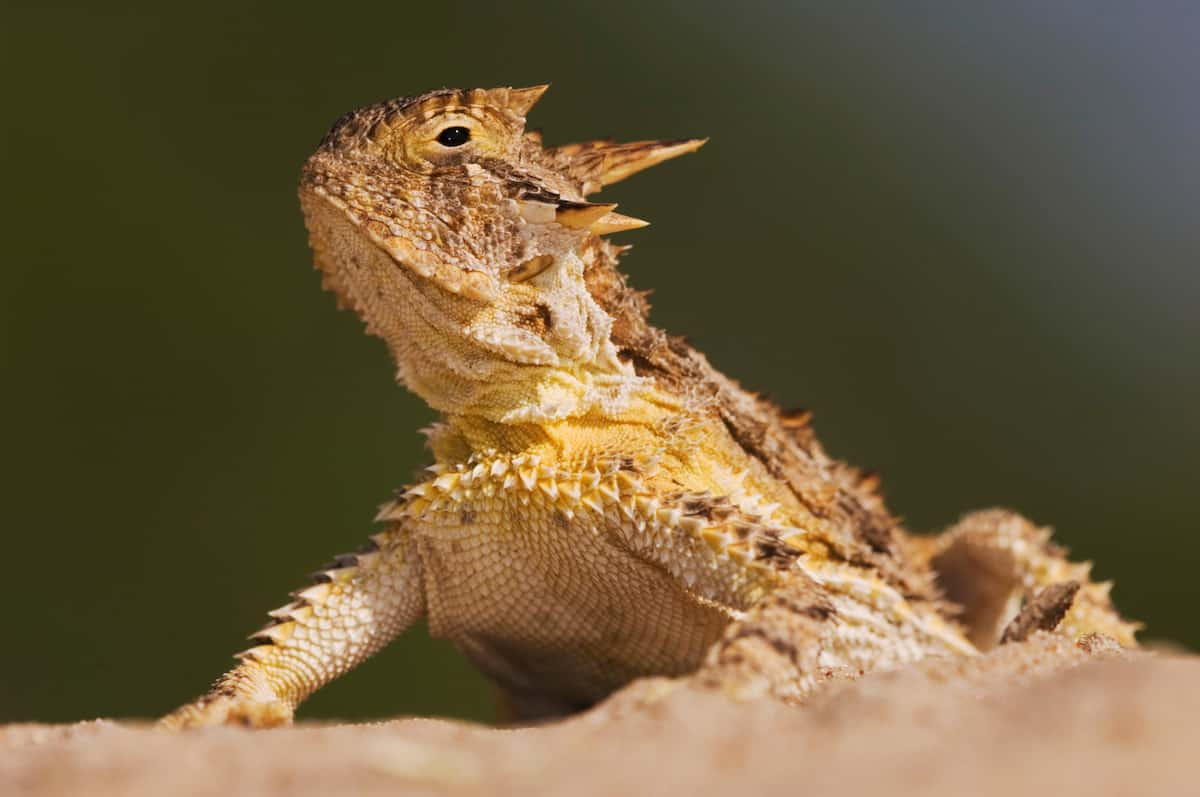
Texas Horned Lizard
Common Reptiles and Amphibians:
Texas horned lizard, green anole, Texas spiny lizard, western diamondback rattlesnake, american bullfrog, Gulf Coast toad
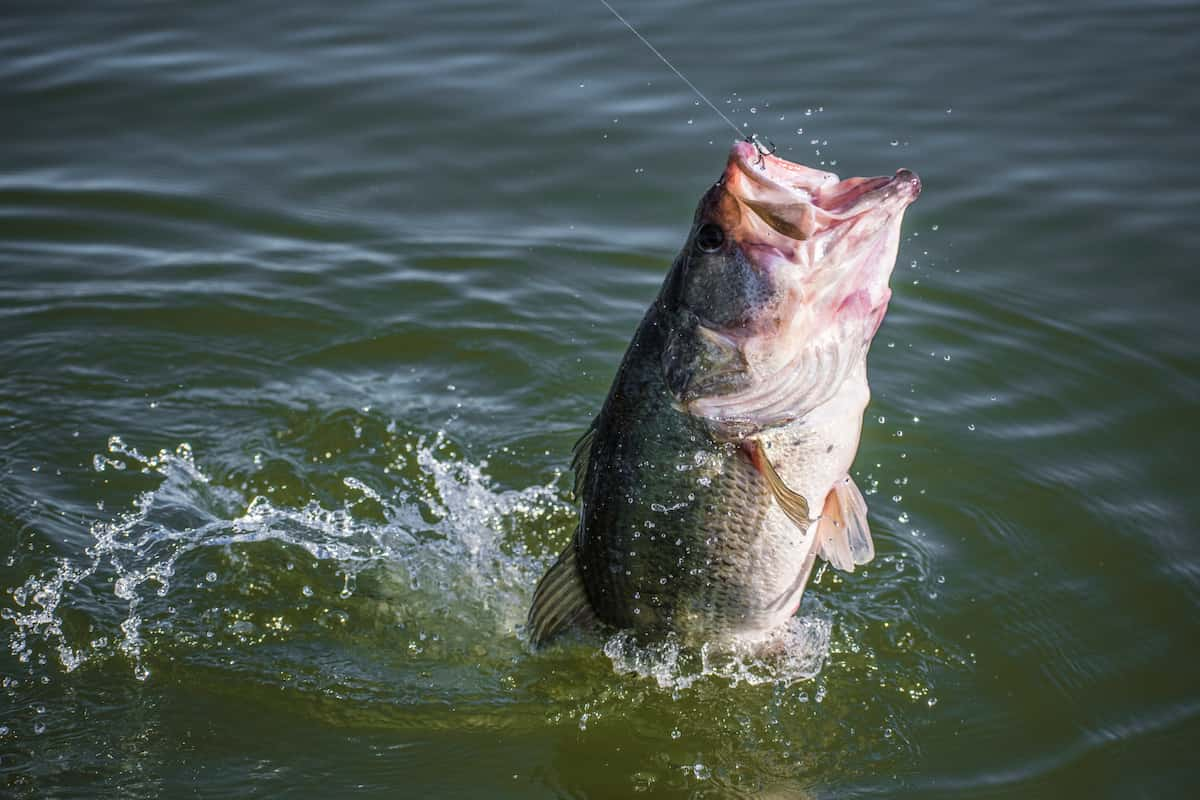
Largemouth Bass
Common Fish:
Largemouth bass, channel catfish, bluegill, white bass, crappie, red drum, spotted seatrout
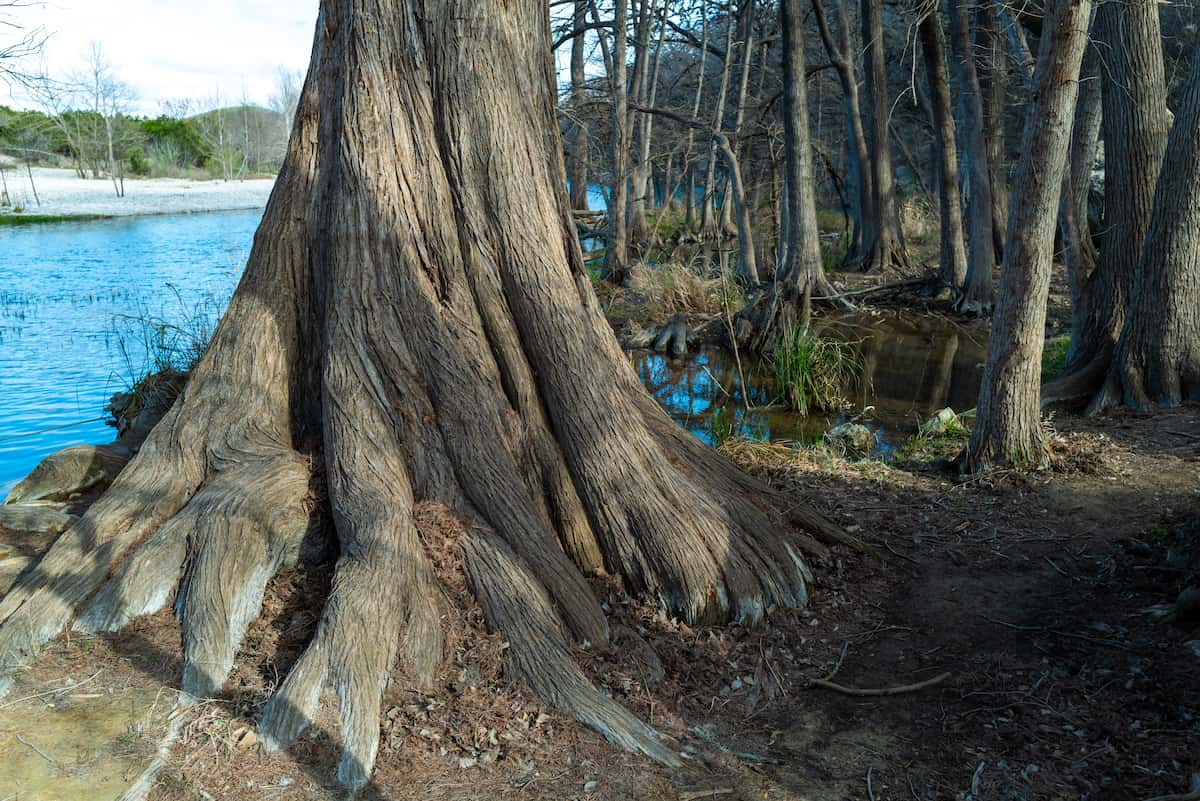
Bald Cypress
Common Trees:
Live oak, pecan tree, mesquite, bald cypress, eastern red cedar, ash juniper, Texas red oak
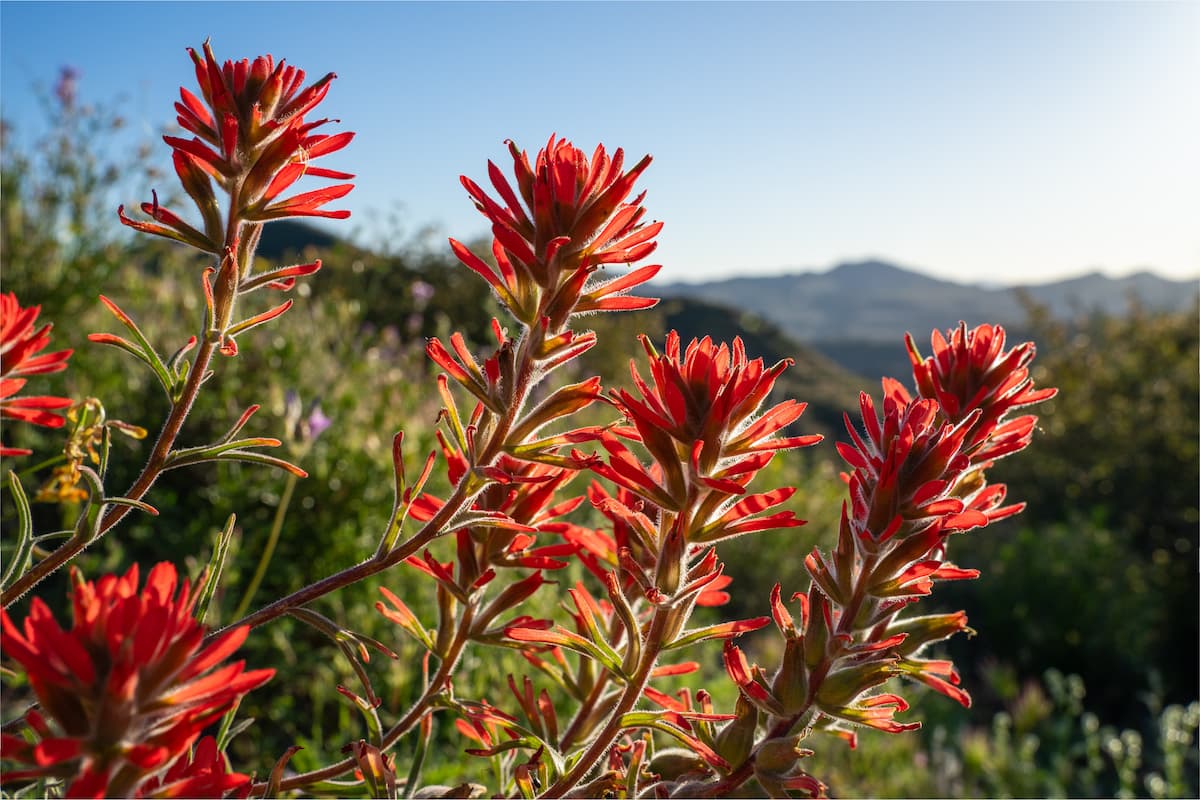
Indian Paintbrush
Common Plants and Flowers:
Bluebonnet, Indian paintbrush, Texas sage, prickly pear cactus, black-eyed Susan, yucca, little bluestem
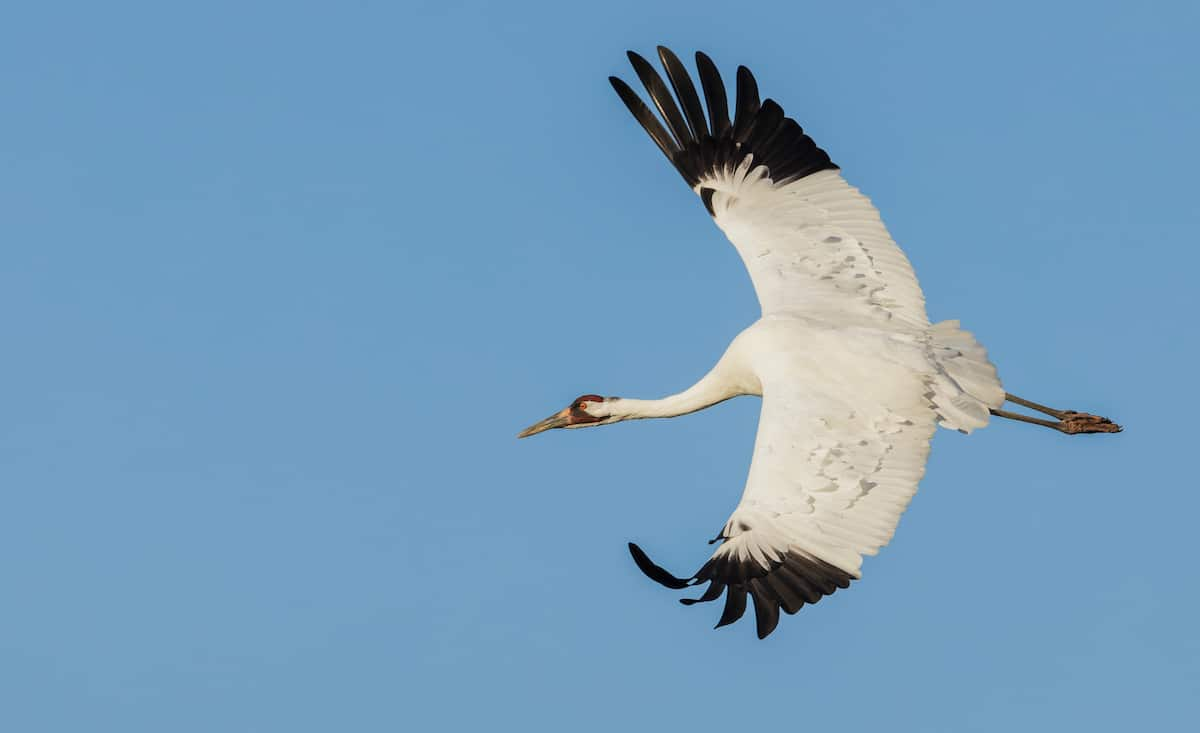
Whooping Crane
Selected Endangered Species:
Ocelot, whooping crane, Houston toad, Attwater’s prairie chicken, golden-cheeked warbler, jaguarundi, black-footed ferret
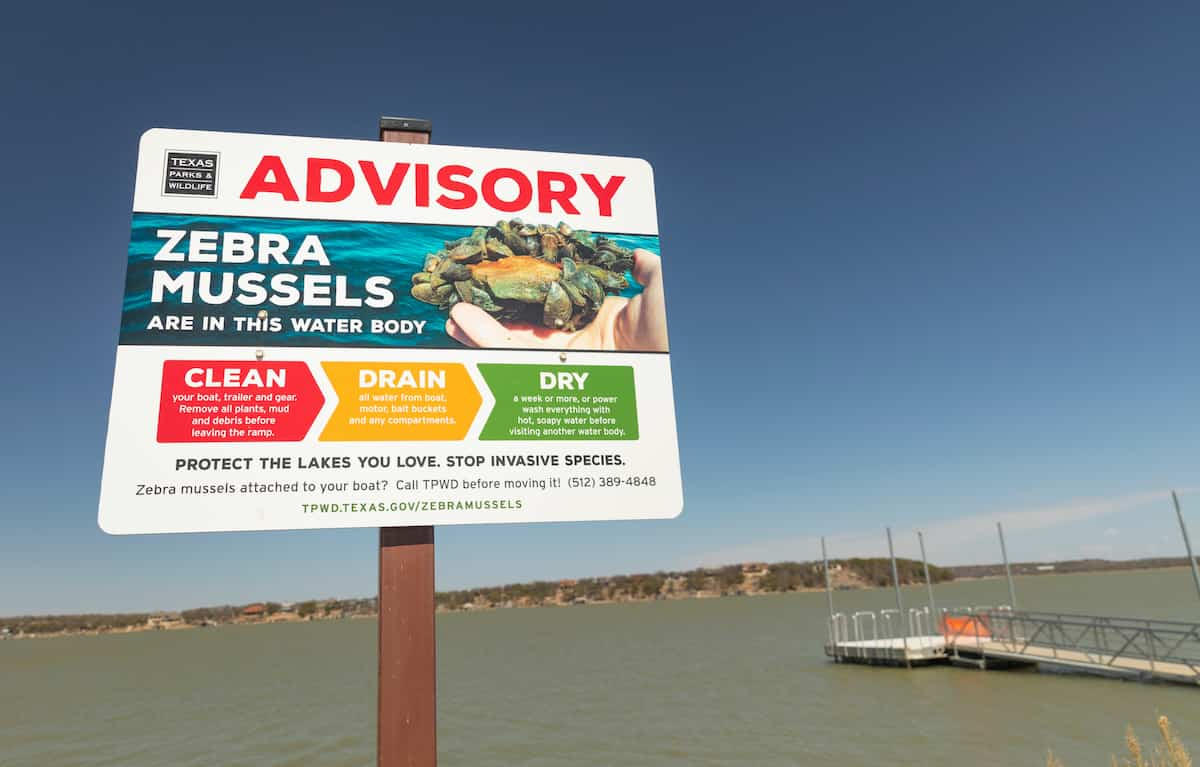
Lake Brownwood State Park
Selected Invasive Animal Species:
Zebra mussel, quagga mussel, emerald ash borer, giant African snail, feral hogs, fire ants, European starlings, nutria, hammerhead flatworms
?
DID YOU KNOW?

Ocelot
Ocelots, an endangered species of Texas, are around twice the size of the average house cat. They’re nocturnal, hunting at night for small prey that they swallow without even chewing!
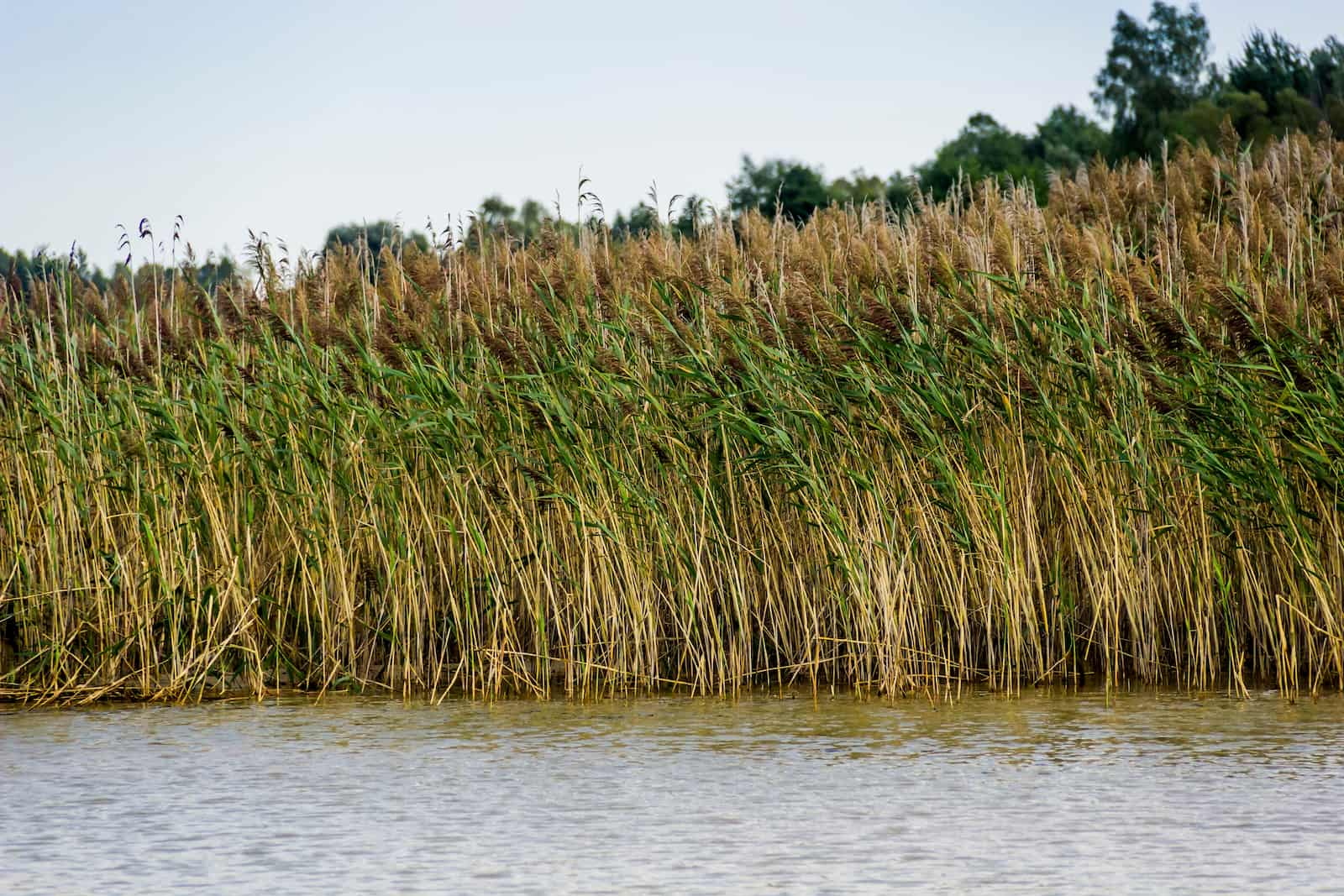
Giant Reed
Texas’ common invasive plant species include the tree of heaven, giant reed, hydrilla, common water hyacinth, bamboo, kudzu, chinaberry, salt cedar, and Chinese tallow tree. These fast-growing plants can disrupt local ecosystems and outcompete native species.

TEXAS HISTORY FACTS
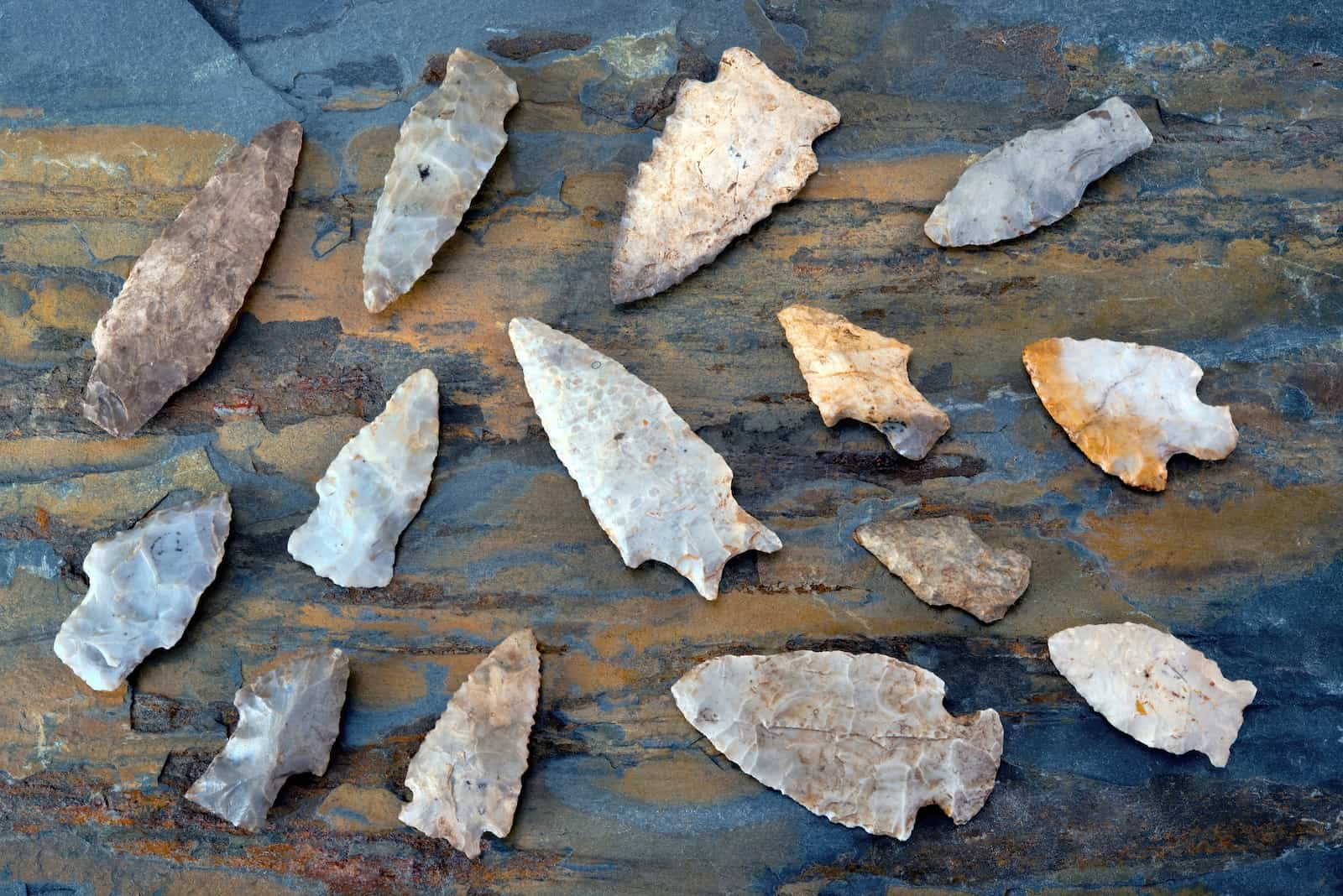
Arrowheads found in East Texas
First Inhabitants:
People first came to Texas more than 13,000 years ago. However, recent archaeological discoveries from the Debra L. Friedkin site suggests it may have been even earlier. These early inhabitants used stone tools to hunt animals like mammoths and giant sloths and pre-dated the Clovis culture, the first known inhabitants of Texas.
?
DID YOU KNOW?
The Comanche moved into Texas from the Rocky Mountains in the 1700s after being pushed out of their original lands. Their skill with horses (brought by the Spanish) enabled them to control a huge territory for nearly 150 years, until the U.S. took their lands and forced them onto reservations in the 1860s and early 1870s.
Native Americans:
Texas has been home to many Native American tribes. The Caddo in East Texas were farmers who lived in villages and built large, round houses. The Comanche and Apache were strong horse riders who hunted buffalo on the plains. Along the coast, the Karankawa fished and traveled in canoes, while the Tonkawa hunted deer and gathered plants.
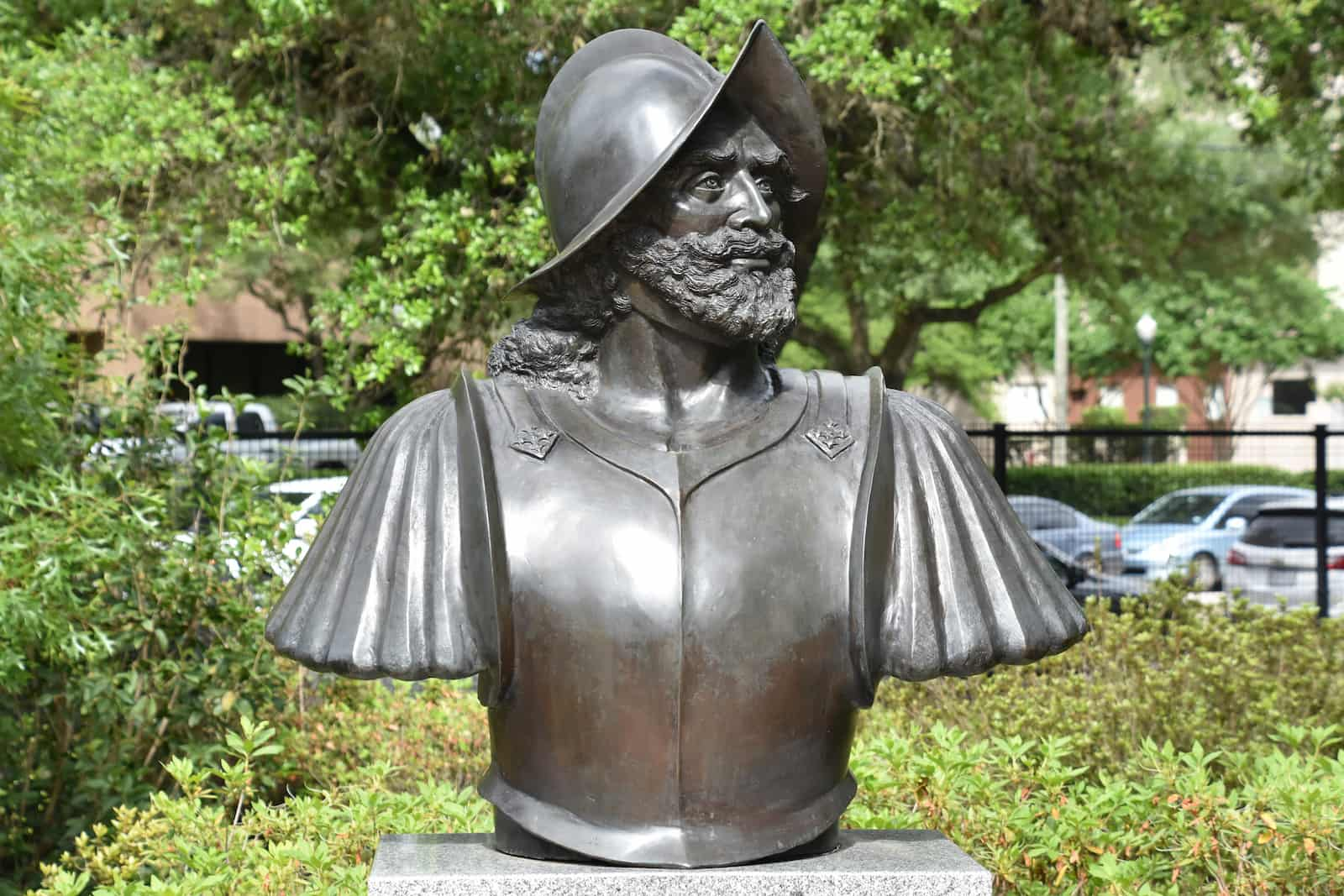
Alvar Nunez Cabeza De Vaca at Hawkins Sculpture
First European Visitor:
The first known European to set foot in what is now Texas was Spanish explorer Álvar Núñez Cabeza de Vaca. He arrived in 1528 after surviving a shipwreck off the coast and lived among the indigenous peoples for 8 years as he made his way throughout what would become Texas and down to Mexico City.
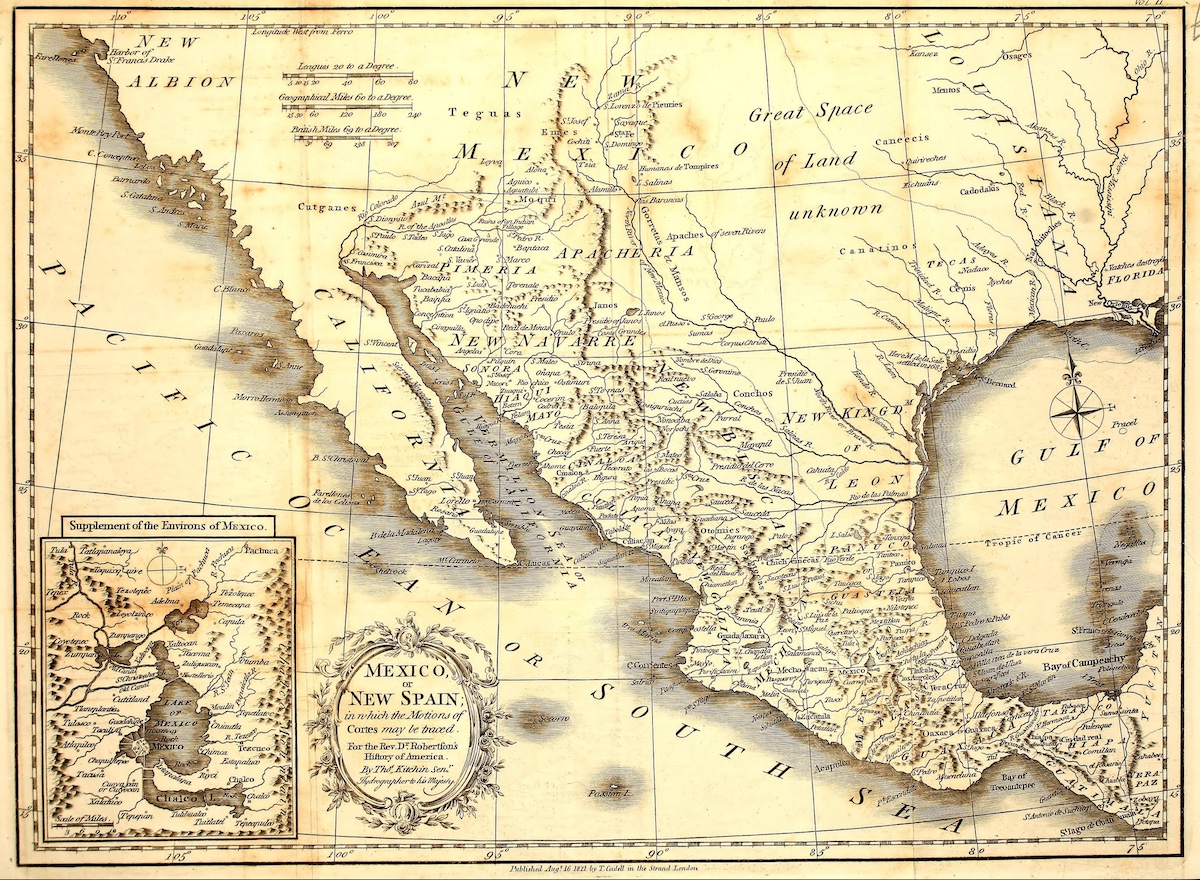
Early map of the area
New Spain:
Texas was part of New Spain, a huge Spanish colony in the Americas started in 1521. It included Mexico, the American Southwest, Florida, Central America, and parts of the Caribbean.
Mission System:
To control their land claims in New Spain and spread Christianity, the Spanish set up Catholic missions starting in the late 1600s. Missions were like religious community centers, where Native Americans were taught the Catholic faith as well as other European customs like farming.
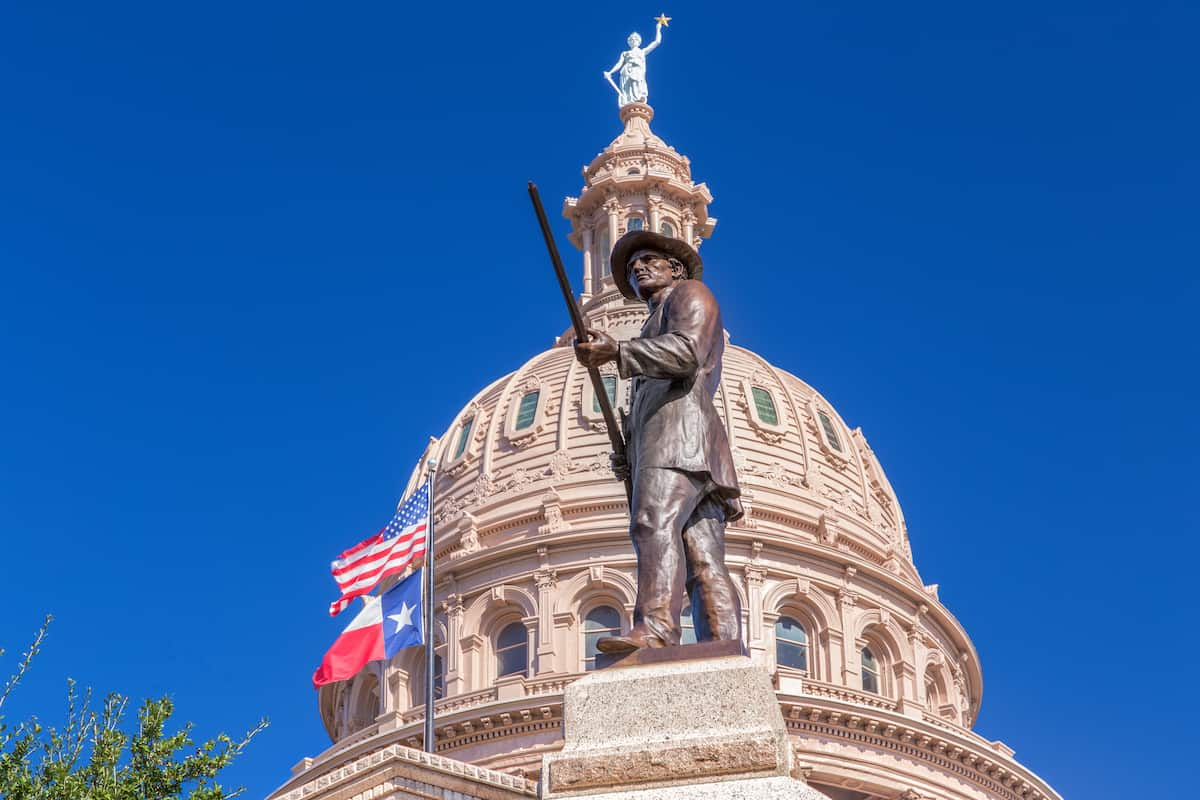
Heroes of the Alamo
Mexican Independence:
In 1821, after an 11-year war, Mexico won its independence from Spain. At the time, the land that would become Texas was still part of Mexico, along with the rest of what had been New Spain.

Texas State Capitol
Father of Texas:
In 1825, American Stephen F. Austin led a group of 300 families into Texas to begin a new settlement. These families became known as the “Old Three Hundred,” and Austin earned the nickname “Father of Texas.” Today, the state capital is named for him.

San Jacinto Battleground State Historic Site
Texas Revolution:
The new colonists often disagreed with the government of Mexico, wanting more control over the land and the people living there (including the ability to allow slavery, which had been abolished by Mexico in 1829). The Texas Revolution was fought in 1835-36, ending at the Battle of San Jacinto, when Sam Houston forced General Santa Anna to sign a treaty giving Texas its independence.
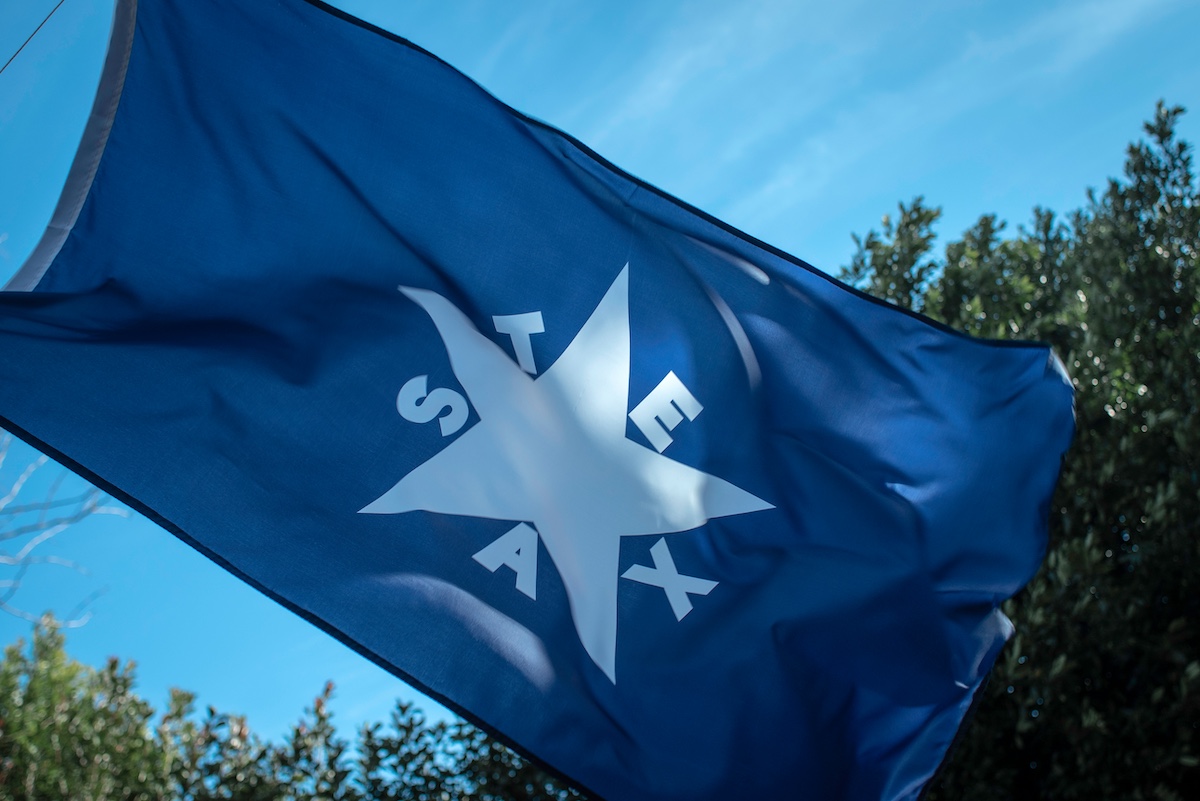
Replica of an 1836 Republic of Texas Flag
Republic of Texas:
From 1836 to 1845, Texas was an independent country with its own government, president, laws, and flag. The new government was closely modeled on the one established in the United States a few decades earlier.
?
DID YOU KNOW?
In 1836, a small group of Texan defenders, including James Bowie and Davy Crockett, fought bravely against a much larger Mexican army led by General Santa Anna at the Alamo, an old Spanish mission. Although the Texans lost, their story encouraged many people to support the Texans, with the cry “Remember the Alamo!”
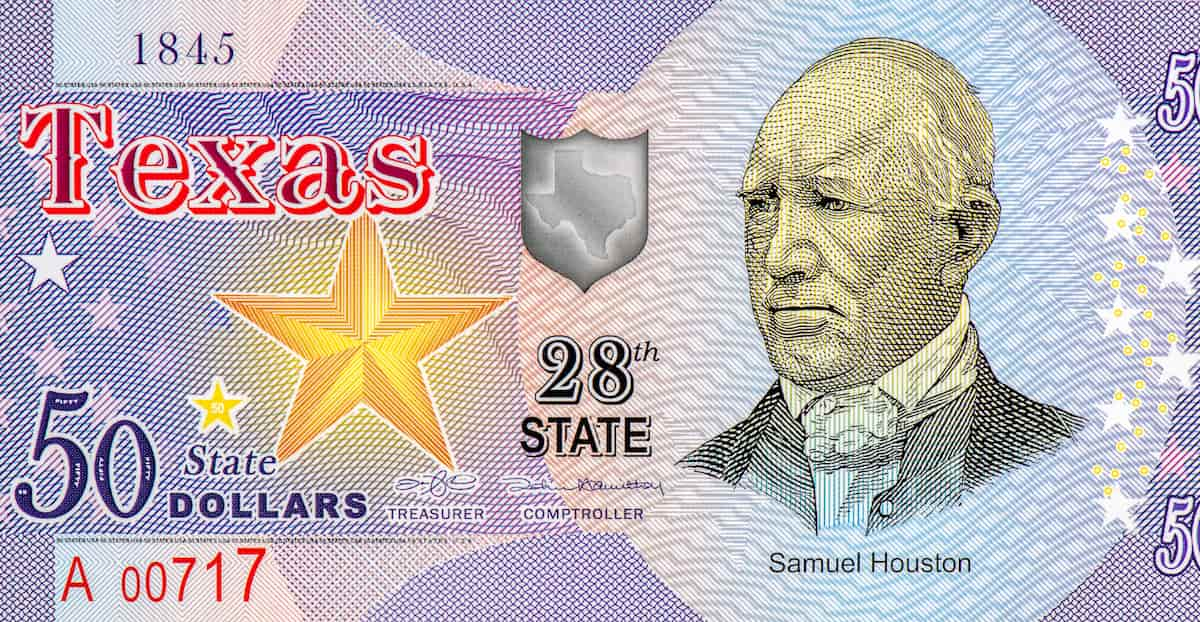
Samuel Houston on fictional $50 bill
U.S. Statehood:
The U.S. government had been trying to purchase Texas from Mexico since 1826, and many Americans came to Texas in the years following the Mexican War of Independence. Finally, on December 29, 1845, Texas was admitted to the U.S. as the 28th state.
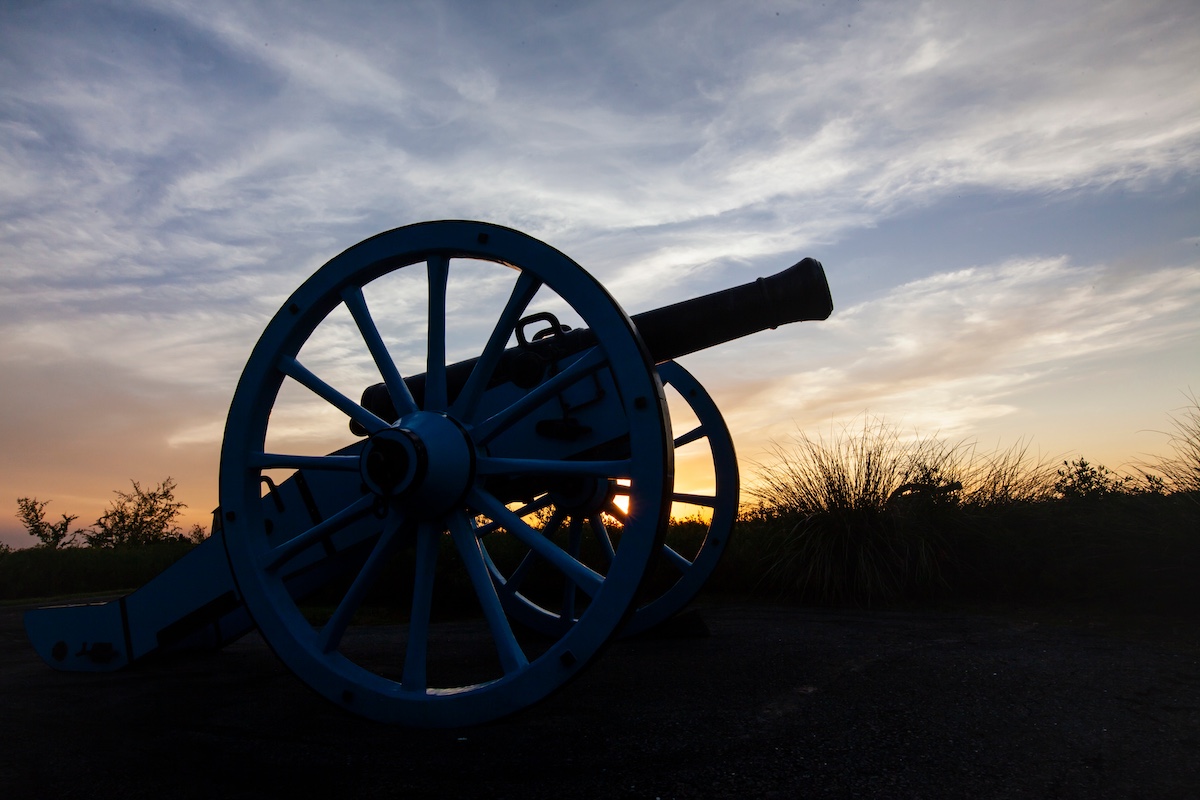
Canon, Palto Alto Battlefield, Texas
Mexican-American War:
Texas disagreed with Mexico over its southern boundary, and the U.S. went to war with Mexico to defend its new state. In the end, Mexico lost much more than a strip of land in Texas: The Treaty of Guadalupe Hidalgo ceded present-day California, Arizona, New Mexico, Texas, and more to the United States.

Civil War Museum in Fort Worth Texas
Civil War:
During the Civil War, Texas joined the Confederacy and fought alongside the southern states. Texans helped supply the Confederate army and fought in battles, including the Battle of Galveston in 1863.
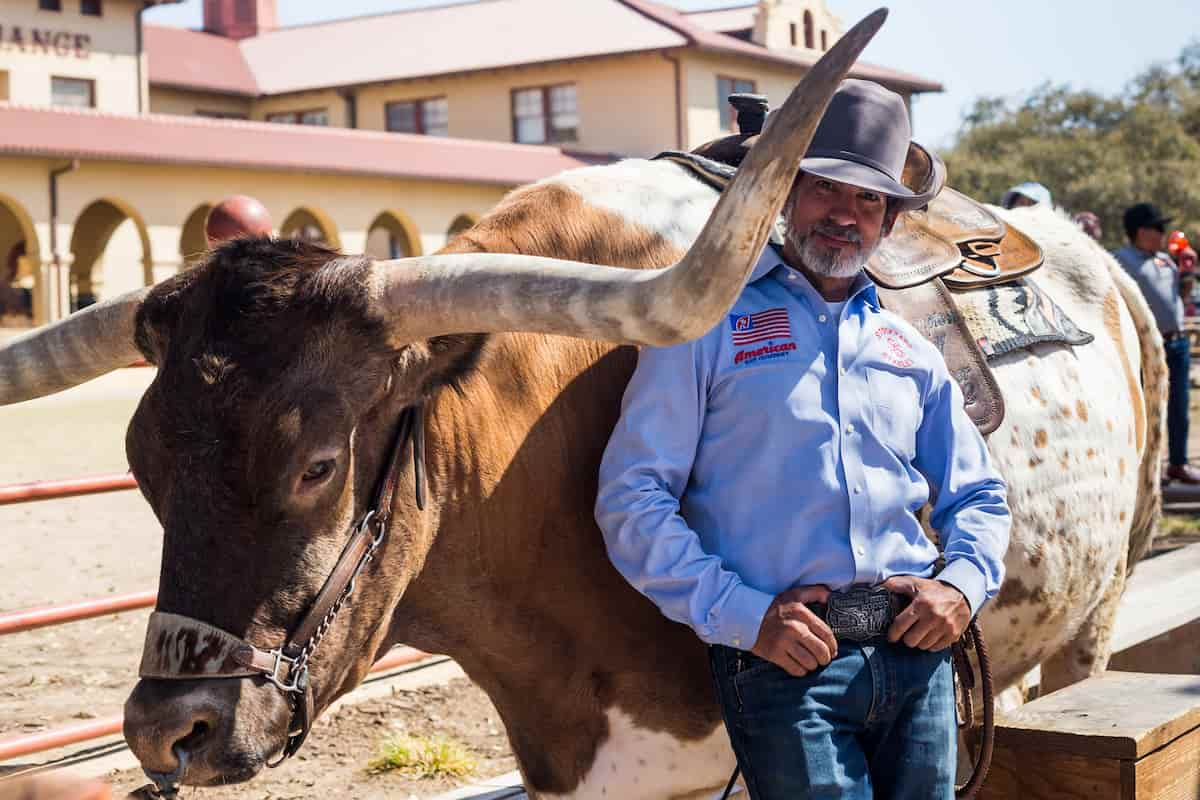
Texan cowboy with a Long Horn Bull
Longhorns and Cowboys:
The Spanish first brought cattle to Texas. Americans brought another breed when they arrived later, and the two breeds mixed to become today’s famous Texas Longhorns. The cowboy culture in Texas grew up around the massive cattle ranches that have long been a big part of the state.

Debris of the 1900 Galveston Hurricane
Galveston Hurricane:
In 1900, an incredibly powerful hurricane struck Galveston. With no modern warning system in place, the city was completely destroyed and thousands of people died. It’s still the deadliest natural disaster in American history.

1901 Texas oil gush
Spindletop:
Texas’s history and economy changed forever when drillers struck oil at Spindletop, near Beaumont, in 1901. A geyser shot oil 100 feet into the air!
?
DID YOU KNOW?
Over 153,000,000 barrels of oil had been produced from the Spindletop fields by 1985. Today, Texas produces more oil than any other state by far—more than two billion barrels of oil in 2024.

More Activities…
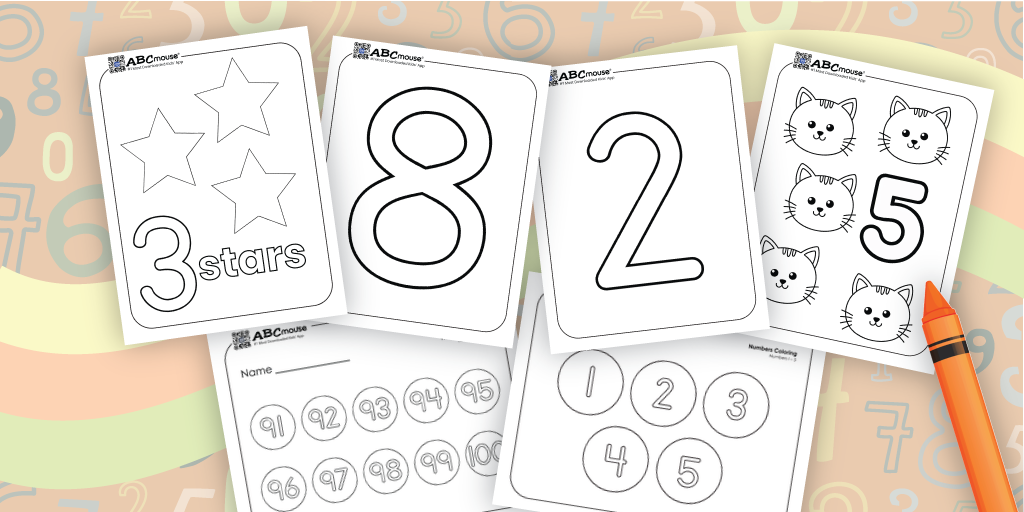
Number Coloring Pages for Kids (Free Printables)
Let’s make numbers fun! Our free printable number coloring pages help kids explore counting from 0 to 100 in a creative, hands-on way—plus, we’ve included fun number groups and themed sets to make learning math even more engaging for young learners.
You can print the full number sets or choose individual number pages to match your child’s learning pace. Whether you’re at home, in the classroom, or need a screen-free activity on the go, these free printable coloring pages are a fantastic way to build early number recognition and counting skills.
Numbers 0-10 Simple Coloring Sheets
Numbers 1-10 Objects and Counting Coloring Pages
Find more number coloring pages below!
Number Groups by Fives Coloring Pages
Find more number coloring pages below!
Number Groups by Tens Coloring Pages
Nifty Number Learning Activities
Recommended for: Kids of all ages
⭐ Sticker Match
Use small stickers (or draw dots with markers) to match the number on each coloring page. For example, if your child colored the number 6, have them place 6 stickers on the page or add 6 colorful circles to the page with crayons or markers.
⭐ Count & Clip
After your child colors a number page, help them practice counting and fine motor skills by clipping clothespins or paper clips to the page—one for each number. For example, if they colored the number 4, they’ll clip 4 clothespins to the edge of the paper. This simple activity helps to reinforce quantity and number recognition.
⭐ Number Scavenger Hunt
Turn learning into a hands-on game! After coloring a number page, challenge your child to find that number of objects around the house or outside. For example, if they colored the number 7, they can collect 7 leaves, 7 blocks, 7 grapes, or 7 buttons. Place the items next to the colored page for a fun counting and matching activity.
Additional Number Learning Resources
Want even more number fun? Check out these helpful resources for teaching and reinforcing early math skills:
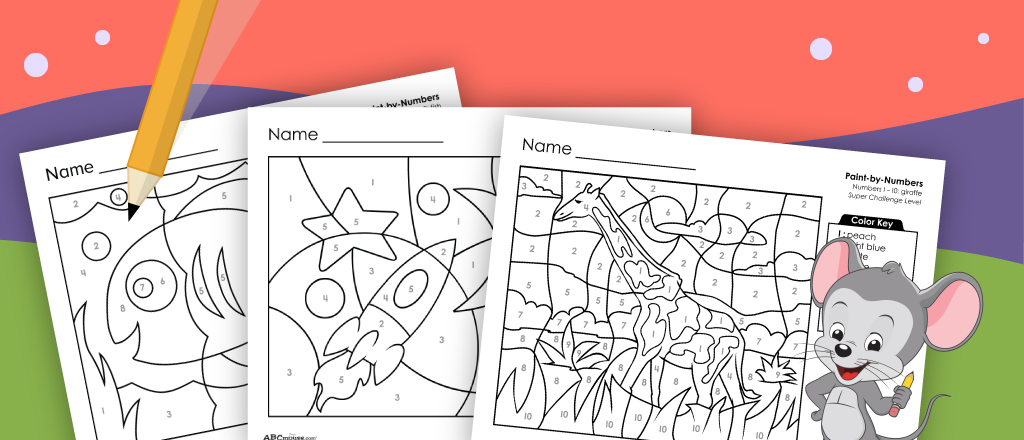
Color by Number Worksheets
A fun and relaxing way for kids to practice number recognition while expressing their creativity.
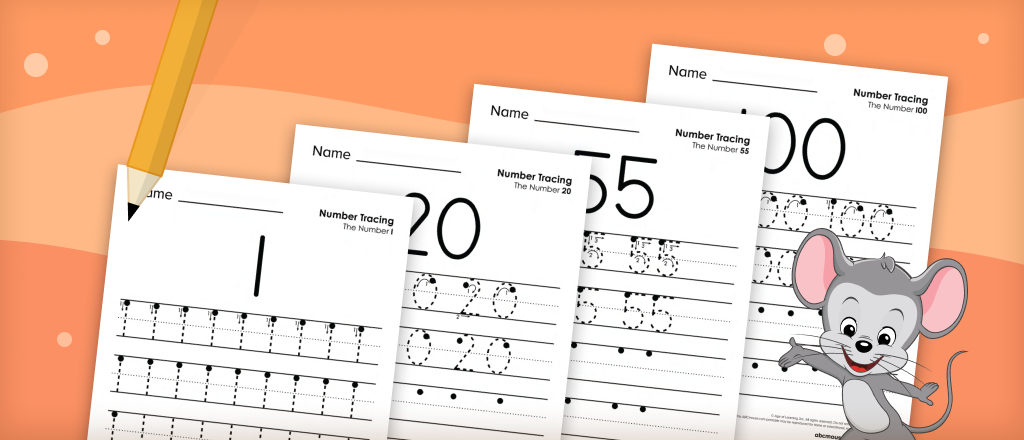
Number Tracing Worksheets
Great for building fine motor skills and helping kids learn to write numbers with confidence.
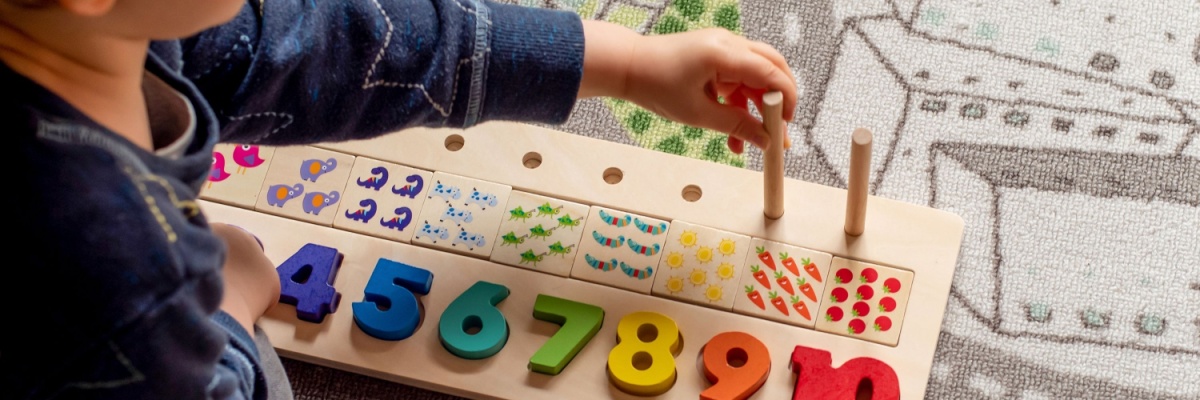
How to Teach Number Recognition to Preschoolers
Packed with simple strategies and playful ideas to help little ones identify and understand numbers.
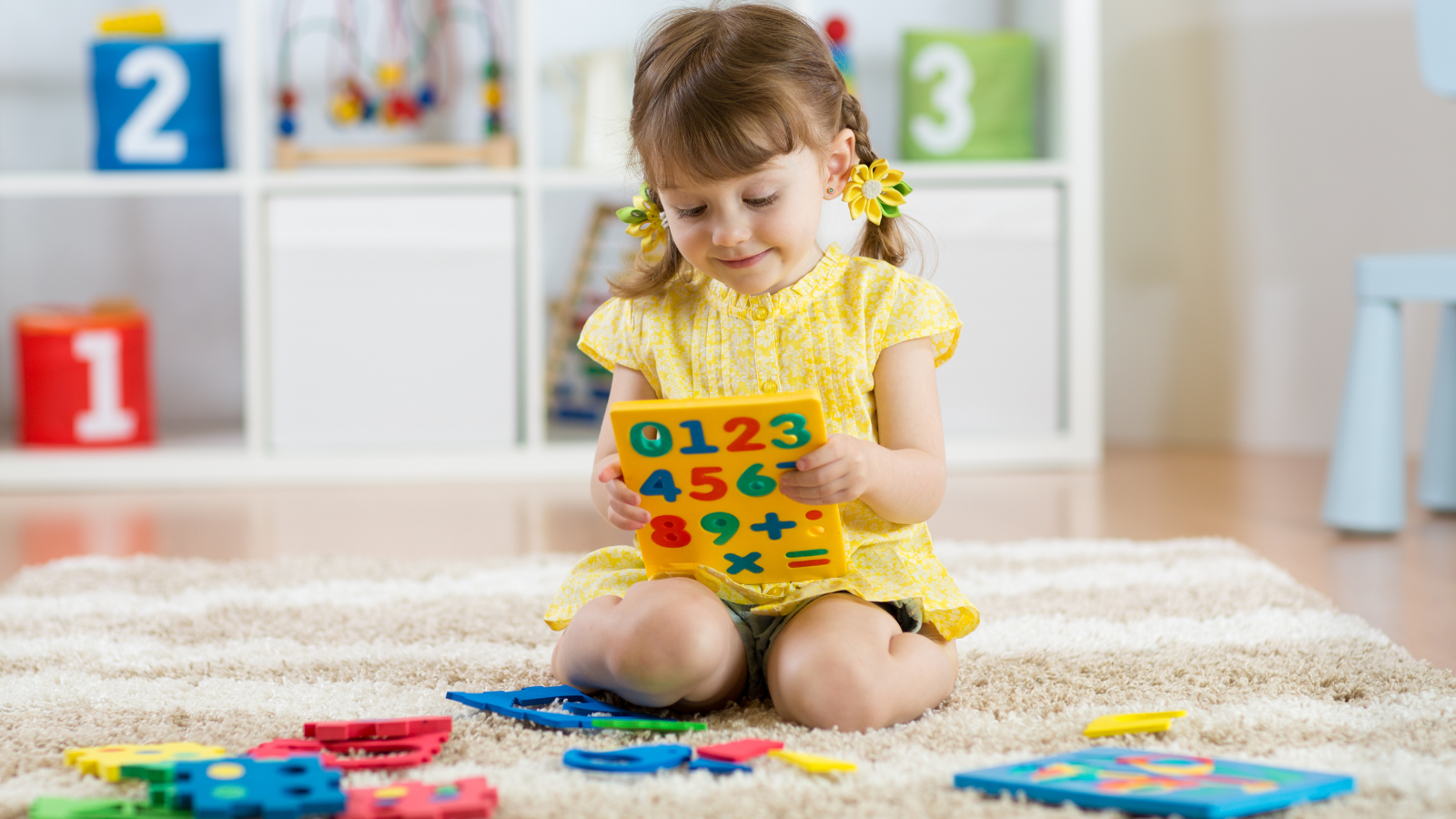
Number & Counting Activities for Preschoolers
Easy-to-do activities that bring numbers to life through play, movement, and exploration.
30 Fun and Engaging Number Sense Activities for Pre-K and Early Elementary
A collection of hands-on games and creative activities that make learning numbers exciting.
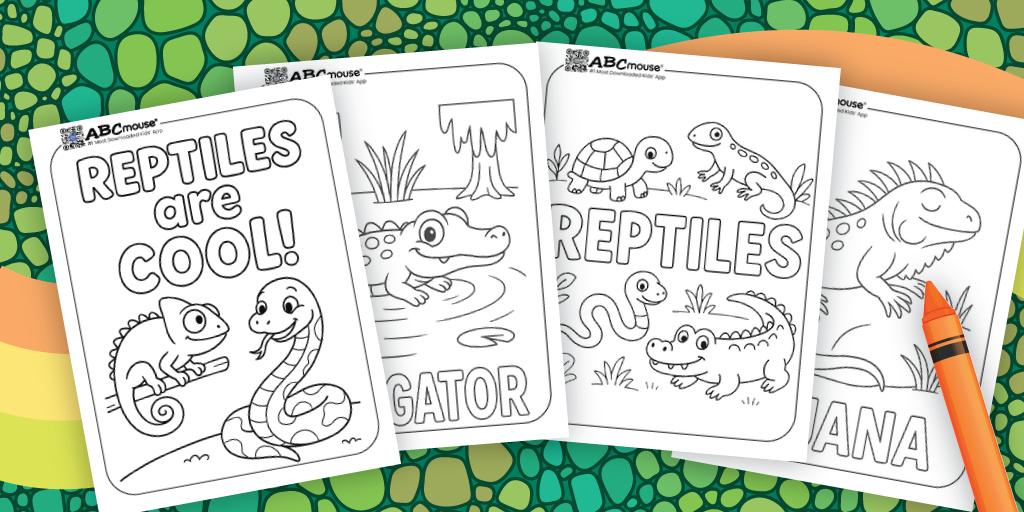
Reptile Coloring Pages for Kids (Free Printables)
Explore the word of reptiles with these free printable reptile coloring pages! Kids can use their favorite colors to bring each creature to life — from sunbathing snakes and lizards to mighty alligators and slow-moving turtles.
These coloring pages are designed for children of all ages, with simple images for younger children and more intricate and realistic pictures for older kids. Print out as many as you’d like for a creative activity at home, a reptile-themed party, or as a fun way to learn about these incredible creatures!
More Reptile Coloring Pages
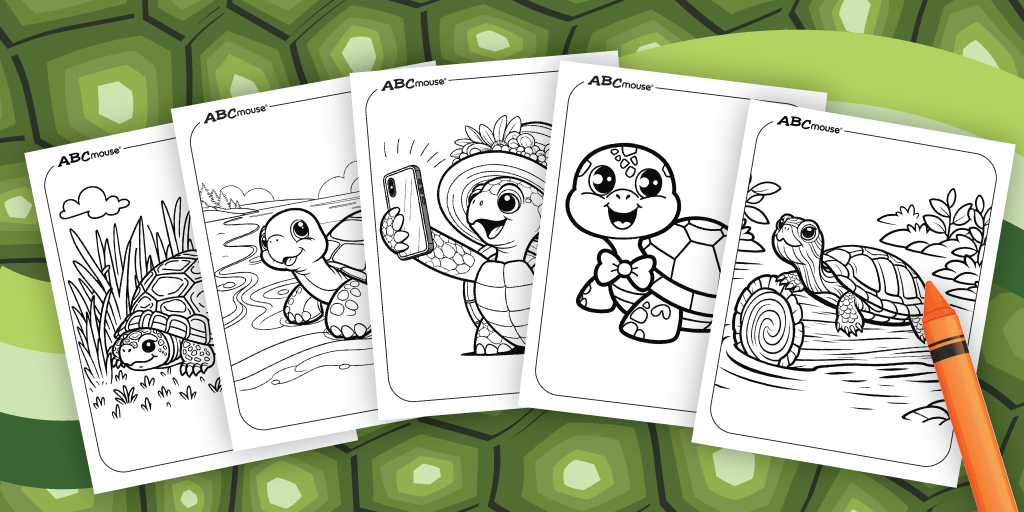
Kids will love coloring charming turtles as they swim through the ocean, rest on sunny shores, or show off their unique patterned shells. Pick from easy or intricate designs to suit every young artist’s style and creativity!
From tiny hatchlings to graceful swimmers gliding through the waves, these sea turtle coloring pages showcase this beloved ocean creature in a variety of fun and creative scenes.

Keep a look out for our frog coloring pages coming soon.
Games with Reptiles
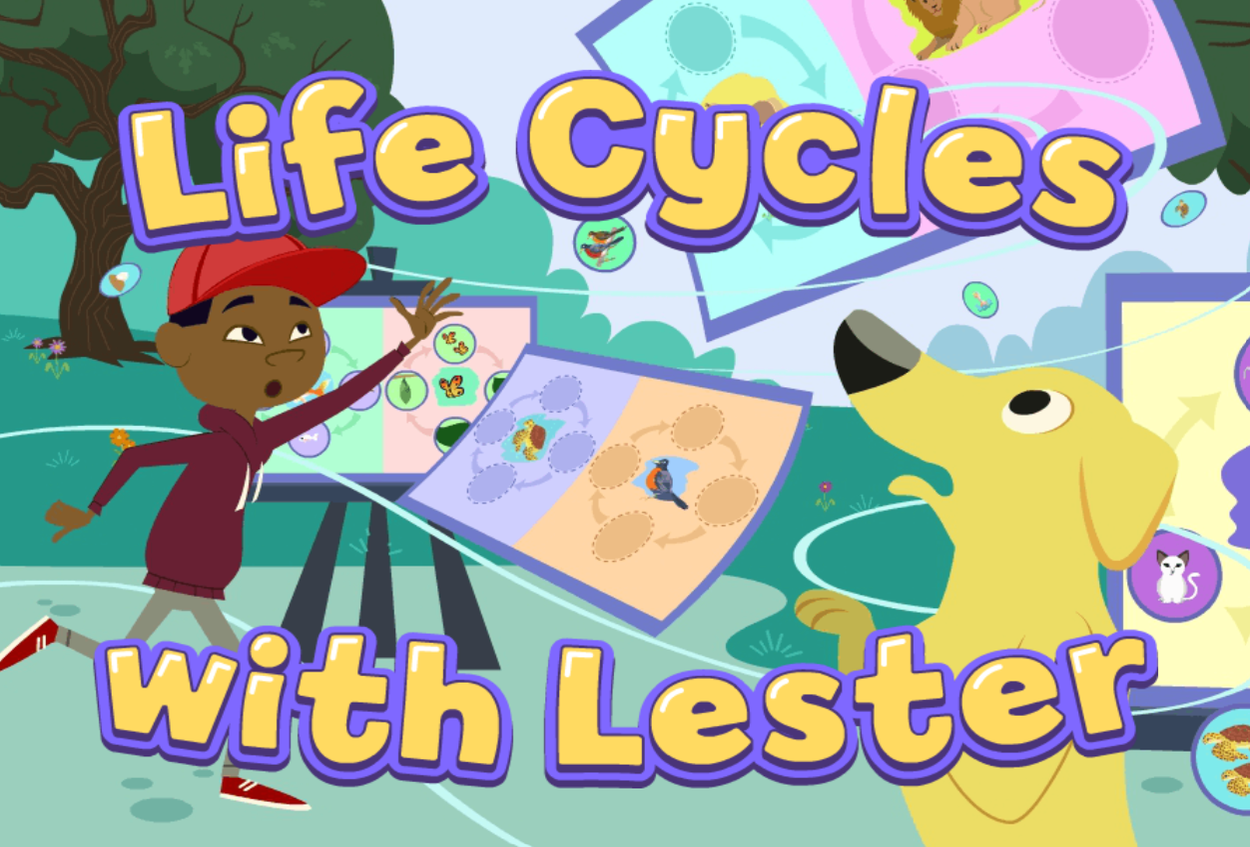
Life Cycles with Lester
Join Lester as you explore the fascinating life cycle of a turtle, from egg to adult. Through interactive gameplay, kids learn each stage of different animals development while building essential science skills.
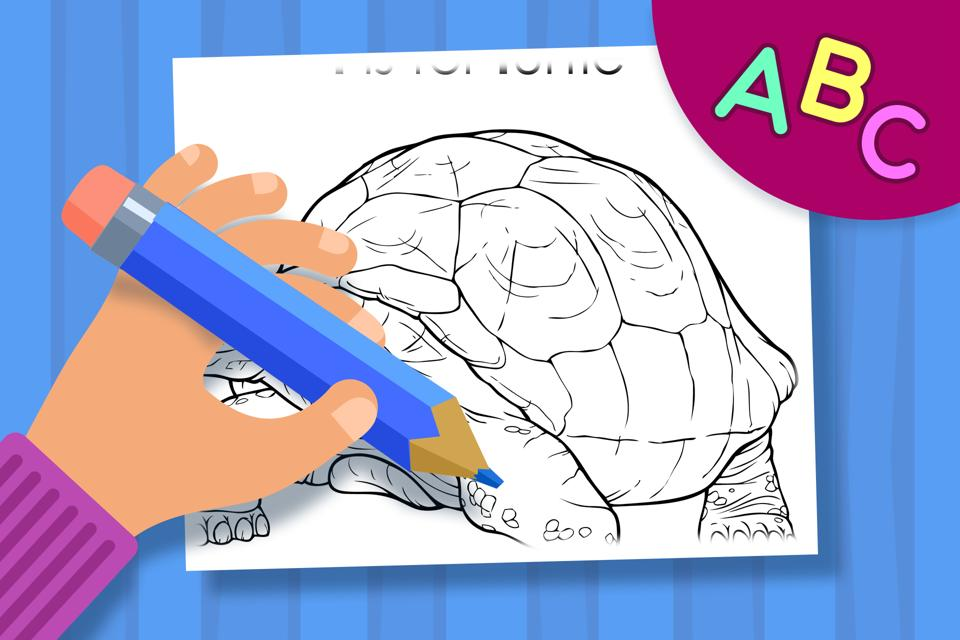
T is for Turtle – Online Coloring Page
Color a friendly turtle while learning the sound of the letter T in this fun and phonics-focused activity. Kids build early reading skills and letter recognition through animal-themed coloring that reinforces vocabulary and concentration.
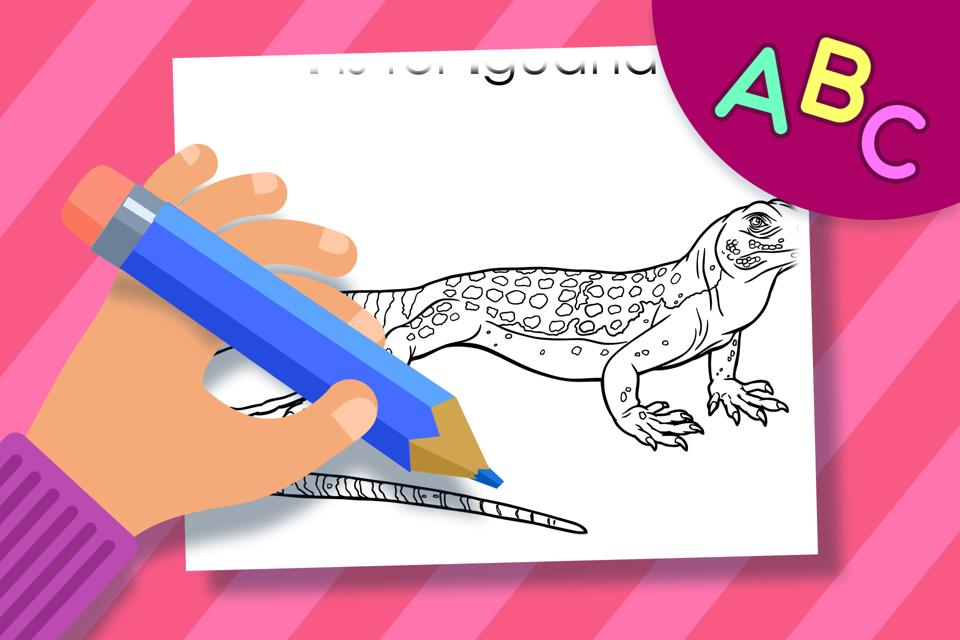
I is for Iguana – Online Coloring Page
Explore the letter I while coloring a cool iguana—one of nature’s fascinating reptiles. This activity boosts phonics skills and vocabulary as kids connect the /i/ sound with a scaly, real-world animal.
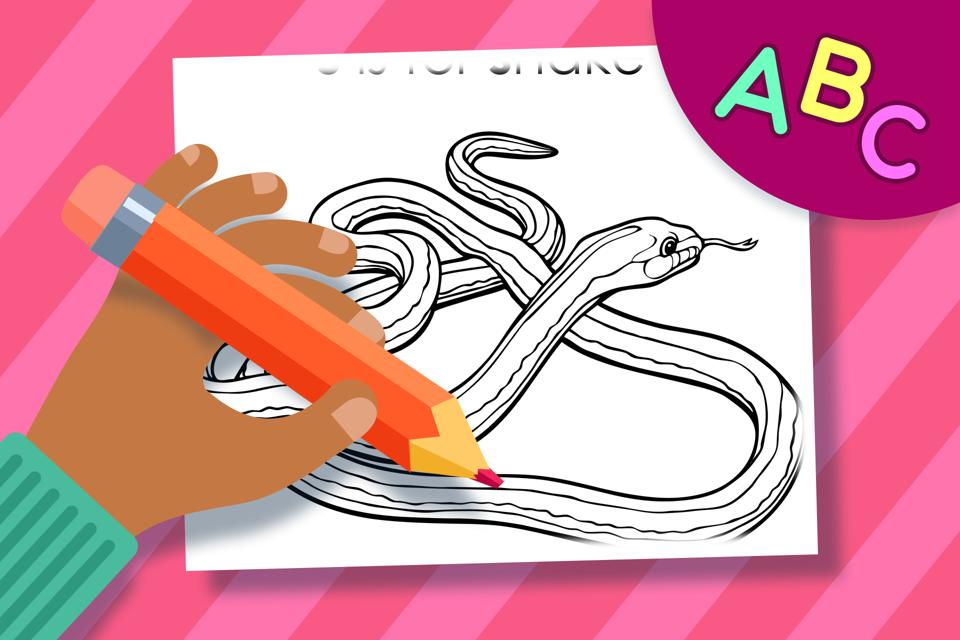
S is for Snake – Online Coloring Page
Color a slithery snake and discover the letter S while learning about this interesting reptile. This engaging activity strengthens /s/ sound recognition and builds vocabulary with a fun, scaly twist.



Beyond Screen Time: ABCmouse Doubles Early Learning Gains in Math and Reading
Research study shows that ABCmouse improves children’s literacy and math skills.
Key Findings: ABCmouse boosts reading and math skills
- Pre-kindergarten children who used ABCmouse for about 3.5 months demonstrated 2.5 times greater growth in their phonological processing skills in comparison to their peers who did not use the program.
- Children who used ABCmouse also demonstrated 1.6 to 2 times greater growth in their quantitative reasoning
and applied math problem solving skills relative to their peers who did not use the program. - 9 out of every 10 parents indicated that ABCmouse had a positive impact on their children, and all parents indicated that they would recommend the program to another friend or a parent.
- In interviews, parents reported that ABCmouse’s combination of engaging interactive content and comprehensive coverage of early learning topics led to observable improvements in children’s foundational skills, especially in literacy, communication, and school readiness.
ABCmouse Research Study Overview
In an era where digital technology permeates every aspect of modern life, early childhood educators and caregivers face a dilemma: how to balance the potential benefits of educational technology with concerns about screen time exposure among young children. While concerns about excessive screen time are well-documented1, emerging research suggests that the quality and the context of digital engagement may be more critical than quantity alone. The American Academy of Pediatrics recommends one hour per day of high-quality programming for preschool-aged children2, and a systematic review of studies of digital intervention for young children found that interactive, educational digital content, when appropriately designed and implemented, can support early literacy and numeracy skills development.3
However, there remains a significant gap in our understanding of how specific digital learning platforms affect developmental outcomes in very young children, particularly those aged 3–5 years. This study examines ABCmouse’s effectiveness as an educational tool for preschool-aged children, used in the home between February to July 2023, during a period of normalized post-pandemic educational practices.
The ABCmouse Program
ABCmouse Early Learning Academy is a comprehensive digital early learning resource for children in preschool, prekindergarten, kindergarten, 1st, and 2nd grades. Informed by research on how young children learn and what motivates them to learn, ABCmouse offers more than 10,000 Learning Activities and 850 lessons encompassing all major academic subject areas, including literacy, math, science, social studies, health, art, and music.
ABCmouse Learning Activities are regularly updated to encourage children to explore new content based on studies demonstrating connections between curiosity, exploration, and learning. Additionally, given the research showing relationships between learner choice and learning, ABCmouse offers games, books, puzzles, songs, and videos that children can choose independently based on their interests, as well as lessons on the Step-by-Step Learning Path, a structured curriculum that provides predesignated activities at the child’s level.
In sum, ABCmouse focuses on making learning fun, fostering children’s curiosity, and promoting their confidence as learners, all of which can contribute to children’s cognitive and socioemotional development. It can be used on smartphones and tablets as an app, as well as on computers through a web browser.
ABCmouse Research Study Participants
In January 2023, Age of Learning researchers recruited a total of 253 children (3-, 4-, and 5-year-olds) through eighteen community organizations, childcare centers, and schools across three cities in California and Texas. Recruitment flyers (English and Spanish) were distributed through principals, community organization leaders, and educators, as well as by a bilingual member of the research team at pick-up and drop-off times at childcare centers. Electronic copies of the flyers, as well as QR codes / links to an online consent form were also distributed, inviting parents to have their child participate in the study. The primary school districts in which the cities are located served student populations comprised of 44–68 percent Hispanic/Latino students, who lived in communities where the median household income ranged from $56,587 to $72,772, and where 86 to 90 percent of the households had broadband internet access.
ABCmouse Research Study Design and Procedures
A total of 25 assessors were recruited across the three sites and trained to administer the Woodcock-Johnson IV (WJIV)4 to participants. The WJIV is a battery of standardized assessments used to evaluate a wide range of cognitive abilities, and we selected 7 assessments targeting foundational literacy and numeracy skills to measure participants’ achievement and cognitive abilities at the beginning and at the end of the 6-month study period. The skills assessed were: letter and word identification (Letter-Word Identification); decoding (Word Attack); phonological processing (Word Access, Word Fluency, Phoneme Substitution); number sense and operational skills, including problem solving and mathematical reasoning (Applied Problems); and pattern and quantitative reasoning (Number Series).
All assessors had at least a bachelor’s degree in education, psychology, or a related field, and all attended two training sessions designed to help them understand the assessment, as well as common issues that may occur while administering the assessments to young children. After each test administration session in the field, the assessors met with the research team to debrief and share best practices. The pretest (Form A) was administered between early February and early March 2023, and the posttest (Form C) was administered between early July and late September.
The study employed a randomized controlled trial design. After pre-assessments were completed at each site, participants of that site were randomly assigned to either use ABCmouse or to continue with their usual afterschool activities, with the randomization process designed to ensure balance between groups based on gender, age, and baseline performance (see TABLE 1 for distribution of children by age across control and treatment groups).

Parents/caregivers in the treatment group were asked to have their child use ABCmouse for at least 15 minutes a day, 4 times a week (or at least 1 hour per week) at home between February and July 2023. They were asked to have their child prioritize completing the activities in a curated playlist of 10 literacy and numeracy activities that were created each week and displayed prominently in a section of the dashboard called “My Lessons.” If they finished everything in the playlist for the week, they were encouraged to go to “My Learning Path” or explore other parts of ABCmouse until the following week, when a new playlist of literacy and numeracy activities became available under “My Lessons.”
Usage was monitored weekly, with email reminders and encouragements to parents / caregivers of participants who were lagging far below the 60-minutes-per-week threshold. Children without access to a tablet and/or internet were provided with the equipment to enable them to participate.
Among the 253 children recruited for the study (121 control, 132 treatment), 100 control children and 110 treatment children had both pre- and post-assessment scores. Six children (2 control, 4 treatment) who required specialized educational support were excluded from analyses, as well as 5 control children who played ABCmouse, resulting in a sample of 93 control and 106 treatment children. Of the 106 students in the treatment group, 96 students were active in the program, averaging 83.81 minutes per active week (SD = 58.56) over 11.14 active weeks (SD = 5.28). They spent on average, 18.1 total hours (SD = 18.94) using ABCmouse and completed an average of 24.79 unique learning activities (SD = 13.5).
Additionally, given the need for adequate, consistent usage of any intervention program in learning, 41 treatment children who did not meet the minimum requirement of using the program an average of 2 days per week were also excluded from analyses. The final analytic sample included 93 control and 55 treatment children. These 55 treatment children who used the program with fidelity averaged 108.94 minutes per week (SD = 65.02) over 13.15 active weeks (SD = 5.25). They spent, on average, 25.77 total hours (SD = 21.61) using the program and completed an average of 29.91 learning activities (SD = 14.3).
ABCmouse Research Study Results
Finding 1: Pre-kindergarten children who used ABCmouse for about 3.5 months demonstrated 2.5 times greater growth in their phonological process skills in comparison to their peers who did not use the program.
Students’ raw scores on each assessment at pre- and post were recorded, and the differences between the postand pre- scores for each assessment were examined. FIGURE 1 below compares the change scores between pre and post for children who used ABCmouse (Treatment, or T) and their peers who did not use the program (Control, or C).
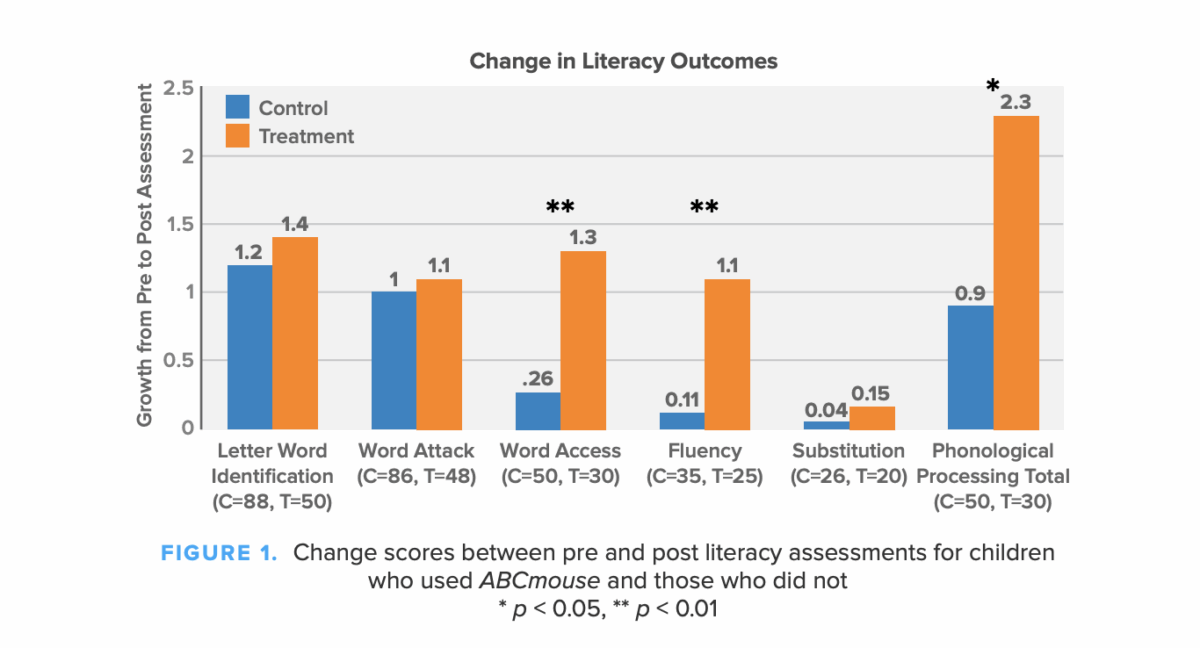
The graph illustrates that children who used ABCmouse showed greater gains across all measured literacy skills compared to the control group, with statistically significant differences in Word Access, Fluency, and Phonological Processing. Focusing specifically on phonological processing skills, ABCmouse users achieved a 2.3-point growth compared to 0.9 points in the control group, a 2.5-fold increase that underscores the program’s effectiveness in developing this set of crucial early literacy skills.
Finding 2: Children who used ABCmouse also demonstrated 1.6 to 2 times greater growth in their applied math problem solving skills and quantitative reasoning relative to their peers who did not use the program.
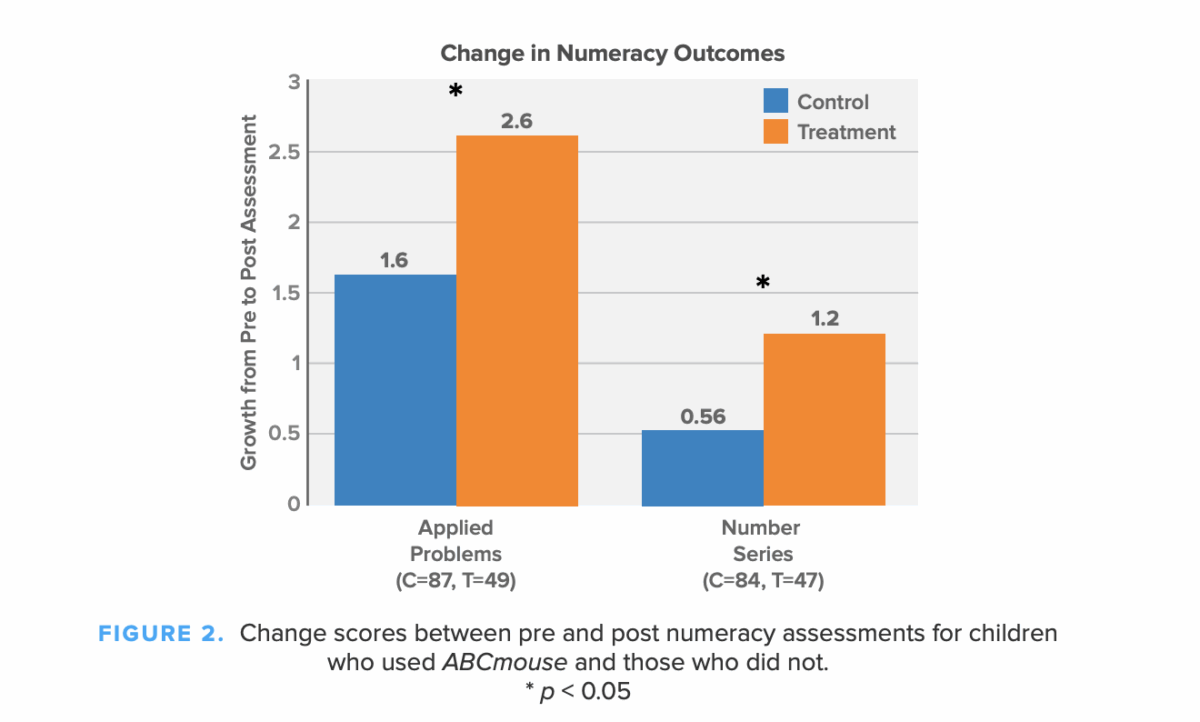
The results indicate that children using ABCmouse significantly enhanced their numeracy skills. In other words, ABCmouse users achieved about 1.6 times greater growth in their ability to analyze and solve practical math problems using mathematical reasoning. They also achieved about 2.1 times greater growth in their ability to solve math problems by finding patterns, working with numbers and quantities, and using logical thinking to figure out new problems they have not seen before.
Finding 3: Nine out of every 10 parents indicated that ABCmouse had a positive impact on their children, and all parents indicated that they would recommend the program to another friend or a parent.
A total of 71 parents/caregivers completed surveys at the end of the study. Nine out of every 10 parents indicated that ABCmouse had a positive impact on their children’s knowledge and skills in literacy, music, and art. FIGURE 3 shows the percent of parents who reported “very positive,” “positive,” or “neither positive nor negative” impact of ABCmouse on various subject areas for their children.
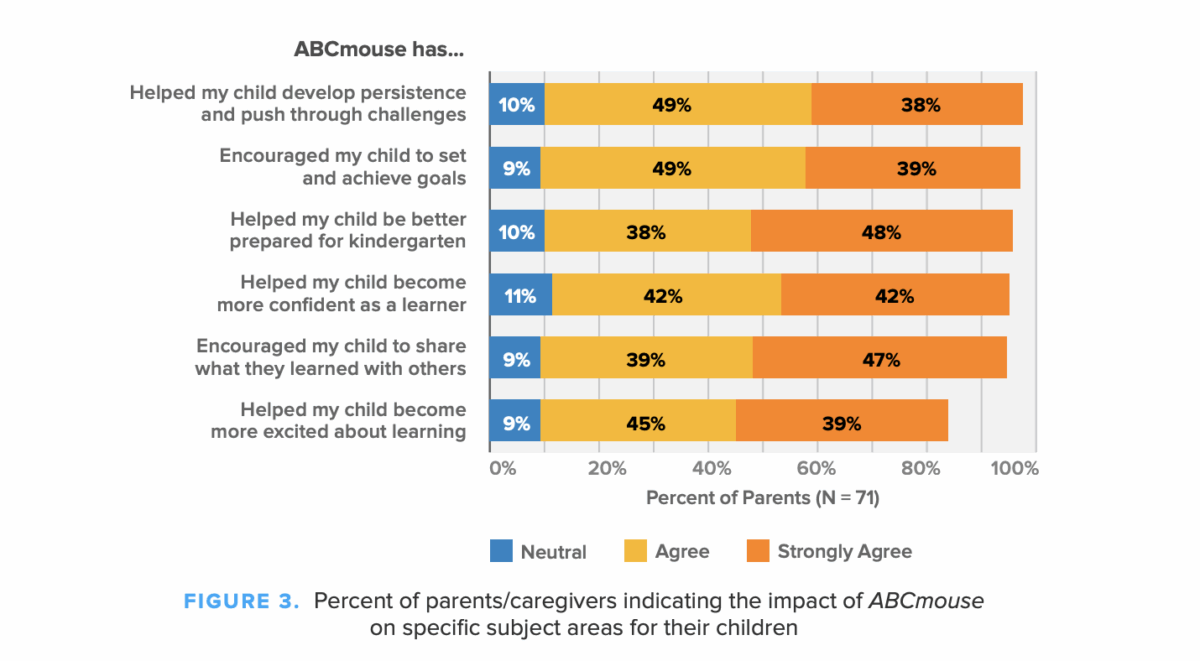
Additionally, at least 8 out of 10 parents / caregivers indicated that ABCmouse helped their child develop confidence and persistence as learners, while helping them to be better prepared for kindergarten. FIGURE 4 shows parents’ reports of how ABCmouse has affected their children’s learning attitudes and readiness, beyond academic skills.
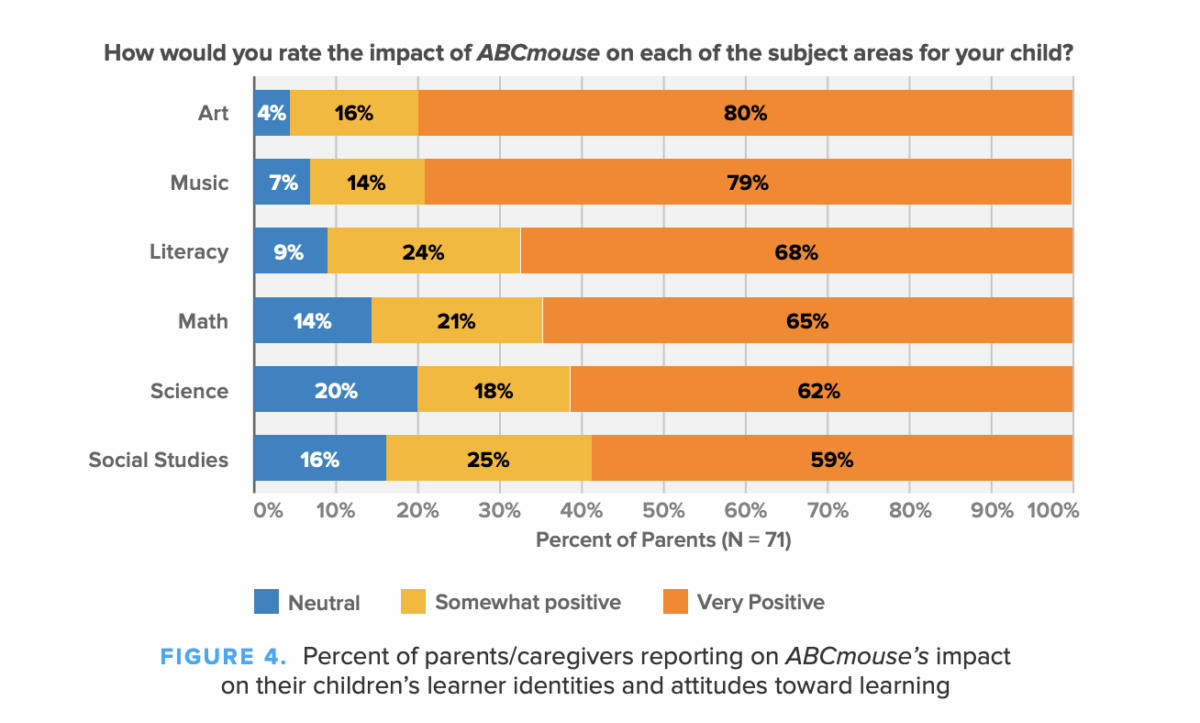
The results demonstrate overwhelmingly positive parental perceptions of ABCmouse’s educational impact, especially in arts and humanities subjects. The fact that zero parents reported negative impacts across any subject areas, and that the lowest rating was neutral, suggests that ABCmouse consistently delivers valuable educational content across all subject areas from parents’ perspective.
What makes these findings especially meaningful is that they address critical non-academic skills (e.g., learning dispositions, learner identities, or academic enablers) which are fundamental to long-term academic success. The high percentage of parents/caregivers reporting improved confidence, persistence, and goal-setting behaviors suggests that ABCmouse helps develop not only knowledge, but also essential learning behaviors and attitudes that will serve children throughout their academic careers.
Finally, all parents/caregivers indicated that they are likely to recommend ABCmouse to a friend or
another parent.
Finding 4: In interviews, parents reported that ABCmouse’s combination of engaging interactive content and comprehensive coverage of early learning topics led to observable improvements in children’s foundational skills, especially in literacy, communication, and school readiness.
Seventeen parents/caregivers volunteered to participate in end-of-study interviews, which provided insight into how both parents and children engaged with ABCmouse.
While parents/caregivers spoke extensively about their children’s enjoyment and engagement with the program, some of the most compelling comments reflected ABCmouse’s impact on learning and development.
One parent/caregiver spoke about her son’s ability to transfer knowledge from the app to real life, demonstrating multiple areas of development (speech, reading, shape recognition):
“He’s identifying different shapes around the house…. So just seeing how he can see it on the tablet and then how he would connect it to real life. It has also helped him a lot with communication …he’s talking to the tablet and talking back to the programs.… he is talking a lot better… and reading too. And it kind of blew my mind because he is pretty much reading now. We’ll go out somewhere and he’s reading off the menu pizza, fries…. So one day I started typing words in the Word document and he was reading them off, colors and numbers and days of the week” (Parent of 3-year-old boy, CA)
FIGURE 5 shows screenshots of several games available in ABCmouse where students practice foundational reading skills.
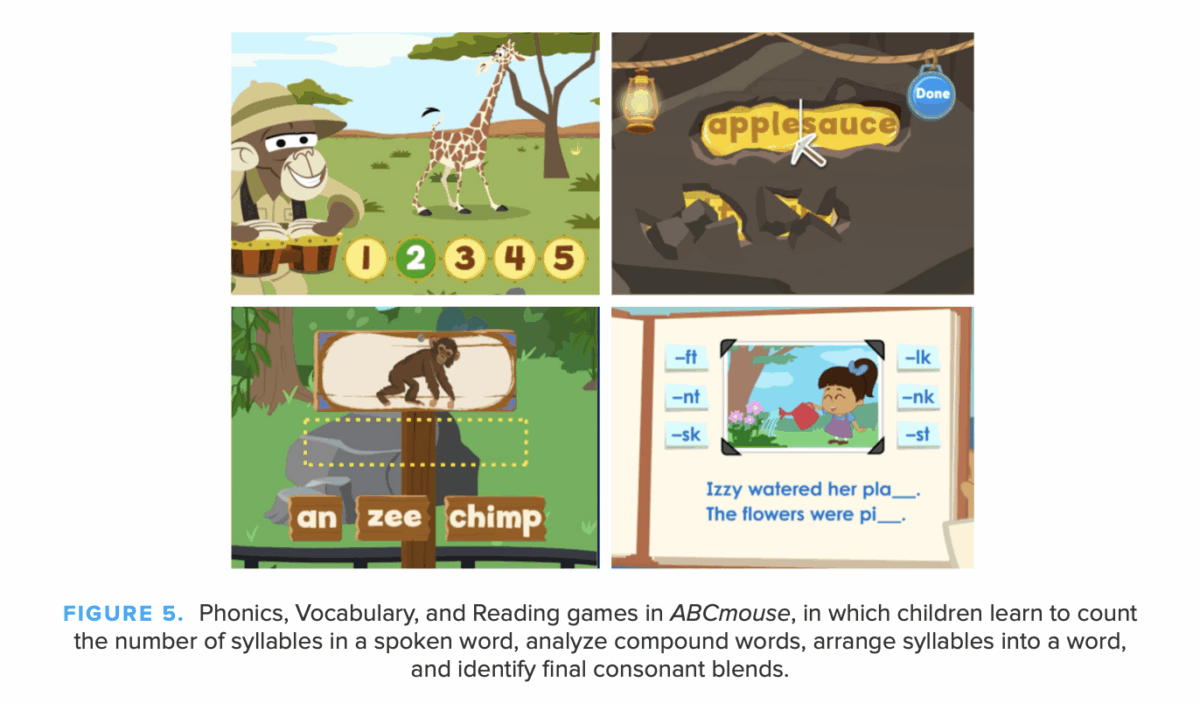
Another parent/caregiver highlighted the power of ABCmouse in translating learning into real-world physical skills and motivation:
“ABCmouse has made it so interesting for her to learn the numbers, to learn her letters. And even right now, I think she’s on the steps where it’s helping her trace the numbers and trace the letters, and she’s picked up more of the pencils and picked up her crayons to want to do more of the letters and the numbers.” (Parent of 4-year-old girl, CA)
This kind of unprompted extension of learning from digital to physical activities is what educators and parents/ caregivers hope to see from educational technology. FIGURE 6 below shows samples of screenshots of content in ABCmouse that encourage active participation and learning through various modalities.
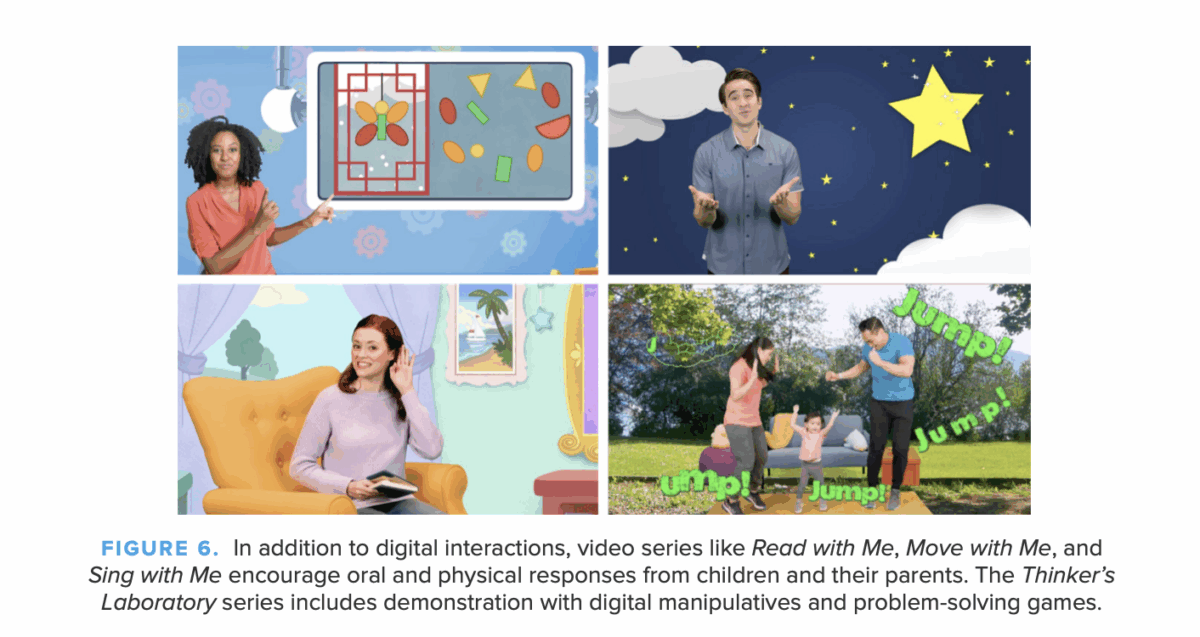
Parents/caregivers also commented on how ABCmouse naturally supports bilingual learning and language development, illustrating its value for diverse populations and its ability to bridge home and school language environments. “She’s bilingual and she would practice more for English, but she would translate it. She’s like, mom, this is in English and in Spanish. And I’m like, okay, you’re learning…. she likes learning both languages” (Parent of 5-year-old girl, TX).
Another parent indicated, “I like the whole program, how it just teaches them different things, patterns, colors, numbers. That’s something, as a parent, you want to teach’em all those things” (Parent of 3- and 4-year-old girls, CA), highlighting the comprehensive skill development that is fostered through using ABCmouse. Rather than focusing narrowly on one area (e.g., letters or numbers), the program takes a holistic approach to early learning, which is more effective for young children’s development. FIGURE 7 shows screenshots of sample ABCmouse games in which concepts are taught in interconnected way rather than in isolation.
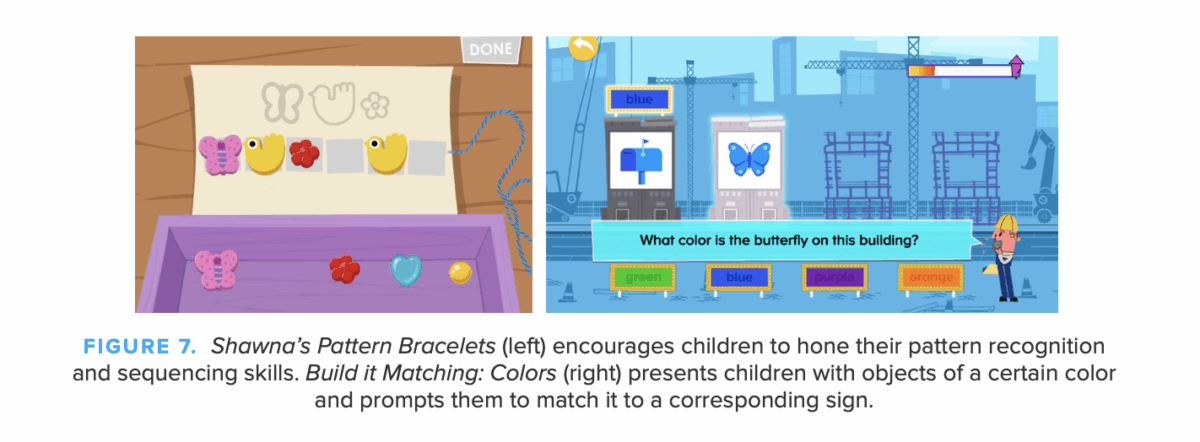
A perhaps unexpected, but valuable benefit of using ABCmouse was that it created opportunities for family learning and sibling interaction. Parents/caregivers reported that their children’s enthusiasm for learning through ABCmouse naturally extended to sharing experiences with siblings and other family members, creating an enriched learning environment at home.
One parent/caregiver described how her child’s learning became a shared experience:
“Her favorite experience is her talking to her sister about it. She’s like, I learned this, I learned…Look. And her sister’s like, oh, can I try it?” (Parent of a 4-year-old girl, CA)
Such observations indicate how digital learning can enhance rather than isolate social interactions and how it can transform individual screen time into shared family learning experiences. They also suggest that ABCmouse not only supports children’s academic growth but also helps create a culture of learning within the home, where knowledge and achievements are shared and celebrated among family members. This kind of family engagement is widely recognized as an important factor in early childhood educational success.
ABCmouse Research Study Conclusion
The results of this study demonstrate that ABCmouse can significantly enhance early learning outcomes when used consistently at home. Children who used ABCmouse showed dramatic improvements across multiple areas, from 2.5 times greater growth in phonological processing to twice the growth in mathematical reasoning compared to their peers. Beyond these academic gains, the program fostered crucial learning behaviors like persistence and confidence, while supporting bilingual development and school readiness.
These findings are particularly significant considering that quality early learning experiences are essential for kindergarten readiness and long-term academic success. While concerns about screen times are valid, this study adds to growing evidence that well-designed educational technology, when used appropriately, can be a powerful tool for both individual and family learning. As families navigate preparing young children for academic success, ABCmouse emerges as a research-validated solution that not only engages children and delivers measurable results but also creates meaningful opportunities for family interaction and collaborative learning.
References:
1. Madigan, S., Browne, D., Racine, N., Mori, C., & Tough, S. (2019). Association between screen time and children’s performance on a developmental screening test. JAMA Pediatrics, 173(3), 244–250.
2. Council on Communications and Media. (2020). Media and young minds. Pediatrics, 146(1), e20201242.
3. Griffith, S.F., Hagan, M.B., Heymann, P., Heflin, B.H., & Bagner, D.M. (2021). Apps as learning tools: A systematic review. Pediatrics, 147(1), e2020015687
4. Schrank, F. A., McGrew, K. S., & Mather, N. (2014). Woodcock-Johnson IV Tests of Cognitive Abilities. Rolling Meadows, IL: Riverside
TM & © 2025 Age of Learning, Inc. All rights reserved. The names of other companies, products, and services are the property of their respective owners
ABCmouse.com Early Learning Academy Adds 2nd Grade Curriculum, Expanding the Leading Educational Resource for 3rd-Grade Readiness
Glendale, Calif., January 10, 2017 – Today, Age of Learning, Inc., announced the launch of a comprehensive 2nd grade curriculum to expand its award-winning ABCmouse.com® Early Learning Academy for children ages 2–8. The expanded curriculum is designed to address the learning needs and interests of 2nd grade students with the goal of preparing them for the critical transition to 3rd grade. To date, more than 10 million children have completed more than 2 billion learning activities on ABCmouse at home, in classrooms, in libraries, and in other community institutions.
The 2nd grade curriculum offers two new levels in the Step-by-Step Learning Path™, providing lessons in five key academic subjects: English language arts, math, social studies, science, and health. ABCmouse now offers more than 8,500 standards-based learning activities and more than 850 lessons.
Designed by a team of learning experts, the 2nd grade curriculum helps children become independent and active readers; apply the five steps of the writing process to produce original essays; develop a solid understanding of fundamental concepts in physical, life, and earth sciences; become familiar with historical, geographic, and cultural aspects of communities, their nation, and the world; and make healthy choices based on an understanding of the systems of the human body.
ABCmouse has expanded its engaging content to address these learning objectives with additional stepped readers spanning the range of second grade reading skills, including 60 new fiction and non-fiction books, many of which offer informational text features. Children can continue to engage with characters they have come to know and love as well as interact with a new cast of inspiring characters, including a superhero quintet called the Write Team and Dr. Deb, a young future doctor who loves to explain how the body works.
“The transition from 2nd to 3rd grade is a critical time in a child’s educational journey,” said Kimberly Oliver Burnim, a National Teacher of the Year awardee and Curriculum Board member at Age of Learning. “The release of these 2nd grade learning activities on ABCmouse will help children build the strong foundation needed to succeed in 3rd grade and beyond.”
Age of Learning regularly partners with independent early education experts to evaluate the effectiveness of ABCmouse. Researchers from leading universities have completed several large-scale research studies with more than 10,000 children globally, including multiple randomized control trials. This growing body of research shows that ABCmouse accelerates learning and helps children make significant gains in early literacy and math skills.
In addition to expanding its curriculum content, Age of Learning is currently developing new products and services to serve schools and districts in the U.S. and globally, and reaching out through its Education Access Initiatives to provide ABCmouse at no cost to more teachers and community institutions such as libraries, public housing facilities, and afterschool programs.
Families can visit www.ABCmouse.com, the Apple iTunes Store, Google Play Store, or Amazon Appstore now to subscribe to ABCmouse ($7.95/month or $79.99/year for up to three children) and have unlimited access to all 8,500+ activities on desktop and laptop computers, iPad and Android tablets, and smartphones. Schools can implement ABCmouse across multiple classrooms or an entire district with an offering that includes professional development for teachers and full home access for students.
School decision makers can visit www.ABCmouseforSchools.com or contact GlobalSchools@AofL.com for more information about implementing ABCmouse across multiple classrooms.
About Age of Learning, Inc.
Age of Learning (www.AgeofLearning.com) is a leading education technology innovator and producer of the multi-award-winning ABCmouse.com Early Learning Academy (www.ABCmouse.com), serving millions of children. Based in Los Angeles, the company blends education best practices, innovative technology, and insightful creativity to bring learning to life for children across the U.S. and around the world. Age of Learning’s content provides young learners, their families, and teachers with highly engaging and effective learning tools and a comprehensive curriculum that build a strong foundation for academic success. Recognized as the No. 1 digital learning resource for children ages 2–8, ABCmouse is regularly ranked as a leading children’s learning iPad, iPhone, and Android app in both Kids and Education categories; to date, children have completed more than 2 billion ABCmouse learning activities. The company’s Education Access Initiatives reach millions of children by offering the full award-winning ABCmouse curriculum at no cost to teachers and community institutions such as libraries, Head Start programs, and community centers—including public housing authorities and afterschool programs. Age of Learning launched ABCmouse for Schools (www.ABCmouseforSchools.com) in 2016 to meet the needs of school districts and school groups in the U.S. and internationally.
ABCmouse Brings Master Teachers and Daily Classroom Instruction into the Home with the Launch of My ABCmouse Classroom Live!
Los Angeles, Calif., September 23, 2020 – Age of Learning, Inc., the education innovator behind ABCmouse Early Learning Academy, today announced the launch of My ABCmouse Classroom Live!, an engaging new learning experience within ABCmouse featuring a daily schedule of video lessons from master teachers streamed on demand and curriculum-based instruction and activities to help children learn independently at home.
This new service, exclusively available to ABCmouse users as a value-added feature at no additional cost, was inspired by the current unprecented times in children’s education. With parents and caregivers across the U.S. juggling the demands of work while trying to meet the educational needs of their children, My ABCmouse Classroom Live! provides a new, safe, and trustworthy learning experience for ABCmouse families.
As in a real classroom, each week focuses on what curriculum experts call a “Big Idea,” such as community, responsibility, change, communication, and cooperation. Experienced educators thoughtfully instruct students in reading, math, social studies, and science explorations tied to each week’s Big Idea as students learn, think, draw, exercise, sing, laugh, and more.
Each daily class contains more than an hour of high-quality, engaging, concentrated learning as part of an expertly designed curriculum that addresses standards-based educational objectives. After a teacher-student video segment, which can be streamed on demand at any time and allows the teacher to get the students off to a good start each day, students complete independent learning activities including interactive games, art, puzzles, and offline activities related to the week’s Big Idea.
“At a time when it’s more critical than ever to support children’s individual learning at home, My ABCmouse Classroom Live! meets kids and their parents in the moment with these valuable classes,” said Paul Candland, CEO of Age of Learning. “Experienced teachers make it feel like real in-classroom instruction, right in the home, and their expertly designed classes follow the pattern that young children are used to in school.”
Visit www.ABCmouse.com to learn more.
About ABCmouse
ABCmouse is the leading and most comprehensive digital learning resource for children ages 2–8, with more than 10,000 Learning Activities and 850 lessons. Large-scale research studies show that ABCmouse accelerates learning and helps children make significant gains in early literacy and math skills. To date, children have completed more than 7 billion ABCmouse Learning Activities.
About Age of Learning, Inc.
Age of Learning® , is a leading education technology innovator, creating engaging and effective learning resources to help children build a strong foundation for academic success. Based in Los Angeles, the company is Bringing Learning to Life® by blending educational expertise, innovative technology, and insightful creativity. Age of Learning’s flagship product in the U.S., ABCmouse.com® Early Learning Academy, is a comprehensive curriculum for preschool through second grade, available on all major digital platforms and used by tens of millions of children to date. In 2019 the company launched Adventure Academy™, the first AAA educational massively multiplayer online game (MMO), serving elementary- and middle-school-aged children with thousands of learning activities in a fun and safe virtual world. Connect with Age of Learning at www.AgeofLearning.com or on LinkedIn, Twitter, YouTube, and Facebook.

